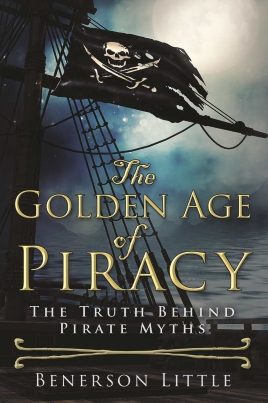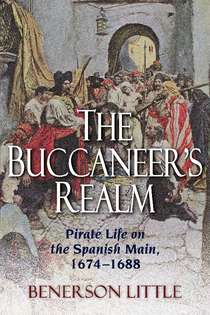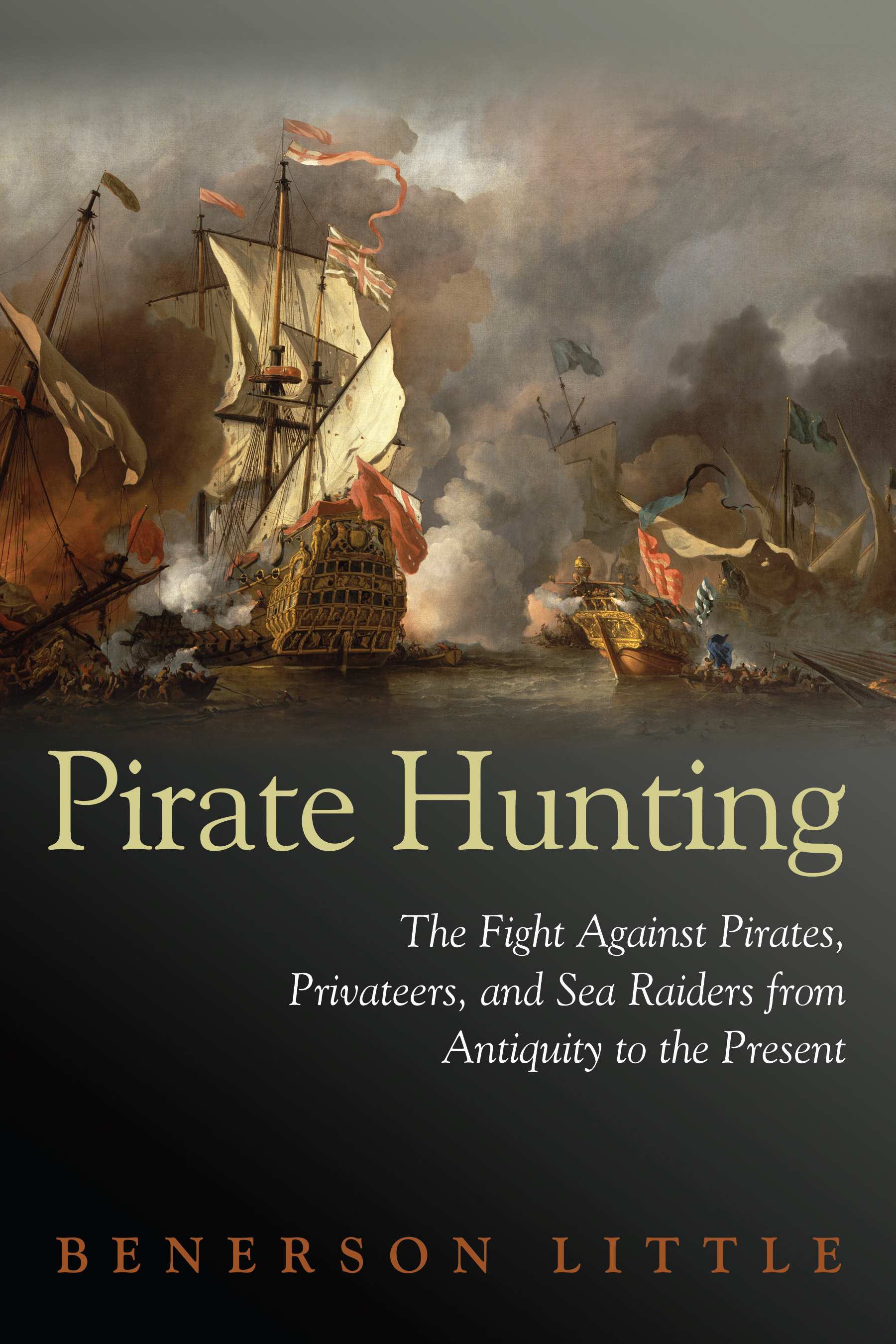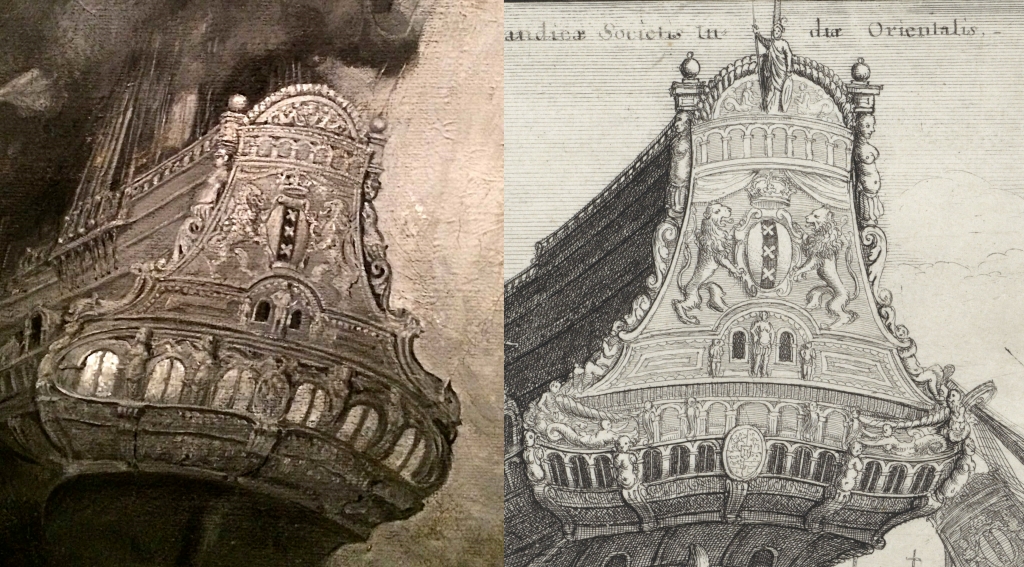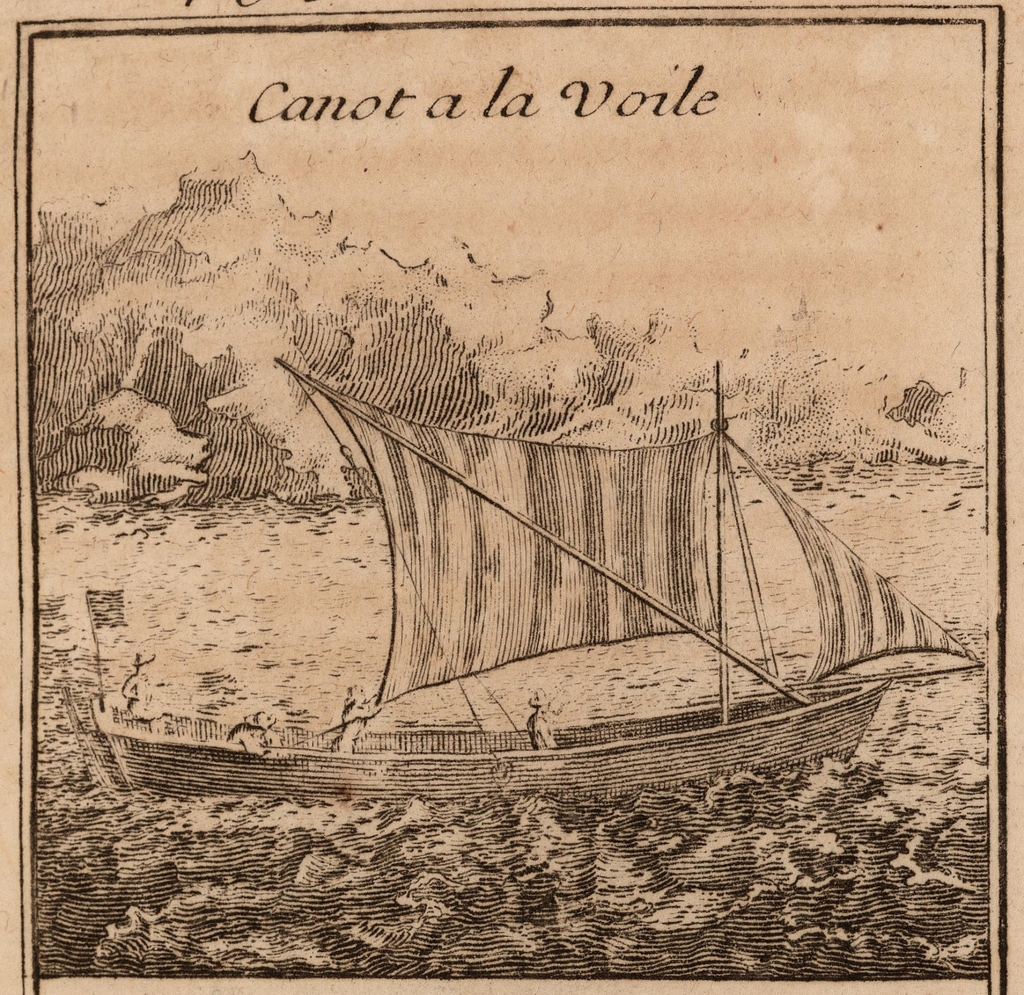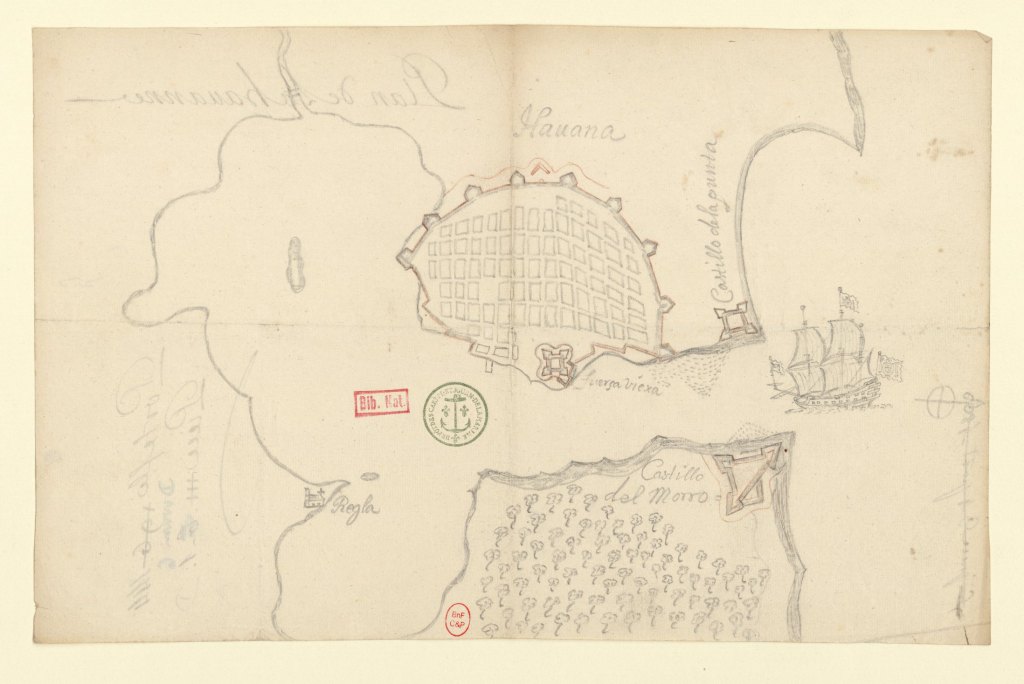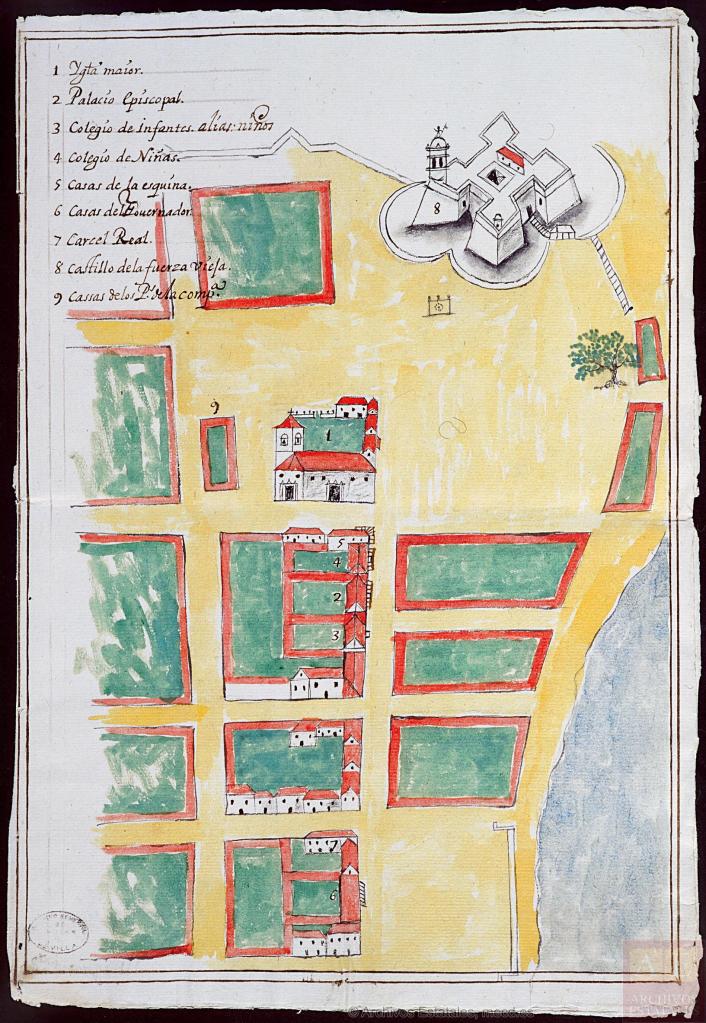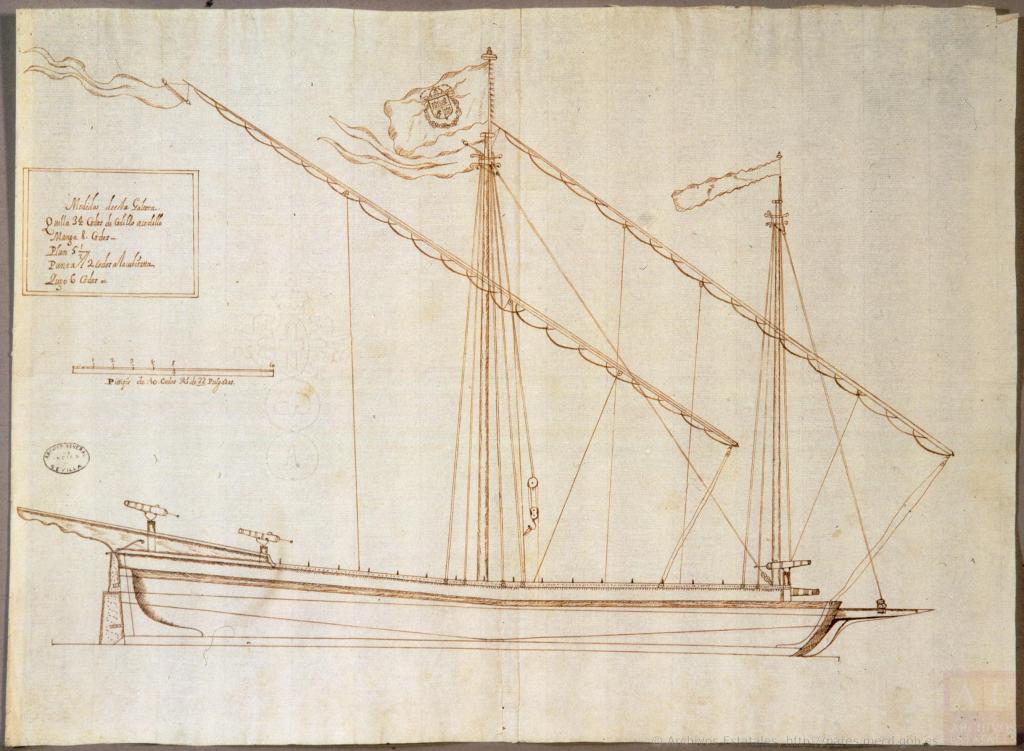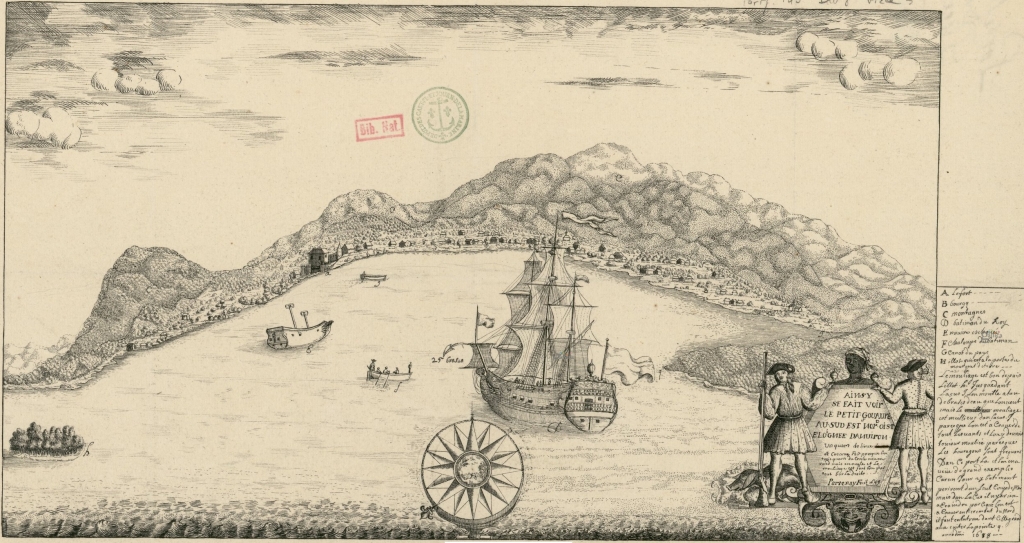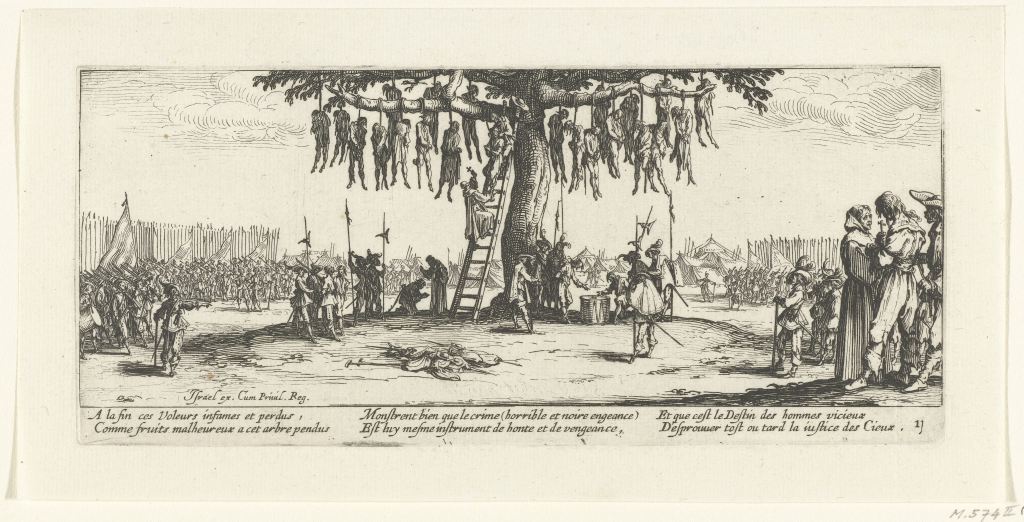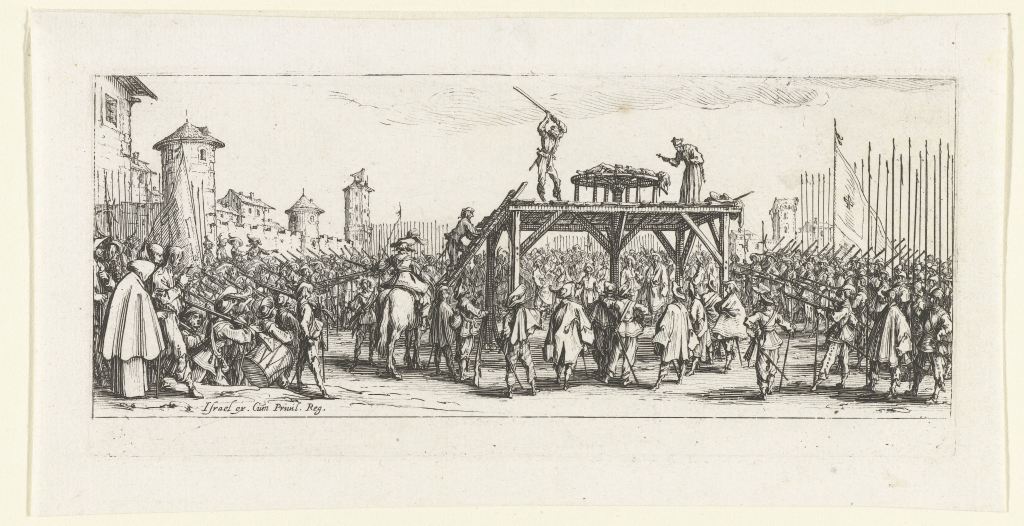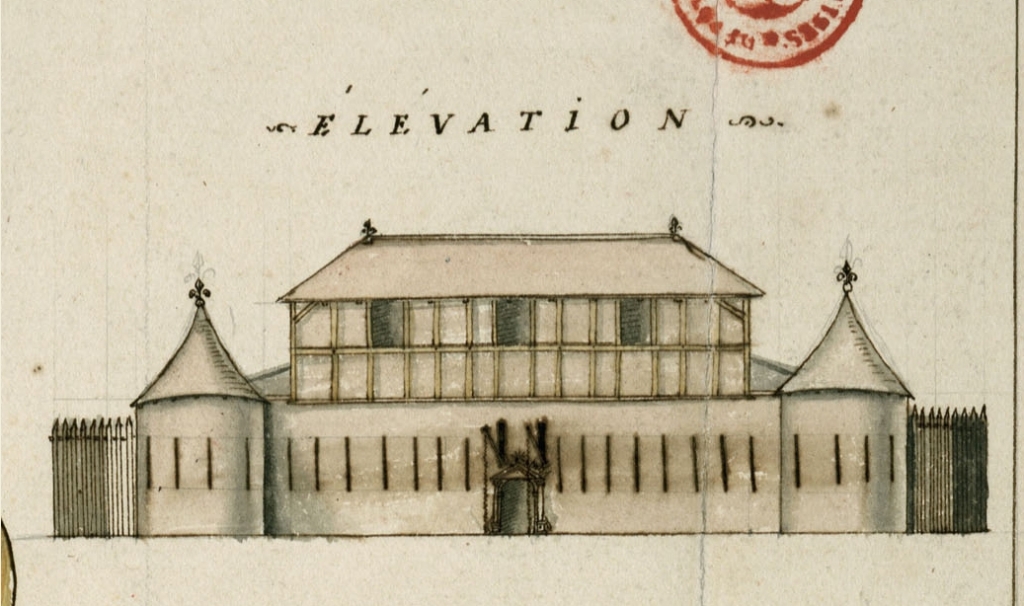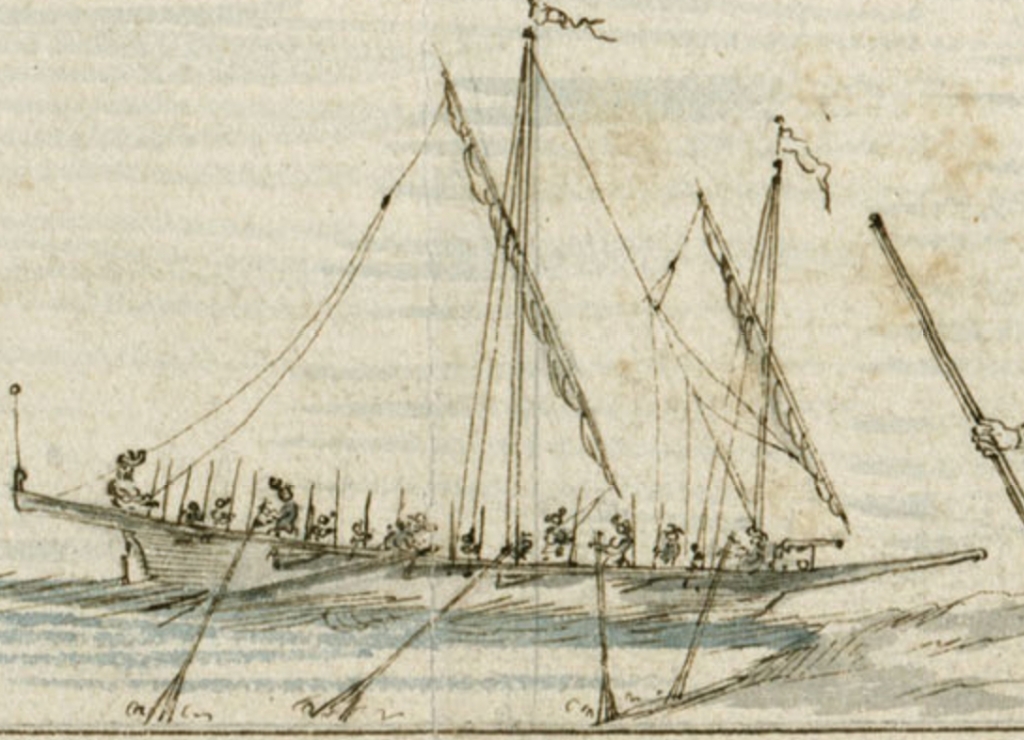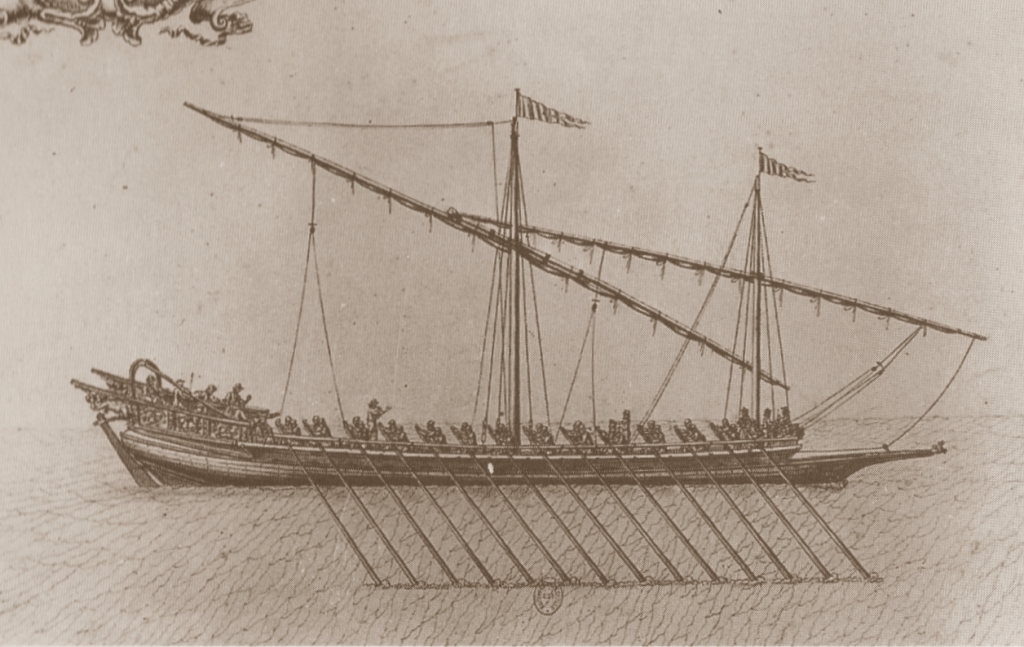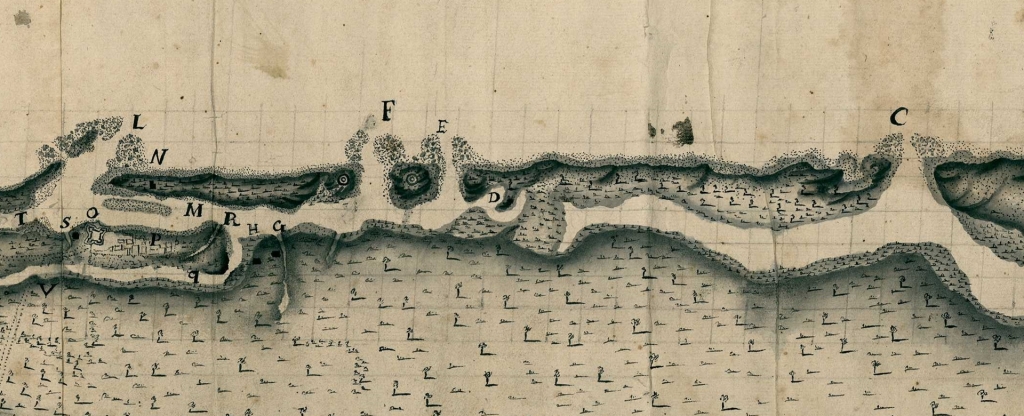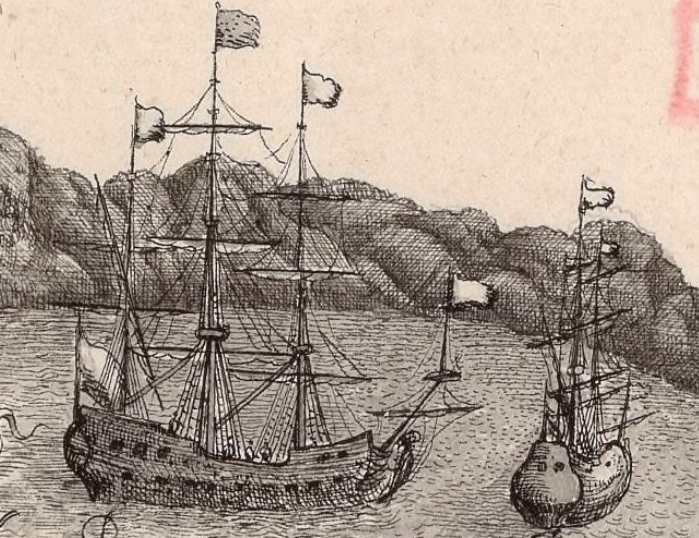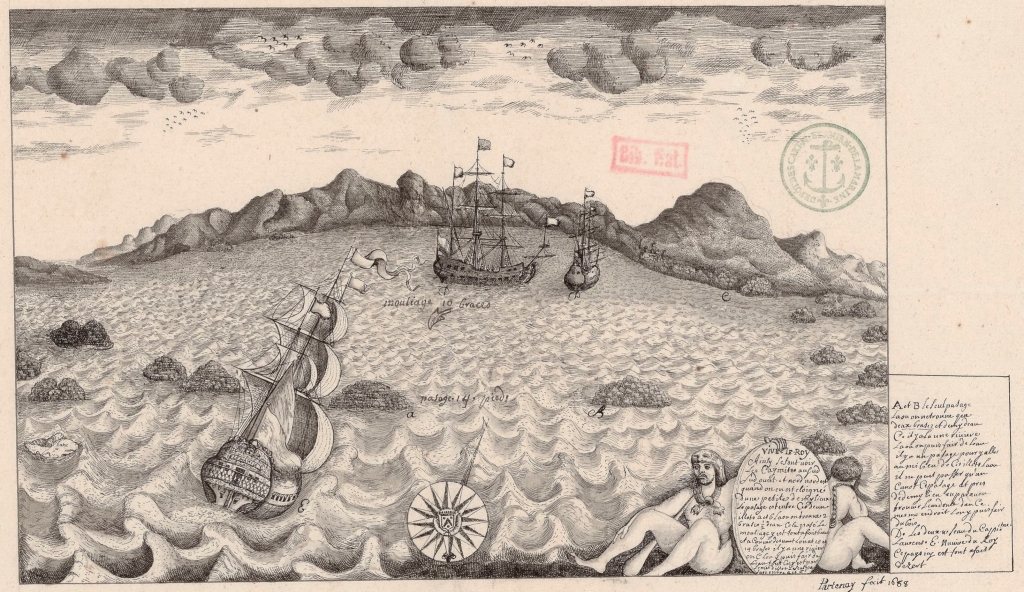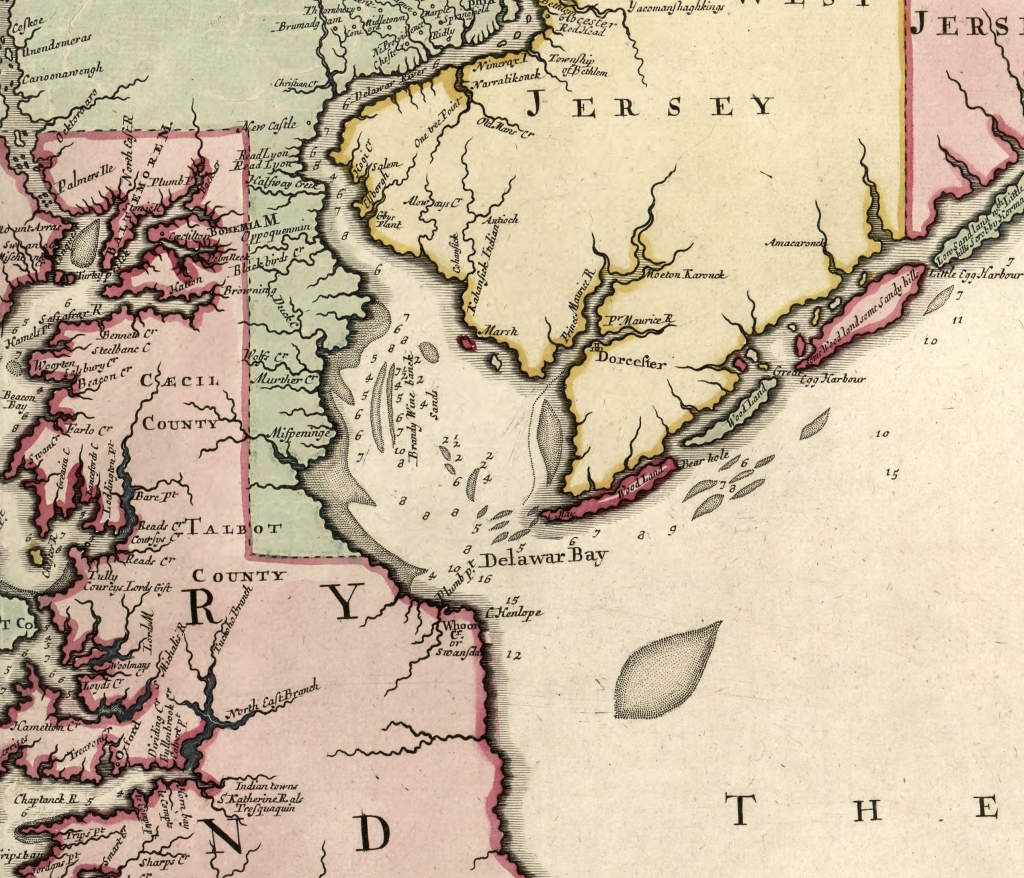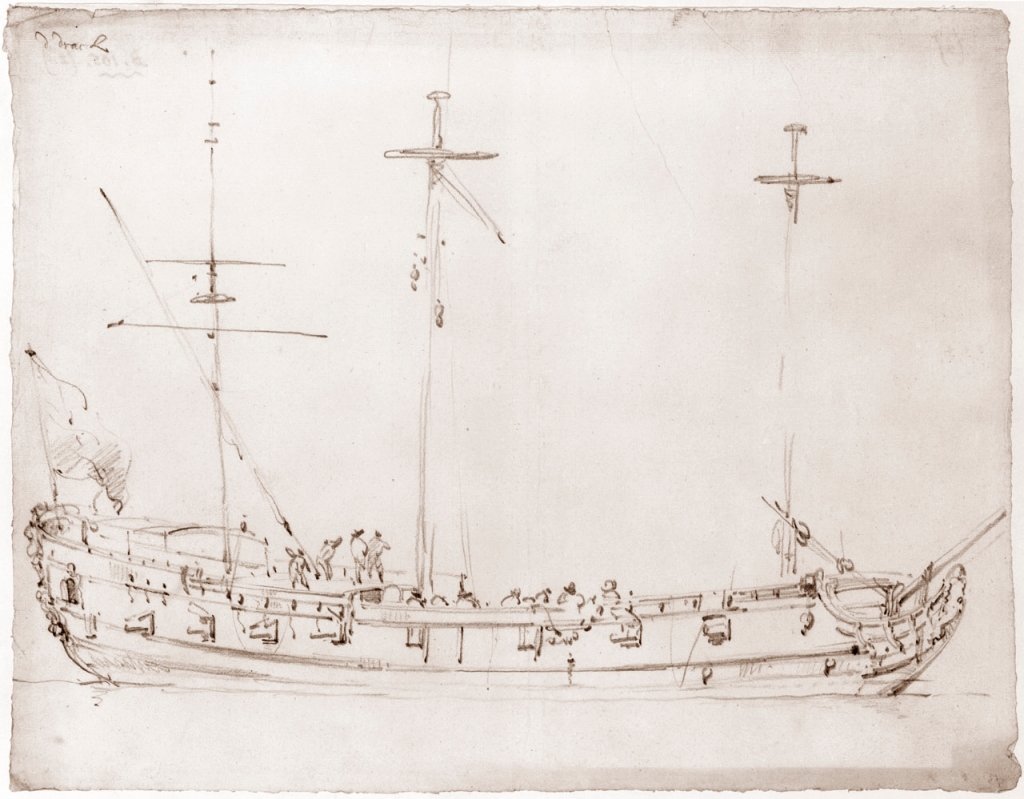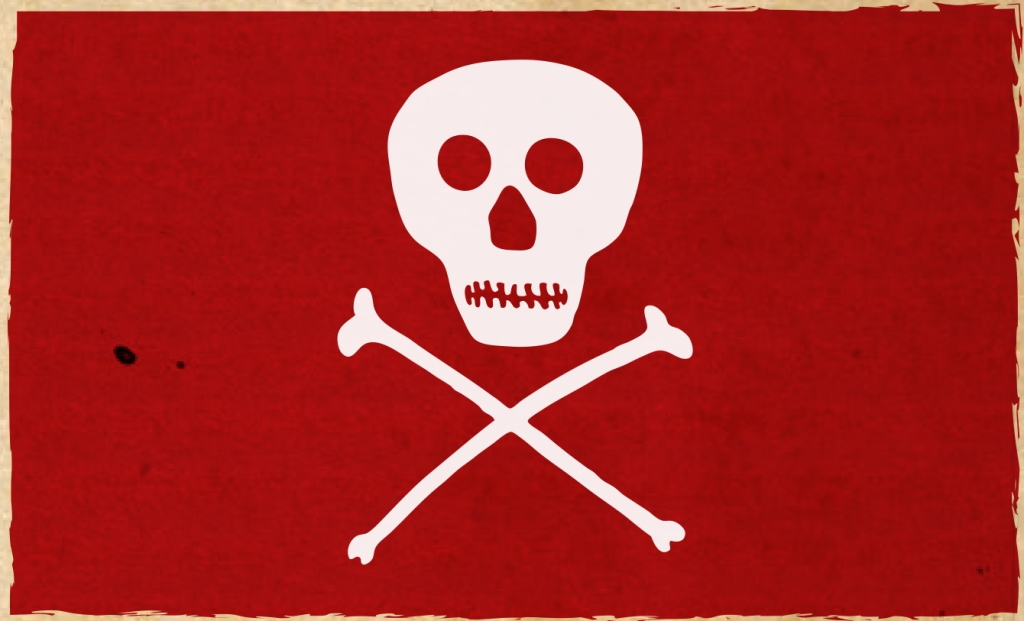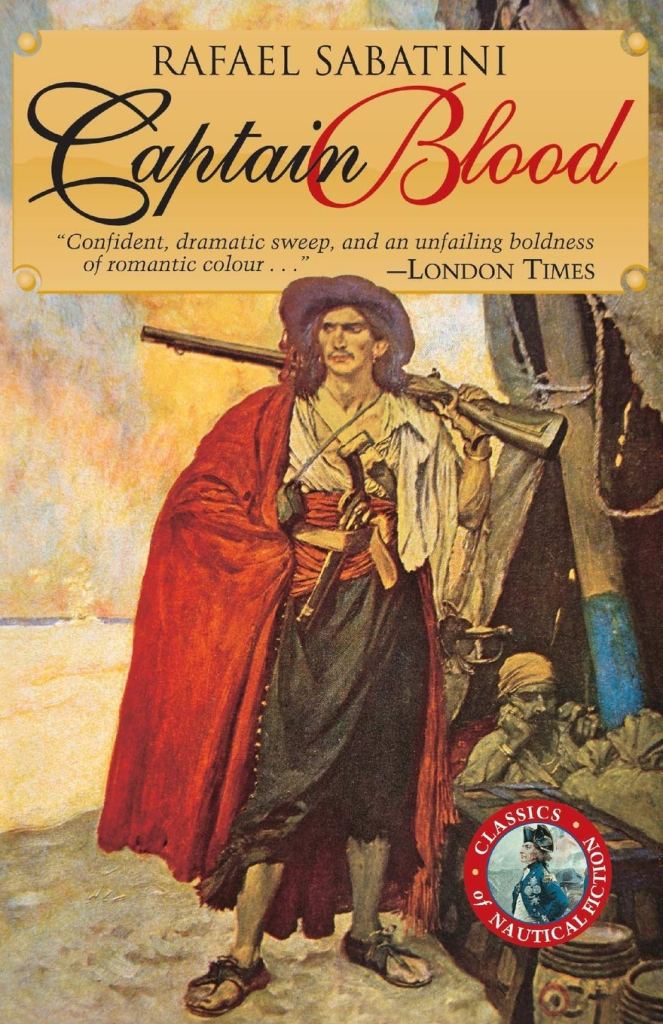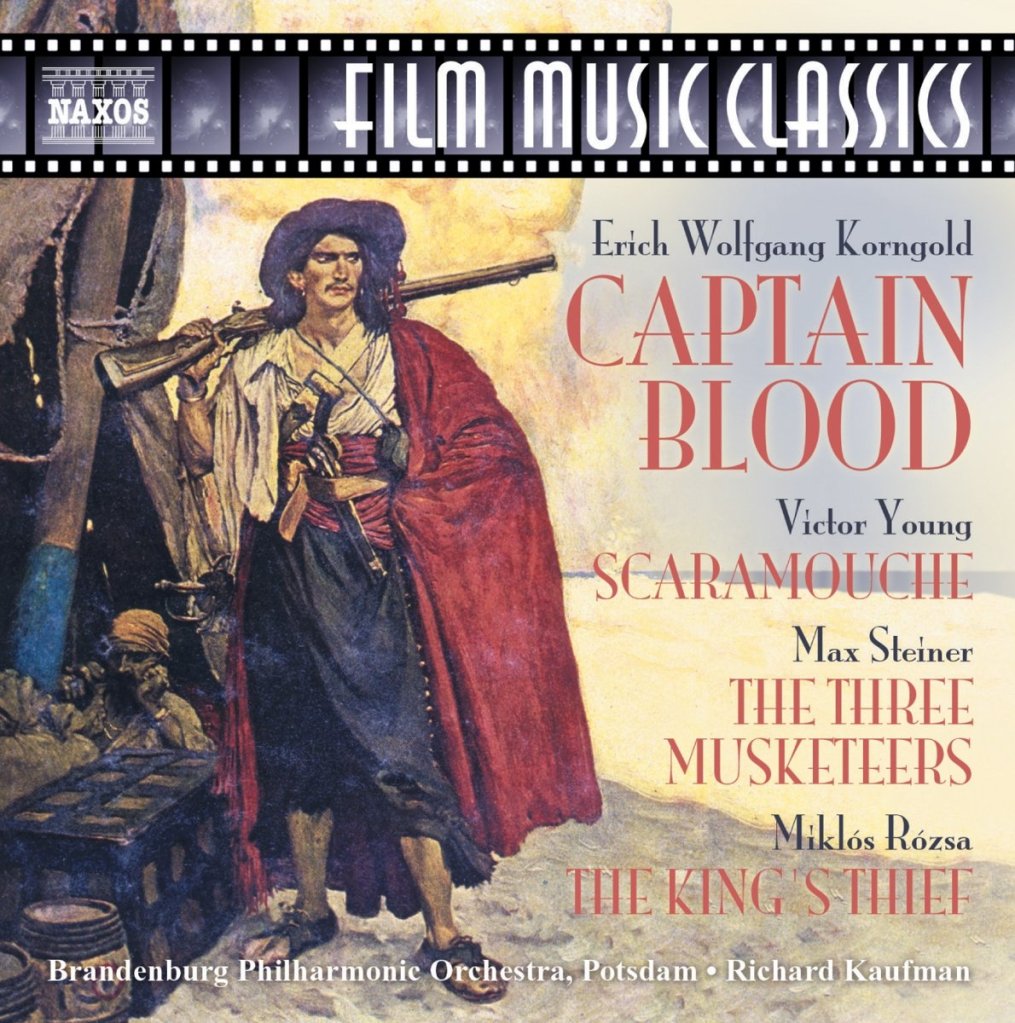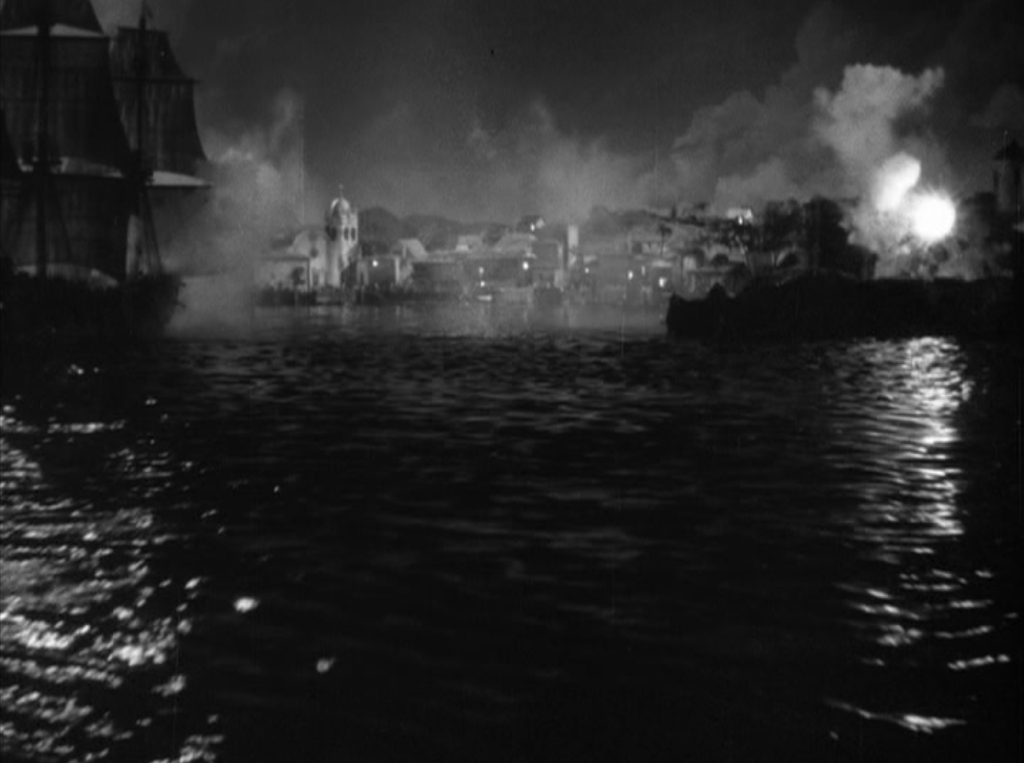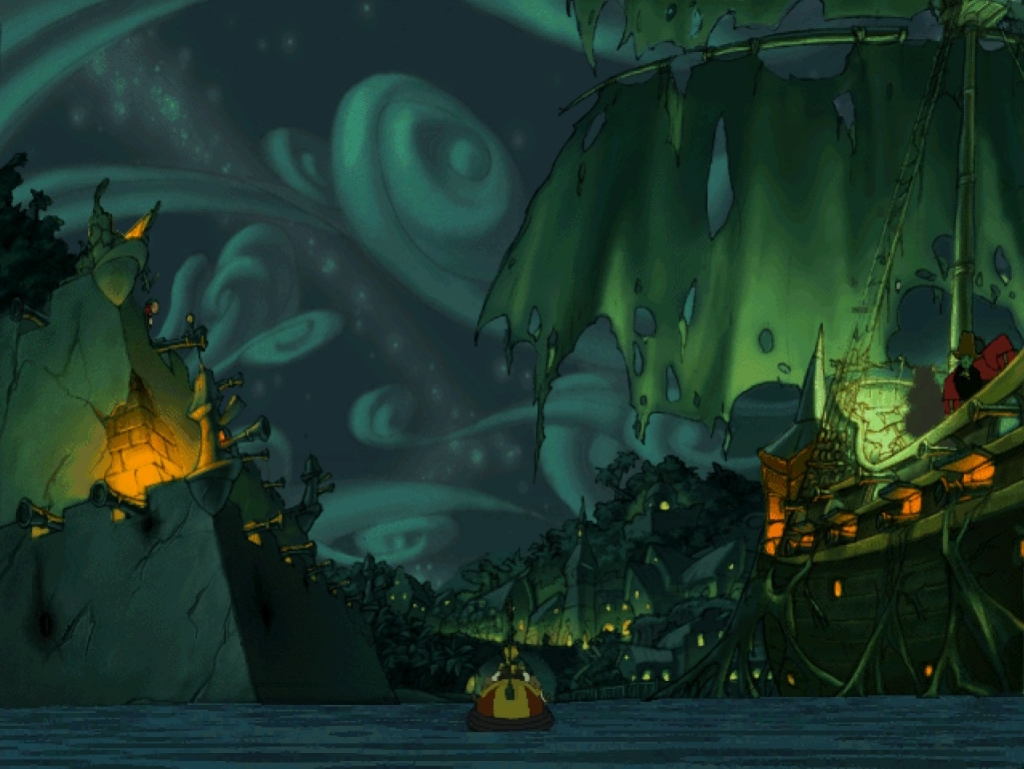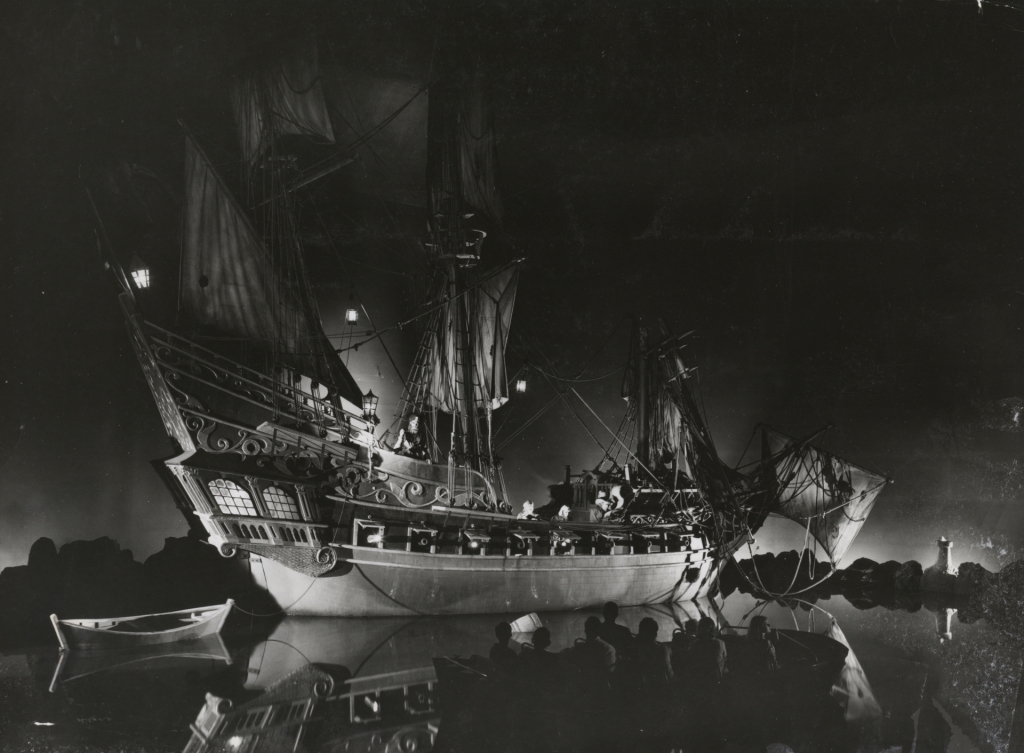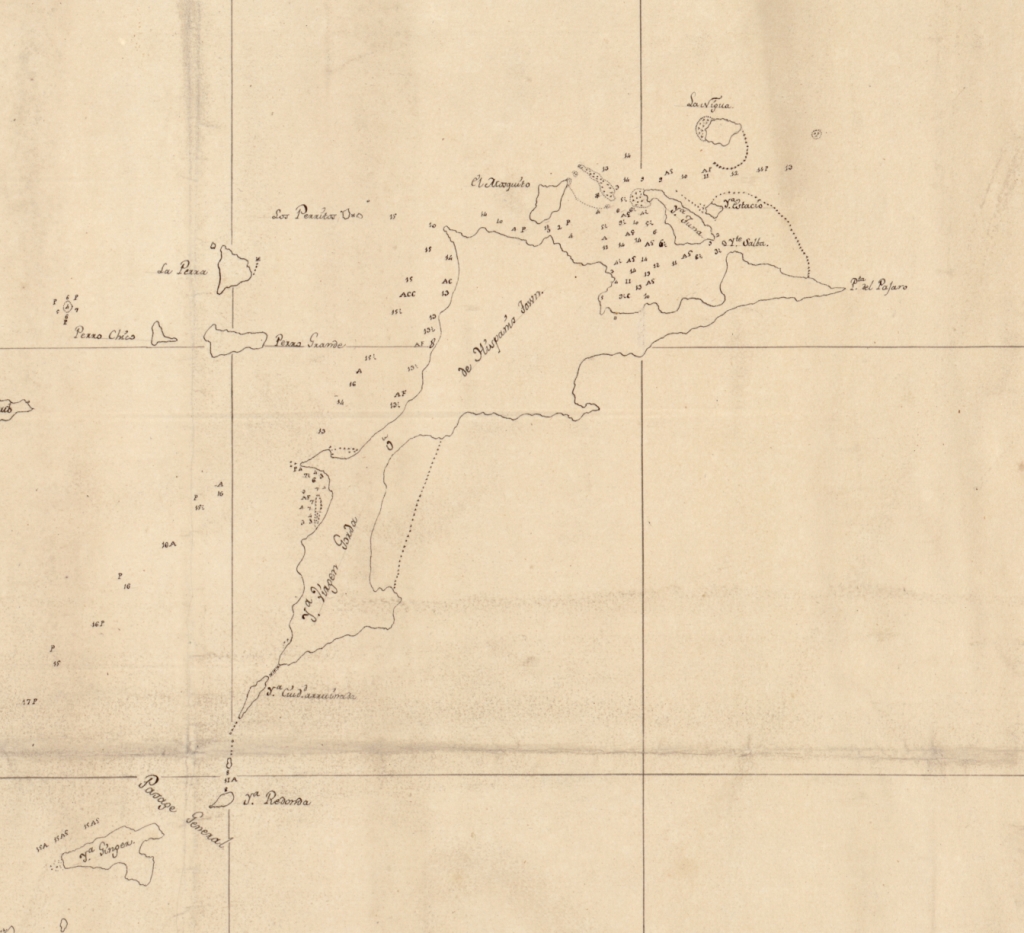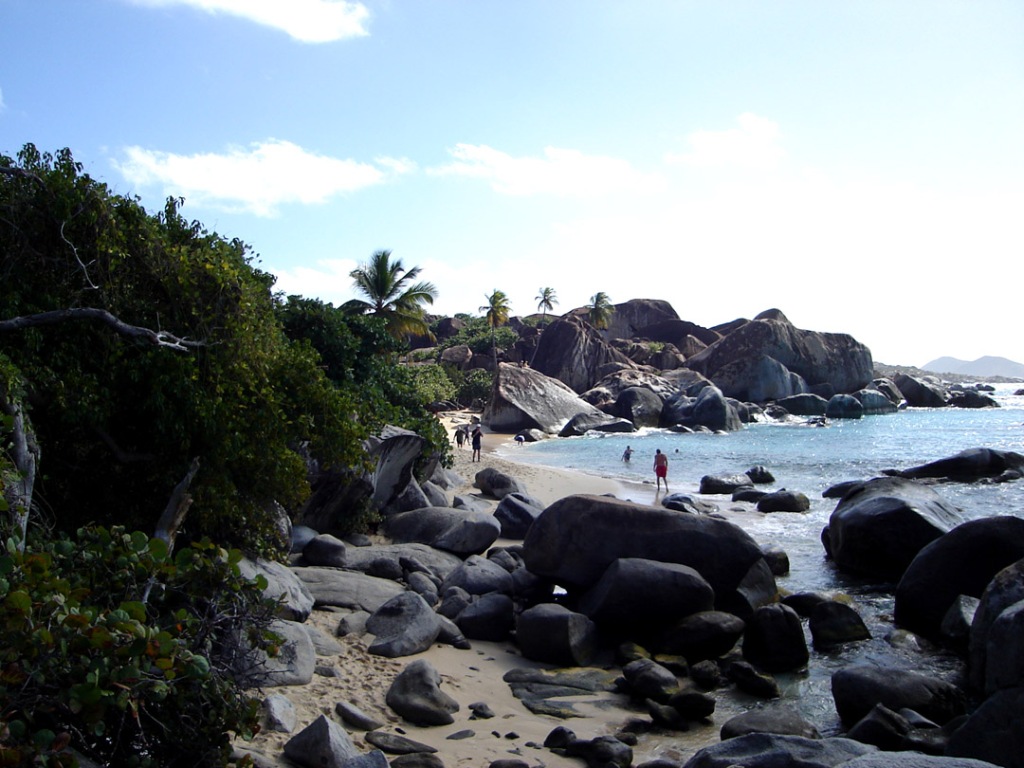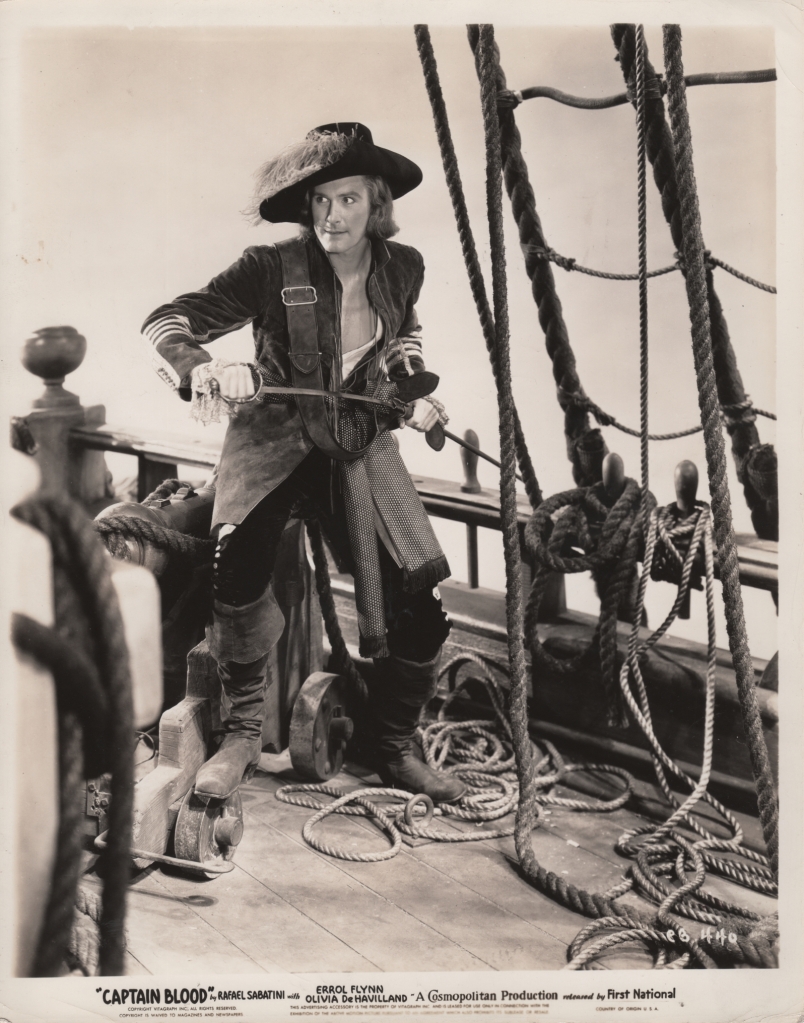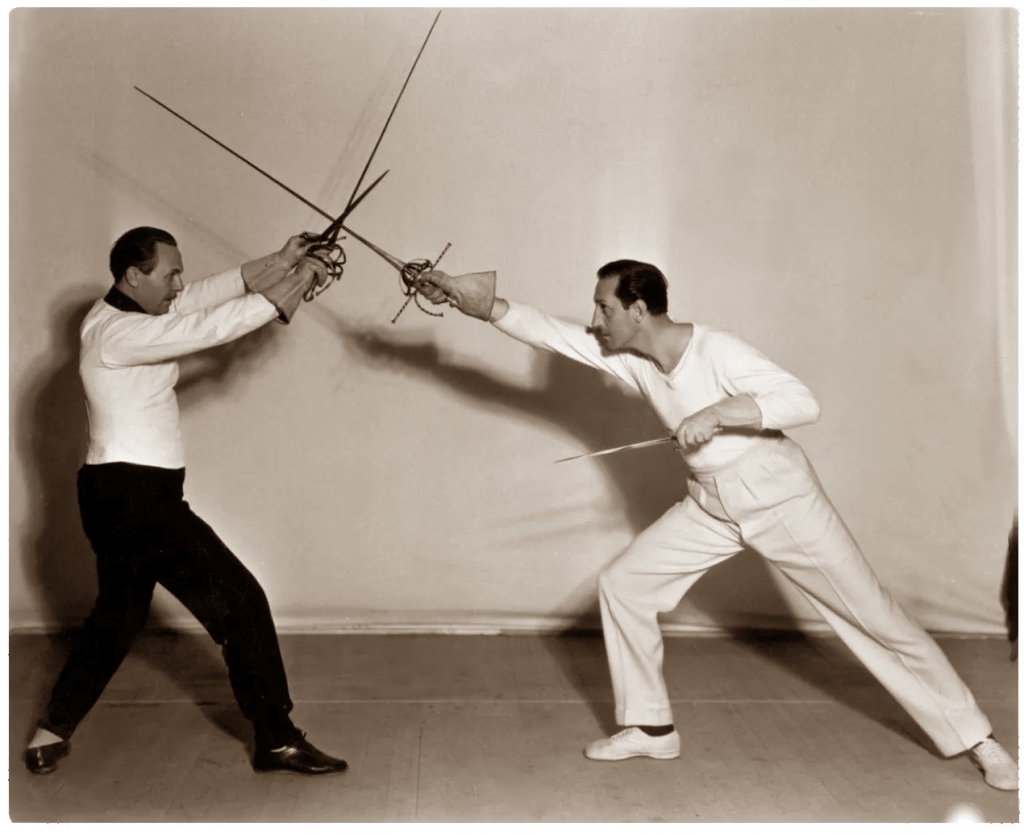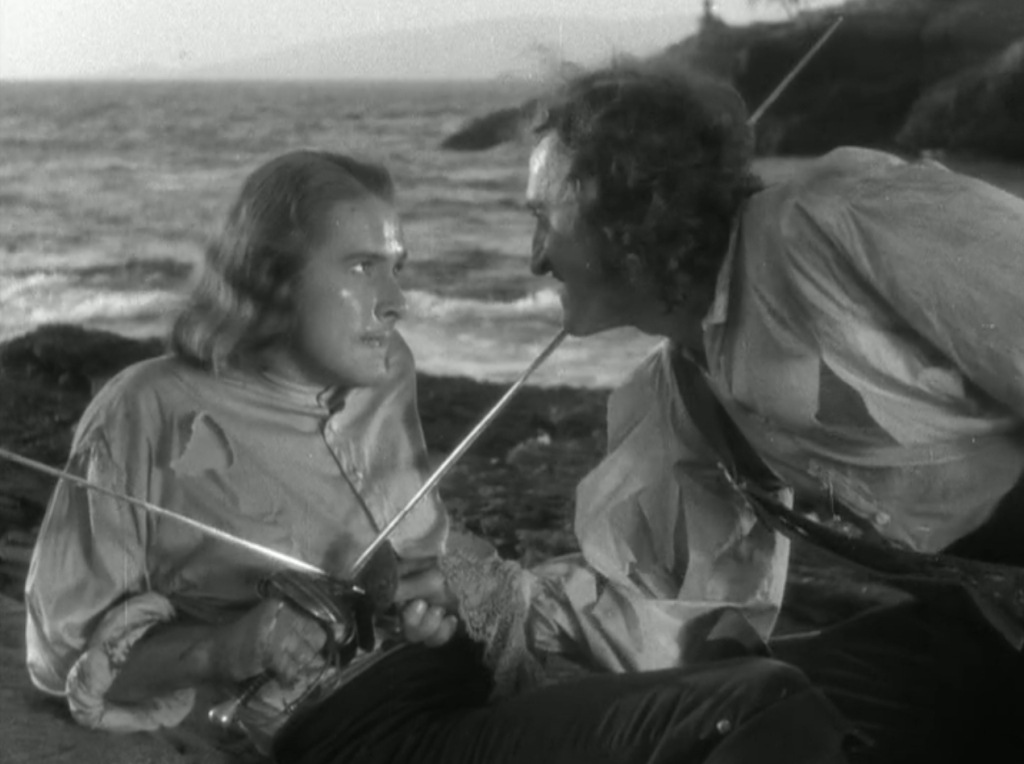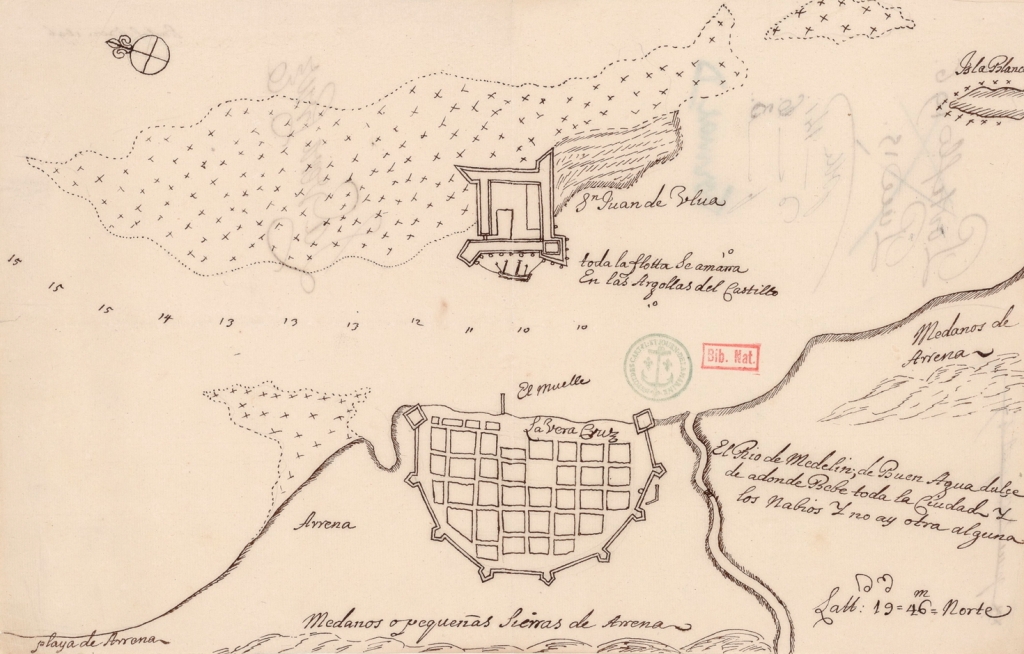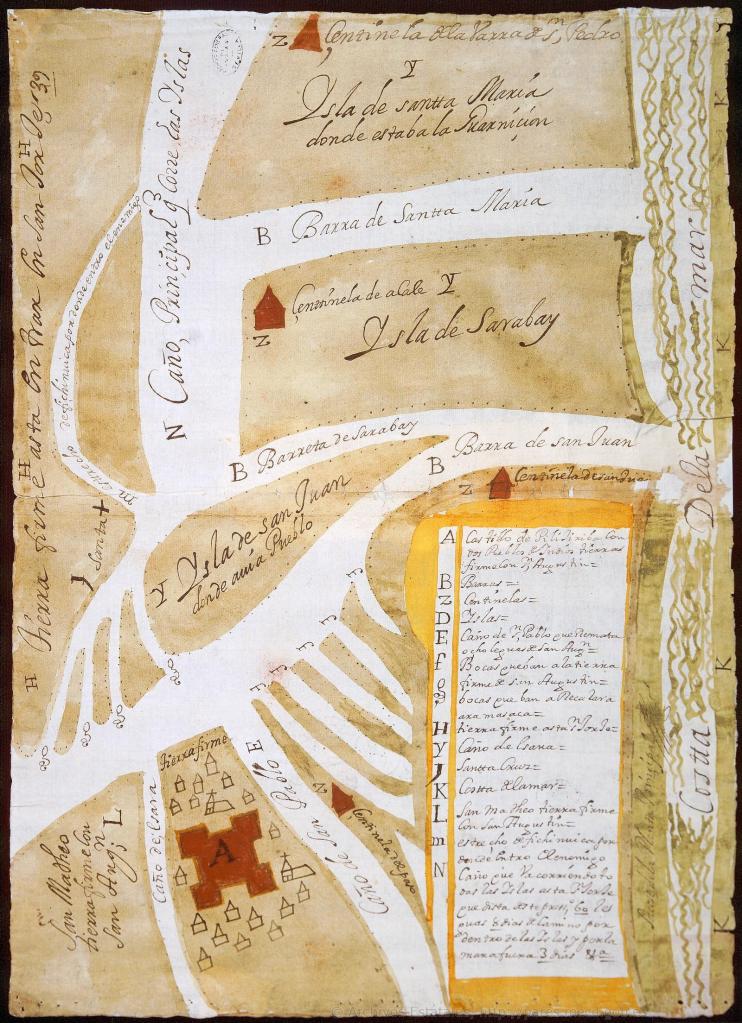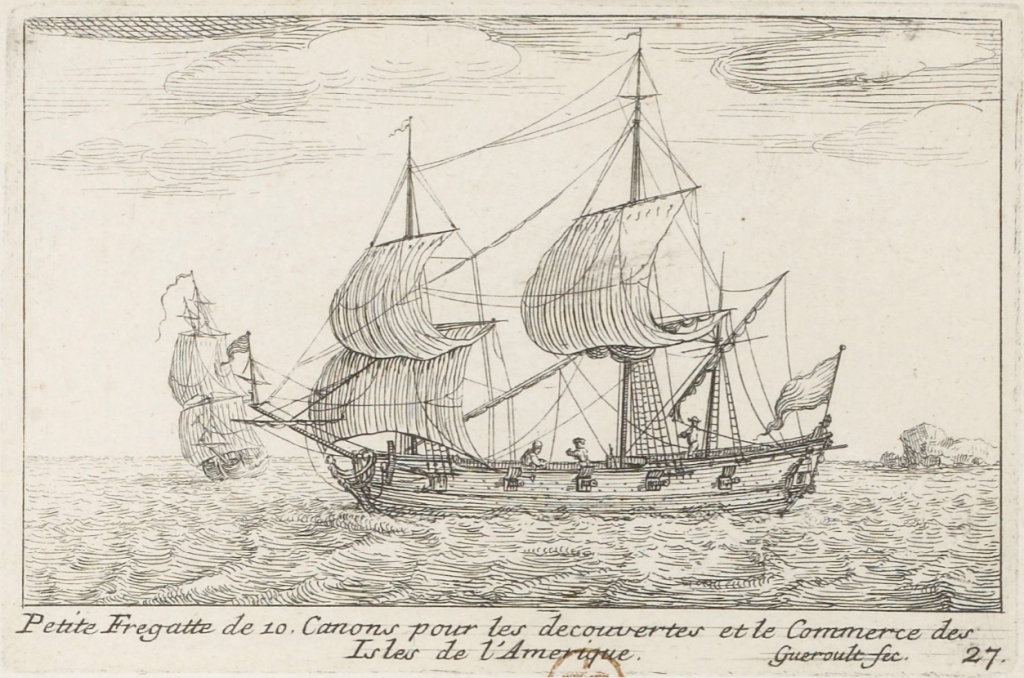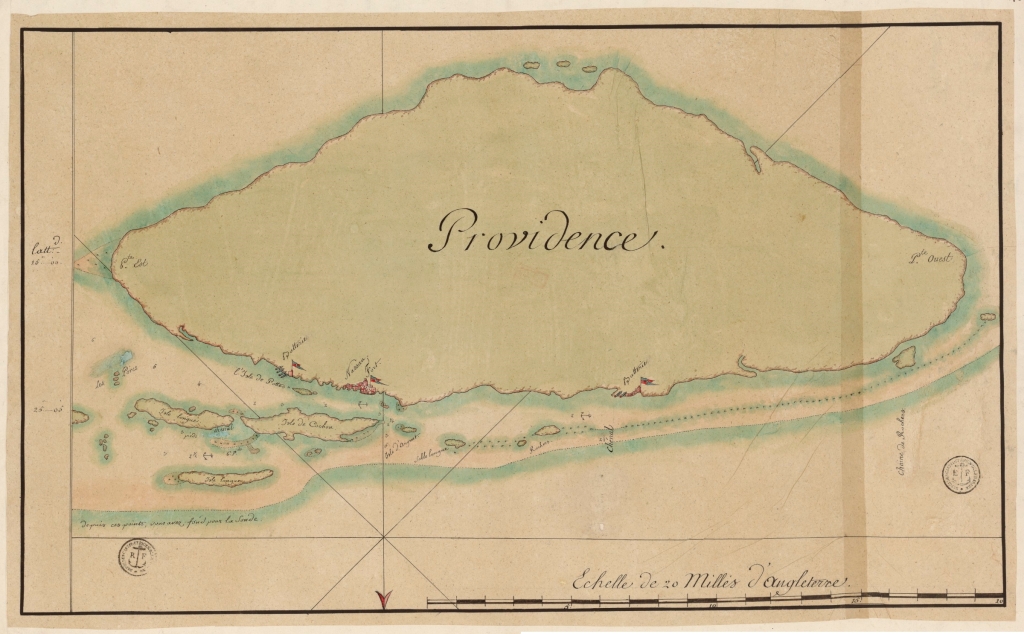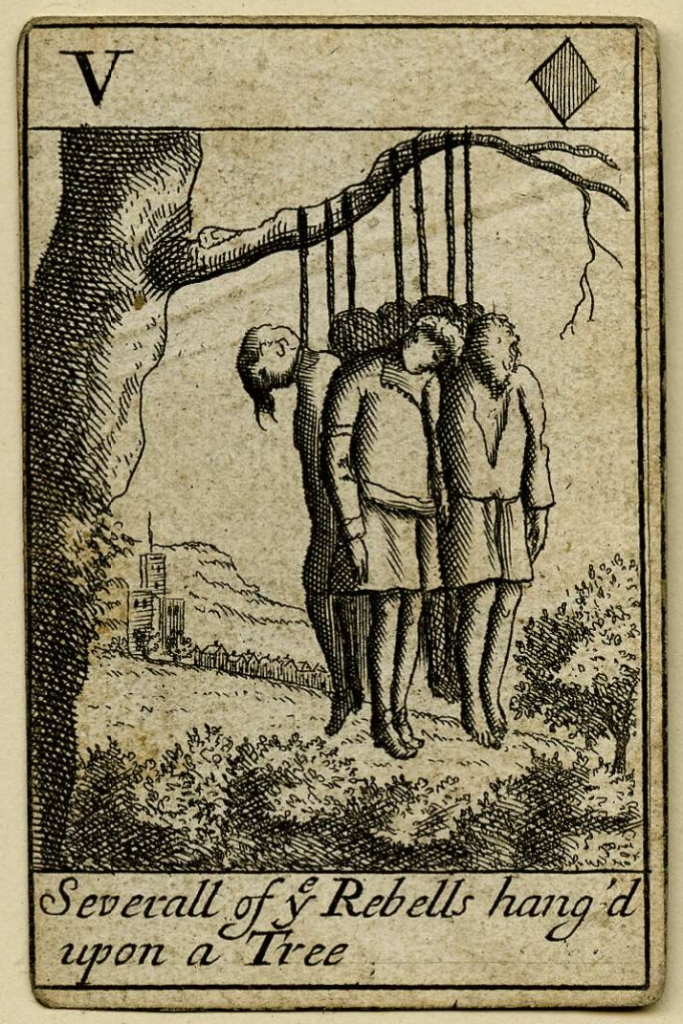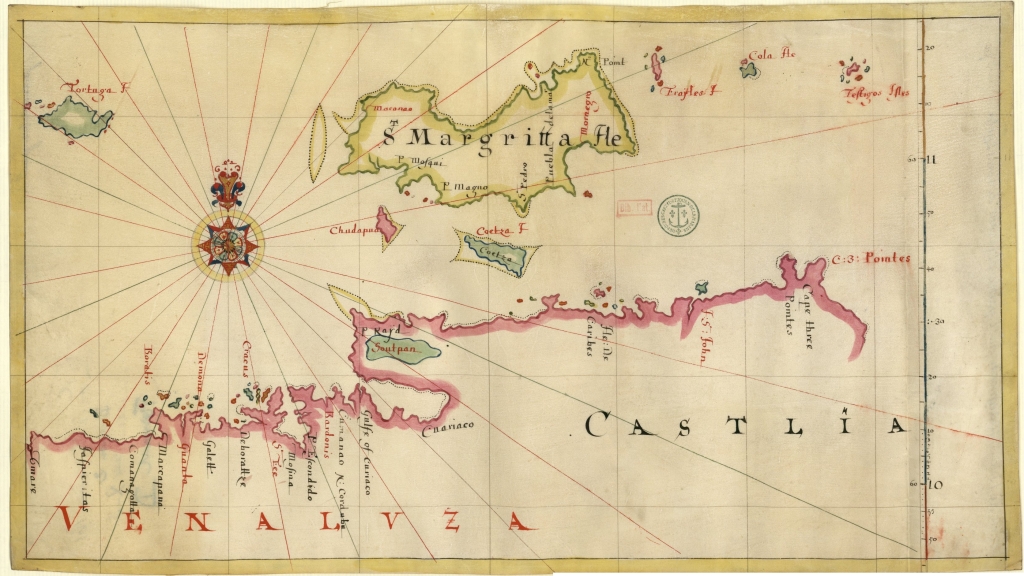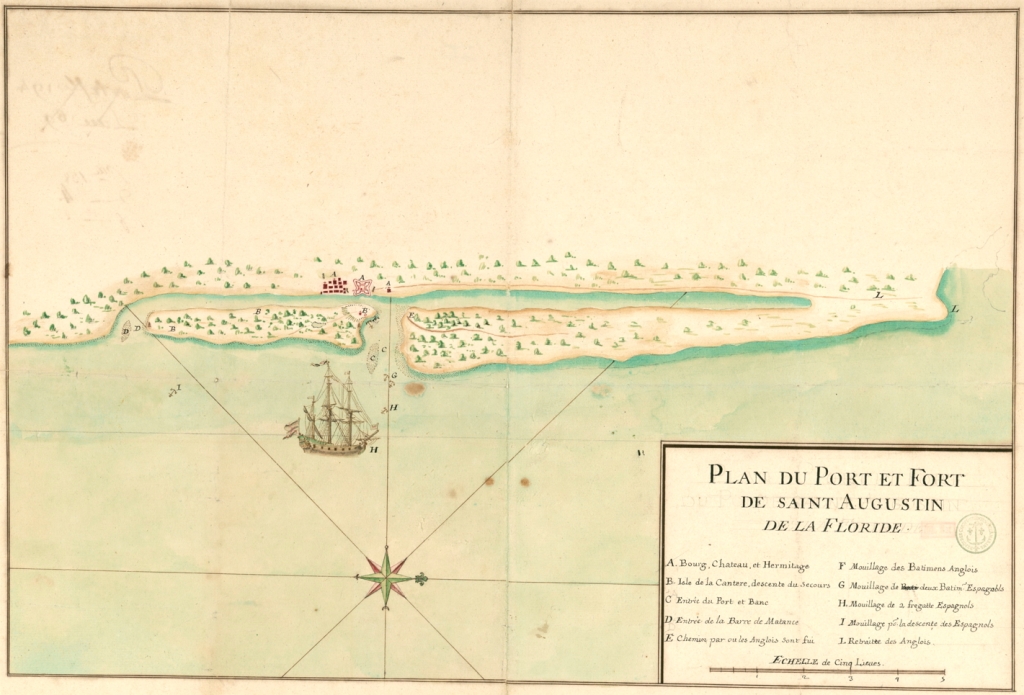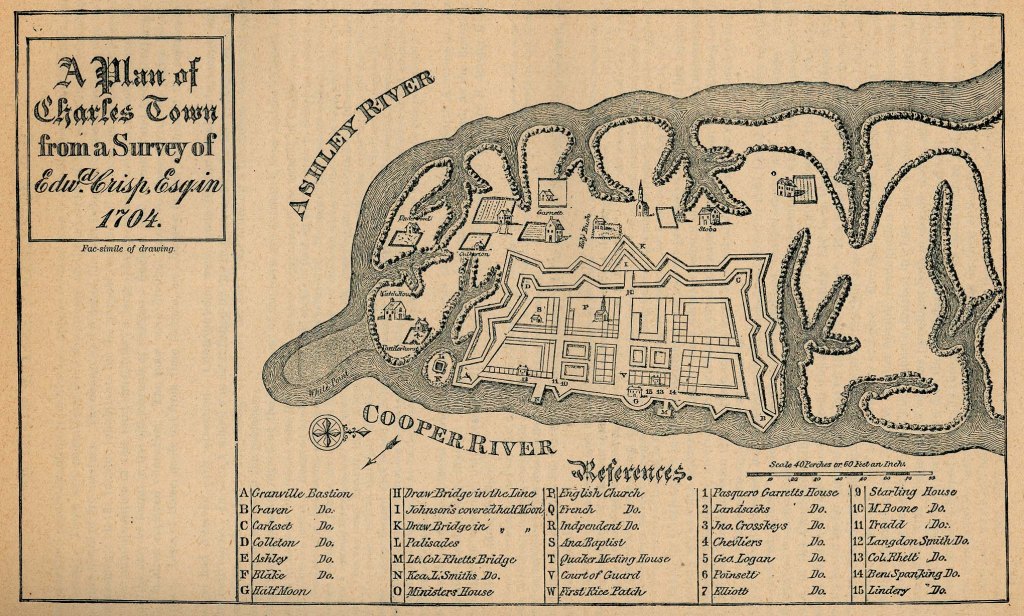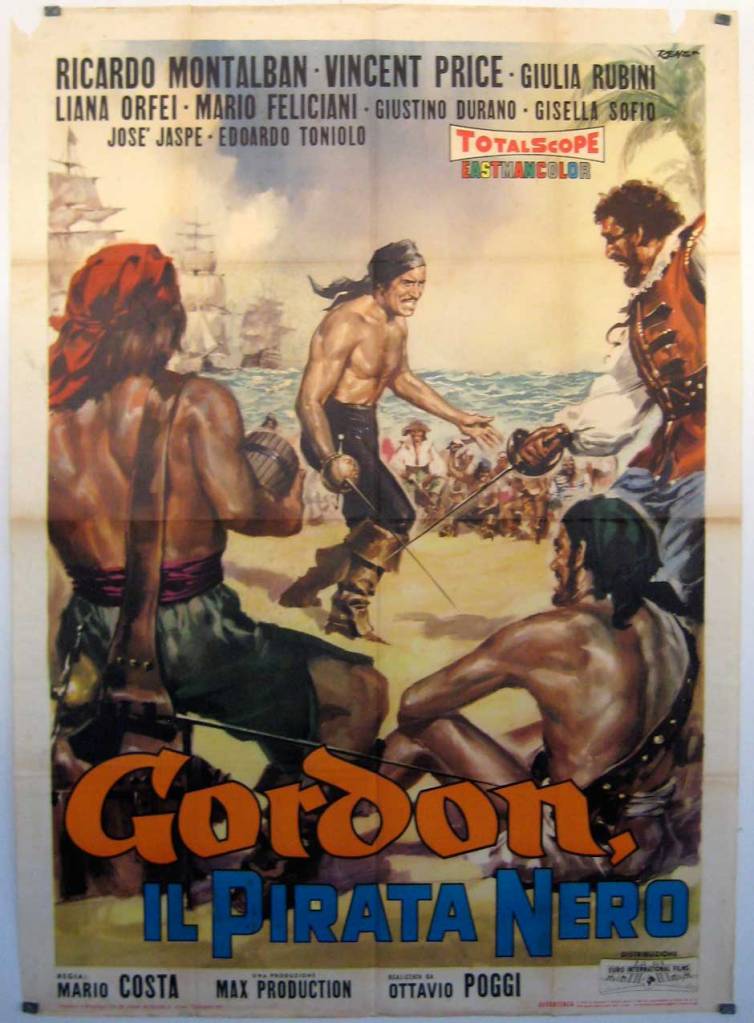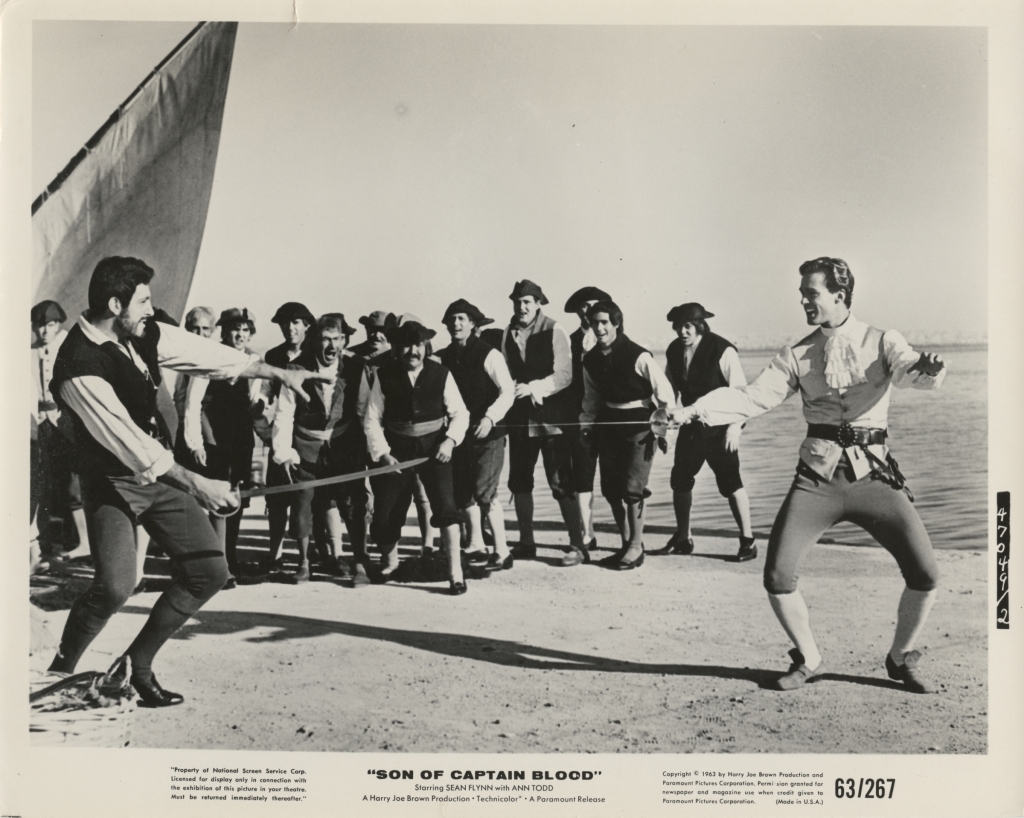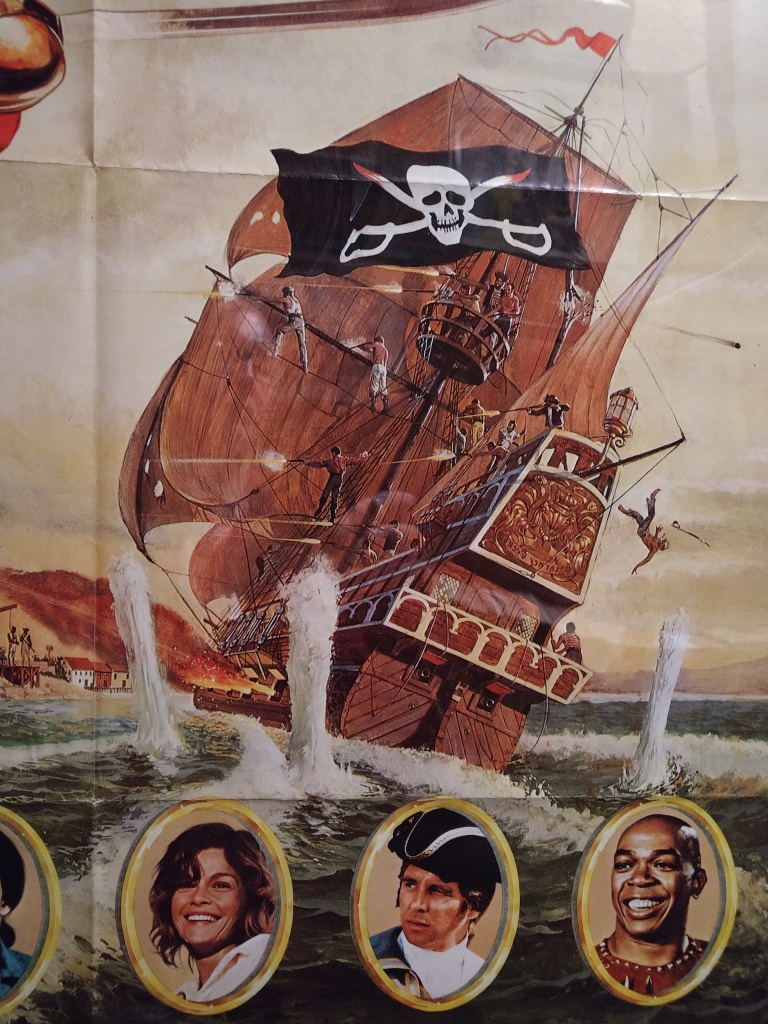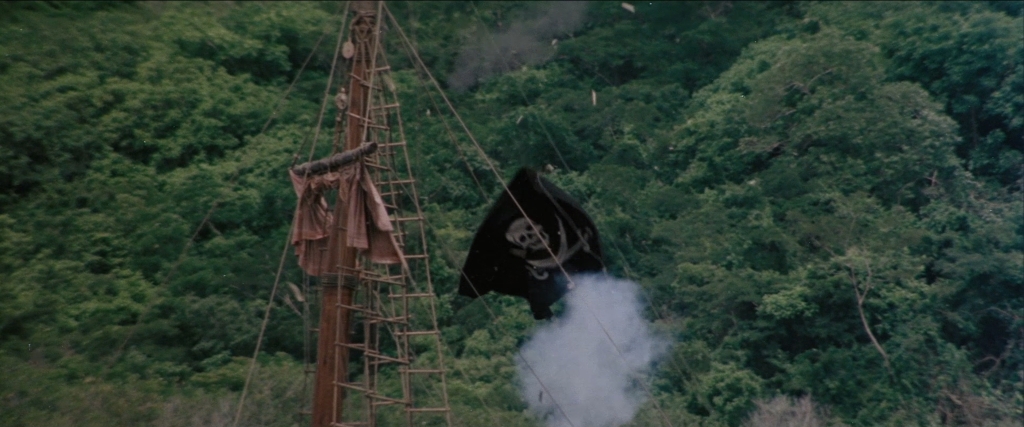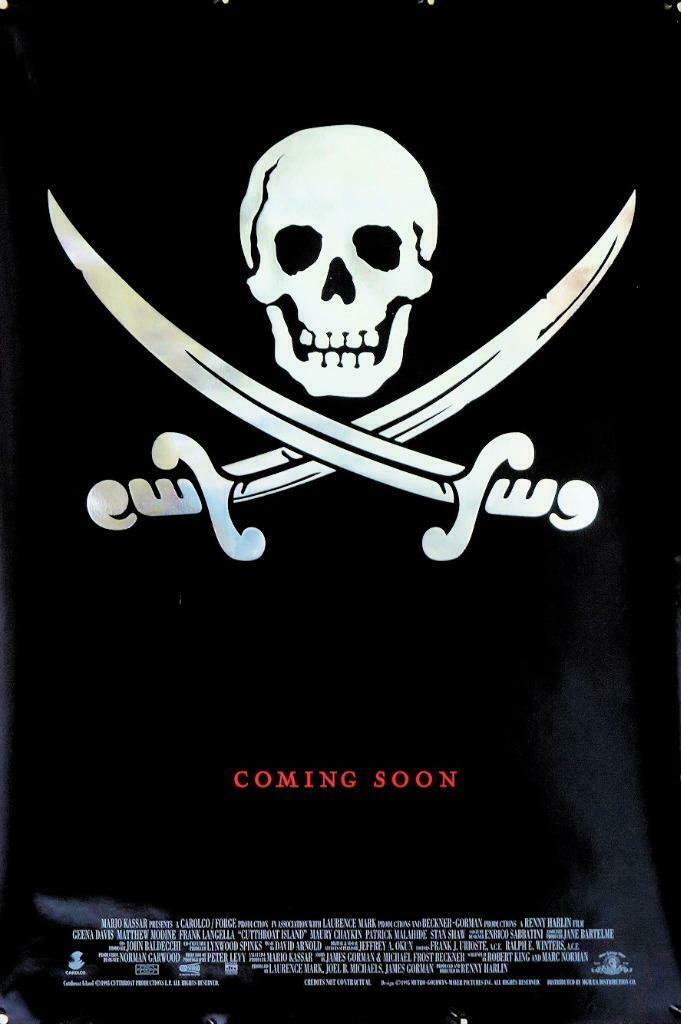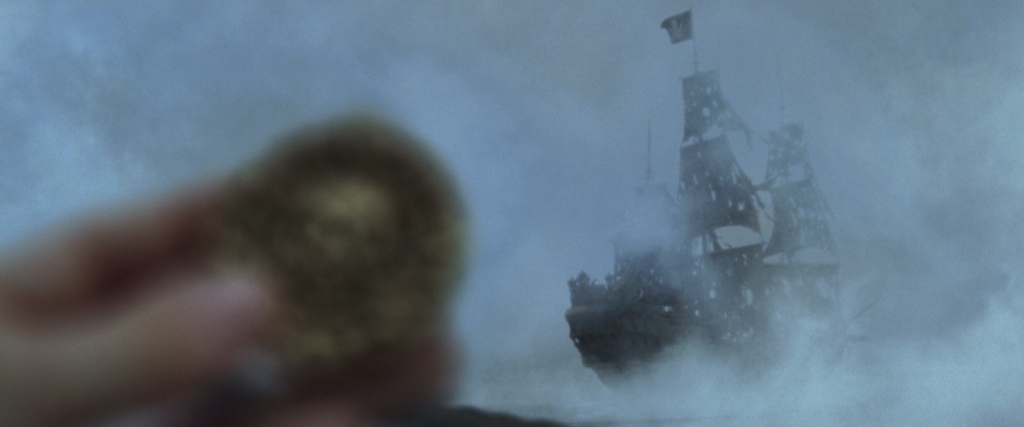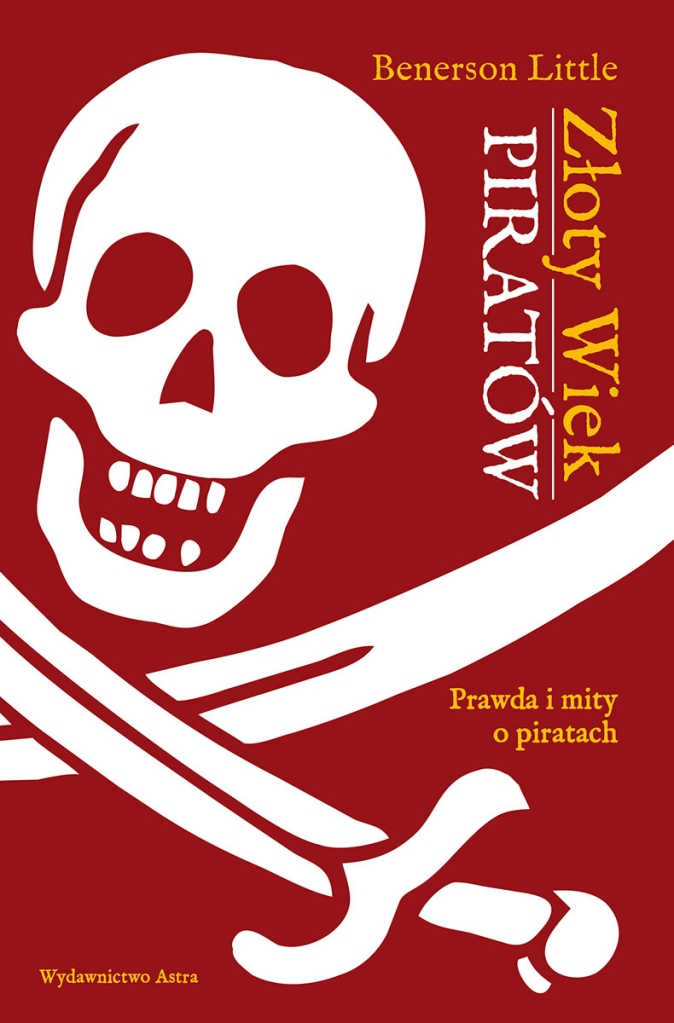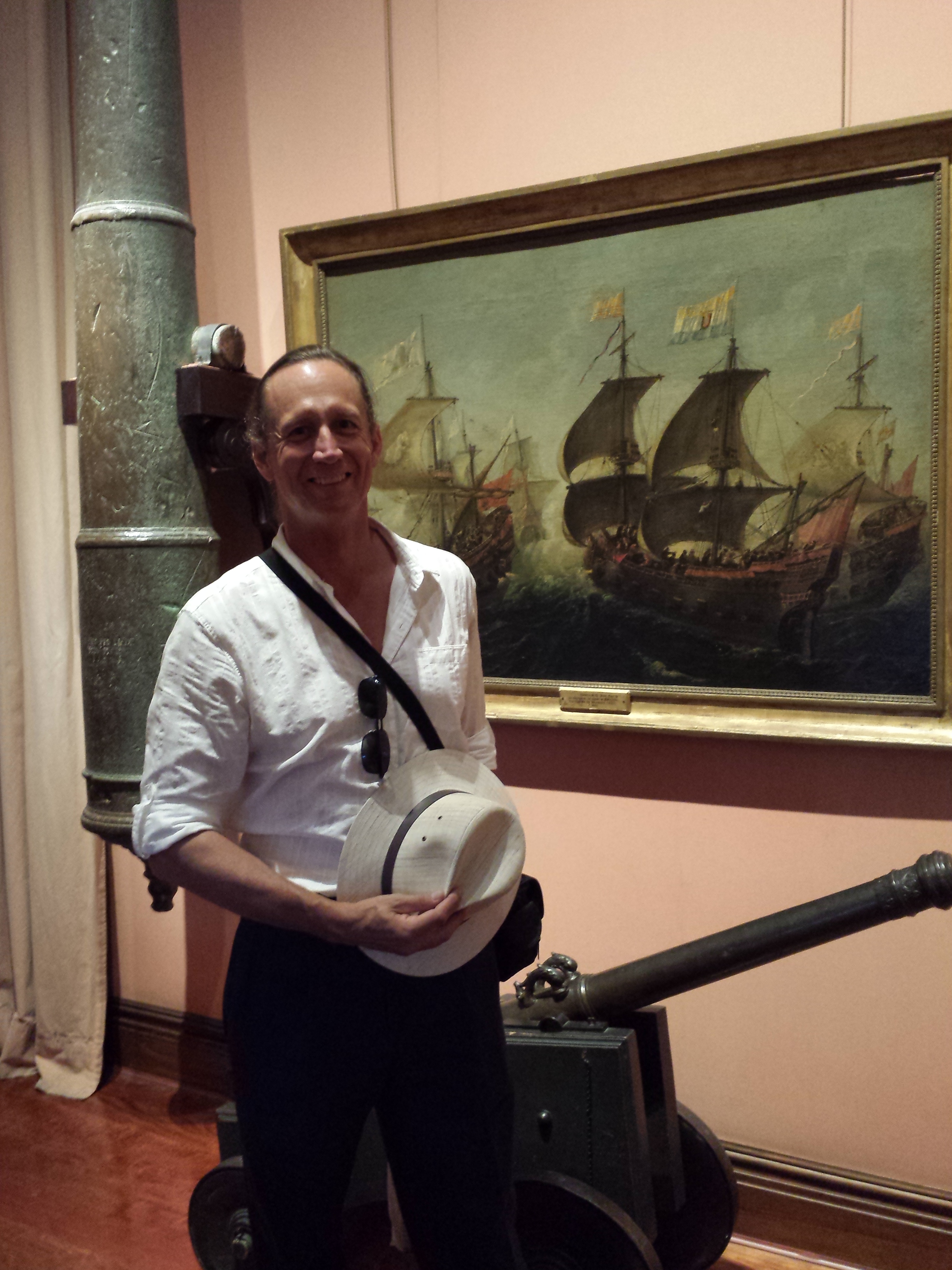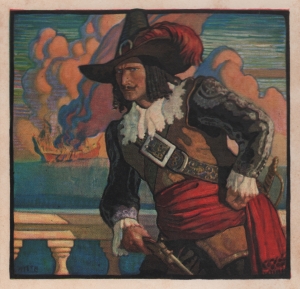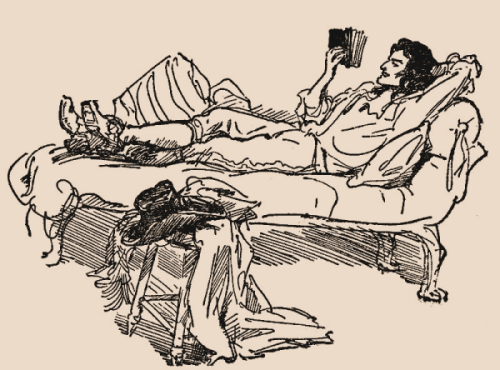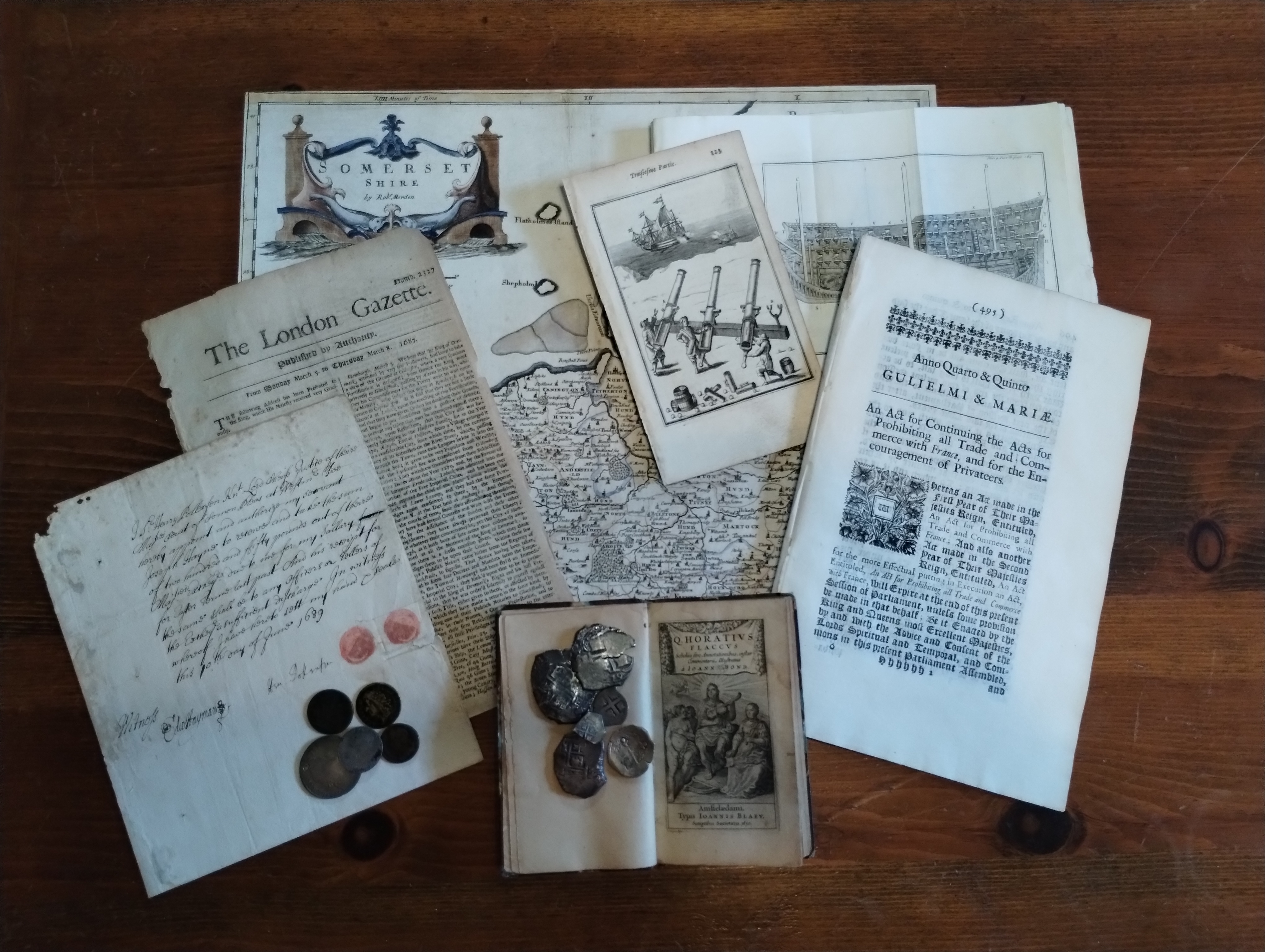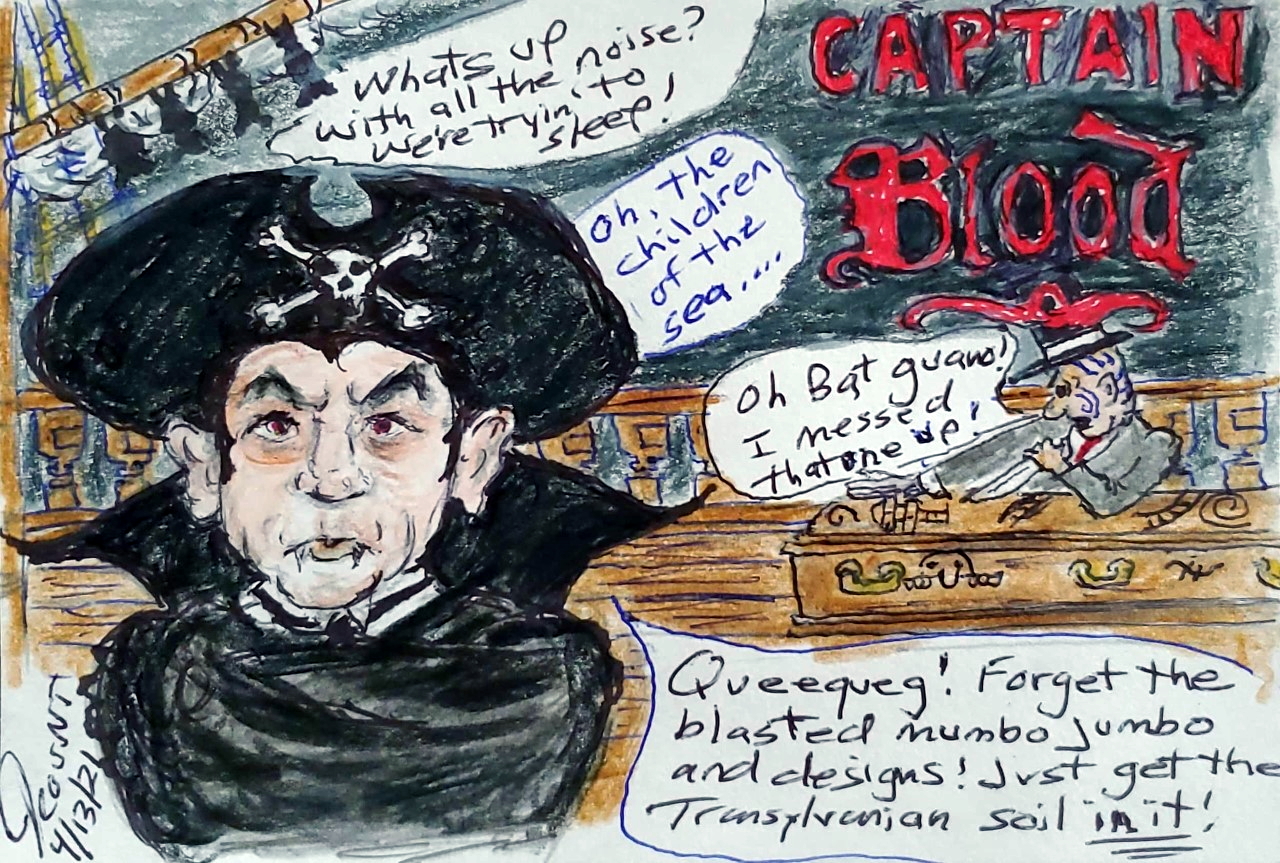Howard Pyle’s Famous “An Attack on a Spanish Galleon” — and Some Real Galleons Too!

Perhaps the most famous of Howard Pyle’s many piratical paintings and drawings, and certainly the most evocative, “Attack on a Spanish Galleon” has inspired many homages (and plagiarisms) in book illustrations, cinema, and advertising — not mention dreams of Spanish treasure in the minds of both armchair and real sea-going adventurers!
The illustration accompanies several other of Pyle’s most famous buccaneer paintings in “The Fate of a Treasure Town,” an article written by Howard Pyle about the 1697 sack of Cartagena de Indias and published in Harper’s Monthly Magazine, December 1905. The article includes some of Pyle’s most famous buccaneer paintings, including “The Buccaneer was a Picturesque Fellow,” “Extorting Tribute from the Citizens” (used as the cover of The Buccaneer’s Realm, for what it’s worth), and “So the Treasure Was Divided.” Of the most famous paintings of his buccaneer, as opposed to pirate, series, only “Which Shall be Captain?” for “The Buccaneers,” a book of poetry, by Don C. Seitz in Harper’s Monthly Magazine, January 1911, and “How the Buccaneers Kept Christmas,” in Harper’s Weekly, December 16, 1899, are missing.
Charles D. Abbott in Howard Pyle: A Chronicle (Harper & Brothers, 1925) considers these four paintings as the culmination of Pyle’s paintings in “the pirate vein,” although he argues that the painting of “Captain Keitt, standing on the slanting deck of ship with a high sea running behind and a burning galleon in the distance, is perhaps the best of all of Howard Pyle’s pirate pictures.” Even so, he notes that “The one called ‘Attack on a Galleon,’ with its marvelous golds and greens, is a splendid achievement in design.”
Although the attack on a galleon scene in illustration, fiction, and film in general was surely inspired by buccaneer-surgeon-author Alexandre Exquemelin’s The Buccaneers of America (first ed. 1678), Pyle’s was likely factually-inspired by Exquemelin’s possibly apocryphal tale of Pierre Le Grand who captured a Spanish treasure ship by boarding at night. The small buccaneer crew had only one craft and boarded by stealth, catching the Spanish captain and crew off-guard — they had disregarded the distant buccaneer craft as of no threat to a great galleon.

The story may be apocryphal but it has the ring of truth. We know that historically other buccaneers captured Spanish vessels by boarding from small boats, canoes, and periagers (piraguas, pirogues), that sea rovers in general have successfully made similar attacks over the millennia, and that modern naval special operations forces use the tactic as well. (For more information on the tactics of Golden Age buccaneers, pirates, privateers, and naval commerce raiders, see The Sea Rover’s Practice.)
In the painting, one buccaneer boat is already alongside, its boarders streaming up the side and into the waist, and another, gaff-rigged, a dugout canoe perhaps, is captivatingly astern, surely preparing to board as well. The smoke billowing from the deck indicates a fierce fight on deck — muskets and pistols, and probably the upper deck great guns and swivel guns as well, are in action — or possibly even that the ship may be afire, although in the latter circumstance it is unlikely that buccaneers would board, for a fire aboard ship was feared more than any other hazard of the sea.
At the stern, probably on the poop deck, one can sea a Spaniard in a broad Spanish hat, often referred to as a “two-hand hat” (or perhaps it is one of the buccaneers instead?) and aft of him, perhaps on the poop-royal (also known as the topgallant poop, Sp. chopeta/chopa/imperial, Fr. dunette sur dunette/carrosse), a pair of hands in submission and supplication.
A question that continues to perplex me is what time of day does this attack take place? Is that a golden full moon just up over the horizon at sunrise, given its red-orange color? Or is it a sunset, suggesting the setting and settling of a Spanish treasure voyage?

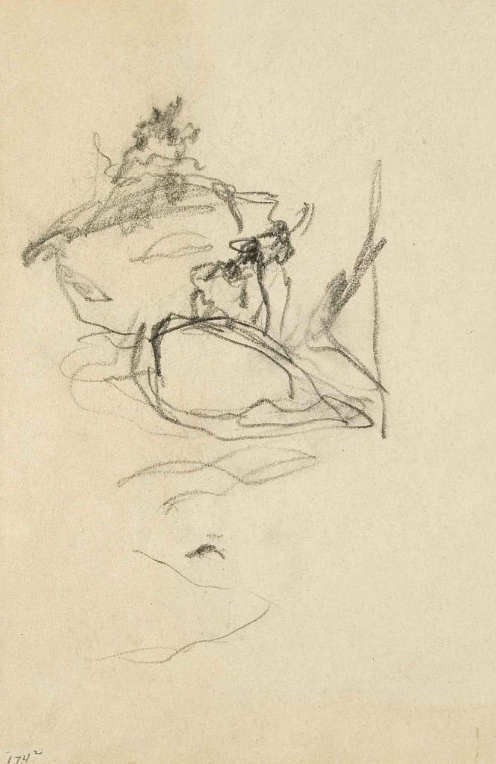
From the left drawing above it’s easy to see that Pyle changed the early conception of the galleon’s stern, eventually elongating it greatly for effect. Even so, the stern is historically-based. Without any doubt, as his inspiration Pyle used the well-known illustration, shown below, by 17th century Dutch artist Wenceslaus Hollar in 1647, and with poetic license narrowed the stern even further. Not only is the Hollar drawing quite similar, but Pyle used it in a later illustration, copying it almost exactly.
The illustrations by Hollar below show a form of mid-17th century Dutch ship used for both East and West India voyages. By the 1660s Dutch sterns, had become a bit lower and less narrow at the upper transom. Even so, some of the East and West India-men shown below, built in the 1640s and 1650s, would have survived in the 1660s and even 1670s or later. Importantly, approximately one third of Spanish ships were Dutch-built, including some treasure ships sent to the Americas, making Pyle’s Dutch-style Spanish galleon historically-correct, or largely so.
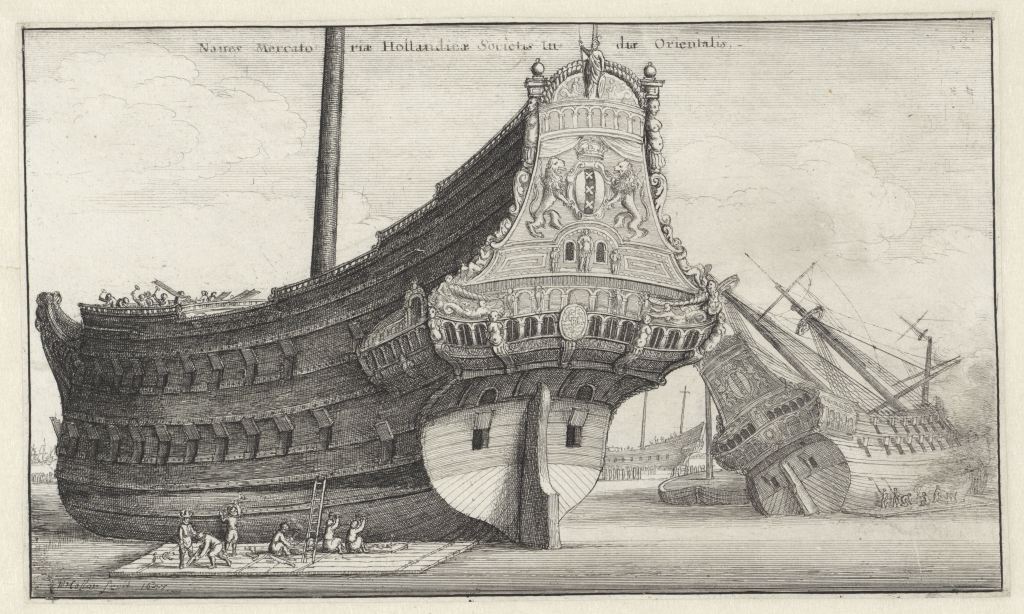
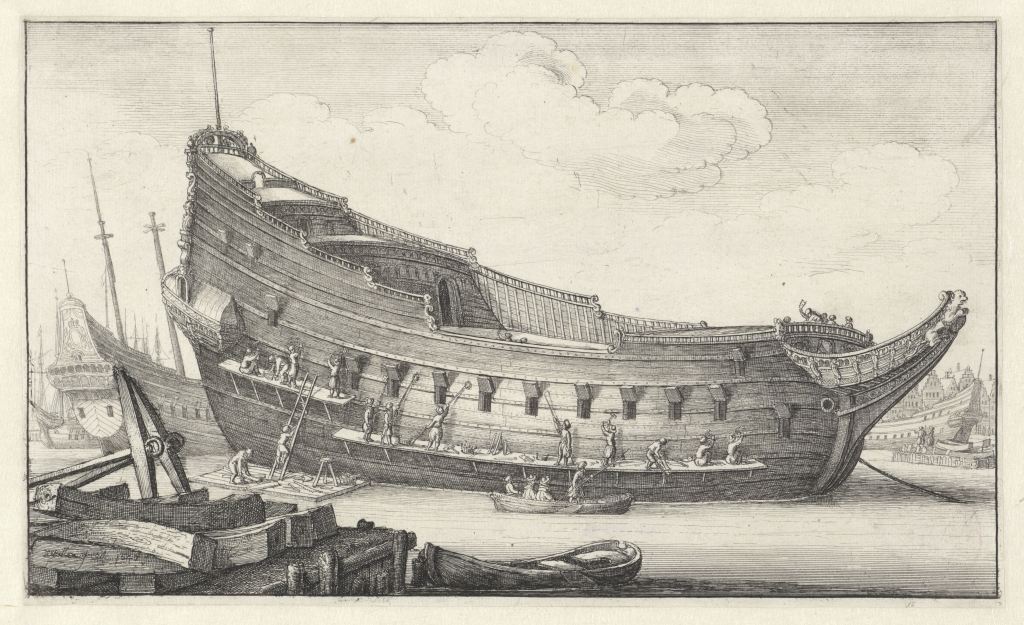
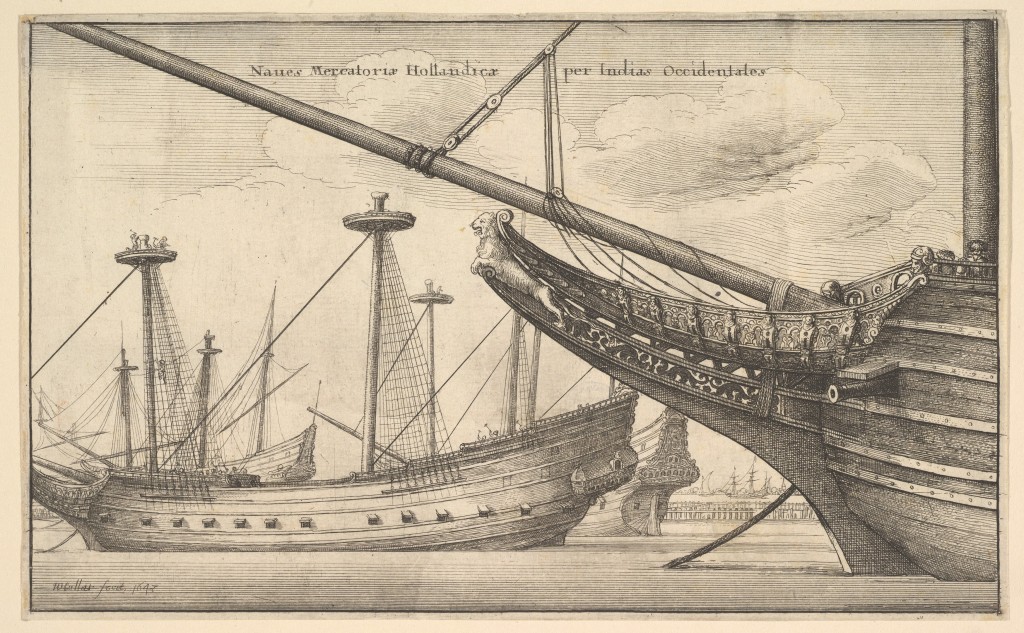
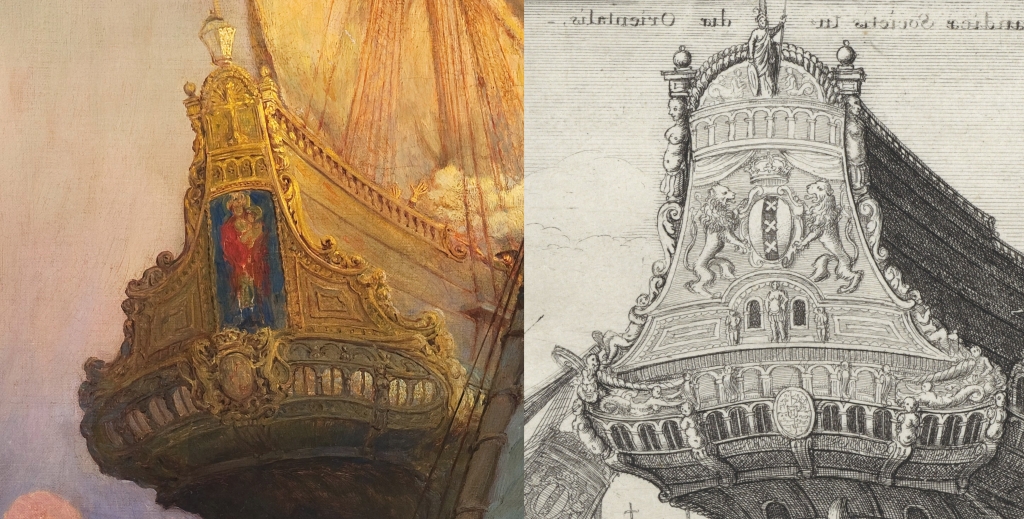
In the comparison above, Pyle has largely kept the structure and decoration with minor modification. Importantly and correctly, he has added a large Catholic religious icon representing the ship’s name at the stern. This was the usual practice aboard Spanish ships of the era, nearly all of which had religious names although some had secular nicknames. So far, the only exception I’ve found to the religious name rule is among some Spanish privateers. Occasionally, a religiously-named Spanish privateer or man-of-war might display the Spanish arms as its main icon at the stern, but it would still display a religious icon representing its name somewhere below or above the arms. Here we can assume that Pyle’s galleon’s name begins with Nuestra Señora given that the icon appears to be of Madonna and Child.
It’s possible that Pyle may have been originally inspired by “Wager’s Action off Cartagena, 28 May 1708” by English painter Samuel Scott. Painted at some point in the 1740s, Scott depicts a classical 17th century Spanish galleon, although in fact the galleon in question, the San Jose, whose remains along with possibly a billion dollars in treasure, are currently undergoing careful salvage off Cartagena de Indias, Colombia, probably looked nothing like this. (Details in the section below on real galleons.) In any case, Pyle may have been familiar with this famous painting, and sought out similar but more detailed images, and found those of Hollar. Notably, Pyle’s billowing smoke and orange colors are similar to Scott’s. (Compare with the image of what is probably the San Jose’s actual stern later in this post.)
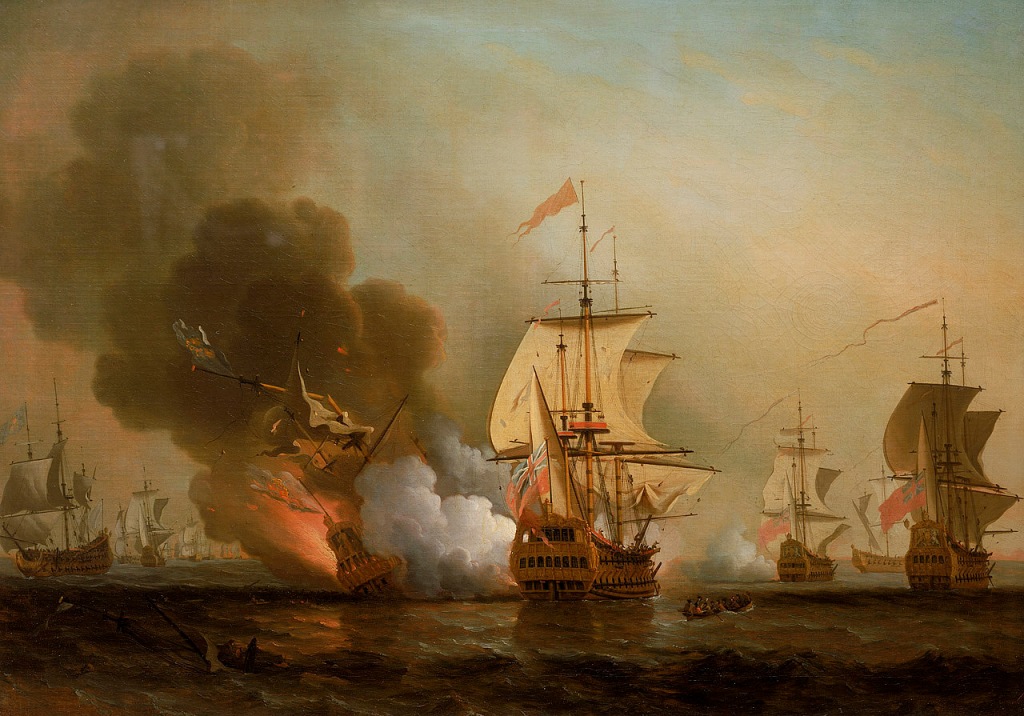
A word or two on the term galleon. Originally, in the late 16th and early 17th centuries, it referred to a stout ship with specific characteristics that was built for war and trade. Spanish galleons were noted in particular for their very high sterns. By the late 17th to early 18th centuries the term galleon could refer to (1) in its narrowest definition, a treasure ship of a type built to very specific guidelines for use in the Carrera de Indias (the trade to the Spanish Americas from Spain and from the Spanish Philippines), (2) any Spanish treasure ship of any sort, (3) any Spanish ship with a very high stern and multiple stern galleries, and (4) any ship of war or trade similar to those of Spanish galleons, in particular those of Portugal (occasionally still referred to as carracks as well), Venice, Genoa, and “Turkey” (the Ottoman Empire).
Further, some Spanish officials in the late 17th century incorrectly referred to Spanish men-of-war of the frigate type as galleons, retaining language from earlier in the century. True Spanish galleons, as described in (1) were largely no more by the 1640s except for a small number specifically built for the treasure fleets. Arguably, the last true galleons, and there were but few by this time, were built in the 1690s, yet privateer Woodes Rogers in A Cruising Voyage Round the World (1712) describes one in the first decade of 18th century in the South Sea (the Pacific Spanish Main): “[S]he was call’d the Ascension, built Galeon-fashion, very high with Galleries, Burden between 4 and 500 Tun…” He later refers repeatedly to the ship as a “Galleon” — and oddly, to neither of the Manila galleons as galleons, but only one or the other as the “Manila Ship.”
Although the life of a ship in this era was often less than twenty years, some were in use for thirty to forty years, ensuring that older forms of ships were still well-represented.
Pyle also painted a somewhat similar illustration in 1898, published eventually in Collier’s magazine, December 10, 1904, and it clearly shows that his inspiration was taken from Hollar’s Dutch East Indiaman.
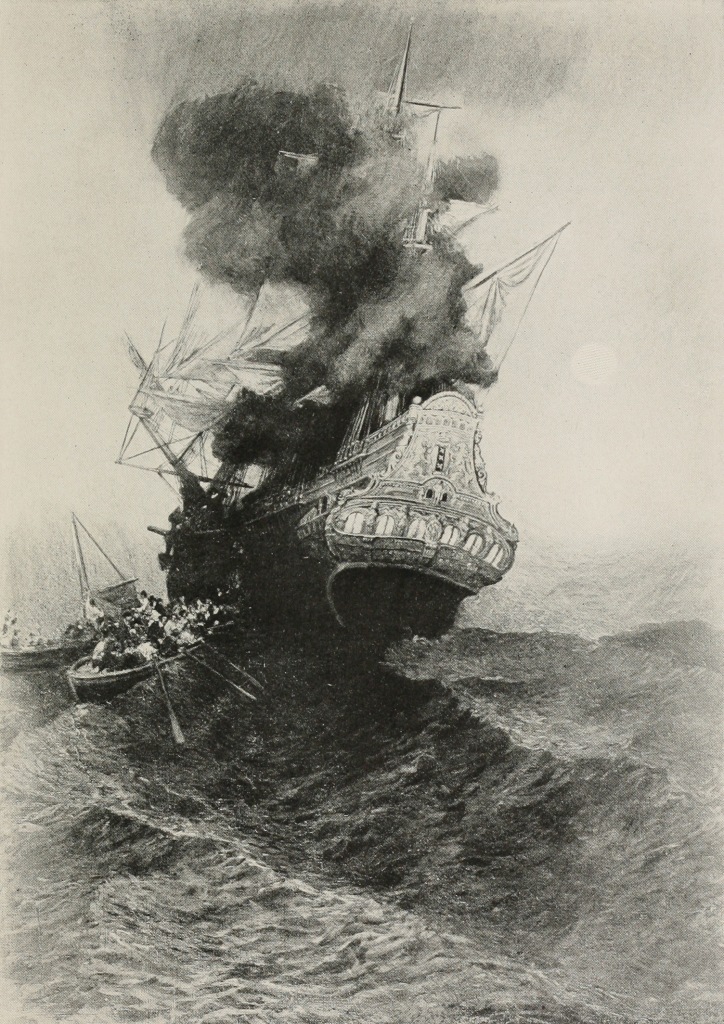
Imitations & Homages
Pyle’s galleon, or its inspiration, has spawned numerous imitations, right down to the present. Many, most perhaps, are homages. Below are a few representative images.
His treasure ship has often been used in advertising, for example in this add from The Saturday Evening Post, October 22, 1927, for 1847 Rogers Bros Silverplate. “Time and Tides are Kindly to Comely Captain Housewife,” reads the caption. Sexist, yet the series of ads does feature a variety of often clearly independent pirate women as opposed to more common images of domesticity. Doubtless the illustrations of sexy pirate women were intended not only to attract the attention of women readers, but also as lure to inspire husbands to buy the cleverly marketed “Pieces of Eight” set of silverware and associated pieces.

The detail below clearly shows the galleon to be a copy of Pyle’s famous ship. An homage, probably, but also good marketing, immediately evoking the pirates and buccaneers of Howard Pyle and Douglas Fairbanks.
A dinner plate dating from 1923 – 1936 — an era of cinematic pirate adventurers Douglas Fairbanks and Errol Flynn, and the buccaneer novels of Rafael Sabatini and Jeffery Farnol — shows likely influence of Howard Pyle’s galleon. That said, as seen above, there were real ships with similar sterns.
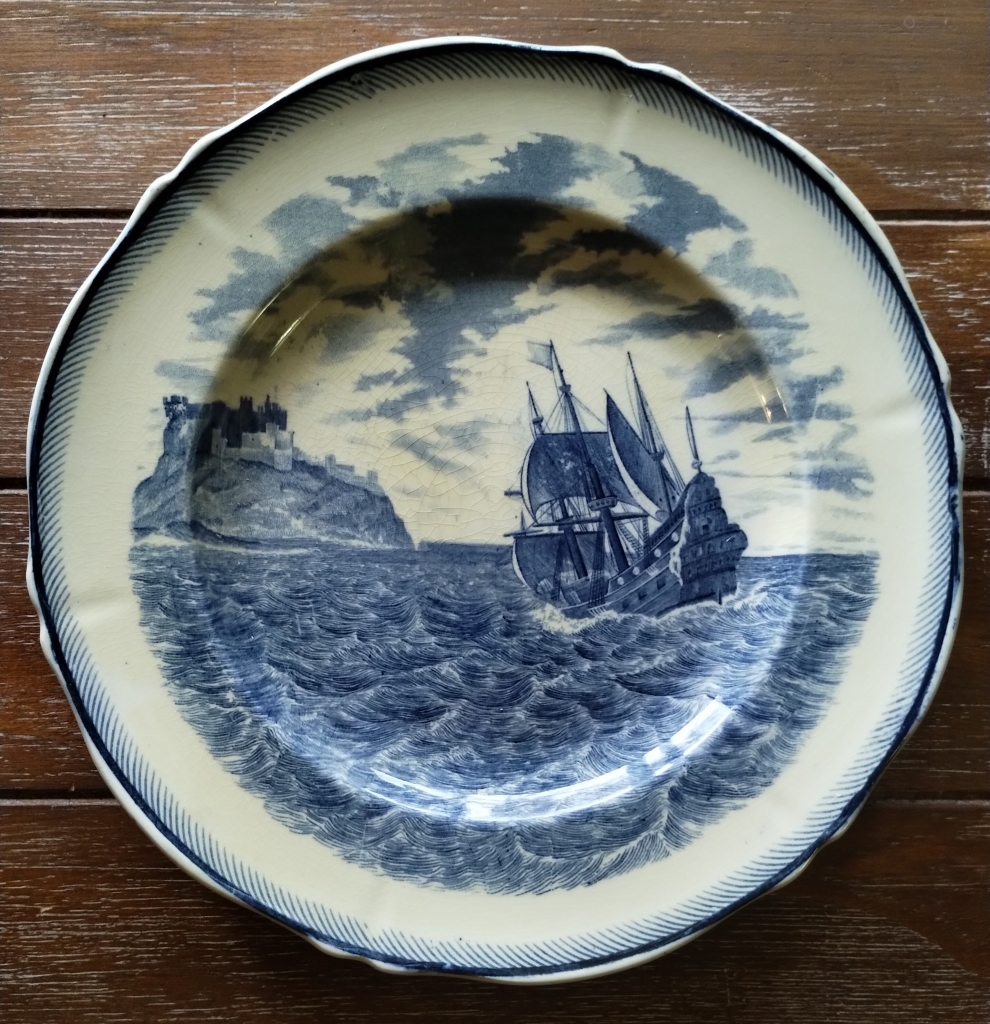

I almost forgot about several famous galleons, at least one of them an English one, all painted by N. C. Wyeth — perhaps Howard Pyle’s most famous student. All clearly evoke Pyle’s galleon. Homages from student to teacher, without doubt.



I cannot decide if the Cinco Llagas aka Arabella of the 1935 Captain Blood was inspired by Pyle’s painting or not. Without doubt the designers were familiar with Pyle’s galleon, although technically the Arabella is a frigate.

Likewise the Wicked Wench, which was clearly inspired by the Arabella, as I’ve discussed here.

Even so, the galleon — surely the Arabella! — in this 1935-1936 Spanish poster for Captain Blood (Warner Bros., 1935) was copied from or inspired by Pyle’s famous galleon. And appropriately so, given Pyle’s overwhelming influence on pirate films of the era. Note that the forecastle appears to have been appropriated from any of many N. C. Wyeth Elizabethan galleons, or even earlier galleons.
The stern of the Spanish galleon in The Spanish Main (1944) starring Paul Henreid and Maureen O’Hara may well have been influenced by Pyle’s painting, in particular the ascending pointed carved decoration at the top of the stern transom. Compare with that of the Urca de Lima in the television series Black Sails later in the post.
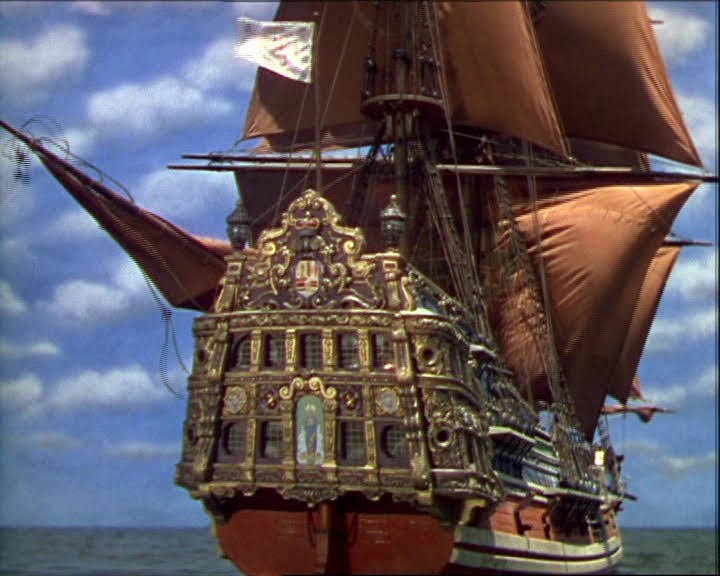
Famous science fiction and fantasy illustrator Frank Frazetta honored Howard Pyle with an homage to his famous galleon.

N. C. Wyeth’s grandson, Jamie Wyeth, a famous and outstanding painter in his own right and son of iconic artist Andrew Wyeth, did the artwork for the plate below, a clear homage to both his grandfather and to the man who taught his father, Howard Pyle. In this case it is a “pirate galleon” — clearly a Spanish galleon fallen into the hands of buccaneers per classic trope. (N. B. Buccaneers didn’t fly the black flag with skull and bones, although at least one crew did fly the red banner of no quarter with skull and bones. But it’s the image that counts in storytelling, and we’ve come to expect the black flag on all pirate ships of all eras. See The Golden Age of Piracy for more details.)


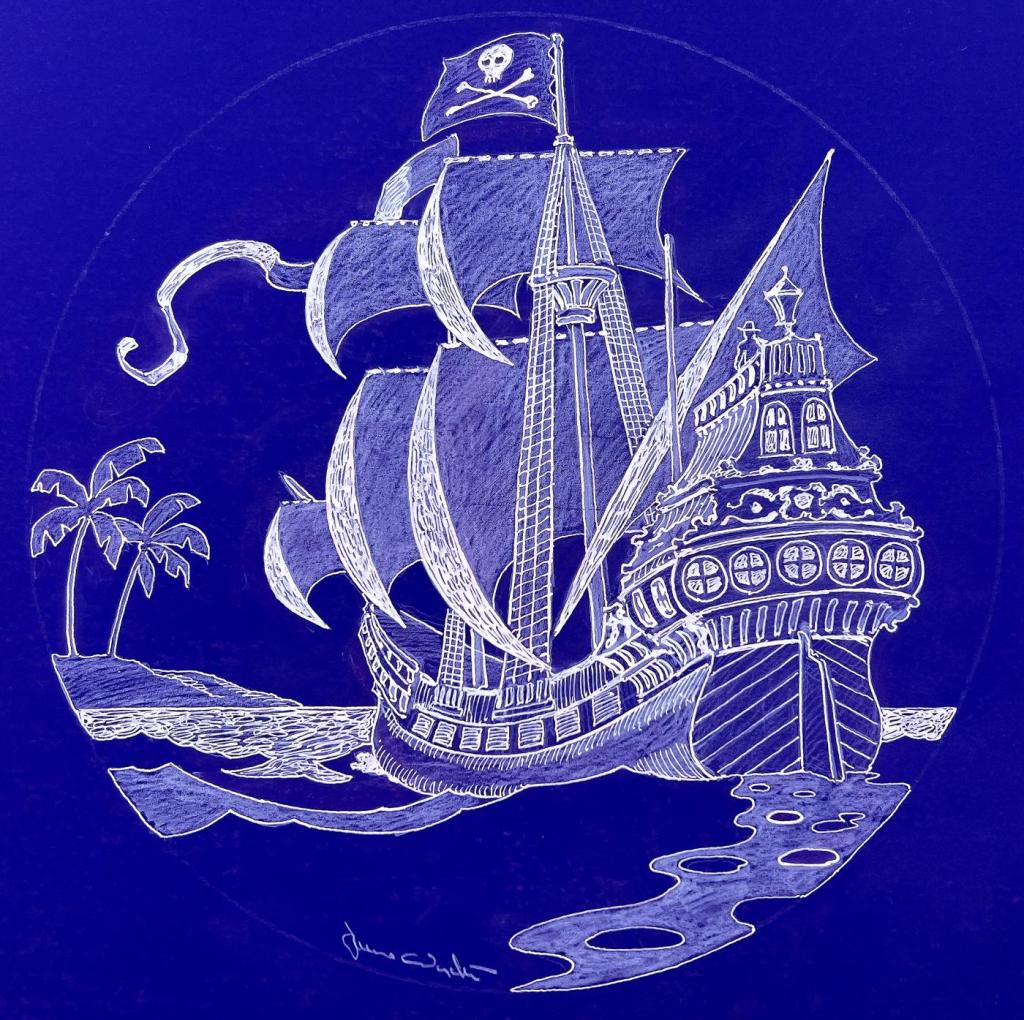
Almost certainly the “galleons” (they appear to be manned with English marines) below, especially the one of the left, in this art by cartoonist François Ruyer for a puzzle is an homage to Pyle’s famous painting, with their excessive height and pirates attempting to board one of them via boat. Even the sky color evokes Pyle’s painting.

Likewise an earlier image by Jean-Jacques Loup for Heye, “Captain Flint’s Party,” for a puzzle evokes galleon sterns reaching for the moon, so to speak:
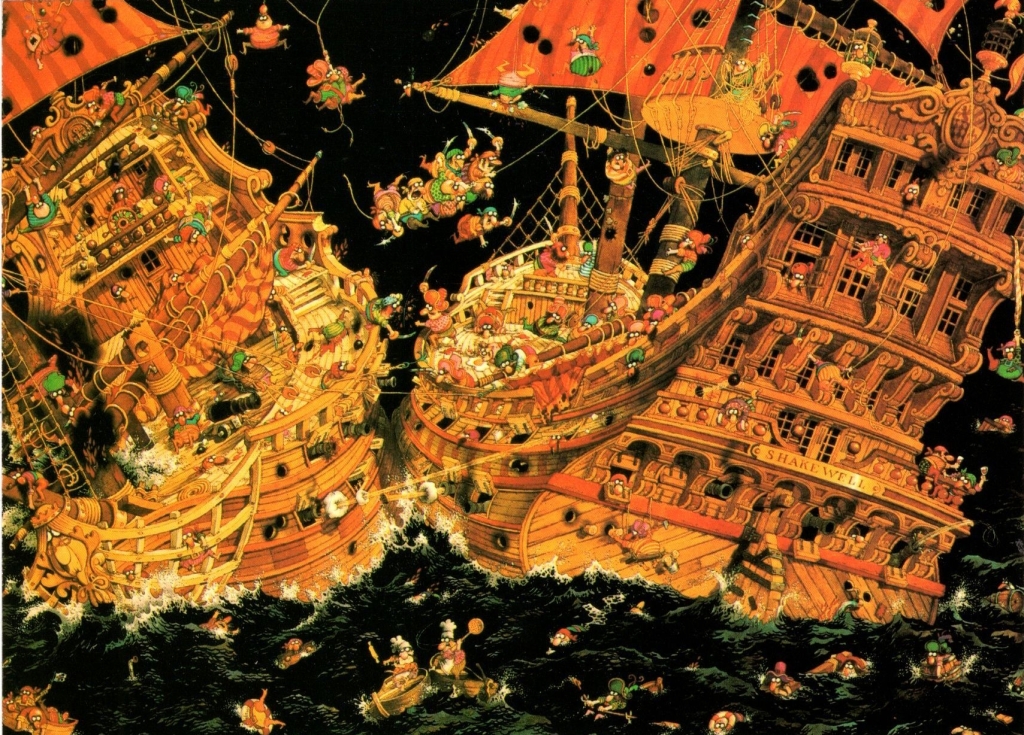
It’s entirely possible that Pyle’s galleon even influenced the design of the Urca de Lima in the Starz dramatic series Black Sails, shown below. (Compare also to the galleon used in The Spanish Main above.) Although I was the historical consultant for all four seasons, I don’t know this for certain as I had no input into sets, including ship design, unfortunately — otherwise the ships might have been more historically accurate. Some of them in reality would not have been seaworthy.
And on a nitpicking the note, urca is the Spanish word for a type of ship originally designed by the Dutch but in use by all Western European seagoing nations. It was known as a fluyt, flute, flutte, or, in English, a pink. It had a rounded stern, not a flat one as the television galleon has, and a very small narrow transom (which might have provided some additional excuse for Pyle’s very narrow upper section of the transom for his Spanish galleon, even though it’s not an urca). In other words, the Black Sails galleon should be an urca instead. It bears noting that an urca is NOT a galleon — yet one might be referred to colloquially as a Spanish galleon if carrying Spanish treasure…

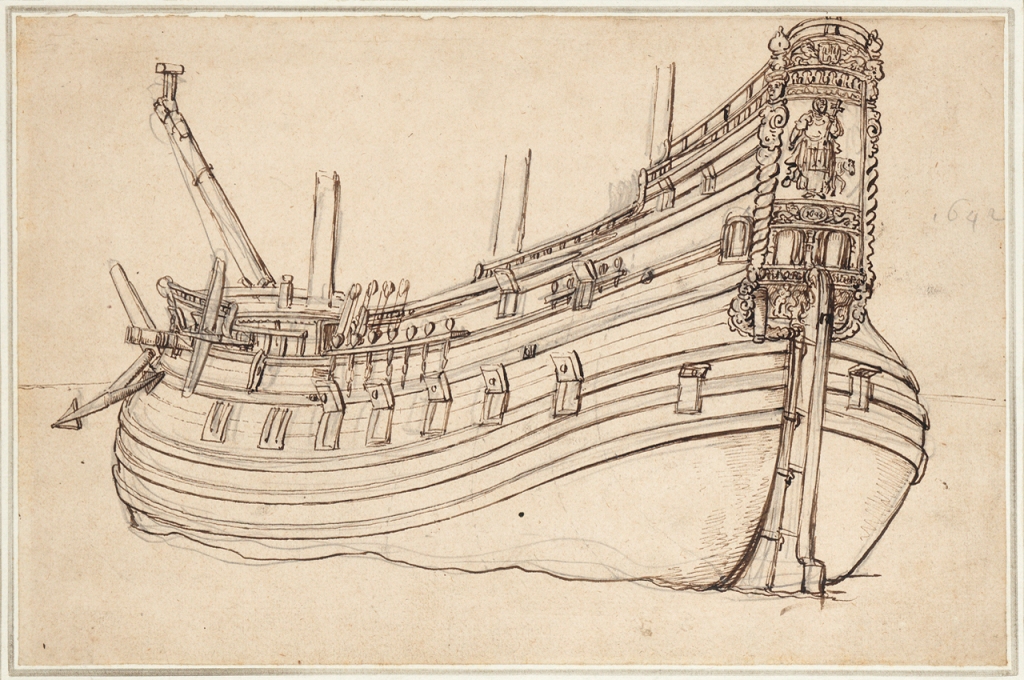
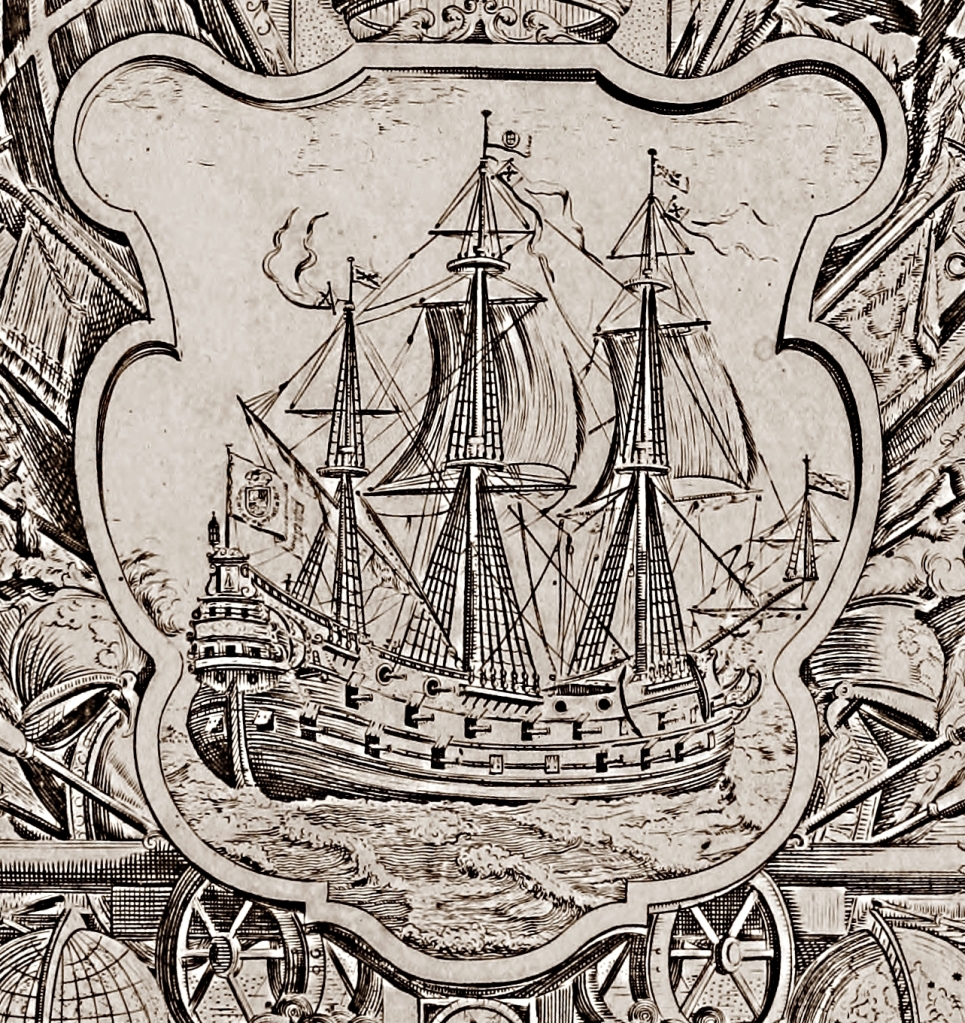
But I digress a bit under the influence of historical accuracy! Even so, this brings us to a good subject: what did Spanish galleons and their sterns actually look like from 1650 to 1700?
Spanish Galleons 1650 to 1700
For the first forty years or so of the 17th century, the large or main transom of Spanish galleons was typically “stepped” (in layman’s language), with the upper part or parts overhanging the lower, rather than flat as soon would be the case. The Spanish galleon Santa Teresa, shown in the three images below, is a good example of this style of very common early 17th century Spanish sterns.


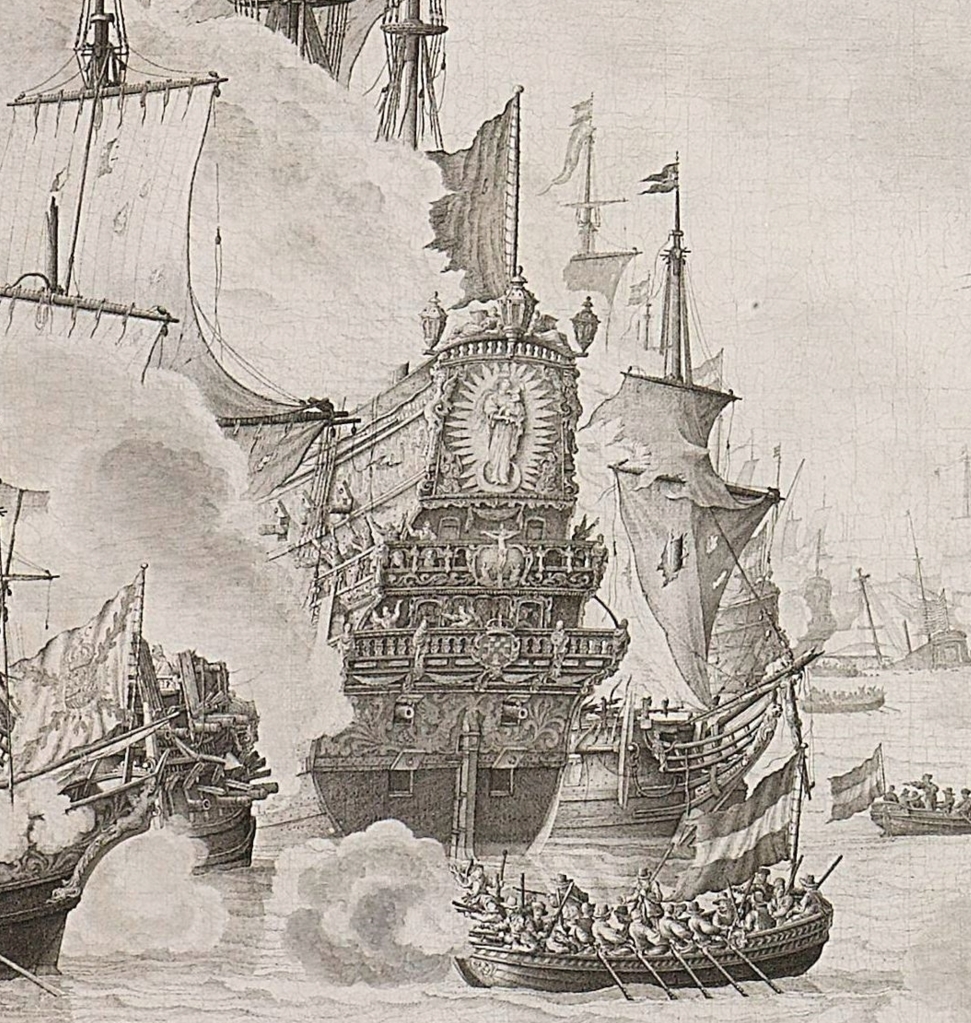
The “Vista de Sevilla” (“View of Seville”), circa 1660, artist unknown, gives us a good view of the sterns of Spanish galleons with enclosed galleries, and the changes that came mid-century. The sterns, although still very high, all now appear “modern” in the sense that the double transom, the upper overhanging the lower, has disappeared.



Below is an illustration of “The Spanish fleet sailing from Havana in 1662.” However, neither the Flota de Nueve Espana nor the Flota y Armada de Tierra Firme sailed from Havana in 1662, nor was it likely that either fleet was there at any time that year. More likely, the year was 1661 or 1663. Note the very high sterns of the two larger ships.
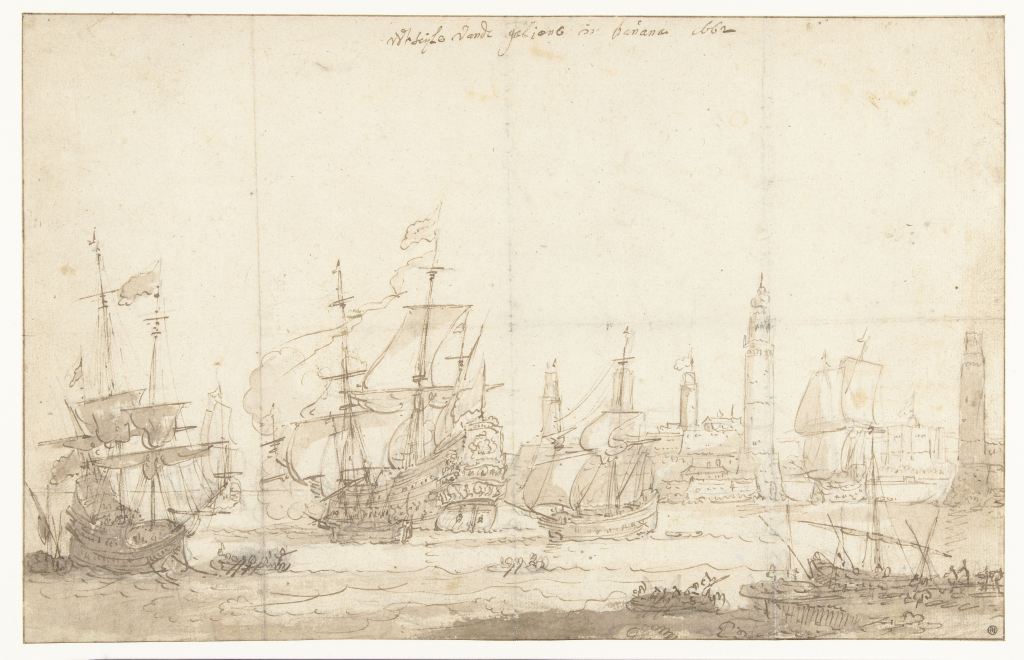
Below is an unidentified Spanish two-decker man-of-war dating to the 1660s. Although a frigate rather than a true galleon, the ship shows many of characteristics of Spanish galleons, and men-of-war as shown below often carried Spanish treasure and escorted treasure ships, earning them the appellation of galleon even if incorrect. Note the high stern, the religious iconography, the clinker planking on the upper-works, the channels mounted above the upper gundeck ports, the musketeer loopholes in the waist (identical to Dutch practice), the jeer capstan on the forecastle, and the two open wraparound external galleries, known as corredores, typical of Spanish treasure ships although not always to be found.

Another Spanish man-of-war stern, 1660s, with two open stern galleries that wrap around the hull.

Below are three very similar versions of the galleon Nuestra Señora del Mar, San José y San Francisco, showing details of her shipwreck in the Bermuda Islands in 1691. The ship was launched in Pasajes, Spain in 1681. Of 862.5 Spanish tons (toneladas), she was mounted with only 29 guns, a not uncommon practice for a large Spanish galleon, for much of her space was taken up with cargo. Note the color scheme, the style of painted decoration, the painted scroll-work on the upper-works, and three open external galleries. Each was, per Spanish period references, probably only thirty-three inches deep. The uppermost is at the level of the poop deck or even the poop royal if there is one.



Below, a Spanish galleon with three open stern galleries, flying the royal colors, enters Havana harbor in the second half of the 17th century, probably 1660s to 1680s.

However, in spite of our romance with the open-gallery, high stern Spanish galleon, many did have the open galleries, but had closed galleries, or later, semi-closed, as seen just below in this Spanish galleon at Portobello, 1688.
As noted previously, ships of other nations were sometimes referred to as galleons in the second half of the 17th century, including some of those of Portugal (also occasionally still referred to as carracks as well), Venice, Genoa, and the Ottoman Empire (colloquially referred to as “Turkish” galleons).
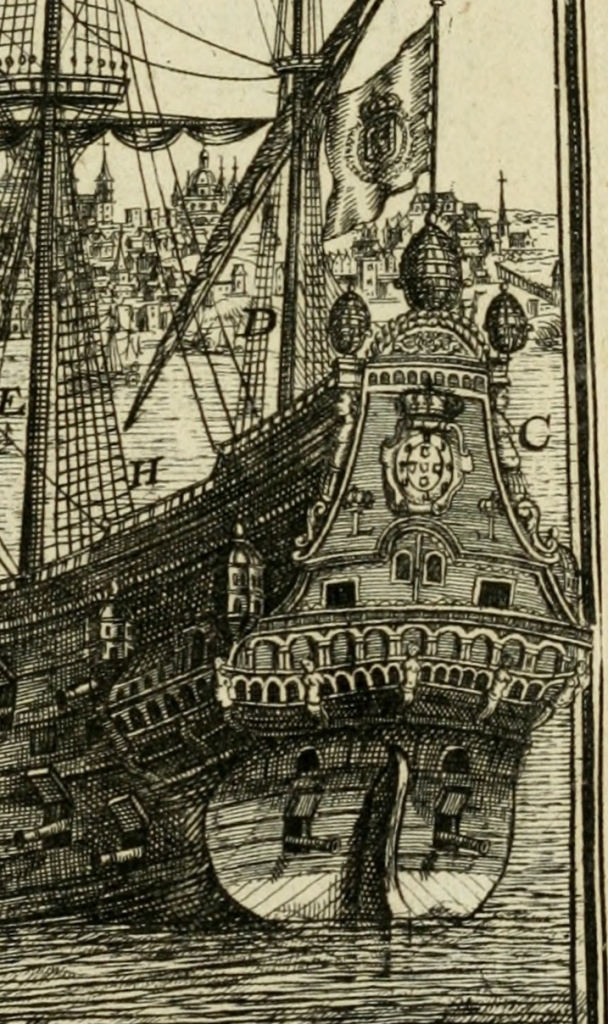
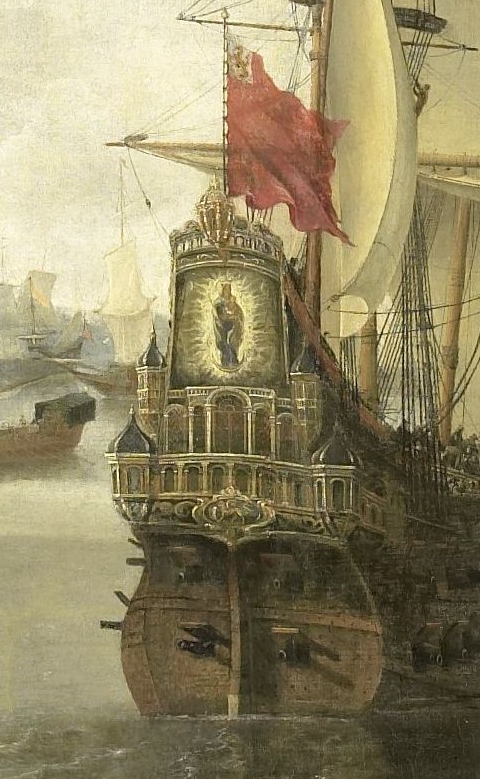
The 1680s brought on changes in Spanish shipbuilding, including in its men-of-war and in its remaining true galleons. Although the latter often still had high sterns, they were soon reduced, more in keeping with European construction in general. And although galleons or treasure ships with multiple open, wraparound galleries or corredores were still seen, the enclosed gallery became much more common.
Below are Spanish treasure ships at anchor at Portobello in 1683. The multiple galleries and high sterns are clearly still evident.
The same treasure ships, or at least ships of the same fleet, at anchor in Portobello in 1682, as drawn by a different artist :
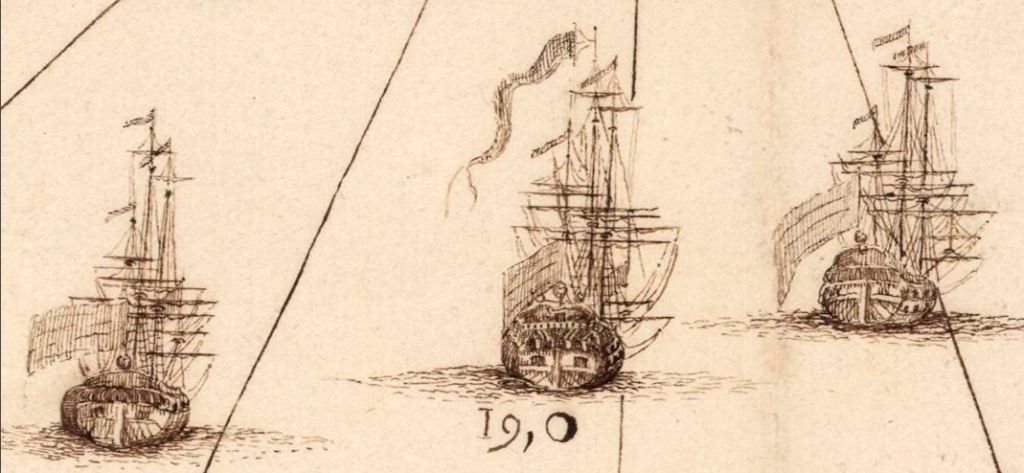
But the changes are coming. Below is a 1685 Spanish stern showing multiple external galleries, but without wrapping around the hull.

Spanish men-of-war, which often escorted treasure ships, and even carried treasure themselves, were changing, their designs becoming sleeker and more in line with other European navies.


Below is one of a series of proposed Spanish men-of-war, 1691. Although never built, they reflect the new trends in Spanish ship design, including lower sterns and a semi-closed single stern gallery.

Even the last Spanish treasure galleons to be built had similar features. Below is the stern of what scholars generally believe to be the famous San Jose, launched in 1698 and sunk at Cartagena by Wager’s fleet in 1708, with a treasure aboard estimated by some to be worth as much as 17 billion dollars US today. Compare this drawing with Scott’s painting above of Wager’s action against the San Jose.

With the accession of a Frenchman to the Spanish throne in the early 18th century, over which the War of the Spanish Succession had been fought, Spanish ship design became more contemporary with that of other European sea powers. Gone was the conservatism that too often hindered Spanish shipbuilding. Below is a Spanish treasure ship of the new style. It has a projecting gallery that wraps around the stern (not all Spanish treasure ships and men-of-war had this), with a shade built overhead for the section of the gallery at the transom:
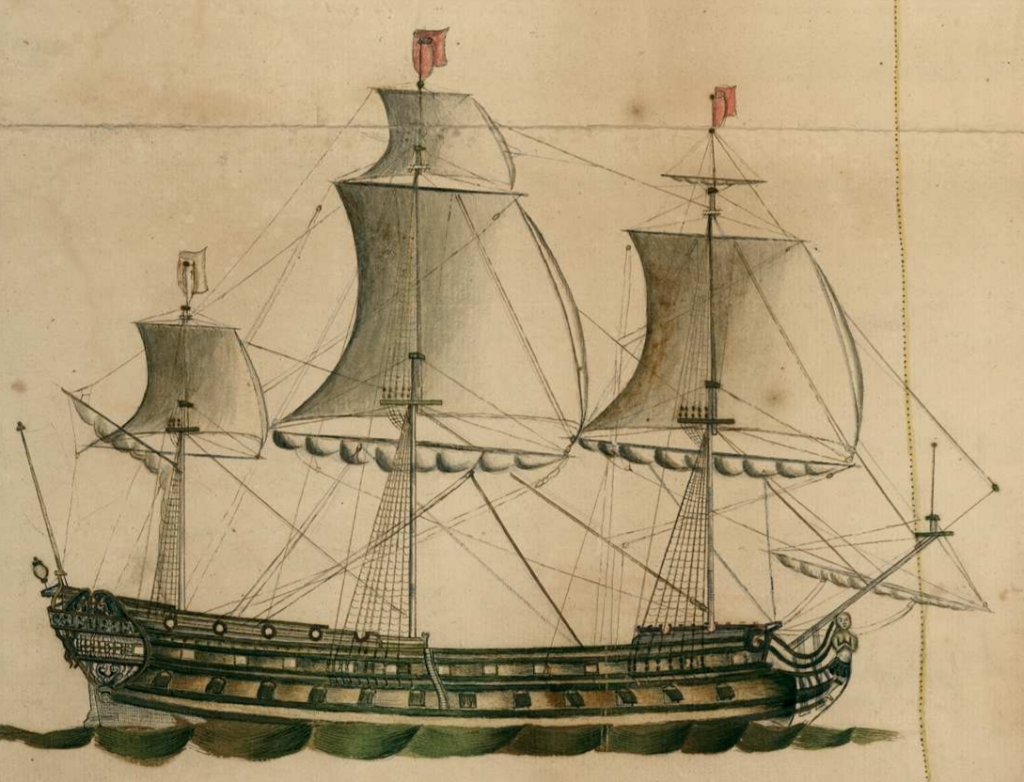
A closer look at these Spanish sterns in the first half of the 18th century. The stern gallery still wraps around the hull.

A simple pen and ink view of a Spanish man-of-war with what appear to be two projecting, probably wraparound, galleries, from a Spanish chart of Isla Vieques off the coast of Puerto Rico, 1721:
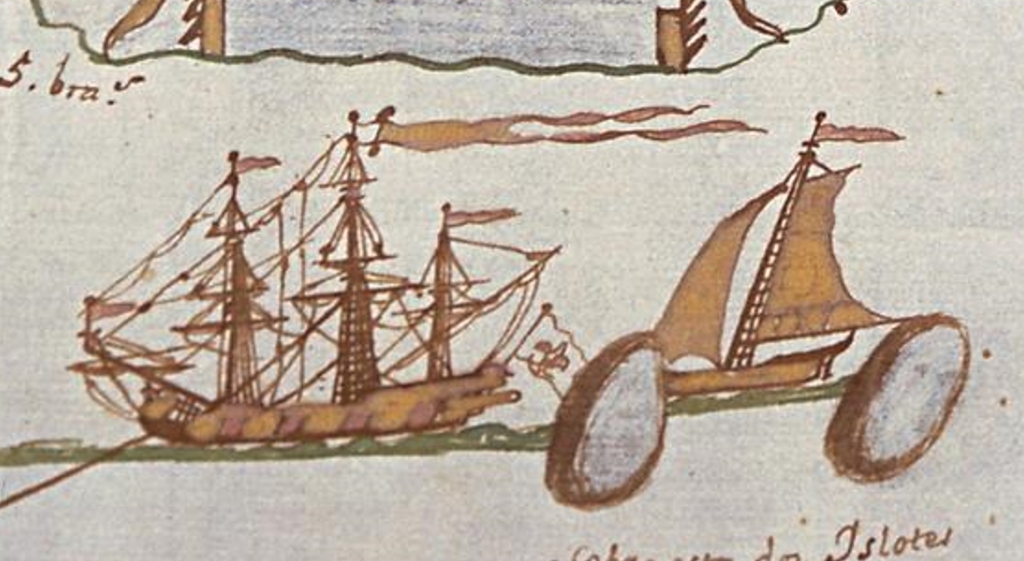
Design changes notwithstanding, the high-sterned Spanish treasure ship was in use into the first quarter of the 18th century. I’ve already mentioned Woodes Rogers’s description of one in the South Sea. Below is a depiction of a Spanish treasure ship by Gueroult du Pas in 1710.

And it is these high-sterned Spanish galleons that always have captured our imagination, and continue to do so. Howard Pyle’s famous treasure galleon has helped to keep that imagination not only alive but enhanced. Even the romantically evocative dust jacket below must have been influenced by his famous galleon, with its high stern and colors of sunset or sunrise!

In fact, these iconic images of Spanish galleons from fiction, film, and more aren’t far off from those created by eyewitnesses in the 17th century, including these found on a Spanish 1669 chart of Cartagena de Indias!

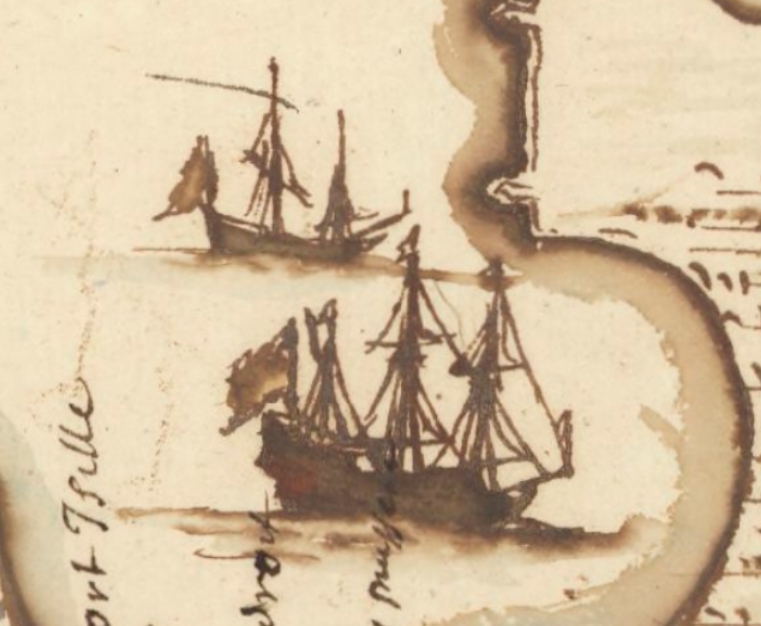
Details from “Cartaxena con 46 piésas,” 1669, courtesy of the French National Library.
Copyright Benerson Little 2024. First posted March 27, 2024. Last updated April 25, 2024.
“Dreams of Glory” — Captain Blood! (Updated!)
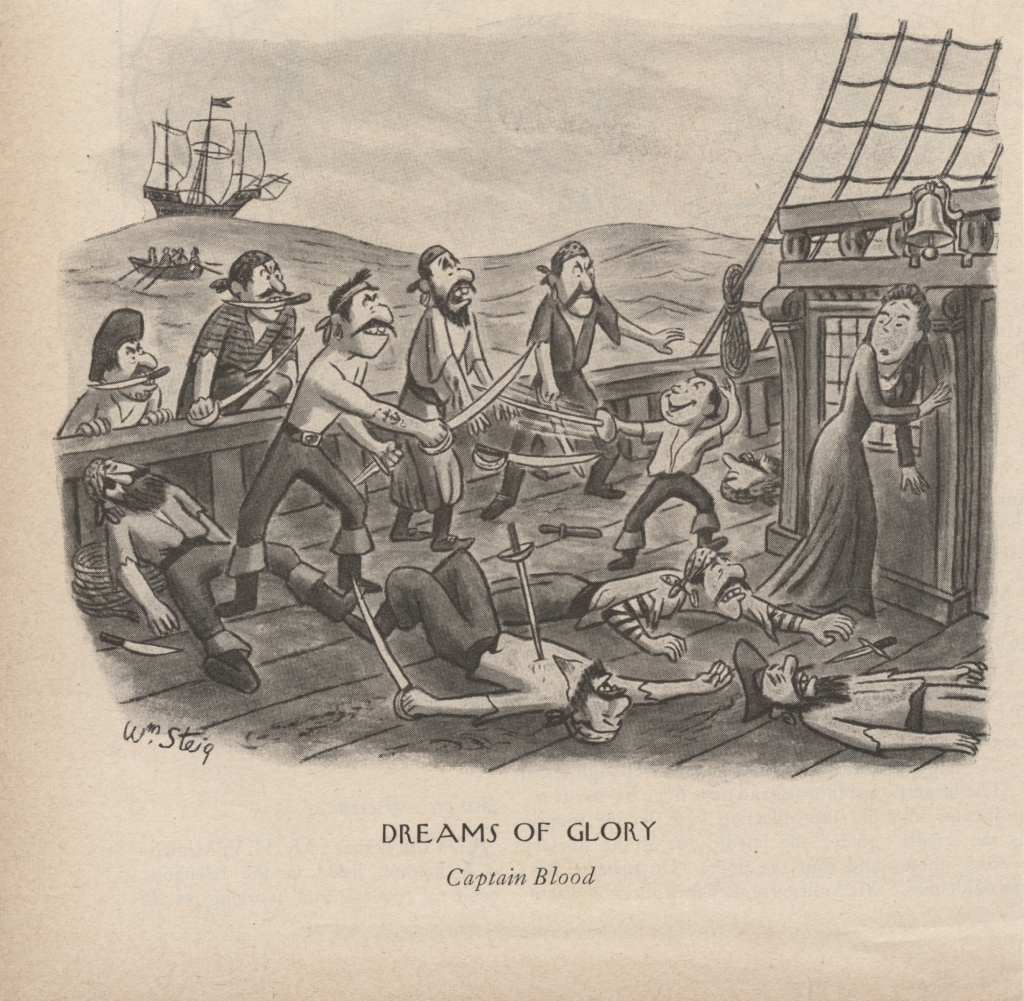
I’ve seen myself in comics before — Calvin & Hobbes, Bloom County, Peanuts, Shoe, Hagar the Horrible, Popeye, and even in an imagined sense in Buz Sawyer, Prince Valiant, and The Phantom — but never so closely as in the image above. This is my dream of glory as a child! And likewise many friends and acquaintances of mine, particularly those who’ve lived lives of real or armchair swashbuckling from childhood onward.
The comic was drawn by William Steig, best-known today for Shrek. However, he drew a series of “Dreams of Glory” comics in the 1940s and 50s (I hope I have the dates correct) for various upscale magazines, primarily The New Yorker. Most if not all of the comics were published in a single volume in 1953.
I’ve updated this…
View original post 275 more words
“Captain Blood” on Halloween!

A vampire — surely Lugosi himself! — riff on Captain Blood, with a Moby Dick reference no less, by friend and arms historian Jim McDougall. 🙂
Is the ship the Arabella, the Pequod, or the Demeter? 🙂
Comic copyright by Jim McDougall, 2021-2022. Blog copyright Benerson Little 2022. First posted October 17, 2021.
“The Buccaneer Was a Picturesque Fellow” by Howard Pyle

And indeed he was a picturesque — and picaresque! — fellow, the buccaneer! Howard Pyle’s painting of this romantic sea rover has influenced the imaginations of half a dozen generations of readers, writers, illustrators, costume designers, film-makers, and game designers. Currently on view at the Delaware Art Museum, the painting was one of four created for an article, “The Fate of a Treasure Town,” also by Pyle, published in Harper’s Monthly Magazine, December 1905.
In fact, the paintings accompanying the article are some of Pyle’s most famous buccaneer and pirate images. In addition to the picturesque buccaneer, there is “An Attack on a Galleon,” “Extorting Tribute from the Citizens” (used as the cover of The Buccaneer’s Realm, for what it’s worth), and “So the Treasure Was Divided.” Of the most famous paintings of his buccaneer, as opposed to pirate, series, only “Which Shall be Captain?” for “The Buccaneers” by Don C. Seitz, in Harper’s Monthly Magazine, January 1911, and “How the Buccaneers Kept Christmas,” Harper’s Weekly, December 16, 1899, are missing. (High resolution images are available on Wikimedia Commons.)

Pyle’s article opens with romantic tropical buccaneering scene-setting, then shifts in detail to the sack of Cartagena de Indias in 1697, a privately-funded French privateering expedition that was composed of hired ships and troops of the French navy and army, with a large body of French buccaneers and Caribbean militia in support. The Baron de Pointis, commander of the expedition, swindled the buccaneers out of their agreed share, so they returned and extored more treasure from the citizenry. Pyle’s painting, “Extorting Tribute from the Citizens,” shows buccaneers actively engaged in this pursuit. (On a side note, the painting was used for the dust jacket of The Buccaneer’s Realm, my second book.)
But few people have actually the read the article or even know about the sack of Cartagena de Indias, and it’s the images themselves that have caught our imagination. In particular, film-makers, illustrators, and Disney have borrowed heavily from the paintings: from The Black Pirate of Douglas Fairbanks and the Captain Blood of Michael Curtiz, to Disney’s Pirates of the Caribbean attraction and films, to the sea rover art of Don Maitz, Pyle’s influence is impossible to deny.

From a historical standpoint, the paintings are far more evocative than accurate, although clearly Pyle attempted to get historical details correct. But this wasn’t easy. He had to interpret written descriptions and also — the bane of truth-seeking historians and researchers everywhere! — appeal to popular tropes as well. For popular works, some degree to catering to popular expectations is considered mandatory, or so I’ve been advised (and immediately resisted, bound by nature to do my best to keep within the limits of fact and fact-finding, at least as much as possible).
For Pyle, it was not the buccaneer or pirate’s sea roving escapades that made him appealing: “It is not because of his life adventures and daring that I admire this one of my favorite heroes; nor is it because of blowing winds nor blue ocean nor palmy islands which he knew so well; nor is it because of gold he spent nor treasure he hid. He was a man who knew his own mind and what he wanted.”
He conveyed this well with his picaresque — sorry, picturesque — buccaneer even if it appears that the young man evokes a purely romantic image of a sea roving adventurer rather than a real one.

Let’s take a quick look at his arms, accoutrements, and clothing and compare them to the historical. We’ll begin with his hat. Spotting the red ball tassels, we assume the hat is intended to evoke Spain — it’s the somewhat tropish hat of a Spanish flamenco dancer or mounted matador. Perhaps the buccaneer captured it, or, I think more likely, the buccaneer is in fact a Spaniard, a mestizo perhaps. We know that there were Spanish renegados among the buccaneers. Let’s keep this in mind as we look at the rest of him.
He’s wearing two gold earrings — small simple hoops. Most European-derived buccaneers did not wear earrings, with the occasional exceptions of the Dutch (single pearl, single ear) and fops (single pearl, single ear). However, all too often our impression of pirates is influenced by our ethnocentrism: some Africans, Native Americans, mulattos, and mestizos in the Americas did in fact wear earrings. Pyle probably added earrings as part of the expected pirate cliché, but to my mind, the earrings, considered historically, are more evidence that this buccaneer is a Spanish mestizo renegade, as is the perhaps fanciful bracelet on his wrist. His dark hair and olive skin — also “Spanish” clichés — are to me more evidence of his Hispano-American origin.

He has a red cloak over his shoulders, but would a buccaneer wear one? Probably not in the daytime, given the highs in the upper 80s and lows in the upper 70s year-round in Cartagena de Indias, although in some areas of the Caribbean cloaks, jackets, blankets, “ruggs,” &c were worn or used, typically at night. That said, a 1680s image, if not eyewitness then at least based on eyewitness descriptions does show a Spanish pirate or privateer with a cloak! More on this below.
Further, French priest and eyewitness Jean-Baptiste Labat described the admiral of the Armada de Barlovento in the Caribbean as wearing a cloak, but he was an old man and perhaps needed the cloak to keep his old bones warm at sea. And Spaniards wearing them are depicted in period images of New Spain, see the last image below for example. Perhaps, as with the Spaniard’s ruff which was often added historically as a satirical symbol — Spaniards no longer wore ruffs –, Pyle added the buccaneer’s cloak as a mere symbol of dress to indicate that the man is a Spaniard. This isn’t the first time Pyle put a cloak on a buccaneer: he also did so in his painting, “How the Buccaneers Kept Christmas,” Harper’s Weekly, December 16, 1899.
His “musket” is a bit of an anachronism: it is a Jaeger or Jaeger-type hunting rifle. Developed in the late 17th century in the region later to become known as Germany, there is no indication they were ever used by buccaneers. These Caribbean sea rovers used the long fusil boucanier, especially among the French, and various other muskets at times. However, there are instances of carbines (Sp. carabinas) in use on occasion at sea and ashore, and we will assume this is what Pyle meant to represent. His pistol could represent any number of sea pistols in use at the time, and is close to their common size. Its lock is indeterminate, but it hints of a Spanish Miquelet style.

His rapier, or possibly broadsword, is a shell-hilt, of what could be a Spanish-style doble concha, although the true cup-hilt (taza) was far more common. All or nearly all English, French, and Dutch buccaneers carried cutlasses, although there are documented indications of a few exceptions for smallswords and broadswords. However, the rapier — espada ropera — was still in common use in Spain, Portugal, and Spanish-governed parts of Italy at the time, not only among gentlemen (and most Spaniards considered themselves gentlemen!), but also among soldiers and almost surely among some seamen and artilleros. In fact, the eyewitness, or nearly so, image below of a Spanish privateer or pirate from the 1680s shows him wearing a Spanish rapier. Curved quillons were uncommon on Spanish swords of the era, although they did begin to show up on some at the end of the 17th century. Again, although for Pyle the rapier may have been a necessary trope, historically it would point the buccaneer being a Spaniard, Portuguese, Italian, or Corsican.
His sash is a bit wide, at least from what eyewitness images suggest, but his belt is correctly worn over it. The pouch or box on his right may be a cartouche box worn on a strap in a rather un-buccaneer style. His breeches, buttoned at the sides, are quite typical of those shown worn by Spaniards in the era, although Pyle may have depicted this style to evoke the swashbuckler or pirate as he did in other paintings, “I Had Met My Equal” for example.
And last, his sandals: most buccaneers, according to eyewitness descriptions and images, wore conventional shoes, or boucanier shoes made from skin pulled from the hocks of hogs (see here for details), or went barefoot, at least among the poorest sort. However, as noted not all buccaneers were English, French, or Dutch. Some were Spanish renegades, including Spanish Native Americans and mestizos, and we know that some of both groups wore sandals at the time.
The image below was drawn by a French engineer in the 1680s, almost certainly based on local eyewitness accounts of French pirates or privateers who attacked Nipe on Saint-Domingue (modern Haiti). There is no chance Pyle ever saw this image, yet his picturesque buccaneer evokes it well! The Spaniard is even wearing a cloak! Many Spanish pirates and privateers — most, some eyewitnesses noted — were men of color: Native Americans, mestizos, Africans, and mulattos. Is this what Pyle intended, a Spanish or mestizo renegade buccaneer? I can’t be entirely certain, but the evidence and my gut assure it is.
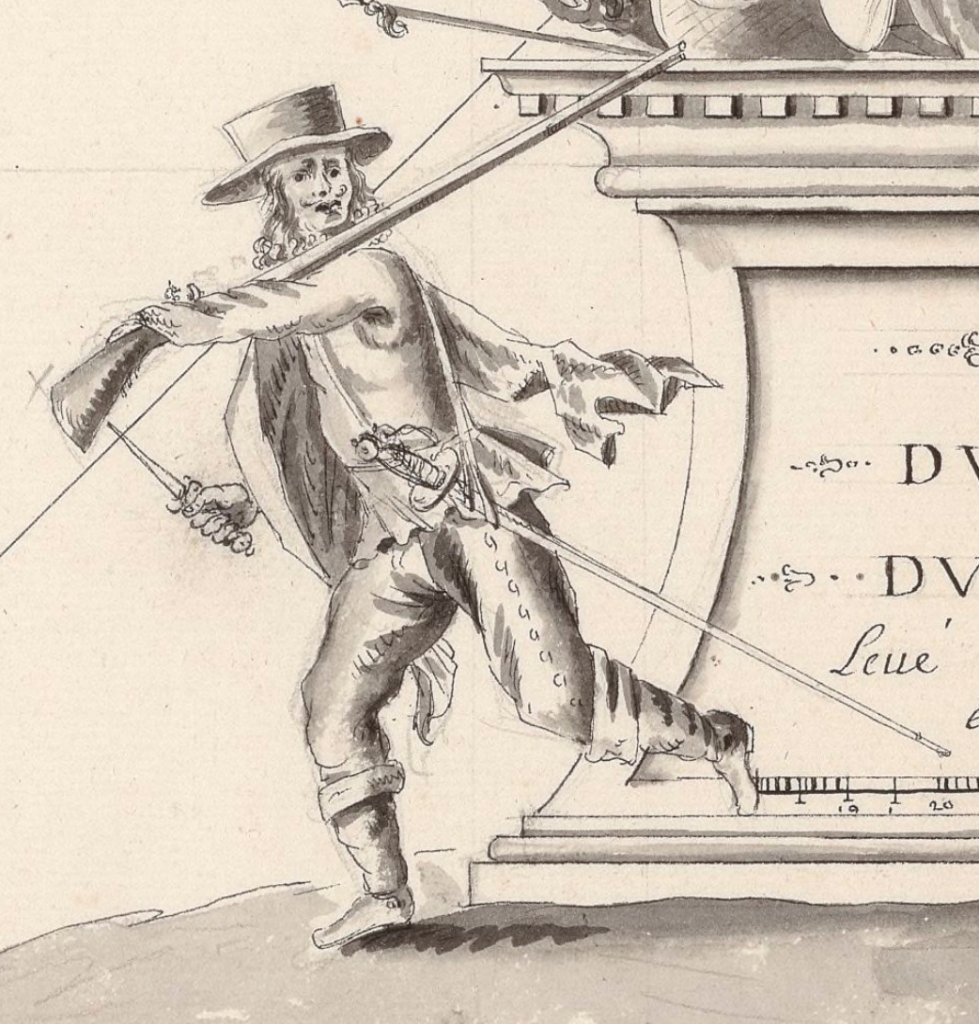
Bookends, Bookcovers, & More…
The painting has inspired a variety of objects and art, ranging from bookends to bookcovers to game miniatures. The bronze-clad bookend below, “Pirate’s Den” by Peter Manfredi (1930) for the Pompeian Bronze Co., is a three dimensional copy of Pyle’s painting. This example is one of two variants; the other has part of the background removed.
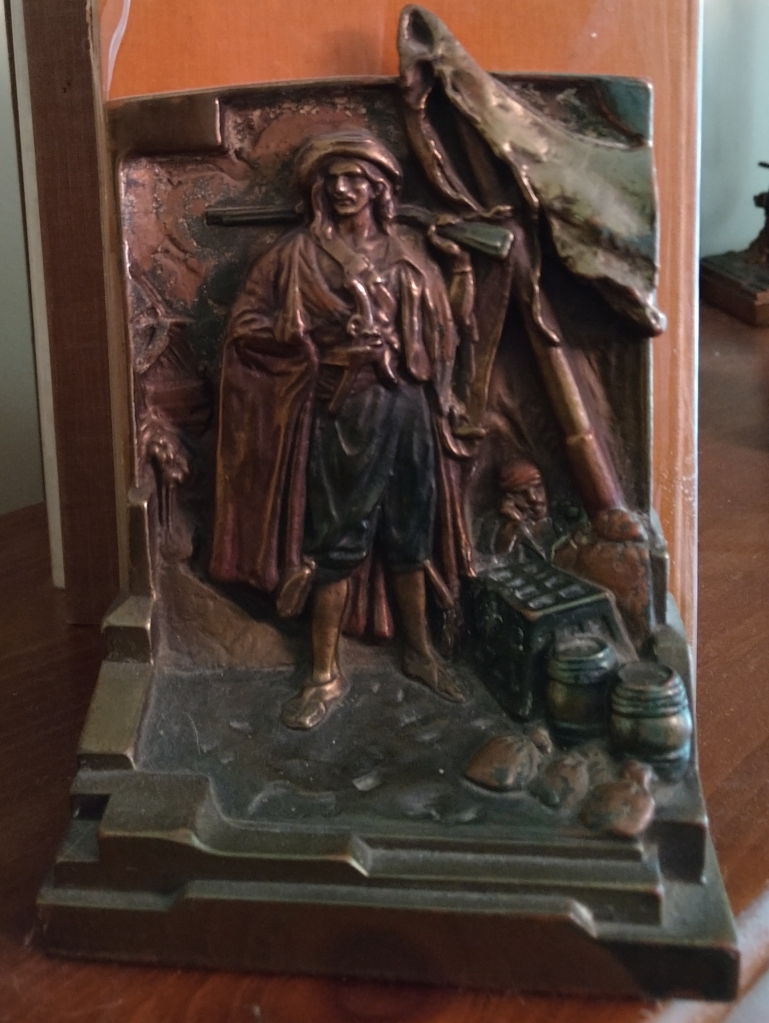
The Pompeian statuette bookend below, “Buccaneer” by Peter Manfredi (1930), was clearly inspired by Pyle’s painting. On the left is “Miss Pirate” by the same sculptor and year for Pompeian Bronze Co., Brooklyn.

In The Black Swan (20th Century-Fox, 1942), only loosely based on Rafael Sabatini’s novel of the same name, Tyrone Power’s costume is clearly based on, and probably an homage to, Pyle’s famous painting. The hat with tassels hanging from it, the cape, the sash, the rapier, are all clearly intended to evoke Pyle’s picturesque buccaneer.

The image has been used often on the covers of trade paper editions of Captain Blood: His Odyssey by Rafael Sabatini. The one below is published by the Naval Institute Press. Pyle’s painting doesn’t evoke the urbane and sedulous Captain Peter Blood, but it does evoke the buccaneers he led. In fact, part of the novel takes place during the sack of Cartagena de Indias, although Sabatini moves the attack on the beautiful city up in time.
The painting inspired the cover of a mass market edition of Cup of Gold by John Steinbeck, a fictional, and quite literary, account of famed buccaneer Henry Morgan.
CrossGen published a series of six comic books 2003-2004 by Chuck Dixon, Steve Epting, and Frank D’Armata featuring a Spanish female pirate hunting captain, Donessa Cinzia Elena Marie Esperanza Diego-Luis Hidalgo (seriously!). Captured by buccaneers in 1687, she turns them into pirate hunters to seek out and destroy their pirate lord in return for the location of a great treasure. Commanding El Cazador, she is known by her English and French crew as Lady Sin and Captain Sin. She appears on the cover of Issue 5 (March 2004) in an homage to Pyle’s Picturesque Buccaneer. My many thanks to Antón Viejo Alonso for reminding me of this comic book cover!
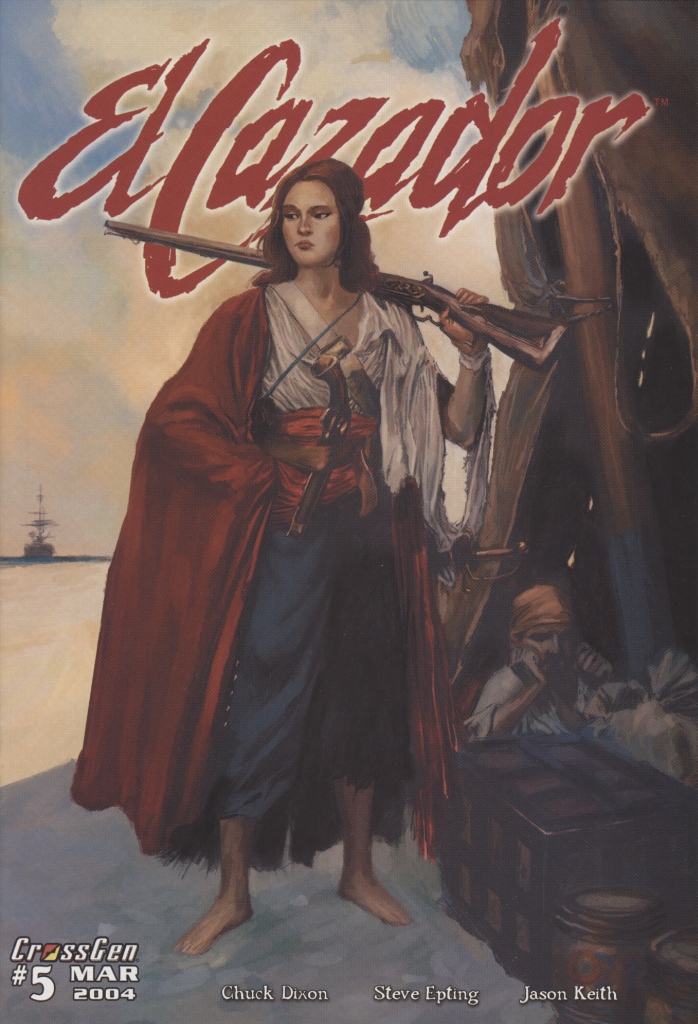
The Naxos re-release of these film music classics by the Brandenburg Philharmonic Orchestra uses the picturesque buccaneer on the “album” cover, albeit reversed. Good music too!
Firelock Games created a special edition figure as an homage to Howard Pyle for its popular (and quite historically accurate) Blood & Plunder tabletop wargame. (Full disclosure: I’ve done quite a bit of consulting for Firelock Games.)

Even produce growers, or at least one of them, have appropriated the swashbuckling image…
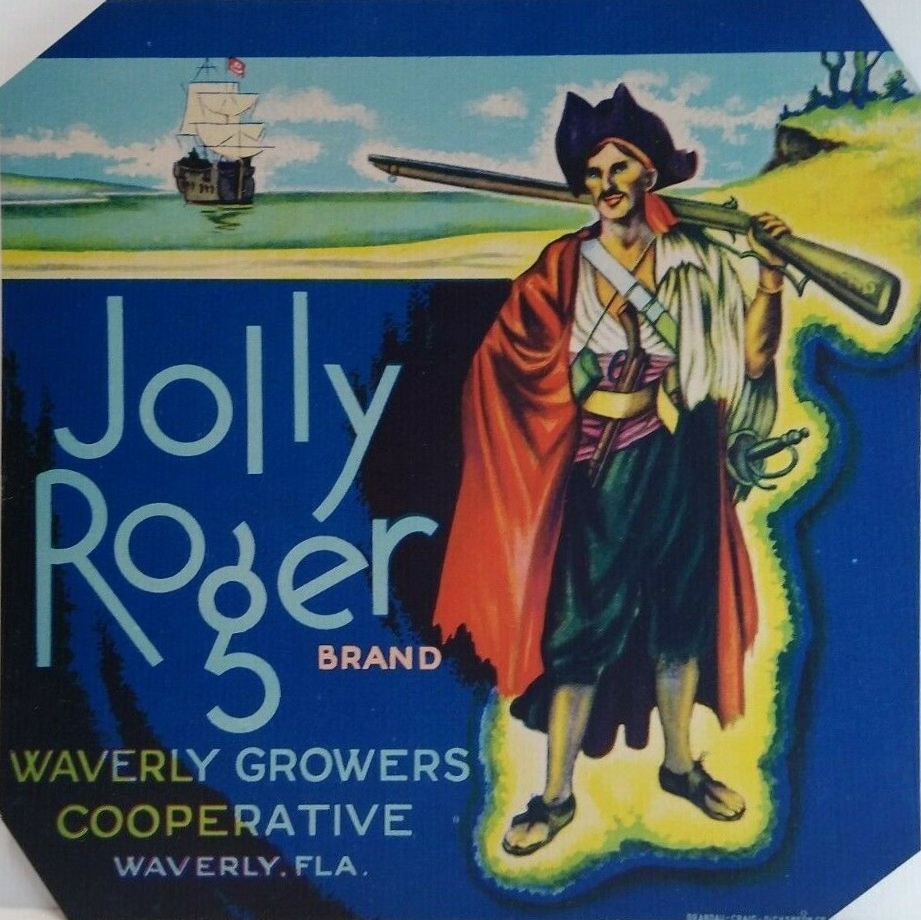
Perhaps the most significant homage to Pyle’s painting came from another great illustrator: Norman Rockwell. But Rockwell’s buccaneer is no longer the youthful adventurer with a touch of arrogance, but a tired grizzled veteran with torn cloak and shirt, a sash of a different color, a hat that has long lost its tassels, and a leg lost to a broadside, yet who keeps sailing the Main with his buccaneer brethren even as he begins to long for home. There are a few anachronisms, as there always are in such paintings: his pistol is of a later era, as is the cutlass that has replaced his rapier, and his boots are entirely fanciful and unhistorical — pirates didn’t wear any such footwear. But I find no real fault with such details. As I said, these are evocative, not historical images.
But I do find fault with the home Rockwell has the buccaneer dream of, for it evokes Olde England as N. C. Wyeth might have painted it — perhaps even the Admiral Benbow Inn! — and not Spanish America. I imagine our Spanish renegade buccaneer, young and old, longing instead for a place along the Spanish Main: Campeche or Veracruz, Havana or Matanzas, Puerto Bello or Maracaibo. Or perhaps he’s even from Spain! But no matter: he has chosen to sail with the hated buccaneers, and might never see his home or family again. But let us remember that these are only paintings, only part of the story: we might fill and finish the buccaneer’s tale as we please.
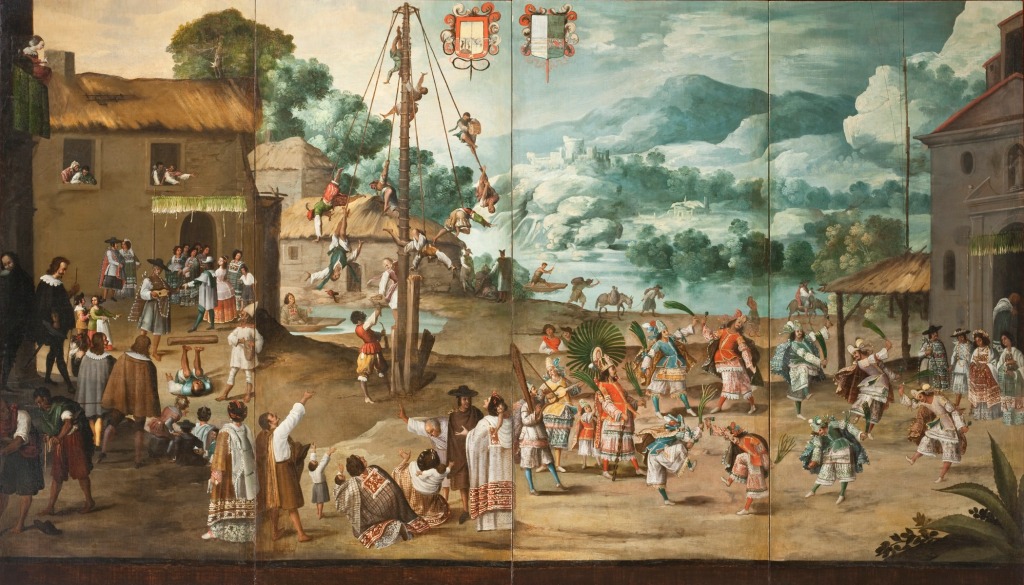
Copyright Benerson Little 2022. First posted August 17, 2022. Last modified March 6, 2023.
Creating that Ship-at-Sea Sensation While Armchair Adventuring: Some Progressively Tongue-in-Cheek Suggestions

A practical, yet certainly tongue-in-cheek, post about creating a buccaneering sensory environment while reading Captain Blood in your armchair, playing Blood & Plunder or Oak & Iron or a buccaneer board game with your friends, watching The Sea Hawk or any other classic sea roving swashbuckler, playing a piratical video game (Monkey Island, AC Black Flag, and Sea of Thieves come to mind, or Skull & Bones when it’s released), or finally finishing that 1:48 scale model of a 17th century Spanish pirate hunting frigate (perhaps even the Cinco Llagas!) you started a quarter century ago…
Pine Tar & Cordage!
If there’s any single smell that evokes seaman’s “heart thrice walled with oak and brass”* during the golden age of sail, it’s pine tar. It was one of the principal naval stores, critical in the age of wooden ships. Unlike turpentine which was drained from pine tree trunks by notching them serially and collecting the sap, both in liquid form and as hard rosin (pine resin), then boiling it, pine tar was derived by stacking sap-rich pine wood from old growth trees in great heaps, burning it, and collecting the tar as it drained from the bottom. Pitch is simply pine tar further distilled to make it thicker. Pitch was used to seal the seams between planking after paying them with oakum, &c.
Pine tar was thinned with turpentine to preserve running rigging; in thicker consistency for marline; and even thicker for standing rigging. It was also used, often heavily thinned with turpentine and mixed with linseed oil or tallow, or both, for treating the planking on ships’ sides.
Its smell is, to those like me who love it, entrancing. Nothing evokes the old wooden ships like it does! But to those who hate it, those for whom organic smells cause them to recoil in nasal horror, it is akin to the combined smell of rotting road kill and hot roofing tar.
There are several excellent methods for bringing these scents about:
1. The simplest by far is to buy a tin of real pine tar–you can order it online–and open it, or better yet, pour a little bit into a small container and leave it uncovered. It doesn’t take much to fill a room with the smell. Sniff deeply from the container every quarter hour. Or dip your fingers in it and sniff them every so often–then wipe well unless you want your book or miniatures to smell like pine tar too.
2. Learn sail-making by making a ditty bag. You’ll need tarred marline, its smell will linger for months. Keep the bag nearby. When the marline eventually dries out, refresh it with a mixture of pine tar and turpentine.
3. Buy a ball of tarred marline, keep it in a plastic container so it doesn’t dry out over time, open it up as required for the salty tar smell. You’ll need it anyway for suggestion #2 above.
4. Bathe with pine tar soap. There are several on the market, Grandpa’s is highly recommended by many a tall ship sailor. Or just sniff the soap bar occasionally.
5. Treat your shoes with Huberd’s Shoe Grease, it’s made of pine tar and beeswax. Or just open a tin and sniff it periodically. And it really does work well waterproofing shoes, boots, gloves, and also cartouche boxes (for those of you who need to keep your powder dry).
6. Brew and drink Lapsang souchong tea–it smells, and even tastes (pleasantly, actually) of pine tar. Really, it’s much better than you might think, even if it’s anachronistic. It’s easy to find.
7. Hang a coil of marine grade Manila nearby, or better yet, several, or even better, hemp cordage if you can find it. Wet it for best effect. Or, the next time you’re by the seaside, soak it for a couple of days in the ocean, let dry, then hang and sniff as desired.
8. If you want to add more authentic smokiness, light a wood fire to augment the pine tar smell with that of the fire-hearth in the cook-room (NOT galley, that’s a later term). Place a pot of cornmeal (ideally coarse stone-ground cornmeal, but polenta, yellow grits, &c are close enough) and water on the fire to boil, add bacon fat or, better yet, unrefined manteca (pork lard), to season. Serve with boiled boucan (you’ll have to smoke your own boucan first, you can’t buy it at the market). Or, boil cornmeal dumplings, serve with unrefined manteca. When either or both are ready, dine like a buccaneer.
Be advised that, like most of these scents (or odors, depending on your sense of smell and olfactory triggers in your memory), your spouse or other significant other, unless a sailor or fisherperson, might not like them at all. You may hear about this, in fact. Nod with empathy, promise to keep the door closed.
Rum!

Pour a glass. Sniff. Drink. Repeat carefully. Don’t drive, neither ashore nor at sea, and don’t play with ANY firearms (a potentially fatal combination!) even unloaded, or sharp swords (you’ll stab your eye out for real, especially with a cutlass, or stick your foot to the floor/deck with a smallsword or rapier, the latter incident I’ve some experience with) while imbibing, nor afterward until the effects have passed!
I recommend dark molasses-ey rums: Pusser’s Gunpowder or just plain Pusser’s, Gosling’s, most any Navy rum, &c, or any amber or dark Jamaican or Bajan rum. I’m also partial to the Colombian Ron Viejo de Caldas with a pipe and tobacco (especially in a snow storm with thunder and electric blue lightning, of which there aren’t any in the Caribbean), and Smith & Cross, an authentic 18th to 19th century shipped-from-Jamaica-to-London style is also excellent. If you like a strong molasses taste, try Cruzan Blackstrap.
Lately I’ve become enamored of Privateer Navy Yard, a colonial New England style rum, and, for making punch, Plantation O.F.T.D and Ministry of Rum’s Hamilton 114. Also check out some of the strong pot-stilled, unfiltered, uncolored, “funky” white (often yellow, really) rums. We’re spoiled these days with the number of “funky” aka “hogo” rums these days, including white or yellow rums similar to 17th and 18th century rums, most of which were white or pale yellow and drunk very young. I highly recommend Hampden Estate Rum Fire Overproof. (“Hogo” derives from “Haut goût” or “high taste” and denotes a strong molasses and other raw taste; in meat it indicates gaminess.)
If you’re a modern Cuban-American pirate, it’s going to be the original Cuban Havana Club (not the Puerto Rican stuff although I’ve nothing against it per se) and real Cuban cigars, or so I’ve been told by a modern Cuban-American corsario who introduced me to the combination. That said, it was the wife of a Hungarian who first introduced me to Cuban cigars, she’d smuggled (i.e. forgotten to declare, or so she said, to US Customs) them out of Hungary back in the days of the Iron Curtain.
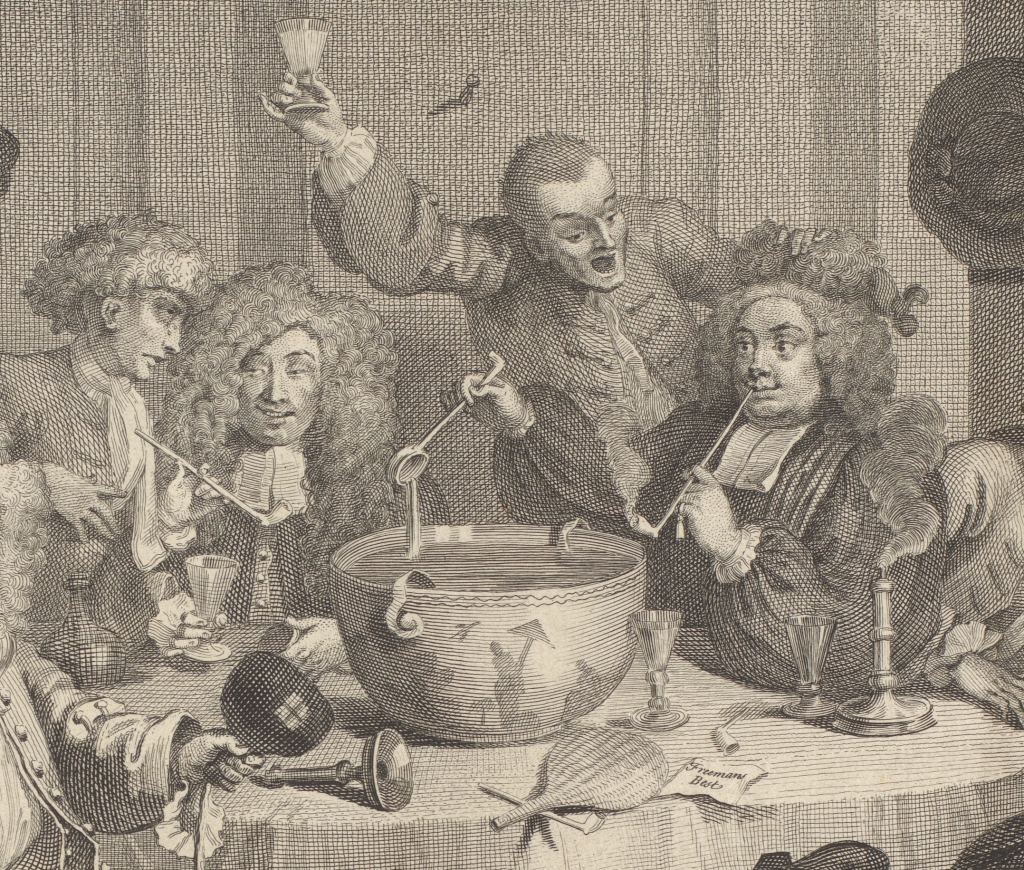

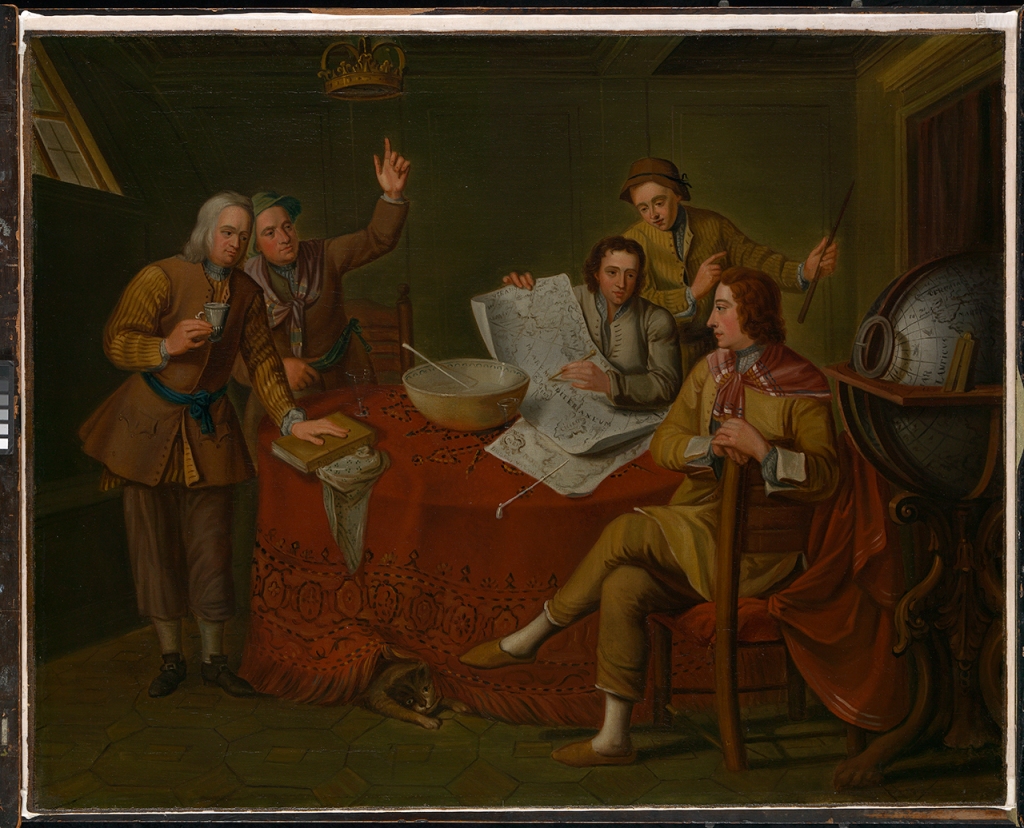
You might also try a 17th-18th century rum punch. The classic modern recipe is one of sour, two of sweet, three of strong, and four of weak, with a bit of grated nutmeg (or even allspice). Translated to the 17th century, this means one part key lime juice (preferred, although you may substitute orange or even pineapple juice), two parts muscovado sugar, three parts rum, and four parts water. Nutmeg was also commonly used in the 17th century. (See the foot of this page for notes on acquiring muscovado and key limes.)
If you plan on serving punch in a bowl, Charles H. Baker Jr. in his a famous drink book The Gentleman’s Companion: Being an Exotic Drinking Book… (1946) suggests chilling all ingredients first, and placing a large block of ice at the center of bowl. Long gone are the days of ice trucks delivering blocks of ice to be chipped away in the ice box with an ice pick, but instead you can make a large block of ice by using a food storage container as a mold.
Tobacco!
Foremost, don’t smoke. And if you do, let it be only an occasional pipe or tobacco. And smoke outside — if you own your residence it will have better resale value, and your spouse or significant other might not murder you.
If you choose to smoke a pipe, try a high quality clay replica (a churchwarden is an excellent choice for you gentleman and lady buccaneers, but shorter pipes were more common shipboard), fill it with bosun’s rum twist (often called sweet rum twist), Sweet Virginia (Sutliff makes one), or Navy flake, and puff away. That said, I’ve been reliably informed that the early Oronoko (Verina, Sacerdotes, &c) and related Virginia tobaccos of the era were probably more like modern mild burleys.
Add an authentic replica of a seventeenth century pipe tamper if you like — a dolphin (aka dolphin fish, classical dolphin, mahi-mahi) or something bawdy, both of which were common along with other designs. (See Bucklecastings online for some.)
Or, smoke a cigar. Yes, cigars were popular in the 17th century Caribbean. Pretty much everyone smoked them to some degree, although pipes were more popular among the English, French, and Dutch. Cigars far outnumbered pipes among the Spanish, Portuguese, Africans, and, at least in the Caribbean and environs, Native Americans, and were smoked by women as well (as were pipes, by the way, among other nationalities), especially by Spanish women in the Americas. Check this out: Of Buccaneer Christmas, Dog as Dinner, & Cigar Smoking Women.
WARNING! Keep your pipe or cigar away from various flammable mixtures of pine tar, turpentine, beeswax, and linseed oil! Especially if you’ve been drinking rum!
WARNING! Keep your pipe or cigar away from your blackpowder, if any (see below), too! Blackpowder isn’t quite as sensitive to candle or common match flame as Hollywood depicts it, but a tobacco ember might still set it off. Put another way, it might take a dozen common wooden matches to ignite a blackpowder train — or it might take only one! And the flame from even a small amount of blackpowder can burn you to the bone! (Blackpowder, by the way, doesn’t explode, it deflagrates, if you want to get technical. It doesn’t burn as fast as true explosives.)
You can add a pipe bowl cover to your pipe for authenticity and, as was the case even three centuries ago aboard ship, for safety. It’s useful also when stalking wild cattle or feral swine on tinderbox arid coasts and desert islands. I recall my seafaring adventurer father using one when my brother and I would go hunting with him when we were in our early teens.
While smoking your pipe, take a break, tend your geraniums, and randomly shout, ideally from a window at passersby, “Quo, quo, scelesti, ruitis?” If you don’t get the allusion, shame on you! Go back to your armchair and do some more reading. 🙂
Blackpowder!
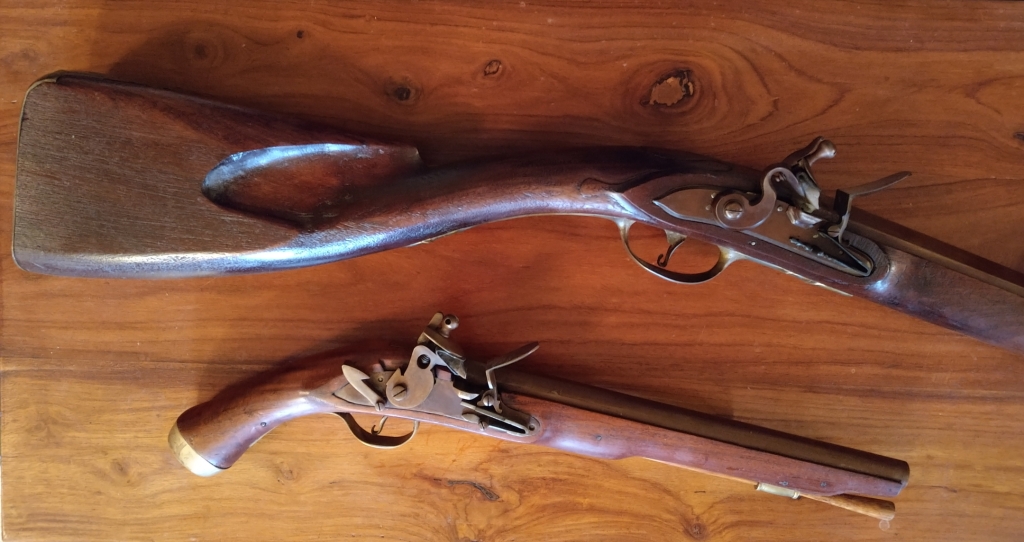
I’ve had my doubts about including this suggestion, given the large number of fools with firearms in the US these days. However, given that in my experience there are far fewer fools with blackpowder arms, I’ll go ahead.
WARNING! NOT NOT NOT FOR NOVICES OR AMATEURS! THIS IS NO JOKE! UNLESS YOU REALLY KNOW WHAT YOU’RE DOING, DON’T!!!
TRIPLE-CHECK that the barrel of your flintlock musket or pistol is UNLOADED. Prime (but do NOT load), point in a SAFE direction, bring to full cock, and squeeze the trigger — and thereby, assuming your flint is sharp and tight in the cock, fill the room you’re in with just enough smoke to bring your spouse or significant other down upon your ears after any nearby smoke alarms go off. Or maybe do this outside instead and hope your neighbors don’t call the police on you, which they probably will (and probably should, just in case) for discharging a firearm within city limits. Remember what I said about fools and firearms…
Breathe deeply of this broadsides and boarding actions smell. As an archaeologist at the Middelaldercentret in Nykøbing Falster, Denmark put it to me (we were testing firepots and an iron breech-loading swivel gun for a TV show), “There’s no one who doesn’t like the smell of blackpowder!”
If you like, afterward clash a couple of swords together afterward to suggest a boarding action. Prefer fencing swords rather than real cutlasses or functional replicas in order to avoid nicking sharp blades unnecessarily. If you’re going to nick edges, let it be in a real boarding action of which there really aren’t any of the age of sail sort anymore. Cue Jimmy Buffett…
WARNING! Don’t mix with rum drinking! Or any drinking! Or any other substance that impairs your judgment!
Sound Effects!

Put on music or videos of surf, preferably with seagulls in the background.
Or listen to a video (YouTube surely has some) of tall ship sounds–the sea, creaking rigging, seagulls.
Ignore this if you live by the sea or on a boat or ship (lubbers take note: a boat and a ship are not the same thing). If you live near a dump you might hear seagulls. Ignore the smell or pretend it’s the ship’s bilge.
You can always put on a CD of sea shanties, the bawdier the better in most cases, but accept the fact none are 17th or 18th century, but 19th & 20th century and therefore anachronistic. Or, put on a CD of John Playford’s popular 17th century tunes, there are at least two good compilations available. (Or stream them, I know, we’re well into the 21st century…)
If it’s Spanish pirating you want to evoke, try La Bamba: Sones Jarochos from Veracruz sung by José Gutiérrez & Los Hermanos Ochoa (a Smithsonian release). La Bamba was reportedly composed in the aftermath of the sack of Veracruz in 1683, lampooning the bombast of defenders who did nothing to stop the pirates — but claimed they would. Or, if it’s gentlemanly Spanish pirating you want to evoke, try Fantasía para un Gentilhombre by Joaquín Rodrigo, it has elements of Gaspar Sanz’s 17th century guitar compositions; or just sample some of Sanz’s music instead. Navigating Foreign Waters: Spanish Baroque Music & Mexican Folk Music is also an excellent choice.
But if it’s Hollywood pirating you want to evoke, put on Erich Wolfgang Korngold’s score for Captain Blood or The Sea Hawk, Alfred Newman’s for The Black Swan, Franz Waxman’s for Anne of the Indies, Max Steiner’s for The Adventures of Don Juan (I know, Don Juan isn’t a pirate film or even a seafaring one but the score was used in The Goonies aboard the pirate galleon), John Debney’s for Cutthroat Island, or, one of my favorites, the Chieftains’ score for the best version of Treasure Island ever filmed.
Hang a ship’s bell nearby, ring it loudly occasionally, ideally with the correct number on the half hour, remembering to ring in pairs: ding-ding, ding-ding, ding, &c. Unless you’re a complete fool, avoid doing so if your spouse or significant other has a migraine.
Note that sound effects are unnecessary if you’re just watching a movie…
That Salty Sea Smell!

It’s almost impossible to imitate, so go live by the sea if you can. Upside: the smell and sound of the sea. Downside: everything rusts, including your car. Failing this, keep a bottle of seawater handy, open it occasionally, and sniff. If that doesn’t work, attempt to reproduce that special salty sea smell with water, salt, and a few dead guppies.
Pitching, Sending, Rolling, & Yawing…

There’s really not much you can do to emulate the feel of a ship underfoot except to go to sea or get drunk or carsick. Best substitute: a hammock. Try not to fall asleep in it after drinking two rum punches. If you plan on inviting your significant other aboard the hammock, whether to recreate life aboard a man-o’-war in harbor or on a desert isle à la Robinson Crusoe, make sure it will hold both of you up! In other words, if you hang your hammock on an isle or cay, make sure your weight won’t pull one or both small trees over onto you. Experientia docet…
The Ship’s Head, Chamber Pots, Pissdales, & the Bilge!
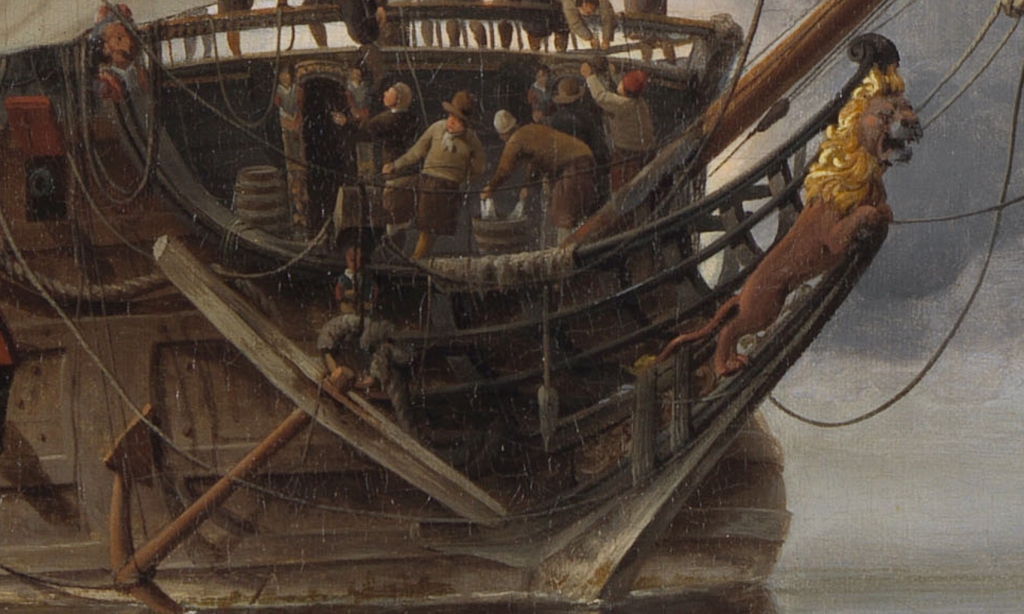
Pretend you’re a buccaneer quartermaster or captain and use a bucket or chamber pot to relieve yourself because you’ve got too much status to use the ship’s head or one of the pissdales (if even there are any along the gun’l), or you’re too lazy to piss in the bilge where you shouldn’t anyway (the ammonia stench from this could actually choke seamen out at times). Pretend your spouse is your personal servant (yes, some buccaneers had indentured servants as their personal servants, and even naval officers often went to sea with servants, mustering many as seamen and taking part of their pay, a common practice of dubious legality) and ask her or him to empty said relief. Stand by for a break-up. Or simply for the contents to be emptied on your head. Personally I recommend passing on this simulation, but to each his, her, or their own…
More Effects of Sight and Sound: Parrots!
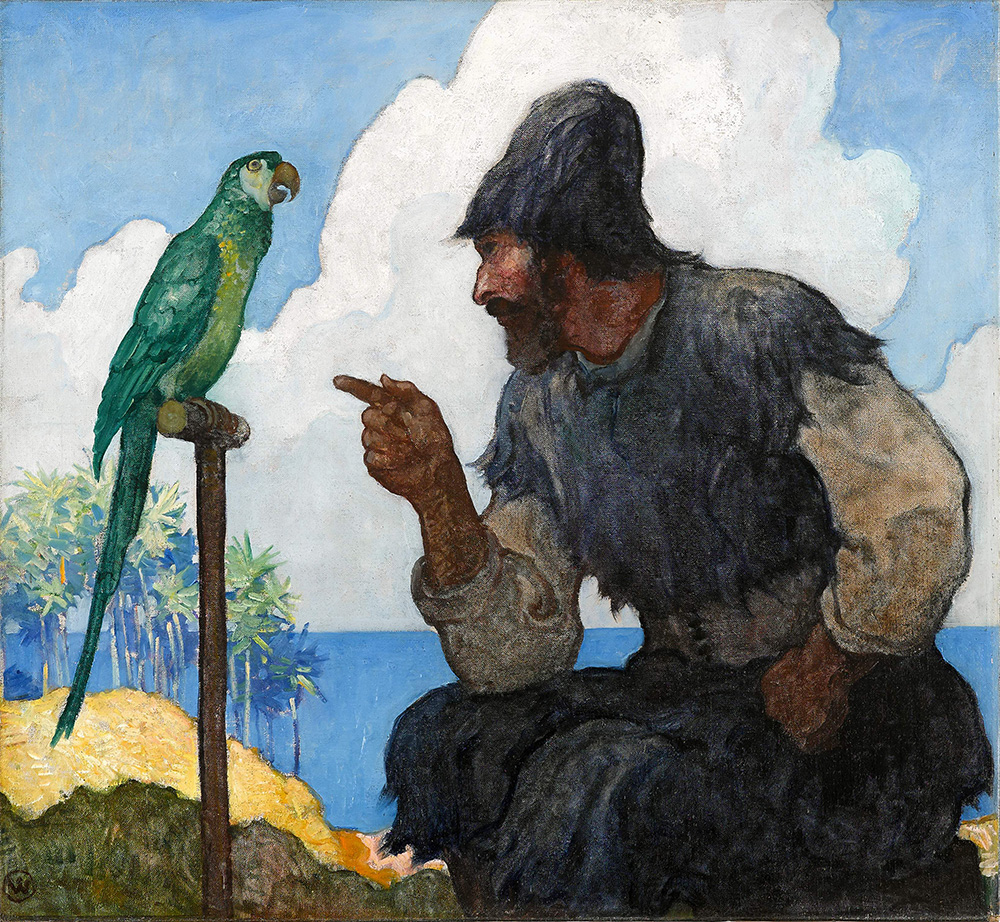
Get a parrot, name it Pol (it’s where the name Polly comes from, you can thank Daniel Defoe’s Robinson Crusoe), teach it to shout “Pieces-of-Eight! Pieces-of-Eight!” over and over (but this’s from Stevenson’s Treasure Island). Don’t listen to anyone who tells you parrots are just a fictional pirate trope — some pirate tropes actually have a great deal of legitimacy, particularly this one. Don’t believe me? Check this out: Of Pirates & Parrots (& Monkeys, Too).
However, be prepared for to spend big bucks to acquire and maintain a parrot, and also for guilt trips when the parrot won’t shut the hell up and you stuff it in the closet for a couple hours for some relief. Also, the damn bird will probably outlive you, so make sure to include it in your last will and testament. Leave it to someone who’ll take good care of it. Extra points if giving it to this person will also satisfy your need for petty personal revenge. Warning: acquiring a parrot is a serious undertaking! Best substitute? House-sit for a few days, parrot included.
And Still More: Monkeys!

Get a capuchin (monkey, not monk), put it in a diaper, name it “Captain,” and let it roam free and destroy your home. Or maybe not: primates shouldn’t be kept as pets, although some members of Homo sapiens — a primate species — inexplicably, even unconscionably, thrive on it (both keeping monkeys or other primates, including humans figuratively, as pets, and being kept as pets, that is).
Drawback: monkeys, not to mention many politicians and Internet windbags these days, often fling their turds at humans and can be quite obstreperous when it comes time to correct or prevent their bad behavior. (I’ll forgive monkeys but not politicians, pundits, or “influencers” aka product shills.) For what it’s worth, monkeys are another pirate trope with a great deal of maritime legitimacy. See the link above.
And If You’re Really Bold…
Just stuff the book you’re reading or the game you’re playing into your sea bag or sea chest, find a tall ship in the offing, and join her (its) crew!
Notes on Muscovado and Key Limes
Key limes are available in many groceries these days, including Walmart’s produce sections. Often the limes are listed as Mexican, given their usual origin, and they’re also known as West Indian limes. You’ll know them by their size, a third that of conventional limes.
For muscovado sugar, I recommend buying it in bulk from Amazon, it’s by far the best value, ten one-pound boxes, Billington’s Natural Dark Brown Molasses Sugar, or for a lighter taste, Billington’s Light Muscovado. (Colonial sugar plantations produced both dark muscovado and a lighter “clayed” sugar — in fact, sugar production was responsible for the majority of African slavery in the New World.) Much smaller quantities cost almost as much as ten pounds in bulk. Billington’s also makes a Dark Muscovado but it’s hard to find in bulk in the US and is quite pricey in smaller quantities and in any case I can’t tell much difference between it and their dark brown molasses sugar — the latter tastes, looks, and cooks like muscovado, except that it has more molasses than the average muscovado, and has less of a floral flavor; most “experts” regard the dark molasses sugar as a form of muscovado. India Tree also makes a muscovado sugar, but prices vary widely; some groceries sell it for around six or seven dollars a pound.
Use dark or light also for baking cookies, frying plantains with butter, making hot buttered rum (use Cruzan’s Blackstrap!), on oatmeal, &c, and for any other brown sugar need. This is the real stuff! You can also use panela, piloncillo, and similar “brick” or “cone” cane sugars to substitute for muscovado, they’re quite similar to 17th century sugars — in fact, they’re produced in much the same way and are generally considered as forms of muscovado. Dark muscovado is marketed in some areas of the world as Barbados sugar, although most today comes from Mauritius and the Philippines.
* Robert Herrick in “A Country-Life: To His Brother Mr. Tho. Herrick” (Hesperides, 1648) quoting Horace, Odes I.3 in translation.
Copyright Benerson Little 2022. First posted July 6, 2022. Last updated March 28, 2024.
Captain Blood, Not Jack Sparrow: The Real Origin of Disney’s Wicked Wench Pirate Ship
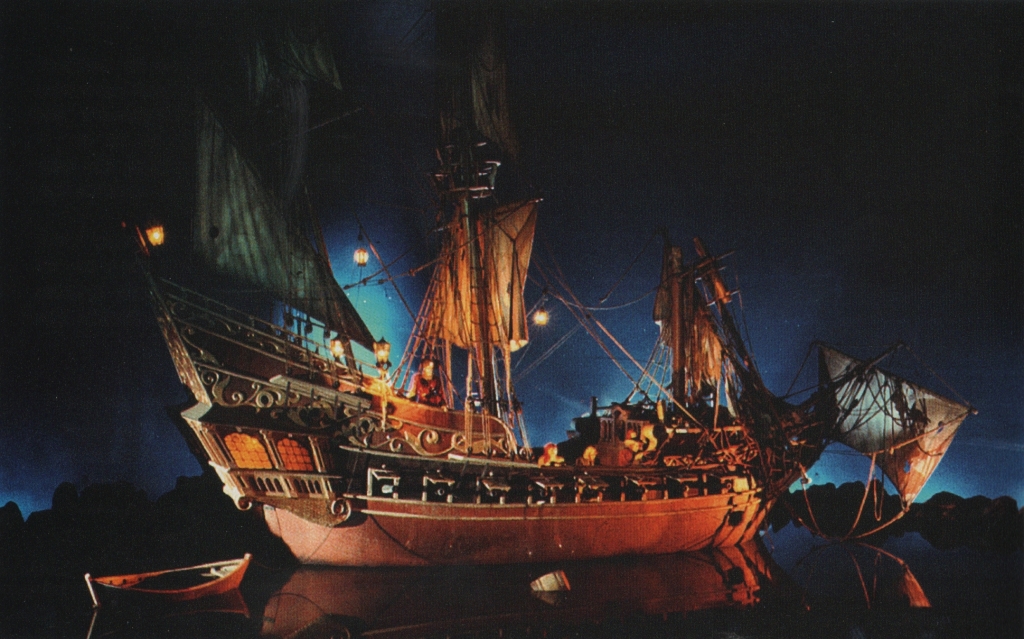
It’s an epic image, one that anyone who’s ever cruised through the Pirates of the Caribbean attraction at one of the Disney theme parks is familiar with: a pirate ship cannonading — “firing its guns at” or “engaging” in sea parlance — a Spanish fort.
But the image-in-motion long predates the Disney attraction. In fact, as I’ll demonstrate shortly, the entire scene was lifted directly from Rafael Sabatini’s famous novel, Captain Blood: His Odyssey and especially from the 1935 film version starring Errol Flynn, Olivia de Havilland, and Basil Rathbone. And the Wicked Wench pirate ship of the attraction was more than simply inspired by the Cinco Llagas / Arabella, as the ship in the novel and film was named: it was copied from it!
Originally the attraction depicted buccaneers in the second half of the 17th century attacking and sacking a Spanish town on the Main. “IN THE CROSS FIRE of cannonades between pirate ship and Caribbean port,” begins the caption of the 1968 Disney publicity still of the Wicked Wench shown above. It continues with “this crew of Disneyland adventurers sail through Pirates of the Caribbean as grape shot and cannonballs land around them. The pirate captain on his bridge gives the signal for an eight gun salute. The scene of one of ten action-packed segments in the thoroughly realistic re-creation of buccaneer days.” For now I’ll pass on correcting Disney’s descriptive language, as some readers might misconstrue such revisions as nautical pedantry.
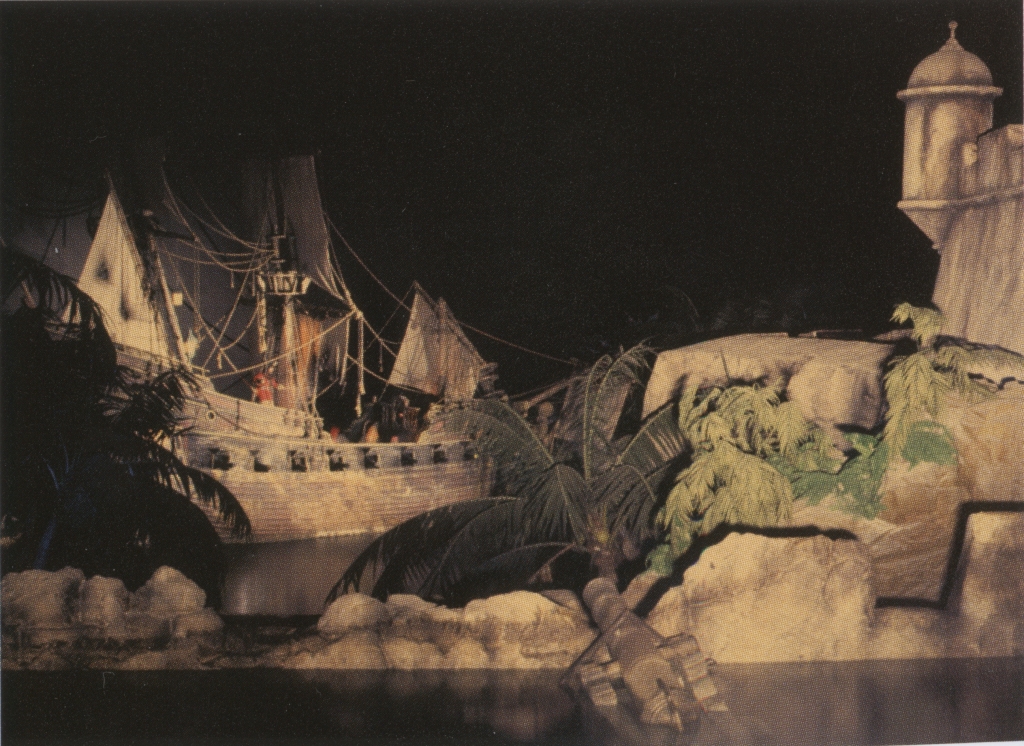
However, in spite of the obvious historical basis for the ride’s inspiration, according to Disney’s modern Pirates of the Caribbean film franchise “canon” the Wicked Wench was instead the ship that would become the Black Pearl commanded by Jack Sparrow et al, more or less, post-buccaneer era. Not a buccaneer ship, in other words, but a later ship turned to pirate ship as would fly the Jolly Roger. This, of course, is nothing more than mere revisionism for the sake of marketing the ride on the coattails of the film series, and any “canon” (as in nearly all franchises) is nothing more than the result of a series of screenwriters trying to write popular scripts, and fans subsequently trying to make rabid sense of their details and many loose ends.
Myself, I much prefer the original orientation of the attraction, liberties taken with real buccaneer history notwithstanding. That said, comic ride though it may be (and one that I thoroughly enjoy), it does get some things right, including torture, pillage, and burning, not to mention the original implication of some scenes now altered from their original. We have, in fact, two versions of piracy in our culture: factual history and popular myth, the latter often overwhelming the former.
And now for the evidence that the Wicked Wench is really the Cinco Llagas / Arabella!
The Scene of Ship Attacking Fort Was Inspired by & Lifted Largely From the 1935 Film
One need only to watch the 1935 Captain Blood to confirm this. The only difference between the two is that the roles are reversed: rather than a Spanish pirate attacking the principal town of an English colony in the late 17th century as in the Rafael Sabatini novel and the film based on it, buccaneers in the attraction attack a Spanish town, as they often successfully did — and far, far more often than Spanish pirates did against English, French, and Dutch colonies.
In fact, in Pirates of the Caribbean: The Black Pearl there is an homage to the pirate attack in the 1935 film version of Captain Blood: some of the shots of locals running for cover are quite similar to those in Captain Blood.
For more details on the ship-versus-Spanish fort trope, see “The Iconic “Spanish” Fort: Only a Spanish Galleon Says “Pirates” Better!“



The battle depicted in the Disney ride, and by derivation the one in Captain Blood, was given an homage in The Curse of Monkey Island (LucasArts, 1997).
The Wicked Wench is Red Like the Cinco Llagas / Arabella of the Novel
According to Rafael Sabatini, who clearly emphasized the sanguinary nature of buccaneering via the hero’s name and other thematic elements, the color of Peter Blood’s pirate ship was red. However, red was not an exceptionally common color of ships at the time. Red paint was typically used for the bulwarks (the inner “walls”), gun carriages, and often some fittings of men-of-war, and some other ships as well, at the time, and the upper works (the upper outside of the hull) and sterns of some ships were occasionally painted red — but never the entire hull. However, the application of pine tar, tallow, and linseed oil could lend a reddish hue to hull planking (particularly to those ships built of various “mahoganies” in the Americas), but this would not cause a ship to be referred to as red. (Far more details on the possible appearance of the Cinco Llagas / Arabella are forthcoming in Treasure Light Press’s annotated Captain Blood.)
And the Wicked Wench? A red ship, of course!
The Profiles of the Wicked Wench and the Cinco Llagas / Arabella are Too Similar to be Coincidental
Indeed! The similarity is obvious when comparing the images below. Even the scrollwork on the stern upper works is almost identical (see the image above and also at the end of this section). Disney did make some alterations to suit the attraction, including reducing the ship from two decks to one, and, of course, making it small enough to fit in the attraction.


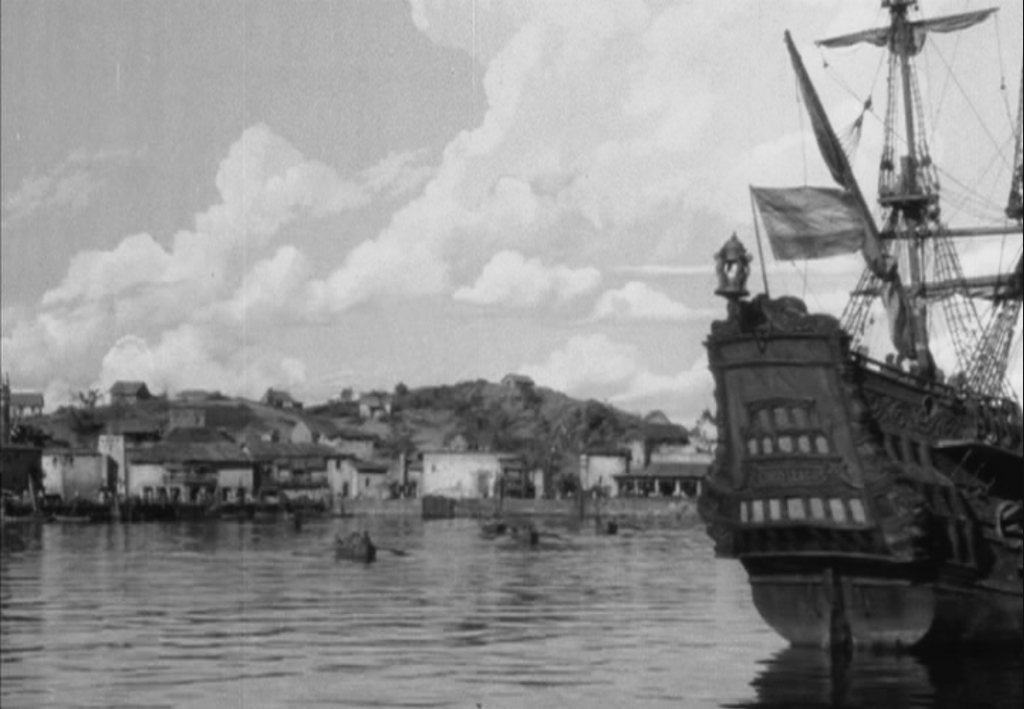
And Then There’s the Names of the Ships…
After its capture by a handful of renegade rebels-convict led by Dr. Peter Blood, the Cinco Llagas was renamed the Arabella after the woman Blood loved but thought he could never have. Arabella Bishop, although independent, strong-willed, and anything but swooning (or languishingly voluptuous!), was still a lady in manners and mores, unlikely to (sadly!) run away to sea in men’s clothes with Peter Blood. One can easily see a tongue-in-cheek homage to Arabella and the Arabella in the renaming of the Spanish frigate as the Wicked Wench, and even in the “Woman in Red” in the old Bride Auction scene on the attraction.
Likewise the captain of the Wicked Wench as an inverted homage: no clean-shaven gentleman buccaneer he, unlike Captain Peter Blood, but bearded and beribboned like Blackbeard the Pirate and bellowing in G-rated curses like Robert Newton or Peter Ustinov in their piratical film roles. That is, before Hector Barbossa took his place to align with the film franchise. (N.B. Blackbeard was not a buccaneer but a later black flag pirate, and although most buccaneers appeared to have been clean-shaven, some French boucaniers, and therefore buccaneers, did wear beards.)
For more details on “The Woman in Red,” now “Redd the Pirate,” (and in any case, an anthropomorphism of the ship by both), see “The Women in Red: The Evolution of a Pirate Trope.” For more details on the black flag — the so-called Rackham flag with skull and crossed cutlasses — flown by the Wicked Wench, see “The Fanciful, Mythical “Calico Jack Rackham” Pirate Flag.” Note that on the Disney LP featuring a narrated soundtrack of the ride, the Wicked Wench is referred to as the Black Mariah, the name of the ship in “Donald Finds Pirate Gold!” Perhaps Wicked Wench was suitable on the stern but not in narration at the time on an LP likely to be listened to mostly by children?

So, Was the Wicked Wench Really the Arabella?
Only Disney knows — and only Disney can answer how the Arabella, sunk among the cays just off Port Royal, Jamaica in 1689 while defending the town from French attack, came to be raised, refitted, and ended up again in buccaneer, then pirate, hands… 🙂
And the Black Pearl?
If you’re looking for the real original inspiration for the Black Pearl, discard any notion of it having been the Wicked Wench — this is probably just “canon after the fact.” Convenient revisionism for the sake of marketing, in other words. Sparrow’s famous ship is more likely inspired ultimately by Tom Leach’s 40-gun Black Swan, from Sabatini’s novel of the same title. Or at the very least it corresponds closely to Sabatini’s description of the ship, including its black hull. Even the un-authorized plastic model of Sparrow’s Black Pearl is sold under the name of the Black Swan. Are there similarities between the Wicked Wench and the Black Pearl? Of course there are. Clearly the set designers took a look at the Wicked Wench, but it is much closer to the Arabella. (By the way, the duel in The Black Swan is described here.)
And for you budding “nautical pedants” out there, here’s the correction to the Disney text quoted above: “this crew of Disneyland adventurers [an acceptable term: French buccaneers aka flibustiers were often referred to as adventurers] sail through Pirates of the Caribbean as grape shot [this form of small shot was in its early development and generally not known by this name at this time] and cannonballs [more correctly, round shot] land [splash] around them. The pirate captain on his bridge [quarterdeck, not bridge] gives the signal for an eight gun salute [a correct humorous euphemism for a broadside]. The scene of one of ten action-packed segments in the thoroughly [and humorous] realistic re-creation of buccaneer days [a statement more correct than it might appear at first]…”
Post Script: The Wicked Wench is Not the Only Disney Pirate Ship Inspired By an Errol Flynn Film…

Disney’s Jolly Roger, from the animated version of Peter Pan (1953), bears a striking resemblance to the Albatross from The Sea Hawk (1940, directed by Michael Curtiz and starring Errol Flynn). 🙂
Copyright Benerson Little 2022-2024. First posted June 22, 2022. Last updated February 9, 2024.
The Duel on the Beach, Part IV: Flynn versus Rathbone in Captain Blood!

Classic film buffs, fencers, armchair adventurers, real swashbucklers, and romantics of many other stripes may debate over which film duel is the “best.” But no matter the standard, the duel between Errol Flynn as the hero Peter Blood and Basil Rathbone as the villain Levasseur in Captain Blood (1935) always makes the top few, often at number one. For me, there is no contest. There are a few far more historically accurate film duels (in fact, there are only a few historically accurate film duels at all), and there are a few film duels that are more technically proficient (for example, in The Mark of Zorro), but none in my opinion exceed this one in sheer excitement, drama, swashbuckling swordplay, and watching pleasure.
Of the duel, George MacDonald Fraser (The Pyrates, the Flashman series, &c, plus novelist, screenwriter, historian, swordsman, journalist, soldier, and more) had this to say in The Hollywood History of the World: “the most famous of screen duels…” and “Flynn v. Rathbone (Captain Blood) belongs in some swordsmen’s Valhalla of its own…” I cannot agree more.
The 1935 release, a remake of the silent 1924 film, was hotly anticipated. Newspapers and film magazines ate up the rumors, often created by Warner Bros. studio as part of its publicity campaign, regarding who would star in the film. At one point Robert Donat and Jean Muir were rumored in the LA Times to star, and later Bette Davis in Muir’s place. Many others were considered as well. But it was Irish-Australian newcomer Errol Flynn who landed the lead and after some reshoots fell naturally into the role.
Costing a reported $1,000,000, the film was directed by Hungarian-born Michael Curtiz, and also starred nineteen-year-old Olivia de Havilland fresh from stage and film performances in A Midsummer Night’s Dream. Basil Rathbone and an array of established character actors filled out the cast, supplemented by a number of real life adventurers among the ship crews and extras. Casey Robinson adapted the novel to the screenplay, simplifying it greatly but keeping the essentials. Released at Christmas, the swashbuckling romance was an immediate blockbuster and launched Flynn and de Havilland to stardom.
This post is a bit long and detailed, and occasionally technical when it comes to buccaneer history, fencing, and swords. Feel free therefore to jump around if you prefer, or just scroll through and check out the images. The major sections are marked. Reading the previous three “Duel on the Beach” posts is recommended but not required: In Fiction, in The Black Swan, and In Film. Some of the in-depth historical details below have been drawn from the annotations Treasure Light Press is writing for its forthcoming edition of Captain Blood.
The Novel Versus Film Duel
The 1935 duel was composed entirely from scratch, for the novel by Rafael Sabatini provides no significant detail. The author does include plenty of dramatic tension leading up to the swordfight, but for the assault itself we have only dialogue and minor notes.
[Spoiler Alert! Skip to the next header if you haven’t read the novel — or if you have and don’t need the refresher!].
In the novel, Peter Blood and the crew of his ship the Arabella, believed by their consort Captain Levasseur and his crew of La Foudre to be well on their way back to Tortuga after the capture of a Spanish ship, have in fact been driven to the island of “Virgin Magra” (see below) where they discover Levasseur about to torture the son of the Governor d’Ogeron of Tortuga.
Levasseur has kidnapped the young man and his sister, murdering a Dutch captain and seizing his brig in the process. The cruel pirate, modeled on the infamous l’Ollonois and described as having served under him, is in lust with Madeleine d’Ogeron, and she believed she was in love with him until his murderous brutality was revealed. Now Levasseur intends to hold both for ransom, with the threat of “not marrying” Madeleine first if his demands are not met. It’s a classic set up of romantic adventure, with nuance as only Sabatini can add.


But just in time, Peter Blood and a handful of his officers and crew arrive as the marplot. After distracting Levasseur’s crew with an offer to pay the anticipated ransom for the woman and her brother up front, and casting their portion of the ransom in the form of pearls before swine, Peter Blood intends to remove Madeleine and her brother to his forty-gun Arabella, but Levasseur will have none of it.

From the novel:
“Levasseur, his hand on his sword, his face a white mask of rage, was confronting Captain Blood to hinder his departure.
“You do not take her while I live!” he cried.
“Then I’ll take her when you’re dead,” said Captain Blood, and his own blade flashed in the sunlight. “The articles provide that any man of whatever rank concealing any part of a prize, be it of the value of no more than a peso, shall be hanged at the yardarm. It’s what I intended for you in the end. But since ye prefer it this way, ye muckrake, faith, I’ll be humouring you.”
He waved away the men who would have interfered, and the blades rang together.”
There is really no more description of the duel except the following lines:
“It was soon over. The brute strength, upon which Levasseur so confidently counted, could avail nothing against the Irishman’s practised skill. When, with both lungs transfixed, he lay prone on the white sand, coughing out his rascally life, Captain Blood looked calmly at Cahusac across the body.”
A decade later Sabatini made up for the lack of detail by writing “The Duel on the Beach” (1931) and the novel based on it, The Black Swan (1932), in which a Peter Blood-like hero, Charles de Bernis, fights a duel with a Levasseur-like villain, Tom Leach. I’ve discussed the duel in detail here. In fact, this fictional duel probably inspired elements of the Captain Blood film duel.
However, in the film two of the principal characters have been changed due to the streamlining of the novel for the script: Madeleine d’Ogeron has been replaced by Arabella Bishop (Olivia de Havilland) and her brother by diplomat Lord Willoughby (Henry Stephenson).
The Dueling Terrain in the Novel: The Dunes and Beach of Virgin Magra
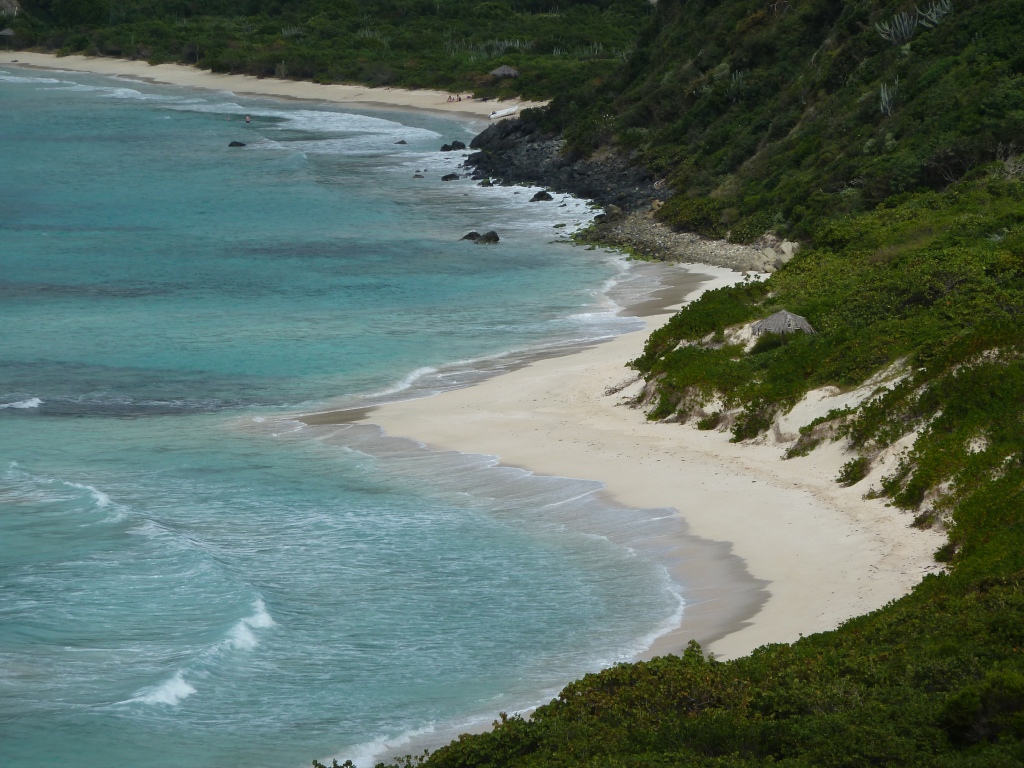
In the novel, the duel takes place on Virgin Magra (the Meager — Skinny, that is — Virgin), which is nothing more than Sabatini’s joke on Virgin Gorda (the Fat Virgin) in the British Virgin Islands. Virgin Gorda is arguably, depending on one’s eye, rather skinny than fat, and meager as compared to other islands in produce.
Even so, it is one of the most beautiful islands in the Caribbean. Mangrove, cactus including prickly pear, various scrub, and short deciduous trees (20 to 40 feet high) including allspice and quite a few others, made up most of the flora in the 17th century.
Coconut trees grow in small numbers on the island today but were probably not present in the 17th century. In fact, in the 17th century most Caribbean coconut palms, an introduced species, were on the Main, not the islands. Some small shrub palms up to fifteen feet tall probably did grow on the island, however. Species of Royal Palms grow on the island today but have been cultivated, and probably did not exist on there in the 17th century.
Sabatini is correct when he describes salt ponds on the island: in past centuries there were several bordered by mangrove swamps. Among the animals the visiting buccaneers might have encountered are sea turtles, iguanas, and large flocks of flamingos and ducks.
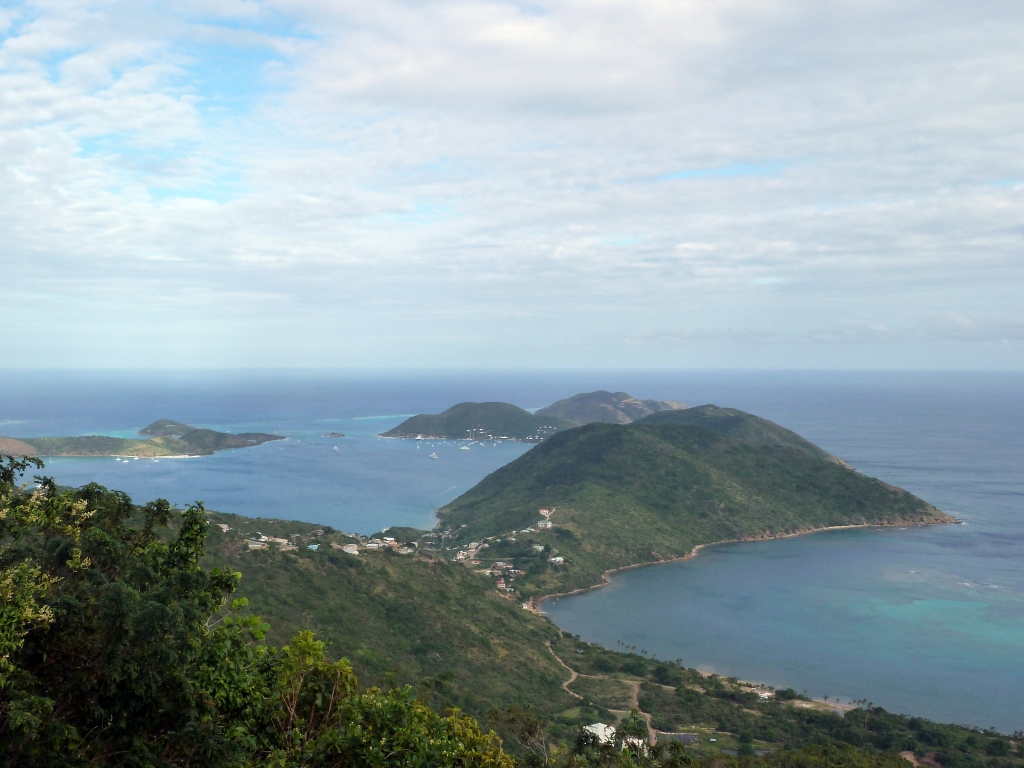
The Spanish and Dutch attempted small settlements in the mid-17th century on Virgin Gorda without success. In the second half of the 17th century Virgin Gorda was visited by loggers for boat- and shipbuilding timber, but these visitors established no permanent settlements. The island was probably also visited occasionally by salt-rakers.
In 1680 the English established small settlements on Virgin Gorda and nearby Tortola, the latter predominant, but the islands were soon raided by Spanish privateers or pirates, depending on one’s point of view. In the summer of 1687 the island was still apparently largely depopulated thanks to the Spanish raids.
A few families had probably been reinstalled at a small settlement at St. Thomas Bay, which would one day become known as Spanish Fort. Some authorities, based on period records, note fourteen free white males, a few free white females, and three slaves on the island at roughly this time. Very likely they hid from the buccaneer visitors, or at least from Levasseur and his French, were we to combine fact with fiction.
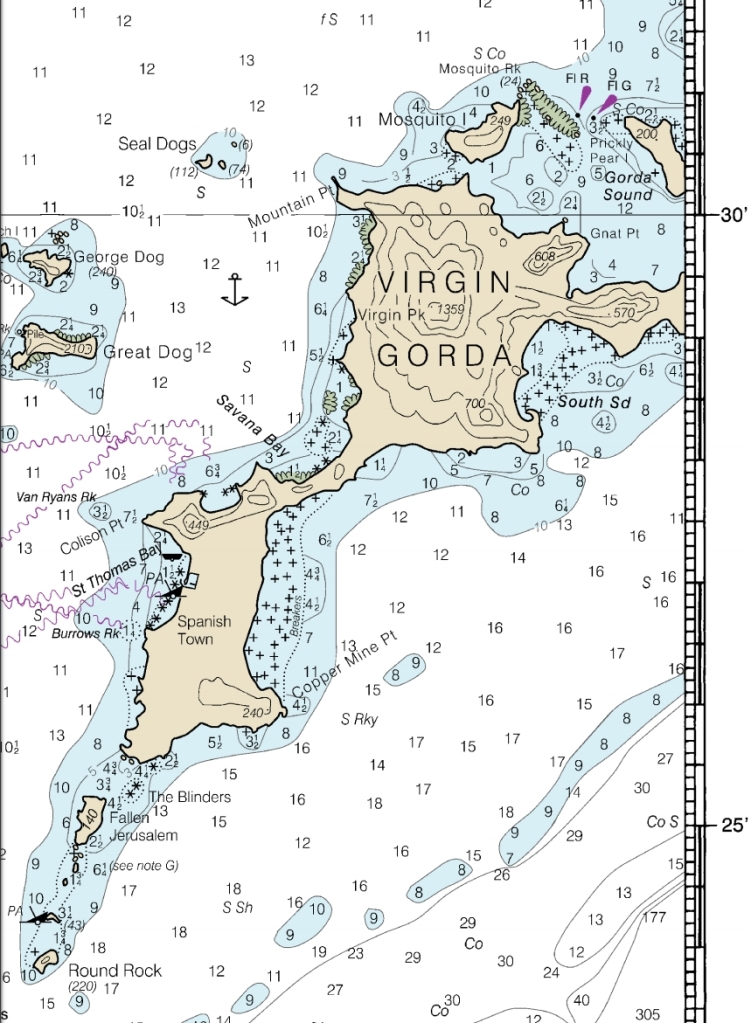
Given that Levasseur anchored his small eighteen-gun frigate La Foudre in the north lagoon, known as Gorda Sound and North Sound today, for repairs, the duel would have to be fought on one of the lagoon’s beaches. Although today there is only a significant dune presence at Savanna Bay, or as it was known in the 17th century, West Bay, there were other dune systems in the past, almost certainly some of them at the lagoon.
Hills — and a lazy lookout — would have screened the Arabella anchored to the southwest from view. Of course, Levasseur would have been advised to keep a good lookout (we know Peter Blood would have). Even so, Spanish pirates would surely have thought twice about attacking one or two stout buccaneer frigates.
Virgin Gorda in the 17th century has everything we imagine necessary for a duel on the beach between pirate captains — except coconut palms.
The Terrain in the Film: Three Arch Bay at Laguna Beach
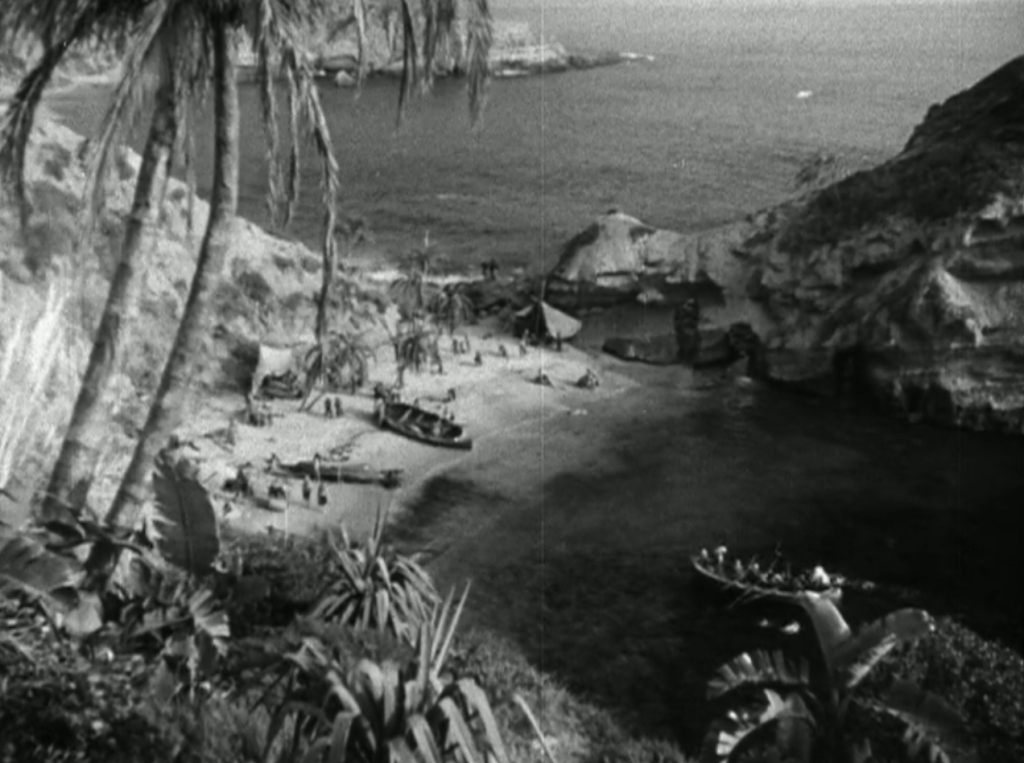

The duel in the film was shot not on Catalina Island, as many fans often assume, but at Three Arch Bay at Laguna Beach. It is a classic Southern California vista: a sunny sandy shore amidst grand, craggy, evocative rocks. We will assume that the palm trees in the background were put there by the set designers and their crews, notwithstanding that Southern California (I lived in San Diego for twenty years and in LA for five) is known for its various palm trees, although the coconut is not one of them. The romantic vista adds to the scene, almost as a third character. The shot below is but one of many the beach was perfectly suited for, even demanded.
In fact, the location was chosen specifically to make the duel more exciting. From the original script by Casey Robinson: “The nature of our location will help a good deal here, for the fight not to be on the flat, but will range over the rocks and cliff edges of the rough country.”

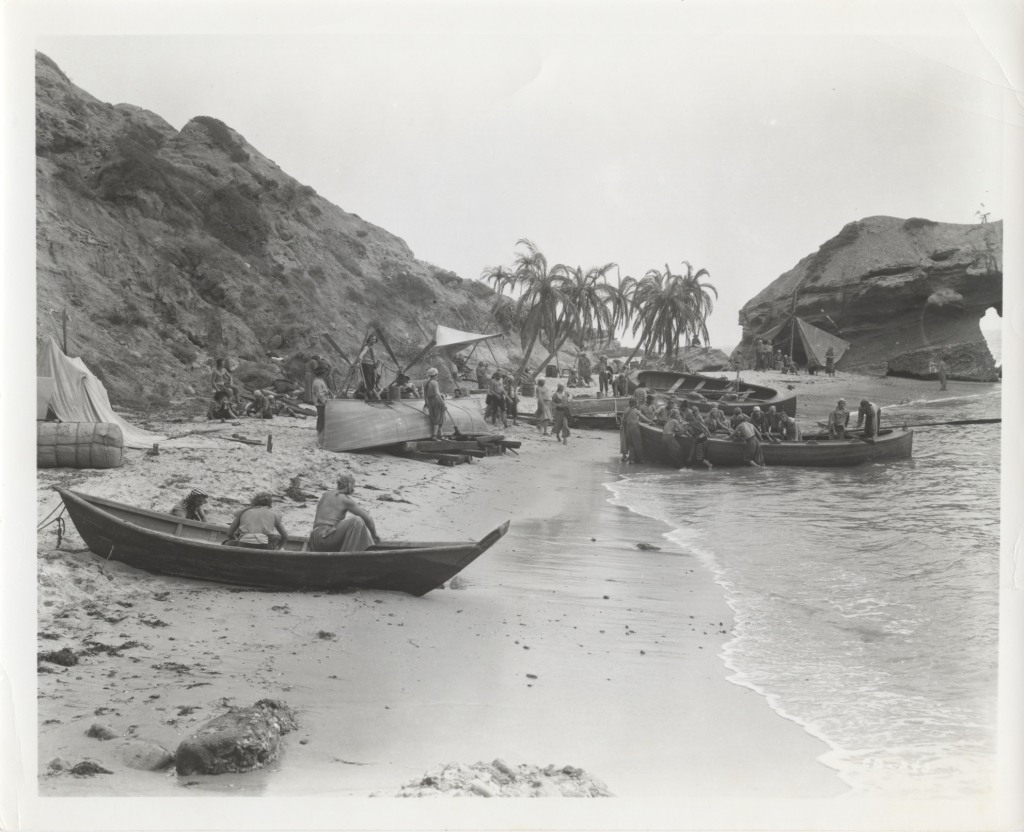
Coincidentally, there is one location on Virgin Gorda that does look similar: “The Baths,” where sandy shore meets rock formations. It’s too far south, though, to answer the novel’s description of action and location, but following a novel closely has never stood in the way of Hollywood.
The Hero: Peter Blood
If you’ve read the novel or seen the 1935 film, you already know Peter Blood’s history: a physician (with surgical skill) accused of treason for treating a wounded rebel during the 1685 Monmouth Rebellion, he was convicted and sentenced to ten years transportation as an indentured servant at Barbados. During a Spanish raid of reprisal he and a number of his fellow rebels-convict board the Spanish frigate at anchor while the crew is indulging in pillage and rapine ashore, capture it, and destroy the Spaniards in their boats the following morning. The rebels-convict escape to Tortuga, an island just off the north coast of Saint-Domingue (modern Haiti), and become buccaneers.
Given Peter Blood’s martial experience and Spanish imprisonment previous to setting down as a physician and eventually turning buccaneer, he would certainly be quite familiar with the French, Dutch, and Spanish schools of fence with thrusting weapons — the smallsword and the Spanish rapier — and also the cutlass given his Dutch naval experience, and would surely be able to handle a sword well-enough to defend himself in a variety of circumstances.
Importantly, the novel is a swashbuckling romance, with associated noble notions of duty, honor, and “right as might” rather than the opposite. These virtues set the stage for the duel in which Peter Blood rescues a swooning heroine in danger of sexual assault, a theme Sabatini often returns to in his novels and which often defines his heroes. Although swooning damsels are thankfully less popular today, the virtue of standing up for and defending the oppressed, whatever their sex and circumstances, will hopefully never go out of fashion — and likewise that Levasseurs everywhere will sooner or later get their just desserts via sword or otherwise.
A much more detailed history &c will be provided in Captain Blood: His Odyssey, the 100th Anniversary Annotated Edition later this year!
The part is played by Errol Flynn in the 1935 film. Although a bit young for the role at twenty-six — Sabatini’s hero was in his early thirties — Flynn didn’t depart too far from the character as described by the author. His dress is not quite as sartorial as Sabatini described, and Hal Wallis of Warner Bros. Studio was often incensed that Flynn even wore a lace cravat, much less anything that might be regarded as “feminine.” Wallis was reportedly furious with historical consultant for the film Dwight Franklin, and with director Curtiz for taking his advice, something I can relate to from personal experience: inevitably there’s someone in the mix, even if not the director or writers, who doesn’t like the historical consultant’s advice — an art director, for example. But Franklin was right, even though he had never seen eyewitness images of buccaneers drawn in the 1680s: some of them are wearing lace cravats!
The Fictional & Historical Villain: Captain Levasseur

The character of Levasseur, played with panache and an exaggerated French accent by Basil Rathbone, is based on two historical characters. Sabatini appropriated the name and some of the character from the real Captain François Levasseur, a Huguenot soldier of fortune, military engineer, and de facto governor of Tortuga from roughly 1640 to 1652. During his tenure he heroically repelled a major Spanish attack and despicably persecuted local Catholics in the name of Calvinism, among other crimes.
Neither the character of Levasseur nor the name was based, as a page or two on Wikipedia (far more often than not a terribly inaccurate resource on pirates and piracy, not to mention many other subjects) have stated, on the early 18th century French pirate, Olivier Levasseur aka La Buse (a nickname which might mean the “Buzzard” — the swift but proverbial stupid European bird of prey, not the American carrion eater — or “Mouth” or “Cow Dung” depending on spelling).
By his own admission, not to mention obviously, one of Sabatini’s his principal sources was Alexandre Exquemelin’s The Buccaneers of America, whose English and French editions were first published in the 1680s. The polylingual Sabatini read both. Each covers material the other doesn’t, and he found plenty of detail on Levasseur in the French. The real Levasseur (or Le Vasseur) was murdered by two of his closest associates — captains and companions in fortune hunting, practically family to him, according to Exquemelin — reportedly because he had raped the beautiful mistress, possibly also a slave, possibly a prostitute according to 17th century Caribbean historian Jean-Baptiste du Tertre, of one of them named Tibaut (or Thibaut). They intended to put an end to his tyranny.
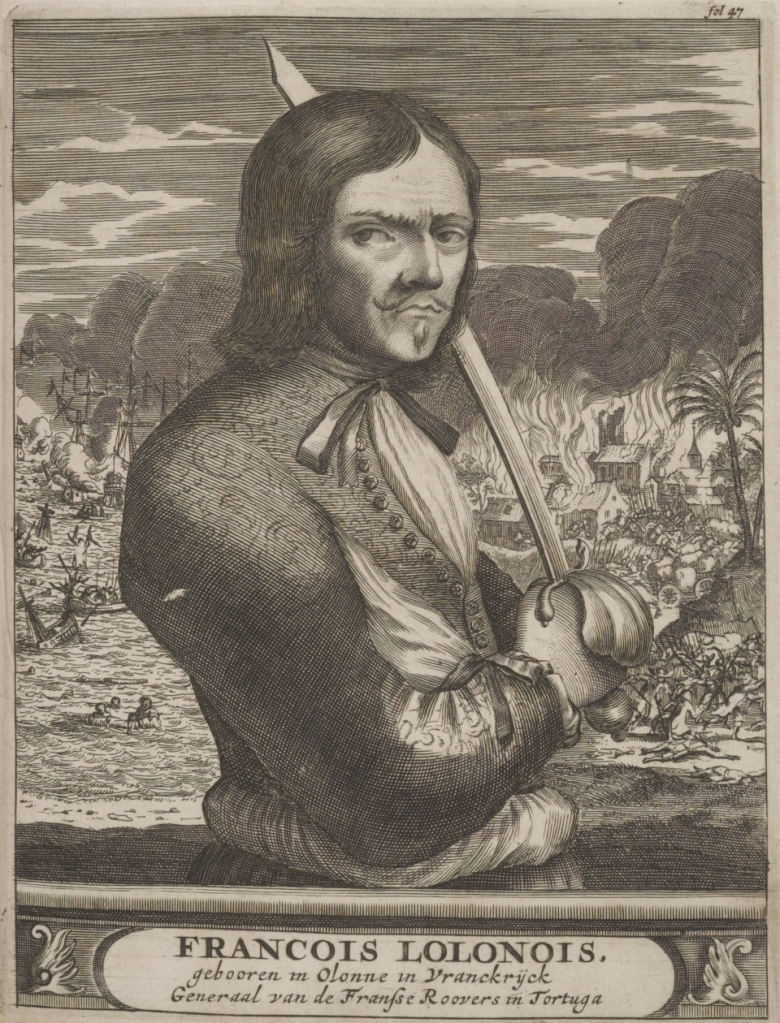
Appropriate to his namesake fictional character, Levasseur was killed on the shore of Basse Terre, Tortuga at one of his warehouses by his two confreres and several of their associates: the eventual coup de grace was one or more thrusts with daggers. Perhaps his compadres killed him in part to protect Tibaut’s mistress — or perhaps just so Tibaut could keep her for himself. Reportedly just before he died Levasseur begged for a priest because he wanted to die a Catholic. Or at least du Tertre says he so pleaded.
More likely, du Tertre, a priest in anti-Reformation mode as all were, invented this to curry favor with his largely Catholic audience, not to mention keep his priestly credentials in good standing. Sabatini carried Levasseur’s unconscionable behavior over to his fictional French buccaneer who kidnaps the besotted daughter of the governor of Tortuga — his inamorata — and clearly intends to rape her if she resists his advances.
Sabatini also based the character on François l’Ollonois (or L’Ollonais as Sabatini spells it according the edition he studied), aka Jean-David Nau, &c — a vicious French buccaneer noted not only for his successes against the Spanish, but for his murder and torture of Spanish prisoners beyond that of most of his brutal brethren, few of whom would have cut the heart from a living prisoner and taken a bite from it, for example. That said, he was not the only French buccaneer to decapitate prisoners on occasion, and the torture of prisoners by buccaneers was common, horrid, and often at its worst in the search for plunder. Sabatini notes that the fictional Levasseur had learned his trade as the lieutenant of l’Ollonois.
A former indentured servant to a boucanier, l’Ollonois became a buccaneer circa 1660, rose quickly to command, and so served until his brutal and well-deserved torture and death at the hands of Native Americans on the Isthmus of Darien in 1669. His executioners burned and scattered his remains. Sabatini has clearly based the character of his Levasseur on both the original Levasseur and l’Ollonois.
The l’Ollonois lieutenant who would have been the fictional Levasseur’s historical counterpart was one of the following, or even all of them: Michel le Basque (Michel de Maristegui according to some scholars, the sieur d’Artigny according to du Tertre), a retired buccaneer and French officer who had captured a considerable Spanish prize not long before he commanded the ground force at Maracaibo in 1666, and commanded le Dauphin, l’Ollonois’s former ship, in 1668 (by now l’Ollonois commanded the Saint-Jean of 26 guns); the literate Moise Vauclin who commanded the buccaneer vice-admiral at Maracaibo, of 10 guns and 90 men; or Pierre le Picard who commanded a brigantin of 40 men at Maracaibo in 1666, separated from L’Ollonois in 1668, and guided Henry Morgan to Maracaibo in 1669. The fictional Levasseur’s previous experience at Maracaibo as L’Ollonois’ quartermaster or lieutenant would, of course, well-serve the plot of Captain Blood: His Odyssey.
One or more of these men probably also have served as the inspiration for Cahusec, the fictional Levasseur’s quartermaster (second-in-command, or lieutenant as Sabatini his it), whose name Sabatini almost certainly took from François de Rotondy, sieur de Cahuzac, who attacked the English under Edward Warner at St. Kitts (Saint-Christophe) Island in 1629 at the Battle of l’Anse-aux-Papillons.
Now that our brief exposition of history is complete, on to the actors, choreographers, and the film duel itself!
Actors as Adversaries: Errol Flynn as a Swordsman

It is common for Hollywood publicity machines to endow their stars with qualities and skills they don’t actually have, or to grossly exaggerate them, and fencing skill of swashbuckling stars, with some notable exceptions, was treated no differently.
Errol Flynn has long had a reputation as a swordsman — Olivia de Havilland (Benham, 1937) said that he could fence, among his many other athletic accomplishments — but according to the film’s choreographer and fencing master Fred Cavens, not to mention Flynn himself, the swashbuckling actor was not much of a fencer, Hollywood promotional media notwithstanding. Cavens stated in 1941 that Flynn “fences execrably.” (Brady, 1941.) In fact, Cavens doubled for Flynn more than studios were willing to admit publicly. It is doubtful that Flynn knew anything about fencing prior to meeting Cavens on the set of Captain Blood.
Film historian Rudy Behlmer was more nuanced: “Flynn, on the other hand, did not have the discipline for constant practice. Fortunately, he was a quick study and a natural athlete, and this, together with his form and flair, made his duelling look good on the screen.” (Behlmer, 1965.) An accurate assessment, in my opinion.

Basil Rathbone, who played Levasseur and was in fact a skilled fencer, said that “Mr. Flynn and Mr. [Tyrone] Power were fine actors, we all know that, but they did not know swords… The only actor I actually fought with on screen was Flynn, and that’s the only time I was really scared. I wasn’t scared because he was careless, but because he didn’t know how to protect himself. I knew how to protect myself, but it’s like a professional fighter in boxing — fighting someone who doesn’t know how to fight. But sometimes the fellow doesn’t know how to fight will do something outrageous and you’ll find yourself injured. I stayed away from Flynn as much as I could, and, as he was eventually going to ‘kill’ me, it didn’t look bad on the screen.” (Jones, 1972.)
Maureen O’Hara in her autobiography ‘Tis Her wrote of her work with Flynn on Against All Flags (1952), “As you might expect, Flynn was an excellent fencer.” Even so, she also wrote, “I was flattered when critics said that I had outfenced Errol Flynn!” And so she had, being far more diligent at learning to fence from Cavens, and, as a woman actor in Hollywood, having far to prove to sexist producers and directors.

Douglas Fairbanks Jr., a swashbuckler in both film and life, also commented on Flynn’s swordplay: “‘Errol Flynn was good at staging a scene, especially in close ups, but I think he was better at other kinds of fencing,’ he added, pleased with his joke.” (Page, 1968.)
Flynn had little to say in his autobiography My Wicked Wicked Ways about his swordsmanship, perhaps because he was trying to avoid the stereotype that dogged him for so long. Even so, he admitted his lack of fencing skill:
“I don’t know much about fencing, but I know how to make it look good. You only have to stand still and look forward, your head proud, and let the sword point straight out, you and the sword both unmoving, and it is dramatic. Let the sword point dip two inches, and the gesture can look very clever and dangerous.” In fact, this is an excellent en garde with the epee de combat, or late 19th and early 20th century dueling sword, and for that matter, with rapier and smallsword as well.
In fairness to Flynn, Hollywood fencing master Ralph Faulkner (more on him below) stated that Flynn “could memorize every movement in a sword script and remember them six weeks later.” (Folkart, 1987.)
None of this lack of fencing ability stopped the Warner Bros. or other studio publicity machines from claiming otherwise. In fact, Warner Bros. in its press package claimed that Flynn was trained for Captain Blood by “Professor Guiseppe Valcori, Italian fencing expert,” whose existence no amount of research can confirm — because he’s an invention of Warner Bros. In fact, Flynn was trained for the film by Fred Cavens.
Actors as Adversaries: Basil Rathbone as a Swordsman
Basil Rathbone, on the other hand, was a skilled, albeit non-competitive fencer — a “good club fencer” in the parlance of the day, and there is no shame in this by any standard. In his autobiography In and Out of Character he notes that he studied in London under famous masters Léon Bertrand and Félix Gravé, both of them gentlemen of the traditional French school. Reading their books and articles, it is easy to see how Rathbone came by his noble, elegant form. Later he studied, for five years according to Rudy Behlmer, under Fred Cavens, in Rathbone’s words “the greatest swordsman of them all,” with additional preparation by Cavens for various films.
Occasionally one runs across a Hollywood history describing the Captain Blood duel as between two actors ignorant of fencing, but this is arrant ignorant nonsense compounded by a lack of research: by all accounts, including eyewitness and other firsthand, Rathbone was a competent fencer, if not a competitor. There is no shame in being a club fencer; many of us who were once serious competitors tire of competition and become club fencers for reasons of recreation and study — for sheer pleasure, in other words.

According to his autobiography, Rathbone took up fencing “because in the early days, when I was training for to be an actor, you went for a job on the understanding that the producer knew you could fence, that you could sing and that you could dance.” He further noted, “I enjoyed swordsmanship more than anything because is was beautiful. I thought it was a wonderful exercise, a great sport. But I would not put it under the category of sport; I would put it under the category of the arts. I think it’s tremendously skillful and very beautiful.” (Jones, 1972.) “It’s the finest exercise I’ve discovered yet, requiring speed, timing, endurance.” (Whitaker, 1936.)

Rathbone had a deserved reputation as a good fencer among the Hollywood crowd. Cavens noted that in swashbuckling films the “villains, especially Basil Rathbone, are splendid fencers, but the heroes…are ineffectual.” He further said that Rathbone was able to handle himself throughout with ease [i.e. not doubled in The Mark of Zorro].” (Brady, 1941.) Even so, he also noted that, “He has excellent form and is the most colorful of all the people I have taught. I doubt that he would do well in competition, but for picture purposes he is better than the best fencer in the world.” (Behlmer, 1965.)
Fencing master Ralph Faulker described Rathbone as an accomplished swordsman (Folkart, 1987), and Douglas Fairbanks Jr. stated that “Basil Rathbone was very good” (Page, 1968).
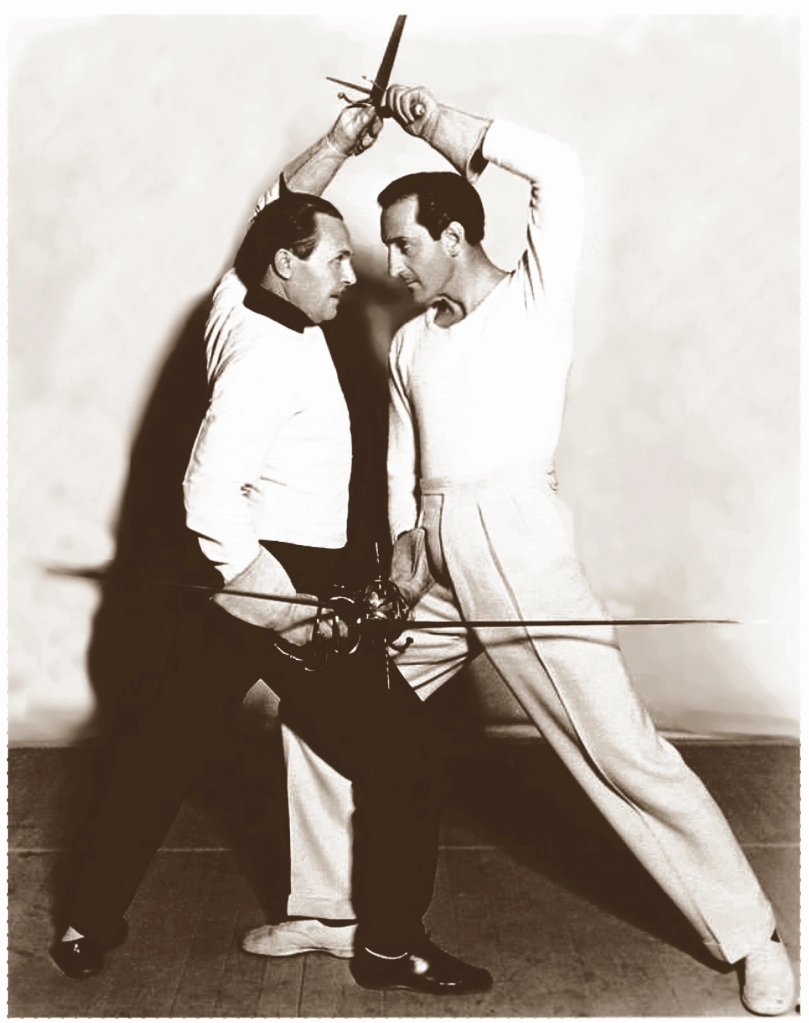
Long, Lean, and Lithe
One visual aspect of the duel that immediately stands out is that of two long, lean, lithe swordsmen — literally almost living swords themselves — engaged in mortal combat. Fred Cavens noted that “the ideal duelist is tall, lithe, quick on his feet, and with a nice swift coordination of of eye and muscle.” (Whitaker, 1936.) Both Flynn and Rathbone easily met this ideal.
Agesilao Greco, in his great book La Spada e la sua Disciplina d’Arte (1912), described the dueling sword — the spada or épée de combat — in terms that could apply not only to long sharp thrusting swords themselves, but to those who, with similar physical characteristics, wielded them, perfectly imagining the idealized adversaries in Captain Blood as played by Flynn and Rathbone:
“La spada è acuta, pungente, affilata, forbita, fatale, formidabile, lucida, nuda, fina, forte, ben temprata, nobile, perfetta.“
“The epee is pointed, biting, sharp, forbidding, fatal, formidable, shiny, naked, fine, strong, well-tempered, noble, perfect.” (Author’s translation.)
That said, there are outstanding fencers who are not only not long, lean, and lithe, but who appear awkward, lacking any sense of classical form. But it’s those built like Flynn and Rathbone who arguably look best in screen duels.
Fred Cavens put it best: “Film fencers should have perfect grace and form, qualities which are not necessary in competition… I have seen Olympic champions who had such atrocious form they couldn’t appear in pictures because audiences would laugh at them. But they would be extremely dangerous in a real duel.” (Behlmer, 1965.)
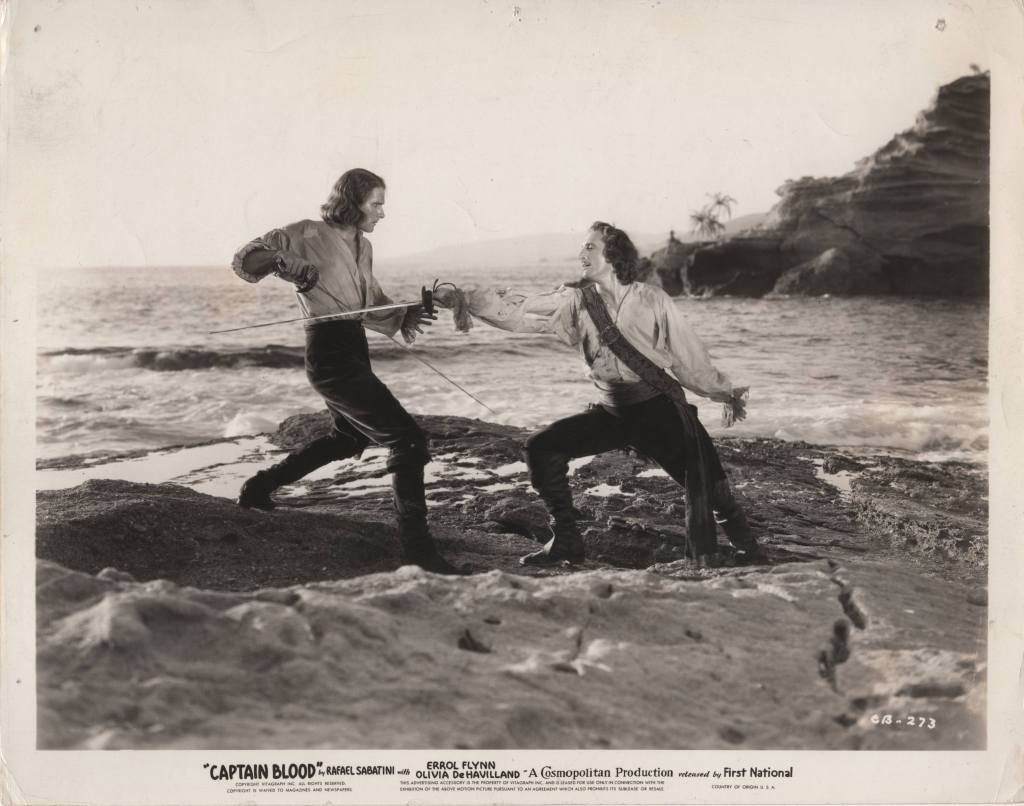
Flynn, and probably Rathbone as well to some degree, are also responsible for popularizing “6′ 2″ and 180 pounds” as the masculine ideal in height and weight. Fan pages and unauthorized biographies often list the height of both men as 6′ 2″ inches, although in fact both men appear to have been around 6′ 1″ tall. Flynn probably did weigh around 180 pounds. Rathbone in his autobiography gives his own weight as consistently 172 pounds (and it’s not improbable that he claimed a couple of pounds he didn’t have).
But it was Flynn who really set the ideal, thanks to a 1936 article in the Los Angeles Times: “but he [Flynn] also started a vogue for handsome young six-foot-and-over-super-huskies as leading men which hasn’t been equaled before in screen history…it began to be realized how six feet two inches and 180 pounds of 26-year-old virility could knock ’em over at the box office.” (Wolfenden, 1936.)
And so it went from there. I still recall in the 70s and 80s men trying to impress women, and even other men in locker rooms, by their purported “6′ 2″ and 180 pounds.” The fact that half of them stood an inch or two shorter than me, who’s a hair over 6′ 1″, seemed to matter not at all to them.
So engrained was this ideal that George MacDonald Fraser in his comic, occasionally satirical, novel The Pyrates (1984) made his Boy Scout-ish naval hero, Capt. Benjamin Avery, “everything that a hero of historical romance should be; he was all of Mr Sabatini’s supermen rolled into one, and he knew it… For the record, this wonder boy was six feet two, with shoulders like a navvy and the waist of a ballerina…”
Fraser didn’t forget Rathbone: “gentlemen-adventurers proud and lithe and austere and indistinguishable from Basil Rathbone…” Further, the character of “Bilbo is Basil Rathbone playing a raffish Captain Hook.” The novel is an homage to the Golden Age of piratical swashbuckling books and films of the 20s, 30s, and 40s.
The Swords


Historically, if thrusting swords were used in a late 17th century duel among the English and Europeans other than the Spanish, Portuguese, and some Italians, they would usually have been smallswords with double-edged flat or hexagonal (or similar) rapier-like blades in form but shorter, or three-cornered blades, including Colichemarde blades quite broad at the forte. We can’t rule out an occasional “transitional rapier” (a modern term) with perhaps longer blades and possibly larger hilts. At least one was recovered from the Sedgemoor battlefield in 1685 (which battle plays a great role in the novel and film), probably dating 1640 to 1660.
Sabatini describes long rapiers as being used, and probably intended Spanish cup-hilts or transitional rapiers. However, the term was also used as slang for smallsword in the late 17th century, given that both swords were used for thrusting, so it could still be correct to say that “rapiers” were used. Historically, however, cutlasses would have most often been used (more on this in part five).


In the film, both swords are theatrical “rapiers” mounted with sport epee blades, known in the past as “hollow,” three-cornered, or triangular blades. They are stiffer by comparison to foil and saber blades, and show up well on screen. The hilts of both swords used in the film duel are a bit fanciful, neither corresponding exactly to historical swords. Flynn’s appears to something of a reduced Pappenheimer hilt (for example, a Norman type 67 but with no side rings), with two solid shells, a pair of curved quillons, and a knuckle guard, perhaps also resembling a shallow Spanish bilbo-hilt (Norman type 82) with smaller shells.
Rathbone’s rapier hilt appears to be nothing more than a common smallsword hilt (Norman type 112) but with enlarged shells, rings, and quillons. One might argue it is instead a small-hilted Spanish “dueling rapier” or “Spanish smallsword” (as some call it) — an espadín — of a sort that was introduced 1680 to 1700 and became even more common after a Bourbon began sitting on the Spanish throne. Most of these have large (as compared to French smallswords) rounded shells, or smaller, shallow cup-hilts, or smaller “bilbo” hilts, but occasionally one with large mostly flat shells, as with Rathbone’s, is seen. Perhaps a bretteur or spadassin (a thug with a sword), as Levasseur clearly was, preferred the longer blade of the transitional rapier or espadín to that of French smallsword in order to gain an advantage. That said, the heavier transitional rapier and Spanish smallswords would be at a disadvantage in speed as compared to the true smallsword.
The sword designer — Fred Cavens, perhaps, or more likely pirate historian and costume designer Dwight Franklin — was probably thinking of swords that would evoke “Cavalier” or “Musketeer” rapiers of some sort.
The enlarged hilts of the theatrical rapiers used provided a better film image, or so the thinking probably went, than the smaller, but more legitimate, authentic smallsword hilts. Plus, viewers have been conditioned by fiction and film to expect rapiers no matter the era, no matter how anachronistic. For filming, the larger rubber buttons or points d’arrêt were removed — more on this below!
Choreographer & Choreography
The duel was choreographed by famous swordfight director Fred Cavens. He began fencing at twelve years old circa 1894, was teaching other boys how to fence at fourteen, and graduated at eighteen from the famous L’École Normale de Gymnastique et d’Escrime Militaires de Belgique in Brussels, a school modeled on the famous French military school at Joinville-le-Pont near Paris. At twenty-one he was a full-fledged fencing master in the Belgian army.
After his service in the Belgian Army, Cavens emigrated to the US in 1919, soon after both his marriage to a Belgian dancer in an opera company and the end of World War One. He was invited by some American sportsmen, fencers we assume, to open a salle in Santa Barbara, California, leading to an introduction to various film studios, whose swordplay on camera to date, other than that choreographed by fellow Belgian master Henry J. Uyttenhove, was often little more than knife-sharpening actions, often in long shots, or was entirely doubled (which generally demanded long shots in order to carry out the deception). (Anon., 1936.)
Cavens got his start in Hollywood choreographing the swordplay for the 1922 short film The Three Must-Get-Theres, a parody of Douglas Fairbanks’s 1921 The Three Musketeers. The comic film is quite funny, even brilliant at times, and is possibly the best send-up of swordplay and musketeers I’ve seen. Although there are moments of common “blade sharpening” fake swordplay, most of the fencing is of outstanding caliber. In fact, director and star Max Linder was an accomplished fencer who had competed in epee, if not also in foil and saber. The film, by the way, is available on YouTube in a couple of versions, and also on a Grapevine DVD. The latter is by far the better version.

Fairbanks loved the swordplay in the comic film and first met Cavens on the set of Dorothy Vernon of Haddon Hall, a production starring Fairbanks’s wife Mary Pickford. Fairbanks quickly hired him for Don Q, Son of Zorro (1925) and then for his genre-establishing 1926 swashbuckler The Black Pirate the following year. Cavens also choreographed the swordplay in Fairbanks’s The Man in the Iron Mask (1929). (Behlmer, 1965.)
Cavens had a theory of romantic realism — a bit more romance, a bit less realism, with authentic if at times theatrical fencing — for filming swordplay on the screen, a theory that worked quite well in practice from the audience’s perspective.
“For the screen, in order to be well photographed and also grasped by the audience, all swordplay should be so telegraphed with emphases that the audience will see what’s coming.” (Behlmer, 1965.) This, of course, is a form of false tempo, discussed here, that would likely get a fencer killed in a duel. But it works well for the audience — and that’s the goal.
Behlmer further quoted Cavens: “All movements — instead of being as small as possible, as in competitive fencing — must be large, but nevertheless correct. Magnified, is the word. The routine — there must be a routine, and so well learned the actor executes it subconsciously — should contain the most spectacular attacks and parries it is possible to execute while remaining logical to the situation. In other words, the duel should be a fight and not a fencing exhibition, and should disregard at times classically correct guards and lunges. The attitudes arising naturally out of fighting instinct should predominate. When this occurs the whole performance will leave an impression of strength, skill and manly grace.”
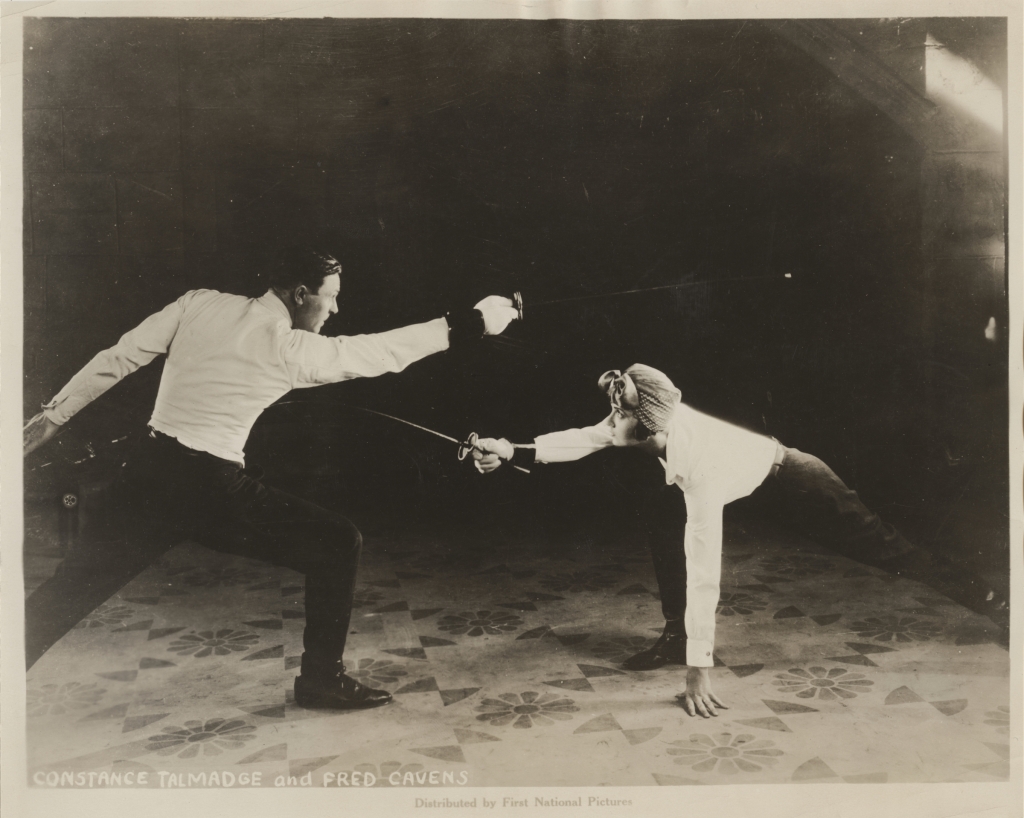

Cavens prepared actors, ranging from Flynn and Rathbone to Maureen O’Hara, Binnie Barnes, Jean Peters, and many others, thoroughly, teaching them not only the scripted swordplay itself, but also fencing in general. Maureen O’Hara in her autobiography described her preparation for At Sword’s Point (1952): “I trained rigorously for six weeks with Fred Cavens and his son to perfect my stunts for the picture. Fred Cavens was an outstanding Belgian military fencing master and had trained all the great swashbucklers in Hollywood. He taught me intricate attacks and parries, envelopments, disengagements, and coupes. Physically, I’ve never worked harder for a role.” For The Corsican Brothers (1941), Cavens coached Douglas Fairbanks Jr. for a month prior to filming. (Brady, 1941.)
His process was described by Thomas Brady: “Cavens’s greatest value to a producer is his ability to prepare a fight with the precision of a choreographer. No impromptu bout, he says, looks truly exciting to the camera. His technique with a picture follows a regular pattern. First, with the director and the camera man, he examines the sets to be used for fights and learns in general what the action must be and how much time it shall take. Then, in the esoteric language of the swordsman he writes down every move the attacking fencer will make. For a three-minute fight in Fox’s “The Mark of Zorro,” Cavens’s “score” ran to 750 words. Tyrone Power and Basil Rathbone had to memorize it… Even when Cavens and his own son fight a duel on the screen, as in “The Corsican Brothers,” they memorize a “ballet” routine beforehand.” (Brady, 1941.)
The Duel Master Scene in the shooting script by Casey Robinson includes the following notes, which depart from Sabatini for whom Levasseur was a mere thug and bully in both his life and his swordsmanship:
“The details of this duel must naturally, be worked out by an expert in this line. We wish to emphasize here the general nature that this fight must have. Usually duels in pictures are contests between some agile, brilliant, hero and a slow and dull witted, even though powerful villain. Such is not the case here. Here we must have a great fight between two truly great swordsmen, equally matched in quickness, brilliance, and skill. It is not a fight to the first advantage or the first spilling of blood, but a fight to the death. It is a vicious, terrific battle in which both men take a great deal of punishment before the final conclusion. In other words, the fight would be routined not after the order of duels that have been shown in pictures, but rather after the order of some of the great rough and tumble encounters that have made their pictures famous notably, the fight in “The Spoilers”. Thus, before the battle is finished, part of Blood’s clothes have been cut away and he is very much marked up by Levasseur’s sword.”
Note that dueling was still in vogue in France, Italy, and Hungary at the time of filming (although WWI had diminished the practice significantly, WWII would almost entirely put a stop to it), thus the comments on first advantage and first blood have more than purely Hollywood relevance. In fact, my first fencing master, an active swordsman during the 1930s and trained by the famous Italo Santelli, had fought at least one duel in Budapest in the 1930s. Fred Cavens had acted as directeur de combat for several duels and had fought as many more. (Anon., 1934.)
[Quick aside: until a couple or so decades ago, referees in modern fencing in the US were referred to as directors, from directeur de combat, the person who supervised a formal duel. If the competition were non-electric, the director might be referred to as the President of the Jury, for the president presided over four judges. Today, the term “referee” is used, the powers-that-be rather incredulously arguing that the name change would make fencing more accessible to the still largely imaginary audience. “One fool makes many,” according to the proverb.]
According to the LA Times, Cavens also trained “one hundred fifty men…in the art of being pirates at the Warner Studio” for Captain Blood. “They go to school every day for eight hours to fence under the tutelage of Fred Cavens… He is also teaching them how to climb riggings and other tricks of the trade.” (Kendall, 1935.) Certainly Cavens would have trained the pirates in cutlass-play, but as for teaching “pirates” to climb aloft, although Cavens would certainly know how this was done given his experience on Douglas Fairbanks’s The Black Pirate (1926), we imagine Sailor Vincent (see below) or some other salty seafarer was actually responsible for this aspect of training.
Filming the Duel

Shooting a duel could take days, and one author (Matzen, 2010) notes that shooting this one was hindered by “bad weather, milky gray skies, [and] audio challenges brought on by the pounding surf,” and two actors who could not fence — in fact, it was only Flynn who could not fence. The Virgin Magra scenes, including the “pearls before swine” build up to the duel, were shot September 16 through 18 and 24 through 26, with delays caused by cloud cover, aircraft, and high fog. Some takes were shot with artificial light (Florczak, 2022).
“These scenes take, Lord knows, how many set-ups. For instance, they will not take a long shot alone; they’ll take a master shot, then a medium shot and then take some close-ups. Any fight that lasts five minutes on the screen could easily take two days to shoot,” said Basil Rathbone (Jones, 1972).
According to Rudy Behlmer (1965), “When the duel is shown to the director, he, and perhaps the cinematographer, may alter the set, props and lighting. After which, the duel routine is broken up into master shots, close-ups, special angles, etc., and photographed with either principals or doubles, depending upon the actors’ capabilities and the specific shot.
There is a myth that director Michael Curtiz engaged in swordplay himself during the filming: “Curtiz, who is quite the swordsman himself, having been a member of the Hungarian Olympic team in 1912, would fight with each of them first, to show how he wanted it done.” (Whitaker, 1936.)
This of course, is nonsense, at least regarding the Olympic Games, and probably in its entirety as well. Curtiz, although apparently fond of claiming he was on the 1912 Hungarian team, does not appear to been an Olympian. I have not found his Hungarian names (Manó Kertész Kaminer and Kertész Mihály) or anything similar among the fully detailed records of the foil, epee, and saber events from first pools to final of the 1912 Games. Even so, numerous biographies repeat the myth as fact, although occasionally the word “allegedly” is used. For good reason did Cavens, not Curtiz, choreograph the duel.
Doubling of the sword-fighting actors was common at the time, including in Captain Blood. “The villains, especially Basil Rathbone, are splendid fencers, but the heroes, according to Mr. Cavens, are ineffectual fellows when it comes to cold steel… And when the script demands that he [Errol Flynn] resort to the sword to defend his honor, Warner Brothers resorts to Mr. Cavens.” (Brady, 1941.)
However, Fred Cavens, as proved by the photo below, as well as others farther down, doubled Rathbone, not Flynn, when necessary during the duel. In fact, Hal Wallis complained of the dailies of the duel, noting that the wigs and costumes of the doubles were terrible as compared to those of the actors. The photos below show he had good reason. Thankfully, the doubles were used only in the long shots, as far as I can tell, in the final cut.


Flynn was doubled as necessary by Caven’s assistant, Ralph Faulkner, soon to become one of Cavens’s principal Hollywood heirs. Faulkner had been a member of the US Olympic saber team at the 1932 Games: “One of the mysteries in the competition between Poland and the United States was the removal of Ralph Faulkner, the only Southern Californian on the team, from the American line-up. Faulkner had been entered in the contest with Hungary and had succeeded in taking two of the three bouts for America in her score against that country.” (Durbin, 1932.)
A mystery indeed! [And a brief digression!] The Hungarians ruled saber for fifty years; their national saber championship was tougher than the Games themselves, so deep were the Hungarians in elite sabreurs. That Faulkner could win two of three bouts against the Hungarian team that would win gold is amazing — no other fencer at the 1932 Games won more than one bout against them (in fact, for fifty years a total of slightly more than 30 Hungarian sabreurs won nearly every elite competition in the world) — and should have guaranteed his inclusion in the bronze medal bout against Poland. However, the elitist East Coast prejudice against his Southern California roots is not out of the question, and this probably cost the US a medal: the US lost to Poland by a single touch.
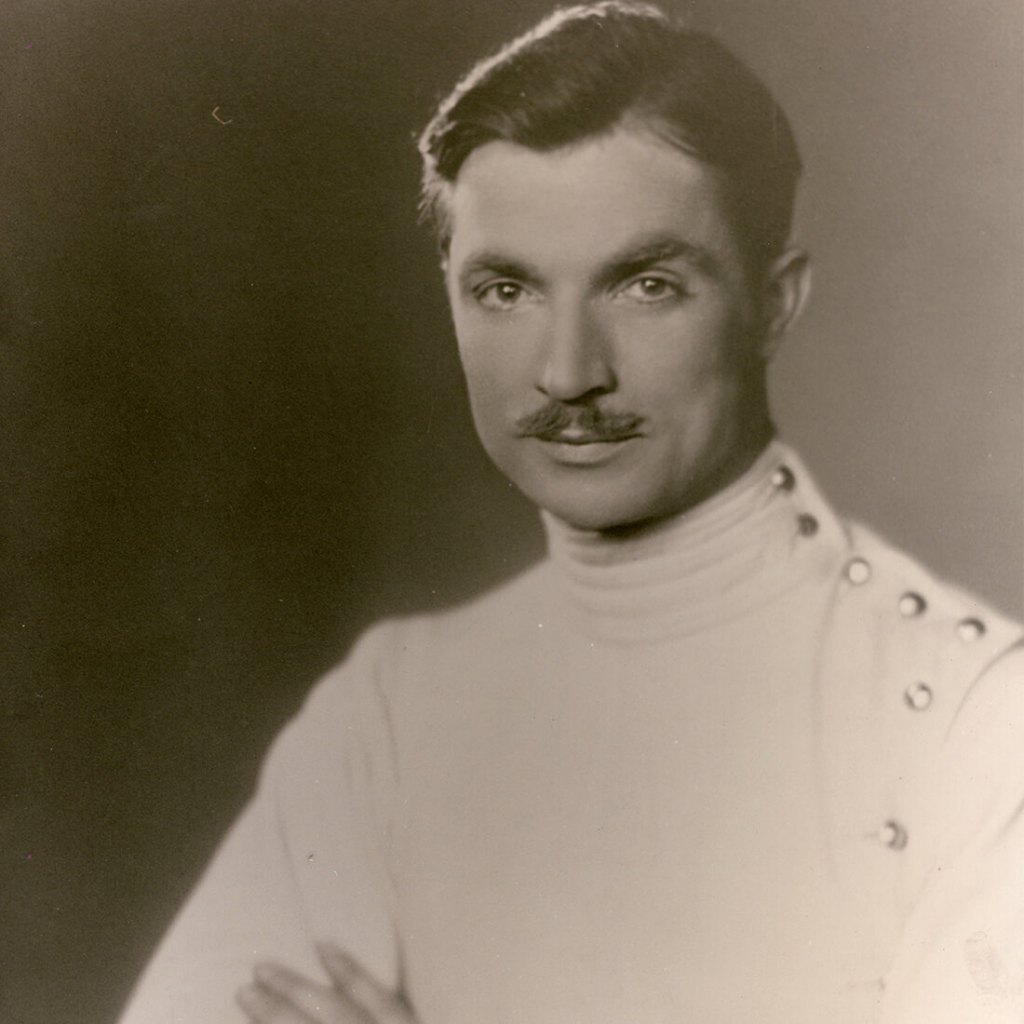
One of the methods of excluding “outsiders” was via cheating by side judges and bout directors during championships: the director had one and a half votes, and each of the two side judges watching a single fencer had one vote each and could therefore overrule even an honest director. The other method, common in the first half of the 20th century, was exclusion by the committee “choosing the best fencers” or even by a team captain during events. I’m speculating, of course, but these latter two means were probably the way Faulkner, an outsider, was excluded from the bronze medal match — and entirely from the individual events in the 1928 and 1932 Games.
[Warning: further fascinating digression ahead!] In fact, until the 1950s team selection in US saber fencing was reportedly largely ruled by the “New York saber Mafia,” as many non-New York fencers called the narrow-minded, cliquish US saber fencing establishment, and a number of deserving fencers failed to make the US team due to prejudice against them, including at times of race and religion. The brilliant Herb Spector, described by one of my masters as the best saber fencer in the world in a two-touch bout, springs immediately to mind, among others. I have both met and fenced Herb: he was the personification of the highest praise of Dr. Francis Zold, my first fencing master, that of being both a gentleman and swordsman. This unsportsmanlike, even dishonorable, practice arguably had its roots in the at-the-time elitist Fencers Club of New York. (The Fencers Club of NY still exists, although some suggest that its past arrogant elitism may have passed into the hands of the New York Athletic Club. Please note that no suggestion of dishonorable or unsportsmanlike conduct is herein made toward either club today, in part because I don’t like wasting my time with NY lawyers, or any lawyers, although the sense of elitism, for good and bad, remains according to some observers.)

Faulkner himself confirmed bias as the reason he was only permitted to compete as part of the US Olympic saber team in both 1928 and 1932, and not in the individual saber events: the controlling Eastern Establishment “didn’t feel a savage from out West could be superior.” (Folkart, 1987.)
The “Mafia’s” spine, at least in regard to the Olympic Games, was broken when Hungarian gold medalist saber fencers, including one of my own masters, Dr. Eugene Hamori, emigrated to the US after the Soviet Union brutally crushed the Hungarian uprising in 1956 during the Olympic Games. The Hungarians’ technique was so superior and clean that any cheating against them would have been far too obvious.
And if this clear superiority didn’t stop the mischief, I’ve seen how some of these Hungarians dealt with cheating directors and side judges clearly in cahoots with the opposing fencer: they would drop the opponent to the strip with a welting chest cut, making the hit overtly clear even to the most willfully blind. (I’ve also seen the technique used once by a Hungarian Olympic medalist in New Orleans frustrated with the director, a friend of his — and the fencer he dropped to the ground was also a friend. Temper, temper…)
However, even as late as the 1970s the “Mafia’s” influence was still apparent to some degree, at least in the Junior Olympics, according to several fencers I knew. As a friend of mine noted at the time, he could beat any of his fellow elite junior New York competitors anywhere in the US and world — except in New York City. A bout director there even shrugged in apology to him once, after the two side judges were repeatedly, and clearly deliberately, blind to his clean touches made with undisputed priority.
Faulkner was still teaching fencing at his salle, Falcon Studios, aka the Faulkner School of Fencing, in Hollywood, when I first started learning in 1977. By then he gave lessons seated and was nearly blind, or so I was told, but his lessons were still extraordinarily instructive in blade-work. I was advised to take a lesson just to say I had, if nothing more, but never managed to do so in part because I was well-satisfied with my own swashbuckling master, Dr. Francis Zold. (I was also a college student in LA without a car.) Many Hollywood and stage fencing choreographers — Anthony De Longis comes quickly to mind — studied under Faulkner and by their own admissions owe much to him. Maestro Faulkner died in 1985 at the age of ninety-five.
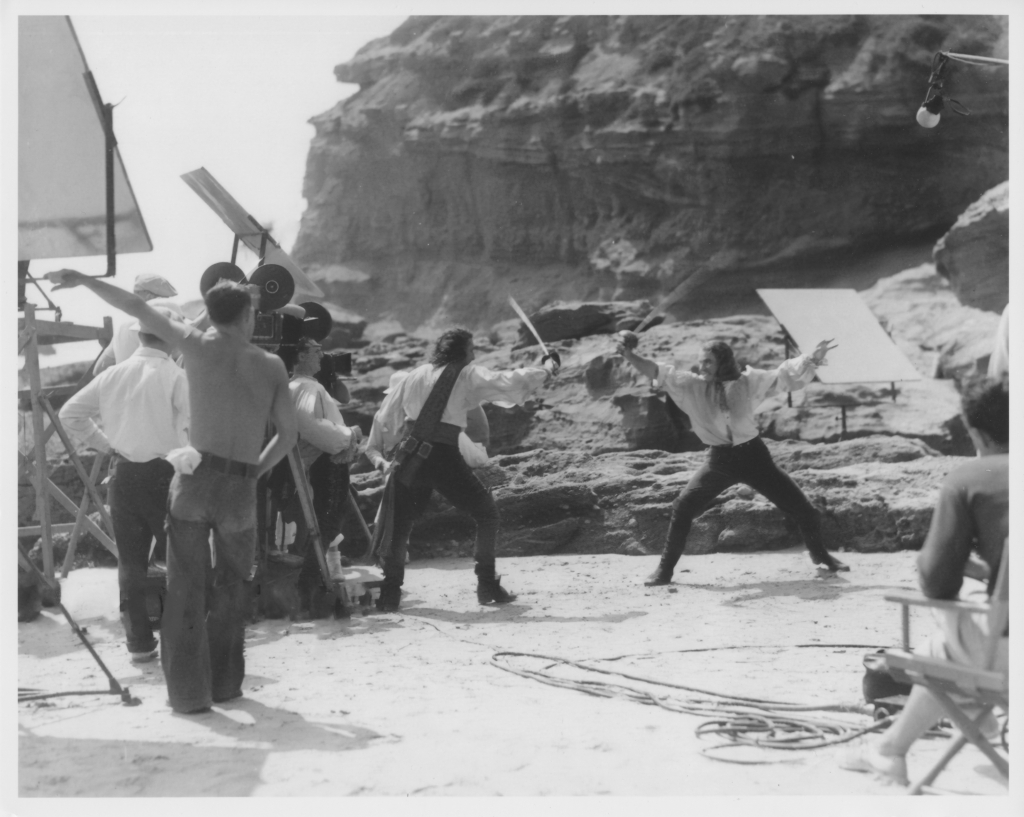
But back to the filming of the duel! Flynn was noted in the production of later films as having a drinking problem on set, which in the case of swordplay would be quite dangerous.
Whether Flynn drank during the filming of the duel in Captain Blood is not noted anywhere I can find. According to Maureen O’Hara in her autobiography, “I enjoyed working with Errol because he was a pro. He always came to work prepared. He rehearsed hard and practiced his fencing sequences very meticulously with Fred Cavens… He also knew his lines, something I greatly respect in an actor. Of course, there was one glaring inconsistency with his professionalism. Errol also drank on the set, something I greatly disliked. You couldn’t stop him; Errol did whatever he liked. If the director prohibited alcohol on the set, then Errol would inject oranges with booze and eat them during breaks. We worked around his drinking. Everything good that we got on film was shot early in the day. He started gulping his “water” early in the morning and by four P.M. was in no shape to continue filming.”
Flynn himself describes in his autobiography how when filming a boarding scene during the production of Captain Blood he fell to the ground with an attack of malaria or blackwater fever. He cured the shaking, shivering weakness of the attack with a bottle of Cognac suggested, he says, by the crew. He was called on the carpet by Jack Warner the following day as the result of this drinking: “The script girl tipped me off. They had rushes of the scene I finished after the bottle of cognac. In the film I was waving the sword about like a Cossack, shouting lines that weren’t in the script, and had almost fallen off the boat. A bit of real drunken acting.”
The filming of the duel was publicized in small ways in advance of the movie’s release. The press package claimed, for example, that “Actor Breaks Three Rapiers in Duel,” which is probably true in reference to blades. Hilts might break, but are generally much sturdier. It would be surprising if spare rapiers and blades were not on set during filming. Even so, according to a press clipping, a “rush order for additional rapiers was sent out when Errol Flynn…broke three of them during the filming of scenes in which he has a duel with a rival pirate…”
Also according to the Warner Bros. publicity package for the film and often repeated as fact, Flynn “received two small wounds during his battle with Basil Rathbone.” A separate publicity clip for newspaper release noted four: the “most serious wound was on the actor’s head, slightly above the left temple. He also was cut by his opponent, Basil Rathbone, near the right eye, on the neck and on the right forearm.”
And according to one reporter, “they really drew blood too, so that Flynn had some actual wounds to be doctored after that exciting buccaneering day.” (Whitaker, 1936.)
Although injuries do occur on occasion in well-prepared, well-choreographed swordfights, those listed here are probably pure invention for the sake of publicity: Rathbone in his autobiography states that he never hurt anyone when filming any fencing scene, nor was hurt by anyone. The photograph of Flynn below shows the “wounds” — and they appear to be nothing more than those created by a make-up artist for the scene. If Flynn were wounded during the filming of the duel, it would have therefore been by Fred Cavens, and surely due to Flynn’s own error. I think it also possible but highly unlikely that Cavens would have deliberately hit Flynn as a reminder to be careful — or not to do anything too stupid or too dangerous that might hurt his film adversary. (This can, however, be an effective teaching method with a blunt tip used during an egregious error made by a student without a jacket, although not all students are suitable to this practice.)
At one point, again according to the press package, Flynn fell off a cliff at Three Arch Bay during filming:
“Flynn was doing a scene depicting a duel with rapiers between himself as Pirate Blood and Basil Rathbone, who portrays the role of Levasseur, French buccaneer and Blood’s rival. In order to give the scene added drama, Director Michael Curtiz had Flynn drive Rathbone at swordspoint onto a small ledge on the side of a cliff overlooking the bay. The cliff was not quite perpendicular, however, sloping off gently so that the ledge was about ten or twelve feet shoreward and forty feet above the water line.
“With the cameras grinding, Flynn backed Rathbone onto the ledge according to instructions. For several minutes the rapiers of the duelists flashed. Then, suddenly, a shout of dismay rose.
“Flynn had tripped on a small rock and toppled outward from the ledge. Slowly at first, he strove to regain his footing, but in vain. When he finally realized there was no chance of saving himself, he put all his power into an outward leap. He soared out from the ledge, cut cleanly into the water, missing the base of the cliff a mere matter of inches. He swam to the beach unaided.
“A less powerful man than Flynn could not possibly have put the force behind his leap to clear the base of the cliff… [He] suffered nothing worse than a slightly lacerated knee which scraped a submerged rock.” Although it’s entirely possible that the incident did take place, Hollywood clearly does love hyperbole, not only for the sake of publicity, but for its own sake. Flynn even reportedly “rescued” Olivia de Havilland after a wave swept her into the ocean (Amburn, 2018). Separating fact from fiction is Hollywood is difficult, and fans often prefer the fantasy.
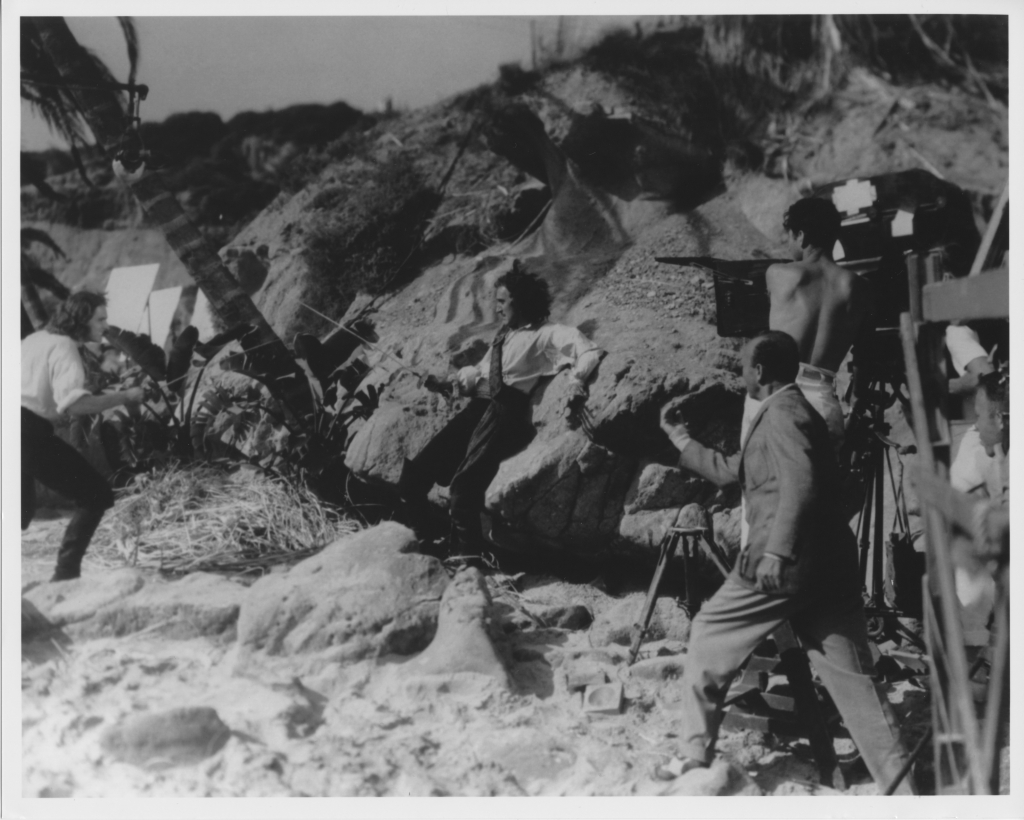
The shooting of the duel wrapped up near dusk on the final day (probably September 26). Rathbone tells an anecdote (Jones, 1972) about how “Sailor Vincent,” the nominal head of the pirate extras and, according to the press package, an “all-Navy welterweight boxing champion,” asked Flynn and Rathbone near the end of a day’s shooting if they were going to wrap it up that day or give the extras another day to get paid. “Our reputations as swordsmen were at stake,” Rathbone said, and so they decided to finish the shooting that day. They were probably quite ready to get past the exhausting shooting of the duel.
“Now what we had to do was this:” Rathbone said, “a man stood with a stopwatch, and he timed the waves coming in. There was a short routine in which Flynn had to get me, kill me, and I had to fall exactly as a wave was coming in. If I fell exactly as a wave was coming it, it would cover me with water and as it went back out again, there I would be lying on the ground with my eyes wide open. You try lying with your eyes wide open, and sea water in them without blinking. Well, we did it! Exactly to the second, we timed the swordplay which took fifteen seconds. At the end of fifteen seconds I had to fall and the wave had to come in and I had to fall into the wave. This happened exactly to the second.
“The thing that Flynn and I expected was that Sailor Vincent would come across and say, “Well, thanks for nothing!” Instead of that, all the extras applauded loudly. They were so thrilled at the sheer skill of it because this required beautiful timing and Flynn and I worked very hard on the sequence.”
After a few more shots, and with the sun soon too low at 4:30 to shoot, filming of the duel finished and everyone went home. Rathbone noted that had they failed to get the final scene correct, they would have had to shoot again the next day because he would have had to wait for a new, dry costume.

The Myth of “Sharp Tips” Used in the Film Duel
There has long been a myth that director Michael Curtiz demanded that the tips be removed from the rapiers so they wouldn’t show up on film, and therefore the actors fought their duel with sharp points. This myth, among other issues, demonstrates a lack of understanding of how practice fencing swords are constructed and used.
The rapiers used in the duel were mounted with “dry” (i.e. non-electrical — electrical scoring was introduced the following year at the Olympic Games) epee blades, which might be considered a reasonable facsimile of the “three cornered” blades of many smallswords of the 1680s. Unlike modern epee blades, which are wider at the forte (the third nearest the hilt) and thicker at the foible (the third nearest the point), epee blades for most of the 20th century tended be narrower at both forte and foible than modern blades.
Practice dry epee blades were not, and are not, sharp, but instead are forged with a flat tack-like tip, often only slightly larger in diameter than the distal end of the blade. For “dry” practice in the 1930s (which was nearly all practice back then) either a hard rubber “button” was placed over the flat tip, or a point d’arrêt with three small sharp points was lashed to it with linen thread, dental floss, or very narrow (1/16″) cloth tape. There was no sharp point beneath. See the image below.
For shooting a duel scene in any film of the era, the rubber buttons or other points d’arrêt were typically removed, leaving the flat tips which made for better visuals. The flat tips are not as obvious on film but still could be dangerous, to eyes in particular, and required well-rehearsed actors for safety. The flat tips could also scratch or even make shallow cuts in the worst cases, but were not a significant threat to life or limb except, as just noted, to eyes. Typically only a wound from a broken blade might be life threatening.

However, according to some sources citing cameraman Hal Mohr (Davis, 1971, for example), the tips of the blades were broken off at Curtiz’s demand, leaving sharp points. This not only strains belief but is easily disproven. Breaking a fencing blade is relatively easy but breaking it immediately behind the flat tip is not. It would usually require a strong cutting tool or a hacksaw blade to cut the blade just behind the tip, and would indeed leave a much more dangerous point, something no fencing master would permit in the hands of even a talented amateur such as Rathbone, much less an unskilled fencer like Flynn.
I once choreographed and engaged in some fencing with sharp, pointed scimitars for a documentary. For safety it was necessary that both of us were highly skilled with pointed and edged weapons, we rehearsed and memorized the routine thoroughly beforehand, and during actual filming we worked at about half the speed we were capable of. Anything else with sharp or pointed swords could easily have led to serious injury or fatality.
Notably, of the many original still photographs of the Flynn-Rathbone duel in my collection, at least of those in which the points are in focus, none show sharp or broken points, but instead, as expected, the typical flat points of practice epee blades. See below, for example. The photographs of the duel were taken at various stages of the its filming. The flat tips can even be seen in some of the scenes on film when watched frame-by-frame. Further, it is hard to believe that if Rathbone and Flynn had fenced with sharp points, Rathbone would not have mentioned such a dangerous undertaking in interviews or his autobiography. Again, we have a myth promoted by the Warner Bros. publicity machine and accepted at face value by much of the public.

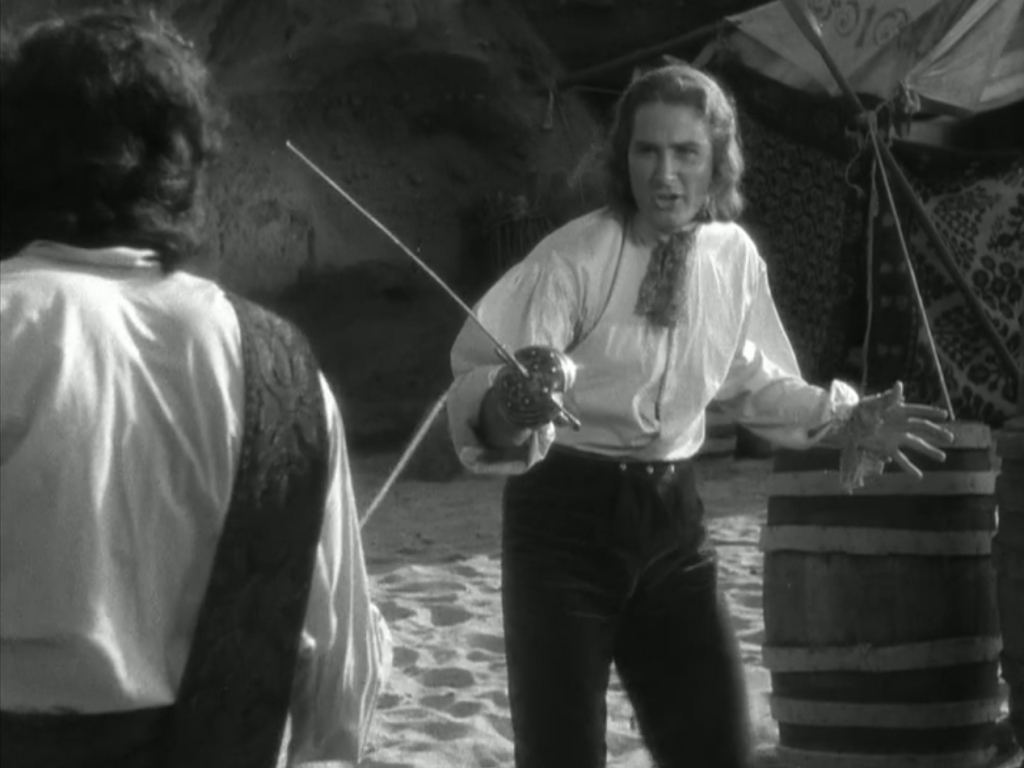
The Musical Accompaniment

The film score was composed by Erich Wolfgang Korngold, who largely created the modern practice of classical composition for film music. Korngold reportedly had only three weeks to compose it, and was assisted by orchestrator Hugo Friedhofer. Nearly all of the film’s music is original, with one major exception and a few minor associated additions. In addition, two minor pieces — songs sung by Spanish soldiers and seamen — were composed by Milan Roder.
The major exception, of course, was the score for the duel on the beach. Reportedly, the film’s preview had been moved up and the score had to be completed within twenty-four hours. Out of time, Korngold adapted Frans Liszt’s symphonic poem Prometheus to the duel, a circumstance that apparently offended his sense of artistry and professionalism. It also led him to refuse to have the credits list him as composer, and instead as musical arranger, in spite of his having composed the majority of the film score. For this reason the score was not nominated for an Academy Award, sadly. Korngold’s original film compositions — “opera without words” and “symphonic poems” — and method of scoring changed Hollywood film music forever.

According to Brendan G. Carroll, Korngold gave Friedhofer the Liszt score along with a new introduction and coda at 8:30 PM the day before it was required. Friedhofer spent the night arranging the adaptation. At 7:00 AM a messenger picked up the orchestration for copying. It was recorded that afternoon. That said, elements of the Liszt’s Prometheus also appear in the tracks “Peter is Bound — Pirates!” and “A Timely Interruption,” the latter of which is really a continuation of the former.
The 2001 Tsunami Captain Blood soundtrack (TSU 0141) above is the only one I’m aware of with the entire film score, including the duel. The thirty-one tracks provide an hour’s worth of neo-romantic swashbuckling listening pleasure. Out-of-print and now often listed at high prices by vendors hoping to make a quick extra buck, if you’re patient you can usually find a reasonably-priced copy. It’s my favorite of all the vinyl and CD Captain Blood soundtracks, and probably my favorite of all the full swashbuckler scores available on CD (or whatever else soundtracks are published via these days — I’ve never stopped listening to and collecting vinyl and CDs even as I’ve added other media to our collection, although I did long ago abandon cassette tapes).
Liszt’s Prometheus is also excellent listening. It’s often included on collections with Liszt’s Preludes, in which case you can also enjoy the overture to the old Flash Gordon film serial, a “space opera” — which was by definition a Western set in outer space. Our most popular modern version, arguably of both space operas and Westerns, is Star Wars and its many serializations. Star Wars has also taken over most of the old classic swashbuckling genres, to my dismay.
The Duel!

And now the duel itself. The best way to enjoy it — in fact, the only way — is to watch it. For those with an interest in the actual fencing details of the choreography, I’ve included a few annotations below. Fencing enthusiasts, feel free to disagree with my observations and assessments!
The fight really was between two true adventurers. Flynn was an Irish-Australian born and raised in Tasmania. In his autobiography describes himself in his youth as a “devil in boy’s clothing,” and after numerous misadventures leading to his eighteenth year he entered several years of seafaring adventure and fortune hunting — tobacco planting, gold mining, and various sea trades — associated with Papua New Guinea. An athlete but never a fencer, he does fondly describe playing with a sword an ancestor had taken from Captain William Bligh during the infamous mutiny, and he denounces his father for giving it away to the Naval and Military Club at Hobart.
Rathbone was the Patrols Officer of the Second Battalion of the Liverpool Scottish during WWI, and was awarded the Military Cross for heroism for his intelligence collection patrols, in particular one in which he led a small party across “No Man’s Land” into the German trenches for intelligence during daylight. At one point Baron von Richtofen, better known as the Red Baron, and his Flying Circus, which included future Nazi leader and convicted war criminal Hermann Goerring, flew a mere one hundred feet overhead, strafing the British line. In the enemy trenches, Rathbone, using his service revolver, shot and killed a German soldier. Documents taken from the soldier’s pockets indicated that a retreat was imminent. Rathbone led his men out safely under heavy machinegun fire. (Rathbone, 1962.)

The duel could not have been easy to film and fight in the sand, a surface which presents its own special difficulties. The rear foot tends to slip on the lunge. Turning the foot onto its inner edge is helpful (as some 17th and 18th century masters note), as is pushing more outward than directly behind on the lunge with the rear foot, as is maneuvering the fight onto the area of wet compacted beach between the soft dry sand above and the wet saturated sand below, or onto an area of vegetation. But at least the implausible “pirate boots” — buccaneers and pirates didn’t wear them unless on horseback — would keep sand out!
The duel begins with Flynn wearing what at first appears to be a sleeveless waistcoat but is in fact a coat with different-colored sleevesl or long-sleeved waistcoat, with a baldric worn over a sash, apparently sewn or otherwise un-historically attached to the sash to keep the former from bouncing around. Rathbone is in his shirtsleeves, but likewise with a baldric worn over a sash. Eyewitness images of buccaneers in the 1680s — the only eyewitness images of any European-derived sea rovers during the Golden Age of Piracy — do show sashes on French buccaneers, but not baldrics. Sword-belts were worn instead, given their convenience, and they’re also not as hot. If a baldric were worn, it would typically have been worn beneath a sash to prevent it from bouncing around. (Why baldrics over sashes rather than under them as more practical? So they baldrics could be removed while leaving the romantic sashes in place.) I’ll discuss this further in part five of this series.
And now, for fun, a brief look at some of the swordplay itself. One of these days I may annotate the entire duel, but I’ve lost my old notes and haven’t the time at the moment to review it in its entirely again. A few instances will suffice for now.
The duel begins as several of Peter Blood’s officers begin escorting Arabella Bishop to a small bluff en route to their ship. Cahusec tries to restrain Levasseur but he’ll have none of it. “You do not take her while I live!” he shouts and draws his sword. “Then I’ll take her when you’re dead!” Blood replies, drawing his own sword, tossing his hat, and beginning to remove his baldric and waistcoat. Cahusec tries one more time to dissuade his captain, but fails.
Levasseur runs at Blood and thrusts in tierce. Blood parries tierce and shifts aside for additional protection against the the attack. The men move to open ground where Levasseur makes a half lunge, thrusting in quarte. Returning to his guard, Levasseur makes several change beats from quarte to tierce and back, followed by a few disengages in the same line against Blood’s en garde in quarte.
Levasseur feints outside (tierce), then inside (quarte), and finishes with a thrust without lunging in the low line, which is parried quinte (low quarte) by Blood, who ripostes with a quick extension but no lunge. Both men are clearly engaging in reconnaissance.
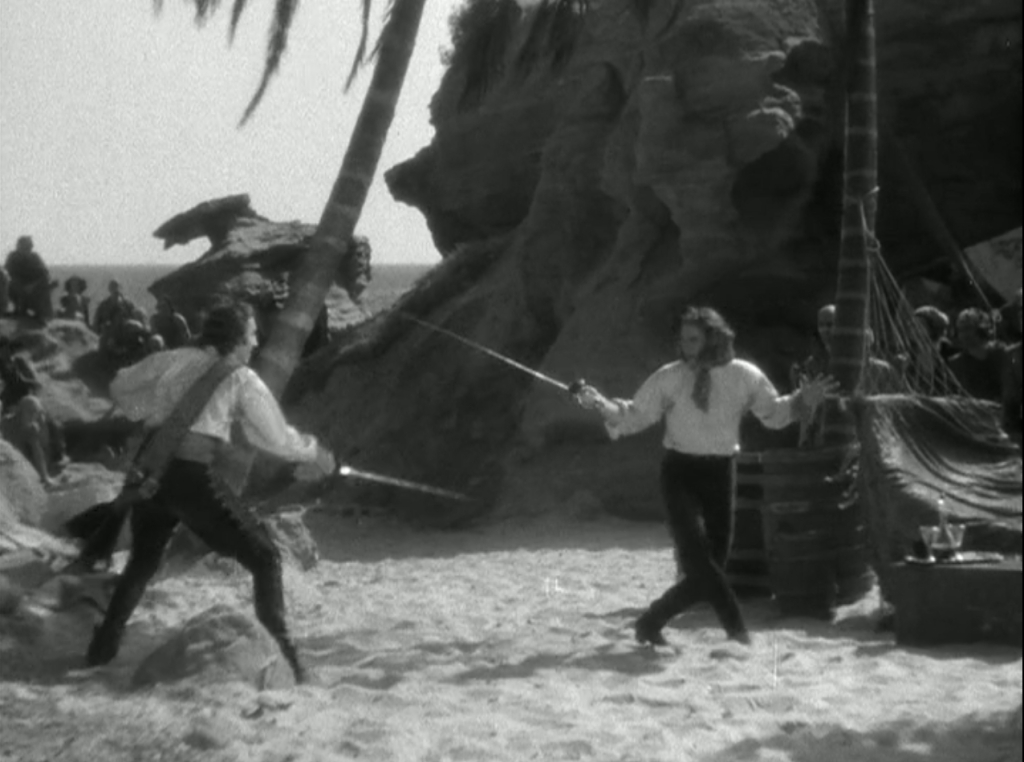
Now, in a wide shot, Blood traverses to his left. Levasseur attempts a wide, too obvious head feint, saber-like (this is theatrical swordplay, after all), to the inside, then cuts to the outside. Flynn makes a half-quarte parry, followed by a tierce which parries the attack, and ripostes low in seconde. Flynn parries another attack in tierce, again ripostes seconde, then attempts a head cut which is parried by Levasseur who ripostes inside, which is parried by Flynn in prime. Flynn makes a quick attack in seconde which is parried, and — very nicely and correctly — recovers quickly with a circular parry in the high line to protect himself just in case.
Flynn traverses to the left again, then attempts a flashy, and very “telegraphed,” head attack that would evolve in later films to a “triple moulinet,” which would become his signature move in his film swordplay. And every time I see it, I shout “Time him! Time him! Time him!” in my head to his adversary. Flashy, yes. And just asking to receive a time thrust to the throat!
And so it goes, all very swashbuckling and theatrical.
For the sake of time, for now at least, I’m skipping over most of the following swordplay. As the duel progresses toward the rocks upon which Levasseur will meet his end, there are a couple of long shots which clearly show Rathbone and Flynn doubled by Cavens and Faulkner. Certainly, the publicity still below proves that Cavens doubled Rathbone in one of these shots, and in the same shot on film it is easy to recognize Cavens briefly. Faulkner is almost certainly doubling Flynn in the same shot. The studio was concerned about these obvious doubles — yet in fairness, the film used a great deal of old sea battle shots in the finale, and this is quite obvious.

I do want to mention my three favorite phrases (a phrase is a complete exchange, from start to finish, in fencing, for example: attack, parry, riposte, counter-riposte, counter-attack, &c, until there is a hit or the fencers break distance). All three take place in the final moments of the duel.
First is a croisé in sixte by Levasseur, which is beautifully parried by Blood with a prime, followed immediately by the classic, and very flashy, bind-thrust riposte in tierce (or sixte) to the head, the blade arcing from low to high, almost as a moulinet, although the hit doesn’t quite land. In the right circumstances the technique can disarm the adversary. But nicely done, still!
This is soon followed by Levasseur binding Blood’s blade from sixte to septime, with Blood countering with a yielding parry in tierce as he falls. Again, nicely done!
A quick side note: previous to this Levasseur falls, and Blood gallantly permits him to get up. But when Blood falls, Levasseur does his best to take advantage of the situation, showing the difference in their charaters.
And now the two men are face-to-face at “handy grips!” Here we have the obligatory close-up, hilt-to-hilt, deadly fury in each man’s eyes!
The adversaries quickly get to their feet, surprisingly without punching or pommeling each other, for the final engagement in which, moments after another quick, beautiful croisé in sixte parried in prime, Blood kills Levasseur by lunging off the line — an esquive or, arguably in the language of the day, a volt — and “pinking” him, to use a 17th century term, from side to side. I strongly suspect the finish was inspired by the one in the duel in Rafael Sabatini’s The Black Swan, published three years before.
The film duel from start to finish is just under three minutes, yet time stands still for that short time, so exciting is the swordplay and acting. A timeless scene of piratical yet noble swashbuckling indeed!

Next in the series: The Duel on the Beach in Reality!
Select Bibliography
Ellis Amburn. Olivia de Havilland and the Golden Age of Hollywood. Lanham, MD: Rowman & Littlefield, 2018.
By
Anon. “Frederic Cavens, 79, Taught Stars Fencing.” New York Times, May 2, 1962.
Anon. “Sealing Wax, Cabbages and Kings.” New York Times, September 30, 1934.
Rudy Behlmer. “Swordplay on the Screen: The Best of it Has Been Due to Belgian Fencing Masters.” Films in Review, June-July 1965.
Laura Benham, “Nothing Short of a Miracle.” Picture Play Magazine, March, 1937.
Thomas Brady. “Meet Hollywood’s Fencing Master.” New York Times, October 5, 1941.
Brendan G. Carroll. The Last Prodigy: a Biography of Erich Wolfgang Korngold. Hong Kong: Amadeus Press, 1997.
Richard Cohen. By the Sword. New York: Random House, 2002.
John Davis. “Captain Blood.” The Velvet Light Trap, No. 1, June 1971.
Edith Durbin. “Rolph and Doug Watch Hungary Win at Sabers.” Los Angeles Times, August 12, 1932.
Jean-Baptiste Dutertre. Histoire generale des Antilles habitées par les François. Paris: Thomas Jolly, 1667.
Alexandre Exquemelin. [John Esquemeling]. The Buccaneers of America. London: Crooke, 1684.
——. [Alexander Olivier Exquemelin]. Histoire des Avanturiers Flibustiers qui se sont Signalez dans les Indes. 2 vols. Paris: Jacques Le Febvre, 1699.
Robert Florczak. Errol Flynn: the Illustrated Life Chronology. Guilford, CT: The Lyons Press, 2022.
Errol Flynn. My Wicked, Wicked Ways. New York: G. P. Putnam’s Sons, 1959.
Burt A. Folkart. “Ralph B. Faulkner, 95, Film Swordsman, Dies.” Los Angeles Times, January 31, 1987.
Russ Jones. “Rathbone.” Flashback magazine, June 1972.
Read Kendall. “Out and About in Hollywood.” Los Angeles Times, September 13, 1935.
Benerson Little. The Buccaneer’s Realm: Pirate Life on the Spanish Main, 1674 – 1688. Washington DC: Potomac Books, 2007.
——. The Golden Age of Piracy: The Truth Behind Pirate Myths. New York: Skyhorse, 2016.
Robert Matzen: Errol & Olivia: Ego & Obsession in Golden Era Hollywood. Pittsburg: Golden Knight Books, 2010.
Maureen O’Hara. ‘Tis Her. New York: Simon & Schuster, 2004.
Don Page. “Another Fairbanks Roams Sherwood Forest.” Los Angeles Times, January 19, 1968.
Basil Rathbone. In and Out of Character. New York: Doubleday, 1962.
Casey Robinson. Captain Blood Shooting Script. Warner Bros., 1935.
Rafael Sabatini. Captain Blood: His Odyssey. New York: Houghton Mifflin, 1922.
——. The Black Swan. New York: Houghton Mifflin, 1932.
Warner Bros. Captain Blood Press and Publicity Package, 1935.
Alma Whitaker. “Stars Who’ve Learned Fencing for Films Make It Latest Indoor Sport.” Los Angeles Times, February 2, 1936.
John R. Woolfenden. “Flock of Handsome Brutes Spring Up as Leading Men.” Los Angeles Times, May 17, 1936.
Copyright Benerson Little 2022. First posted 29 March 2022. Last updated October 23, 2023.
The Duel on the Beach, Part III: In Film!
Each media–the written word, the illustration, the motion picture–has a unique ability to convey action. A novel can not only describe but explain swordplay in action; an illustration can bring a moment in time to life and make an entire action timeless; a motion picture can show action as it unfolds and as we might see it were it real.
Of all three, by turning the written description or static illustration into moving action, film may have left us with our most indelible memories and tropes of the duel on the beach. Or so I argue tenuously, for several written descriptions and illustrations come to mind that likewise bring forth indelible memories.
With fiction we must imagine the duel, even when when well-described (but almost always imperfectly nonetheless) and accompanied by the paintings of Howard Pyle or N. C. Wyeth. Written descriptions may suggest extraordinary action, yet even if it’s described accurately and in detail it’s likely that only those who’ve studied swordplay can picture it well in their mind’s eye. Written explanations almost always slow the action down, providing a false tempo and, in the worst cases, a distraction.
Accompanying illustrations can only suggest action. But don’t get me wrong! Often a written description or a painting is far more evocative than a poorly choreographed film duel.
But in film we get to see the duelists move before our eyes. They lunge, parry, and riposte. They plot and execute, they snarl and rejoice. They are living swords actively arrayed in combat before us. And they are often even more dangerously and joyfully inspiring than their descriptions in fiction or accompanying paintings!
This is part three of a five-part series on the duel on the beach in fiction and film. Part one discusses the duel on the beach in fiction, part two the duel in The Black Swan by Rafael Sabatini, and part four the duel in the 1935 film version of Captain Blood. It’s worth reading the first two before this post, but this isn’t absolutely necessary. In this post we’ll take a look at an overview of the duel on the beach in film, with some commentary as well on film duel choreography and especially on one vital aspect of it and all swordplay: tempo.
Actors as Fencers
The actual filming of a duel can take days, and the preparation is typically extensive, beginning with a detailed written play followed by, usually, exhaustive rehearsal. I’ll provide more details on this process in the Golden Age of Film in part four, and look at actors as fencers and at tempo here instead.
Only rarely are actors actually also skilled fencers. From the Golden Age of Film just two come to mind: Cornell Wilde, a Hungarian-born US national saber champion and Olympic qualifier who just prior to the Olympic Games gave up competitive fencing for the theater and soon film, and Basil Rathbone, a studious British amateur who enjoyed swordplay and studied for five years under famous film fencing master Ralph Cavens, after having studied under famous fencing masters Félix Gravé and Léon Bertrand in the UK.

Others have managed to look the part well, with actual skill ranging from none to a little, including Danny Kaye in The Court Jester and Gene Kelly in The Three Musketeers. It surely helped that both were dancers, although for real swordplay, as opposed to choreographed, re-enacted, or fake, it helps even more to be able to sense tempo or rhythm and then break it, by which means one may steal distance and time on one’s adversary, setting him or her up to be hit at the precise moment he or she is least prepared.
I’ve had students who were both excellent dancers and excellent fencers, but also those who were excellent dancers but awful fencers, entirely unable to do anything but follow their adversary’s rhythm or a simple rhythm of their own, to their great peril. A number of them could only imitate, not tactically improvise. And to be fair, I’ve had some students who were excellent fencers but awful dancers, unable to keep to a rhythm for more than a few beats–they had long been taught not to. (I’ve even been accused of this.) They could easily sense the rhythm but only with effort could they maintain it, for by training, even instinct, they wanted to break it.
Errol Flynn, famous alongside Douglas Fairbanks as the most swashbuckling of film swashbucklers, admitted in his autobiography My Wicked Wicked Ways that he was no swordsman:
“I don’t know much about fencing, but I know how to make it look good. You only have to stand still and look forward, your head proud, and let the sword point straight out, you and the sword both unmoving, and it is dramatic. Let the sword point dip two inches, and the gesture can look very clever and dangerous.”
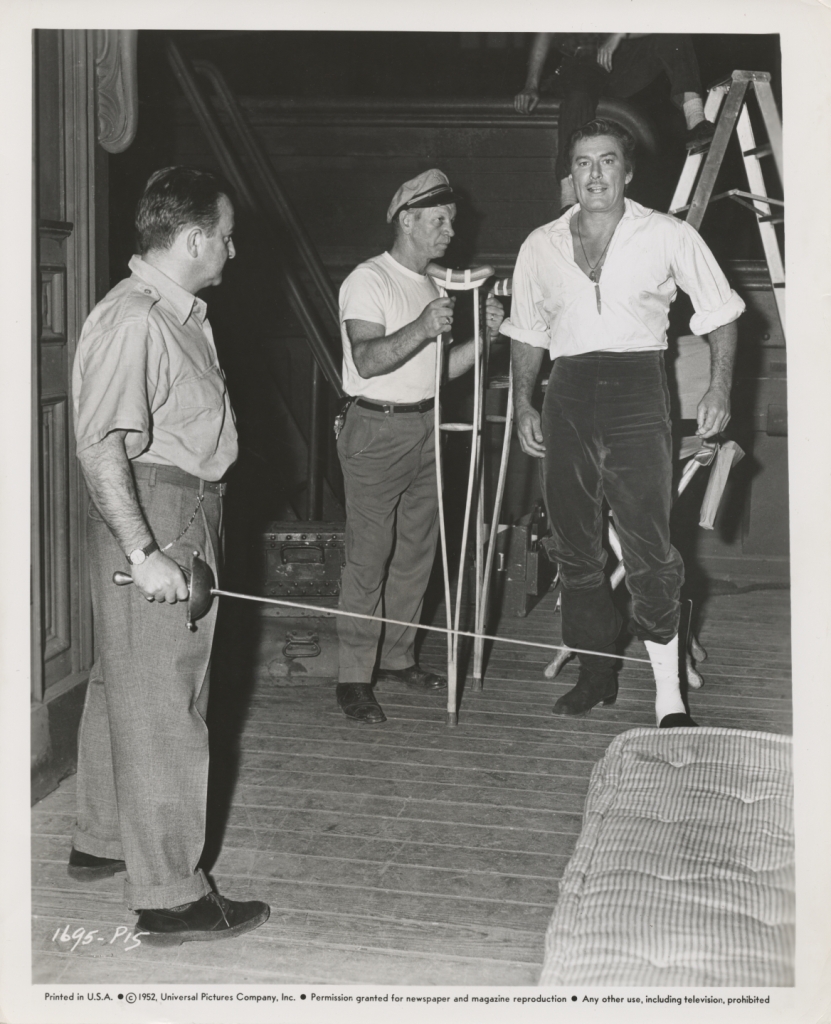
Our five-year-old has already, quite naturally, mastered this en garde. An old school epeeist, close friend of mine, retired (and notable) Byzantine iconographer, and portrait artist at present, Elias Katsaros,* still uses this en garde, often with the point dropped a couple inches as Flynn described; it’s highly effective for him and although approaching eighty years old, he can still give elite fencers fits with his old school dueling style of epee fencing. Flynn’s comment reflects the following description by William Higford in his book Institutions: Or, Advice to His Grandson, 1658:
“The bravest gentlemen of arms, which I have seen, were Sir Charles Candis, and the now Marquis of Newcastle, his son, Sir Kenelm Digby, and Sir Lewis Dives, whom I have seen compose their whole bodies in such a posture, that they seemed to be a fort impregnable.”
At the opposite extreme is the admonition of Dr. Eugene Hamori, my fencing master of many decades: in the en garde one should appear as if always in motion, always attacking, at all times. It goes without saying that one can appear simultaneously as both a fort impregnable and constantly on the attack. But I digress.
The reality is that, then and now, most actors were not fencers but imitators who followed a carefully choreographed routine. This is vital not only for the logistics of filming but for safety too.
Fencing Tempo: Reality Versus Cinema
If there’s one aspect of cinematic duels that often drives me crazy, it’s the obvious overuse of what might best be termed the “false tempo of choreography” in film swordplay. Some background first, so please bear with me. If you find this too technical or tedious, you can just skip straight to the films themselves.
Classical tempo, or, more accurately, true tempo, sometimes called timing, is the most vital of all aspects of swordplay. Every fencing master has his or her own definition, but basically it can be defined as the most opportune time to make a fencing action, usually an offensive one–that is, the moment when my opponent is for a brief moment helpless–without my also getting hit. False tempo or false time is any other tempo. Not getting hit means exactly that: not getting hit at all. Hits excluded by the rules of fencing or by the timing of a scoring machine would still be hits if the swords were real.
Fencing tempo may be divided into physical and psychological tempo, the latter consisting of moments of inattention, over-attention, or distraction, either by the adversary’s own action, or induced–“putting the opponent to sleep” for example–in him or her. Closely associated with tempo is cadence or rhythm.
Zoltan Beke and Jozsef Polgar’s definition of fencing tempo in The Methodology of Sabre Fencing (Budapest: Corvina, 1963) is one of the best I’ve read and is what I was taught, far more often unconsciously through lessons than consciously through lecture, by both of my Hungarian masters:

“In fencing, under the concept of tempo we include that suitable moment, at which the opponent is helpless against our fencing action. It is not enough just to recognize the moment which favours the surprising of our opponent, it must be felt. Seeing in itself is not enough, because by the time we perceive it and make our decision to act, the actual moment may have passed or the position of the opponent may have changed to our disadvantage. // In practice, we also interpret tempo as a unit of time [one cadence, or one unit of fencing time]… // In the instruction of tempo attention should be devoted to both these interpretations.”
Physical tempo is often divided into hand tempo and foot tempo, particularly in the early stages of instruction. For example, a very simple instance of hand tempo: my adversary moves hand and sword laterally from the sixte position outside to the quart position inside. Anticipating this, I attack with a disengage into the opening sixte line at the moment the hand and sword begin to move, so that my point lands as my opponent’s hand and sword arrive in the quarte position. If I wait until my adversary’s hand and sword are in the quarte position to attack, he or she has the tempo–a full cadence–in which to defend against my attack. Or, I make a simple attack as my opponent starts to lower their hand, opening the line. Again, I don’t wait until the line is entirely open.
Similarly foot tempo. The Hungarians, for example, define three major forms: the attack on preparation (attacking as the adversary advances in preparation), the accelerating attack (attacking as the adversary fails to retreat or retreats too slowly), and the “taken over” attack (attacking on the adversary’s recovery from a failed attack). In the first, I attack when my adversary begins his or her advance, because for a moment there is nowhere to go while the foot is in the air. The opponent is temporarily helpless to escape. Further, if my adversary is preparing an attack, they may be over-focused on it, providing me with psychological tempo in addition. They’re distracted, in other words, by their preparation. Or I can attack with an accelerating movement (usually an advance-lunge) if my adversary fails to retreat as I advance, or retreats too slowly. Again, for a brief moment my opponent is helpless to escape. Or, I can attack during my adversary’s recovery from an attack, for here psychological tempo also plays a significant role–the recovering adversary is not only typically slower than the attacker, but they tend to believe they are safer during the recovery than at the exact moment the attack has failed, and tend to let their guard down, particularly if their opponent has not previously attacked during recovery.

In practice, hand and foot tempo go–forgive me–hand-in-hand. One must time them both, although often one or the other predominates. For example, I may have superior blade-work against a particular adversary, leaving me to concentrate largely on finding the foot tempo with which to make the attack, and vice versa.
In sum, I want to attack in anticipation of my adversary’s movements, keeping a full cadence ahead, resulting in his or her inability to defend in time. Again, vitally, this tempo must also aid in protecting me so I don’t also get hit, and leave me in position to recover quickly or secure my adversary’s sword so I’m not hit immediately afterward (Sir Wm. Hope called such “double” hits exchanged hits).
True fencing tempo is not the tempo of a game of tag!
But there are other forms of tempo, the rules of each weapon creating them. Although classical or true tempo still applies to a degree, modern foil and saber are also governed by an artificial or false tempo of convention, also known as “right of way” rules, in theory derived from reality and true tempo but in practice suicidal, given that (1) they permit the attacker to disregard counter-attacks into the first tempo, and (2) they now permit attacks in invitation (with the sword in a non-threatening position, that is), bot of which with a real sword would often result in impalement.

In modern epee, the timing of the scoring machine creates a false tempo that often takes priority over true tempo, turning it into a game of “hit at least a 20th to 25th of a second before getting hit,” rather than “hit and not get hit.” Often the majority of epee touches would be double hits were the weapons real. In electrical epee’s defense, the early rules of epee tempo, when judged by the eye, not the machine, were found to be difficult to maintain, and so judging was simplified: a hit arriving noticeably before the other was counted. The electrical apparatus simply made this easier to judge. (Note that the timing of the box — touches within a 20th to a 25th of a second of each other are counted as a double, and a touch that lands later than this after another is not counted — replicates the smallest difference in time in which most people’s perception can distinguish between two touches, although having a small range, a 20th to a 25th of a second in this case, is actually necessary for the apparatus to operate correctly.)
Again, although true tempo still plays an important role in all three weapons, it is often, unfortunately, overshadowed or even superseded by the tempos created by the rules governing the weapon.
This has long been a problem even in the days in which swords were worn and duels were fought: “…because whoever will be but at the Trouble to visit the Fencing-schools, shall scarcely see one Assault of ten, made either by Artists against Artists, or Artists against Ignorants, but what is so Composed and made up of Contre-temps [double touches resulting from an attack into an attack, or from simultaneous attacks], that one would think the greatest Art they learn, and aime at, is to strive who shall Contre-temps oftnest…” (Sir William Hope, The Sword-Man’s Vade-Mecum, 1694.) Even three centuries ago, fencers in schools tended toward tag rather than true tempo. If you want to experience Hope’s frustration today, watch any competitive bout in modern fencing, classical fencing, or HEMA (Historical European Martial Arts). The natural tendency to turn all forms of fencing into a game of “hit first” tag is difficult to suppress.
There is also the false tempo of the fencing master whose goal is to get hit, unlike the fencer whose goal ideally is to not get hit. The fencing master, in other words, provides opportunities for the student to hit: he or she uses false tempo–often via exaggeration, hesitation, other error, or all of these–to train true tempo. (But he or she also uses true tempo when necessary, for example to surprise a student making a repeated error.) As an old friend, an outstanding foilist in his youth, an outstanding epeeist later, now also a retired French army colonel, put it when he first met me: “I love to fence fencing masters and teachers, they always fence like they’re giving a lesson: they hesitate and I hit them!” He was quite correct. Even so, he never won more than half his bouts against me, in spite of my teaching handicap, for the tendency to hesitate can, with practice, be suppressed, not to mention that friendly competitive Gallic arrogance can motivate an opponent. I fenced some of my favorite bouts against him.

Last, we have the false tempo of film fencing choreography, best described by famed film fencing master Fred Cavens:
“For the screen, in order to be well photographed and also grasped by the audience, all swordplay should be so telegraphed with emphases that the audience will see what’s coming.” (Fred Cavens quoted in “Swordplay on the Screen” by film historian and film swordplay commentator Rudy Behlmer in Films in Review, June-July 1965.)
But if the audience can see it coming, so in reality can the adversary, and far more easily!
At its best, with great action and editing, this false tempo of choreography is less noticeable. At other times it is awful and drives fencers like me crazy as we spot numerous opportunities in which we would have attacked or defended had we been in the duel ourselves. Worse, the clearly weaker fencer often wins per the script (watch The Spanish Main, for example). In such choreography’s defense, much of this has to do with safety, the lack of skill of many actors (although the unskilled were often doubled as much as possible), and as Cavens noted, to help the audience understand what’s going on.
Even so, film swordplay can be exciting without resorting to this false tempo–but this takes skilled actors, skilled fight choreographers, and skilled editors, not to mention willing directors. In most cases these days, in spite of a fair number of capable fight directors, film swordplay is of the “hack and slash, make it look rock and roll” variety. Trite and lazy, in other words, if exciting at times to the uninitiated.
Or, as one well-experienced Hollywood stuntman, swordsman, and film swordplay choreographer put it, “You do what the director wants, however ridiculous, or you get fired.” Fred Cavens once walked off the set after a director insisted on filming a swordfight with one of the actors standing on a table: in reality, the swordsman would be unable to defend himself adequately from adversaries cutting and thrusting at his feet and legs. Sometimes even Hollywood antics are too much.
Most directors these days don’t seem to care about exciting, accurate swordplay. Even so, we can hope and dream, and enjoy those few films that do still occasionally elevate swordplay to the degree those of us who follow the sword desire.
Now to the film duels on the beach!
To Have and to Hold, 1922

Based on the novel by Mary Johnston, a writer who had significant influence on Rafael Sabatini, this 1922 Paramount version is lost as is the 1916 Paramount version. Remakes were as common then as now–why not beat a dead horse if it’s profitable? We have no cinematic details on the duel on the beach in either version to my knowledge.
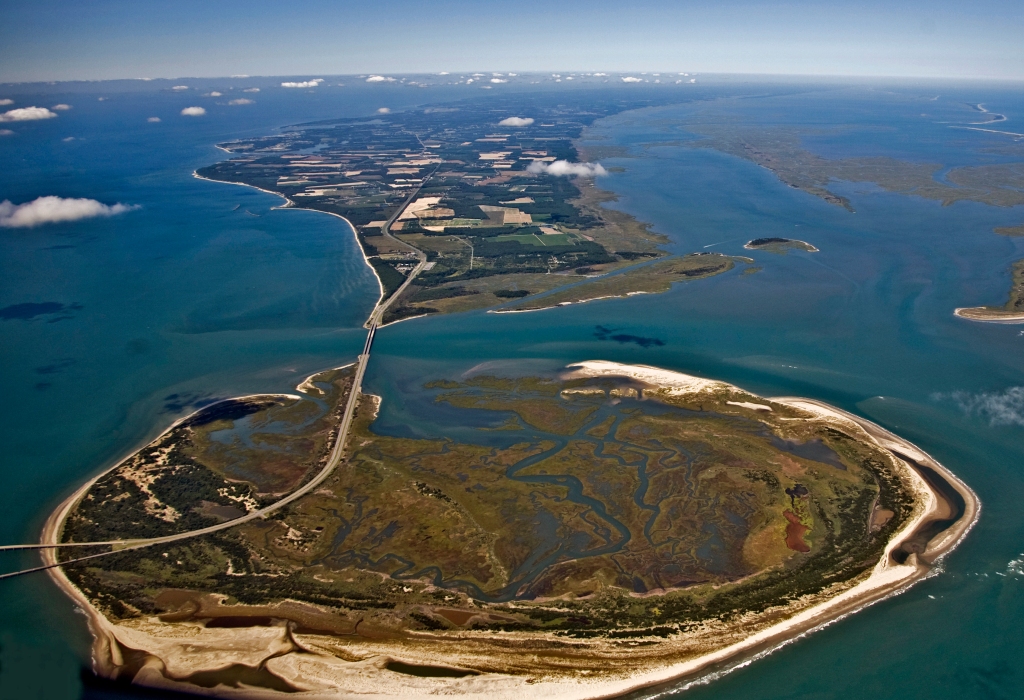
This fictional duel is perhaps best-known today for Howard Pyle’s painting of the duel for command in the novel, between gentleman hero and the last of three pirate villains he fights one after the other, on what is known today as Fisherman’s Island off Cape Charles, Virginia. Clearly, the duel was filmed somewhere on the California coast rather than upon a flat Virginia islet. Santa Catalina Island is often considered the likely suspect location, but such scenes were more often filmed on the California coast itself or even on studio sets. See The Duel on the Beach, Part I for more general details, including paintings by Howard Pyle and Frank Schoonover.
Captain Blood, 1924
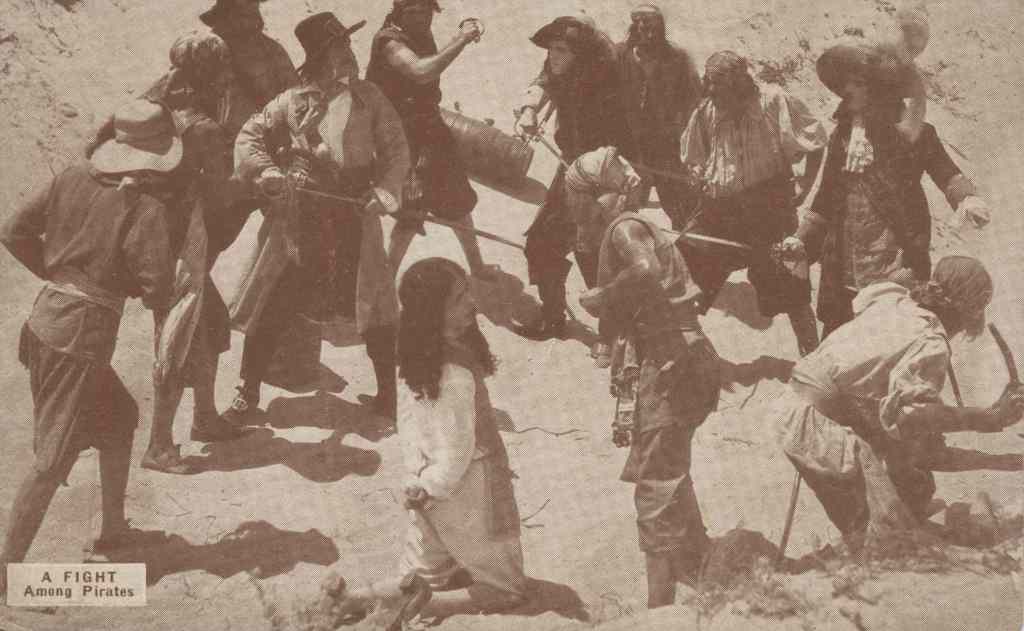
Several years prior to 1924, Douglas Fairbanks–actor, director, writer, producer (auteur in other words)–had already established the swashbuckling film genre as we know it today (and usually poorly imitated now) in The Three Musketeers and The Mark of Zorro. Film permitted him to carry swashbuckling adventure beyond the constraints of reality. His swashbuckling heroes could fight and defeat a half dozen or more enemies at once, climb buildings and do stunts like Jackie Chan before Mr. Chan was born, and swing from every chandelier in sight.
But he had yet to make a pirate film. In 1924, Vitagraph produced Captain Blood based on the novel by Rafael Sabatini, a mere two years after the book’s publication, and beating Fairbanks by two years to his own pirate film. The movie was intended to be, and was, everything we’ve come expect of a blockbuster even if it’s star, J. Warren Kerrigan, had once said the following to a Denver Times reporter in 1917:
“I am not going to war. I will go, of course, if my country needs me, but I think that first they should take the great mass of men who aren’t good for anything else, or are only good for the lower grades of work. Actors, musicians, great writers, artists of every kind—isn’t it a pity when people are sacrificed who are capable of such things—of adding to the beauty of the world.”
No real Captain Blood he, clearly, nor anything resembling an honorable person, but then, actors, with some notable exceptions, are for the most part actors imitating heroes, not heroes playing heroes. Still, we expect more even from actors.
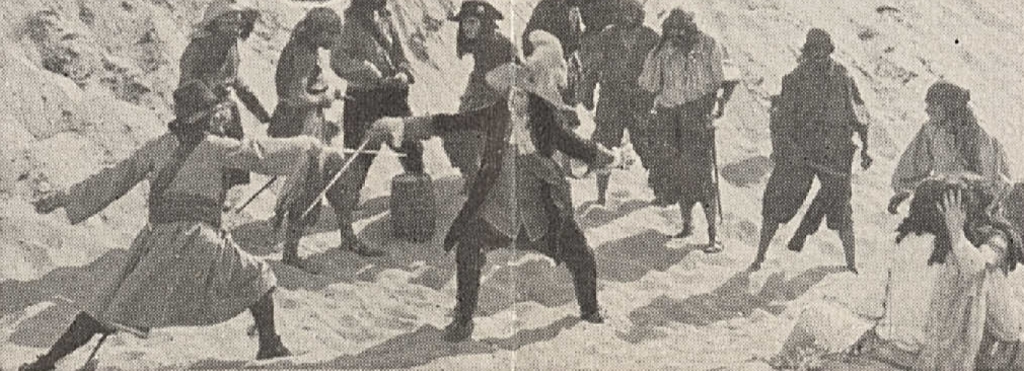
Unfortunately, only thirty minutes of the original film survive, and the duel footage is not found among them. In the image above, note the Howard Pyle-inspired arrangement of duelists and spectating pirates. Beyond this, we’re left now to our imaginations.

Historically-speaking, such duelists may have stripped off coats, sword-belts or baldrics, and, in the case of Peter Blood, periwig if he were still wearing one (he appears to have switched to his own hair by now), for which we have historical evidence, although not all swordsmen stripped down. Whether they did or did not depended largely on the circumstances of the fight and personal inclination. In the novel, there is no indication but that the two men fought as they were dressed, given the hasty development of the rencontre and drawn swords.
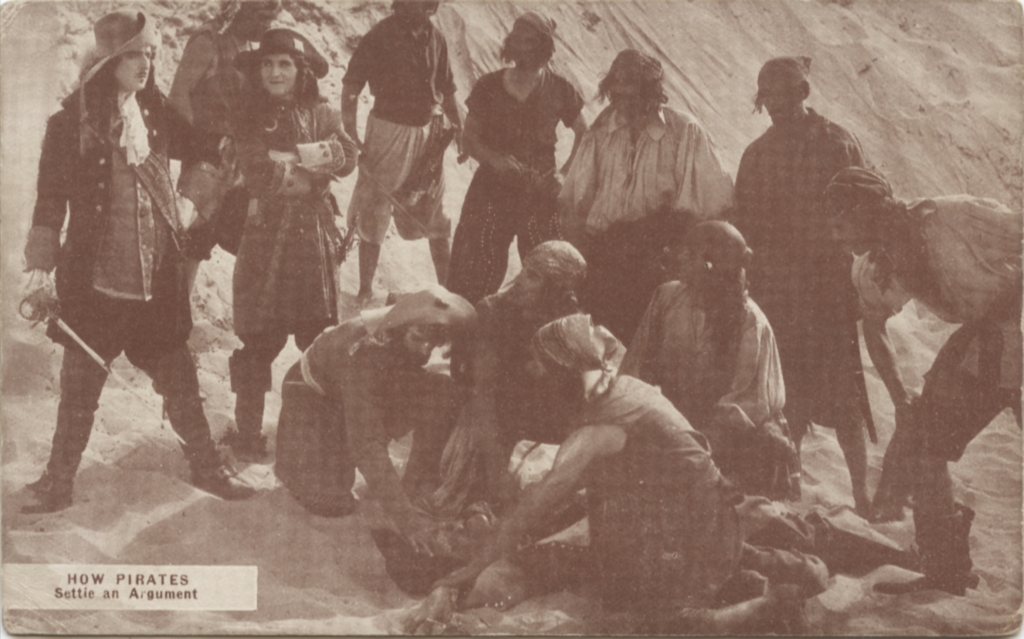
In fact, lighter dress was the norm in the tropical climate: a scarf instead of a periwig and a waistcoat but no coat over it, except on the most formal of occasions. And no boots, except on horseback, even if Rafael Sabatini permitted them on sandy, dune-ridden dueling shores. 🙂

In the novel, the duel was fought on Virgin Magra, Sabatini’s joke on Virgin Gorda–the island isn’t actually fat but more or less skinny, depending I suppose on your perspective. There are one or two possible beaches on Virgin Gorda where the duel, as described in the novel, could have been fought, but more on this in part four when I discuss the 1935 film version in detail in part four.
Clothes Make the Pirate, 1925
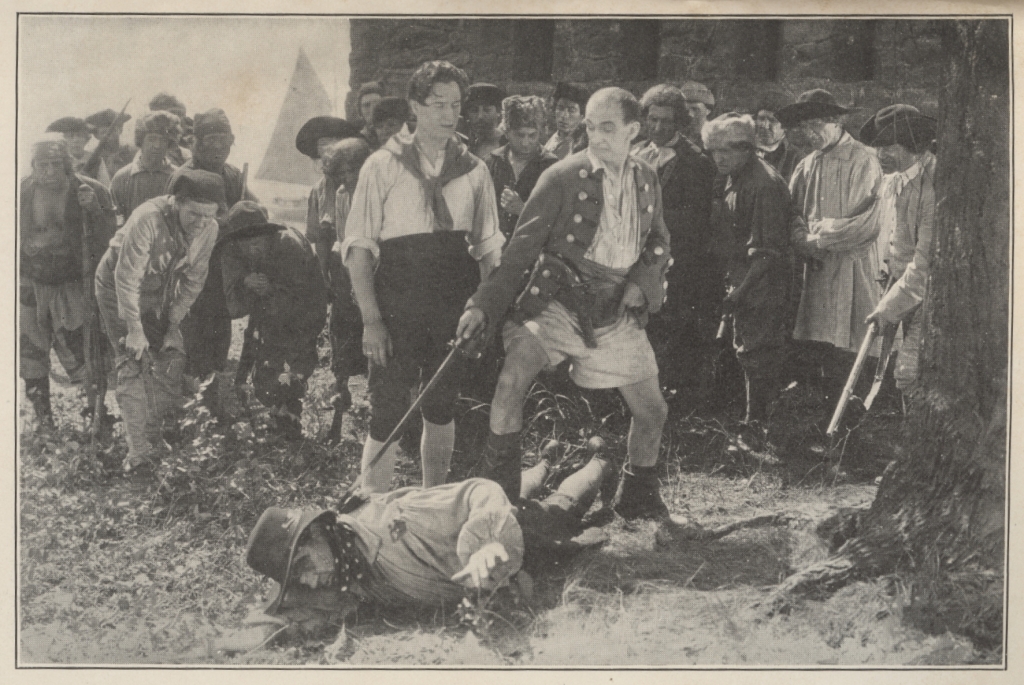
A comic film starring Leon Errol and Dorothy Gish, based on the comic pirate novel by Holman Day of the same name, the duel is merely a pretend one between two tailors masquerading as pirates, one of them named Tidd who is pretending to be the famous pirate Dixie Bull. The film no longer exists, unfortunately, and there are no stills of the duel, at least not that I’m aware of. The image above is from the photoplay edition, and depicts the final confrontation between the fake Bull and the real, with the fake triumphing, of course. After all, it’s a comic novel.
The Black Pirate, 1926

Released in 1926, The Black Pirate starring Douglas Fairbanks set the parameters and even more importantly, the expectations, for one of the three major forms of the swashbuckling pirate genre for the next century: the semi-historical pirate romance-adventure in traditional form, of which Captain Blood and The Sea Hawk are the finest examples; the semi-historical or “sort of historical” pirate adventure, any of the versions of Treasure Island for example, and the television series The Buccaneer and Black Sails (full disclosure: I was the historical consultant on Black Sails); and the purely pirate fantasy, usually with a bit of romance on the side, filled with pirate myth and trope, of which The Black Pirate is the original, and still the finest, example, although honorable mention goes to The Crimson Pirate and perhaps–and only perhaps–the first of the Disney pirate films.
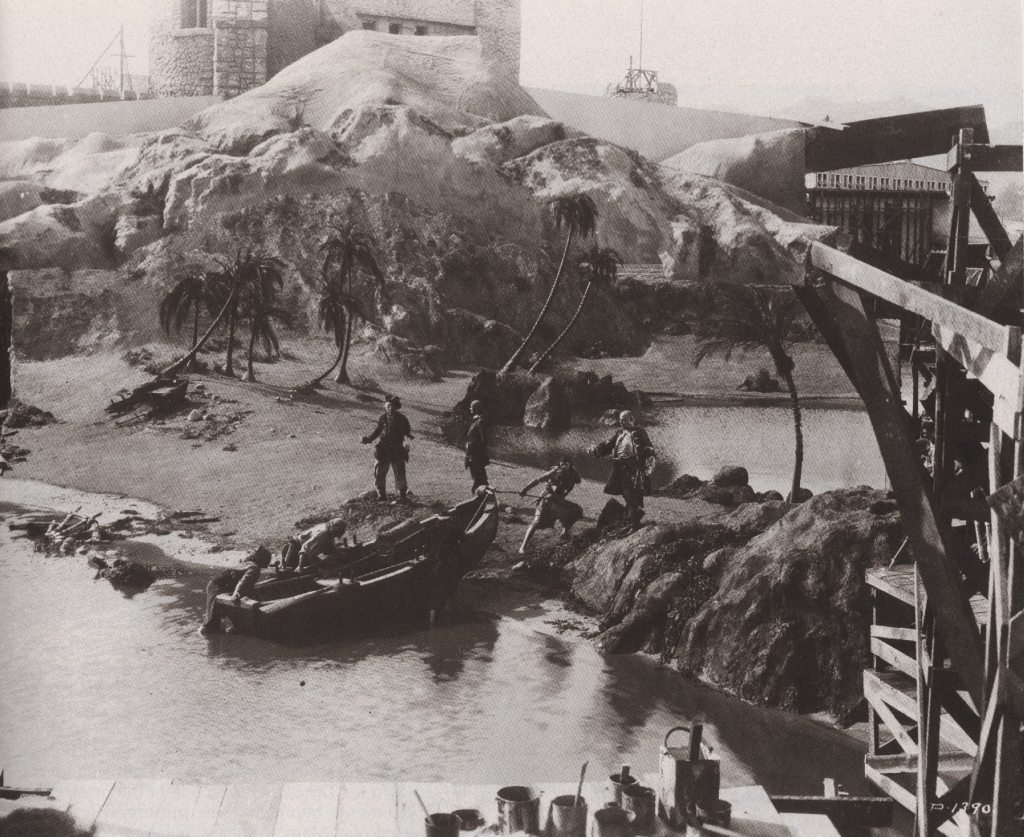
The Disney pirate films carry the pirate fantasy to extreme with occult and mythological nonsense, if entertaining at times. Many pirate films, particularly the generally inferior B versions, straddle the genres between romance-adventure and pirate trope and caricature, generally leaning more on the latter. Except for some of the pirate historical romance adventures such as Captain Blood, all have been more or less, usually unsuccessfully, based on the genre formulated by The Black Pirate. Even the Disney pirate films owe not only their origin but their Peter Pan fantasy and tongue-in-cheek atmosphere to this Douglas Fairbanks film.
By his own admission Fairbanks was inspired as much by Peter Pan (thus Fairbanks’s costume) and Howard Pyle’s paintings as by Alexander Exquemelin’s buccaneers, making The Black Pirate is a straightforward pirate fantasy adventure marked by the swashbuckling derring-do of Fairbanks himself. And it’s entirely enjoyable because it doesn’t pretend to be anything else.

The swordplay is the film reflects the genre Fairbanks was creating, or rather, reflected the style of swordplay Fairbanks had already designed and set in motion in The Three Musketeers:
“For here, plainly, is a D’Artagnan that not even Dumas ever dreamed of. He is the personification of all the dashing and slashing men of Gascony that ever fought their way through French novels, all for the smile of a lady. He never fences one man if there are six to fence instead, he never leaves a room by the door if there is a window or a roof handy, he never walks around any object (including human beings) if he can jump over them; he scales walls at a bound, carries prostrate damsels over roofs, hurls men one upon another, rides no horse save at a gallop, responds to the call gallantry at the drop of a hat, and general makes himself an incomparable D’Artagnan.” (New York Times review of The Three Musketeers, August 29, 1921.)
The duel on the beach between the pirate captain (Anders Randolf) and the shipwrecked Duke of Arnoldo (Fairbanks), bent on avenging the death of his father was choreographed by Fred Cavens rather than Fairbanks’s usual Belgian master H.J. Utterhore (Henri Joseph Uyttenhove). Cavens ultimately choreographed the swordplay in more than fifty films by my count; Thomas Brady in “Meet Hollywood’s Fencing Master” (New York Times, October 5, 1941) noted seventy-five as of the date of his article.
Fairbanks’s character is a revenge-seeking, pirate-hunting Spaniard who comes to be known as the Black Pirate, so cup-hilt rapier and parrying dagger are appropriate arms. However, it’s unlikely the real pirate captain would himself have carried these weapons. But no matter–it’s fantasy entertainment after all.
The duel setup is a classic one derived from pirate myth, particularly as depicted in To Have and to Hold by Mary Johnston, a novel illustrated by Howard Pyle and influential in the writing of Rafael Sabatini: a man wishing to join a pirate crew proves himself by fighting a duel with the best swordsman (or swordsmen, in the case of Johnston’s novel), and it seems that the pirate captain is always the best or one of the best. Pyle’s illustration (see part one) clearly influenced the film duel’s arrangement.
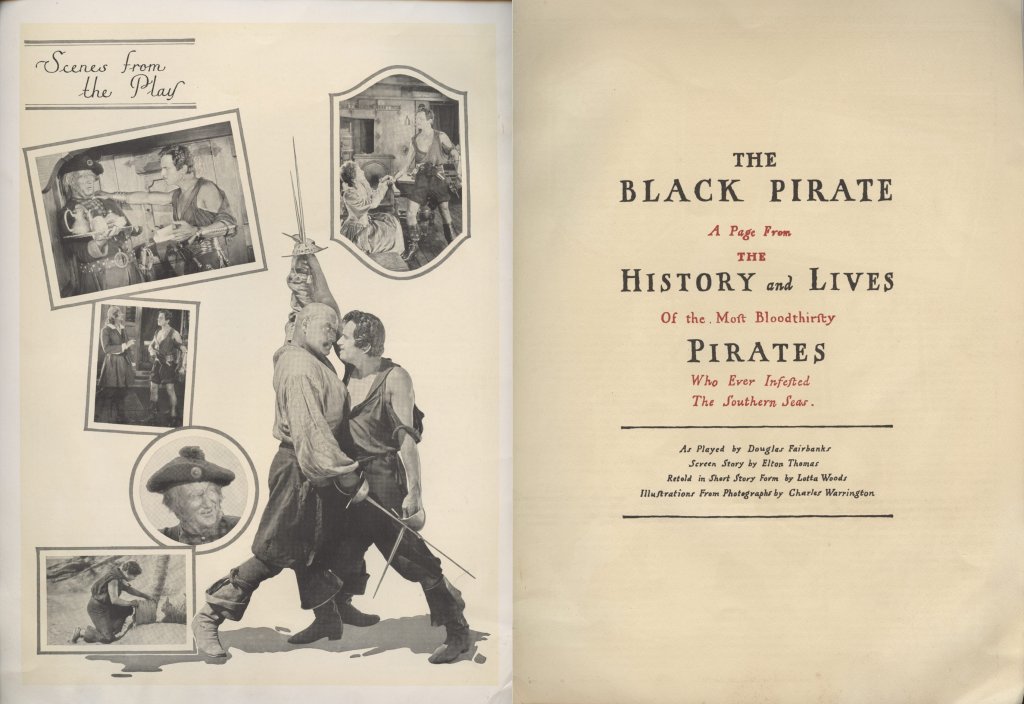
The 25 cent oversized film program–$3.64 in present dollars which was quite a good deal actually, given that most similar programs typically cost $10 to $20 today, the modern practice of gouging fans being what it is–was written, illustrated, and published in the style of a Howard Pyle, Charles Johnson, or Alexandre Exquemelin sea roving journal (or all three!). At one point it describes the duel with lines by its pretended pirate-author “Sandy MacTavish” (actually screenwriter Lotta Woods who wrote several screenplays for Douglas Fairbanks but not The Black Pirate), of which the following are examples:
“Another step backward and the Captain was in the lagoon, while the stranger, with punctilious ceremony, waited for his recovery. The Captain was like to burst a blood-vessel. He scrambled to the bank and made a powerful thrust that backed the stranger toward the line of our men.”
However, in spite of the Black Pirate’s “punctilious ceremony,” he ends the duel by causing the pirate captain to trip and fall backwards onto the point of a parrying dagger the Black Pirate had placed there beforehand just for the purpose and somehow entirely unnoticed by the entire pirate crew.
According to Tracey Goessel writing for the National Film Preservation Board at the Library of Congress, Anders Randolph’s rapier cut Fairbanks’s arm during filming, causing the swashbuckling star to curse. She also notes that he was injured again, this time when fencing with Fred Cavens who was standing in for Randolph. A cut close to the eye was a result, but guests were present, so Fairbanks smiled and said, “Pirates always were a bloody lot.”
The duel is magnificently choreographed, easily one of the most exciting of any Hollywood film and one that certainly ties with 1935 Captain Blood duel (also choreographed by Cavens) as the best of any pirate movie. Although there are numerous Hollywood flourishes, the swordfight comes across as realistic. Given the speed of the actions and the technique involved, it’s easy to see how Fairbanks was injured.
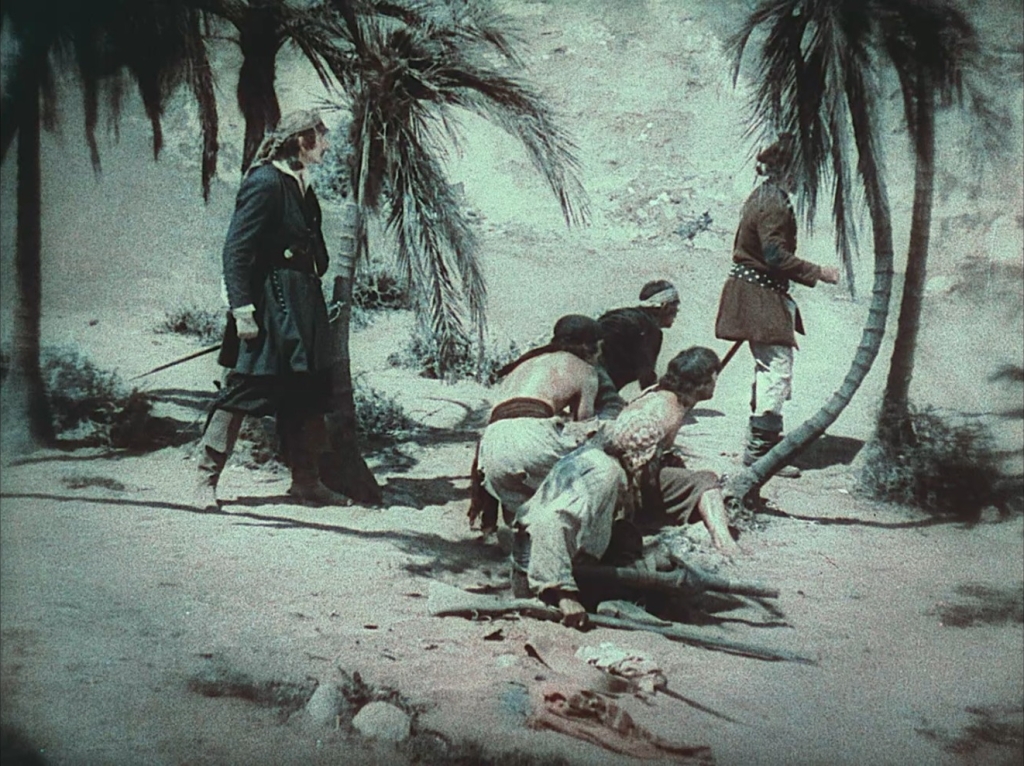
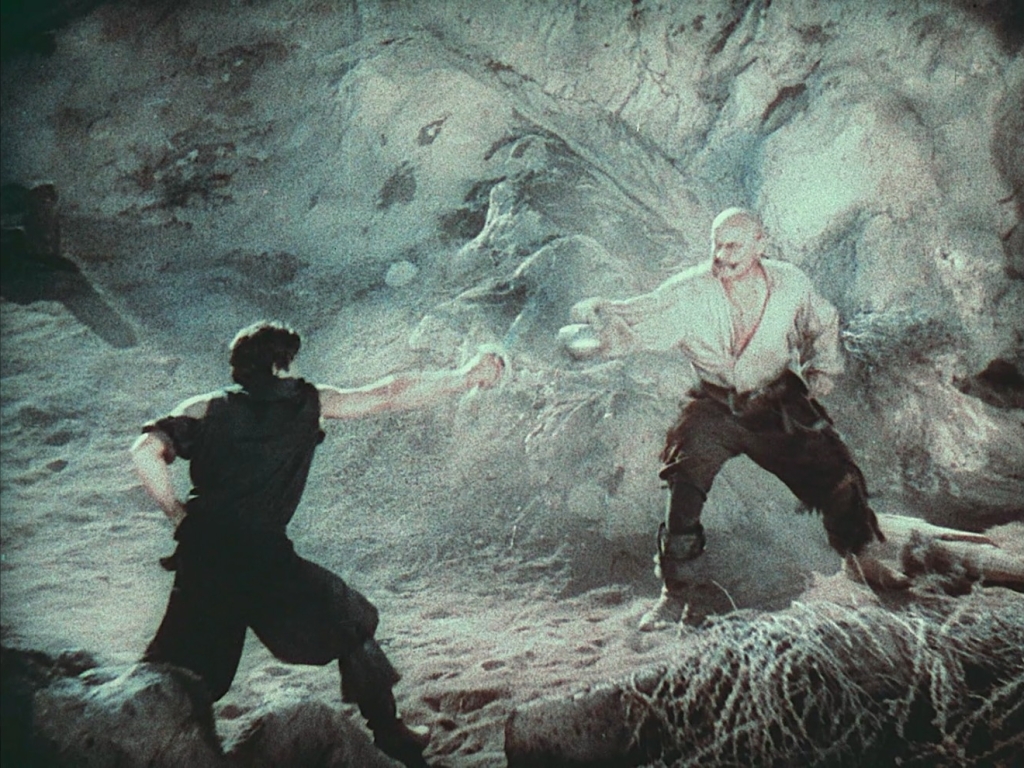
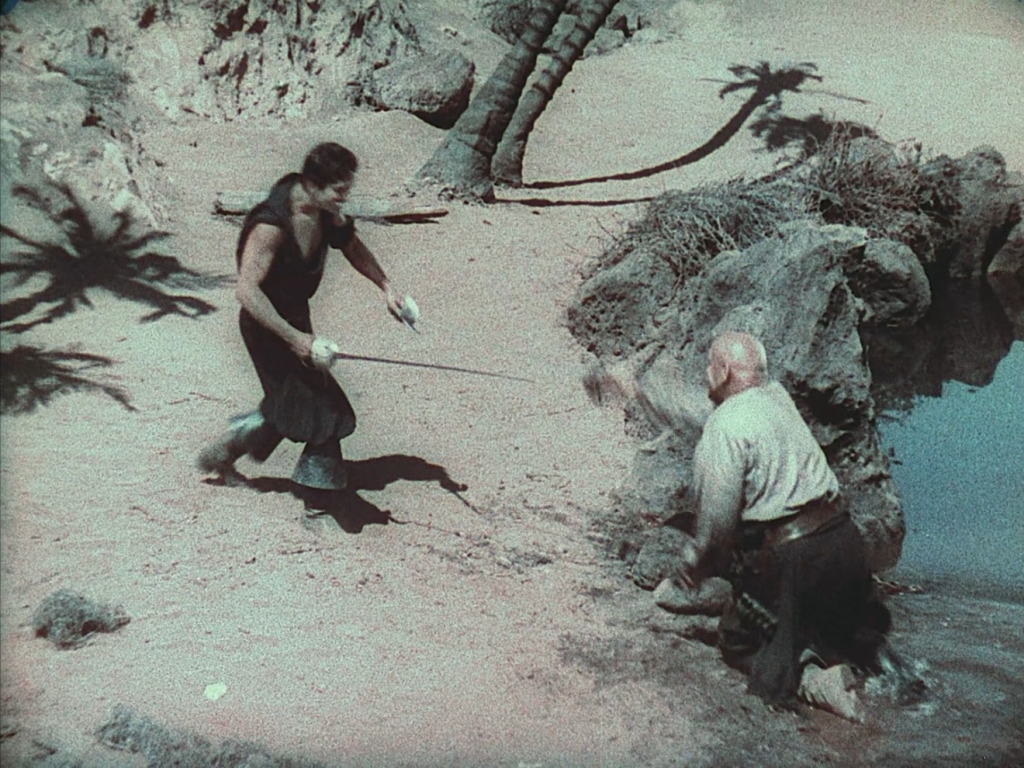

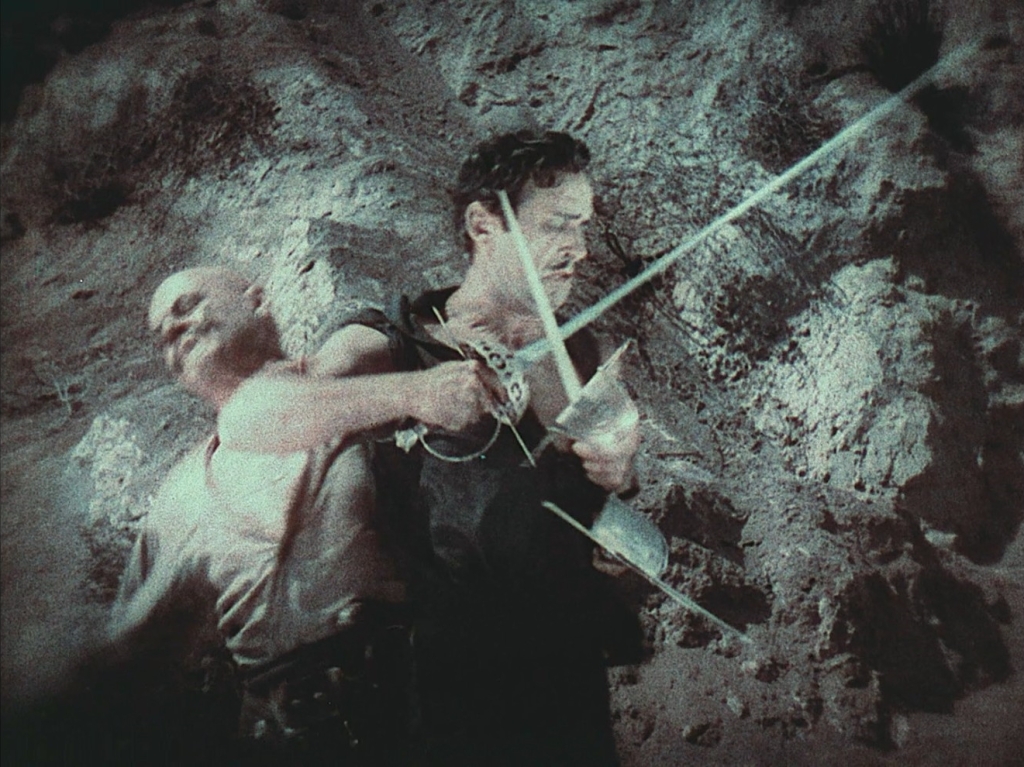
Of course, the less-than-honorable and probably impractical-except-in-film trick of fence is arguably entirely permissible when a pirate is the adversary, not to mention when the adversary is the man who murdered your father long before (in cinematic years) Inigo Montoya sought similar revenge:
“As if a man that lies at the mercy of common Pirates [praedonibus: of the robbers or plunderers], should promise them a certain Sum of Money for the saving of his Life: ‘Tis no deceit to recede from it, tho’ he had given his Oath for the performance: for we are not to look upon Pirates [pirata] as Open and Lawful Enemies: but as the Common Adversaries of Mankind [communis hostis omnium]. For they are a sort of men with whom we ought to have neither Faith, nor Oath in common.” (Marcus Tullius Cicero, De Officiis 3:29.107, in 44 BC. Translated by R. l’Estrange, 1720.)
Although the story is entirely fictional, we can do a little sleuthing and intelligently imagine where the duel might have taken place. Given that the tale in set in the “Southern Seas,” we know that this is the South Sea, aka the Pacific coast of the Spanish Main, and probably takes place in the 1680s when most of the great South Sea buccaneer expeditions took place.
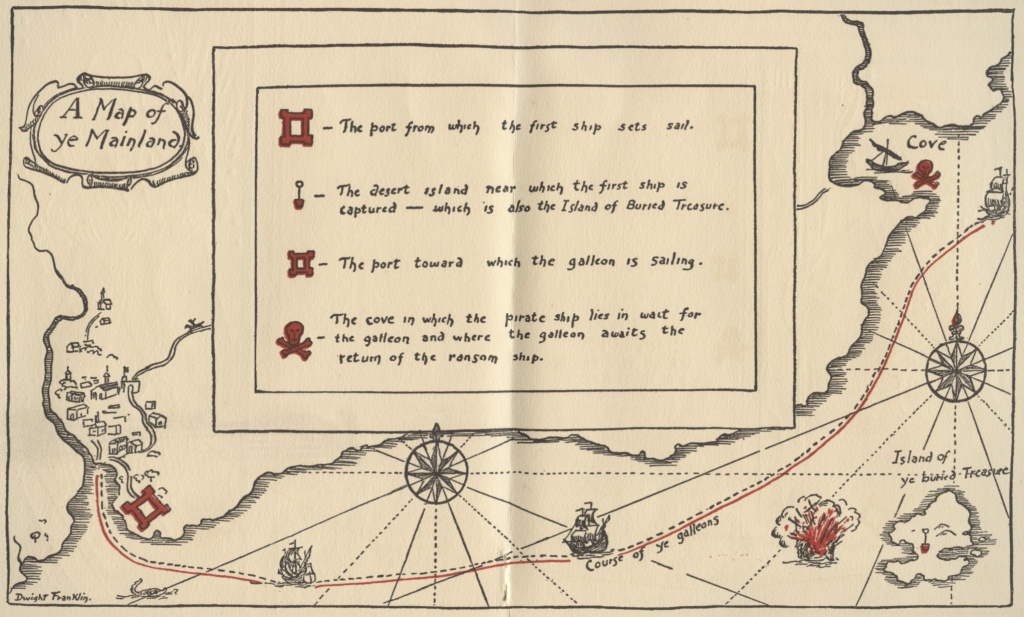
Looking at the map in the film program, there is only one area that orients this way: the Isthmus of Darien. Therefore Panama, and therefore Isla Chepillo would be the prime candidate. It’s even shaped a bit like the island on the pirate chart! It’s not a perfect fit, but no matter: Panama and Chepillo will serve, and there are plenty of “pirate coves” to the west.

Chepillo, however, was not entirely a desert isle, making buried treasure a bit more difficult. That said, given that buried pirate treasure is a myth, we can just as easily fantasize that the island was uninhabited, or that the inhabitants were unlikely to find the treasure.
In fact, true desert isles were hard to find even in the seventeenth century. Most islands, even small ones, had inhabitants, and the rest, if they had any resources at all, were visited from time to time. In 1681, English buccaneers landed on Chepillo and took aboard good fresh water, plantains, two fat hogs–and fourteen black and mulatto prisoners. Whether free or enslaved, the buccaneers would doubtless have kept them as slaves.

Captain Blood, 1935

Not only my favorite of all film duels, and not just of those on the beach or in pirate films, but also one of the best to watch and enjoy. So notable and influential is it to the film swordplay that followed that I’m not going to discuss it here, but in this blog post! My apologies to anyone (temporarily) disappointed; just follow the link after you finish this post!
The Queen of the Pirates (La Venere dei Pirati), 1960

An Italian pirate film dubbed into English, starring Gianna Maria Canale, queen of Italian costume films, as Sandra, who with her father flees to sea to escape a false accusation and, naturally, become pirates. The film has plenty of pirate tropes, and two years later Canale would reprise her role as a pirate queen in The Tiger of the Seven Seas. She wields a rapier quite well and quite aggressively, if Hollywood-style, in both films, including in a tavern duel in the latter. Coming from a family of circus performers, she has an obvious athletic grace.
In fact, I am impressed with her swordplay, having previously only seen Maureen O’Hara, Binnie Barnes, and Jean Peters of this era swashbuckle well sword-in-hand. Canale compares well with these three film swordswomen and might be fiercer than all three, including even Peters.
In the film, Sandra and another pirate captain agree to settle their differences “con la punta de la spada,” which happens to be represented by cup-hilt rapiers. Assuming the pirates are intended to be Italian as described in the film’s description, the swords are then for once appropriate: cup-hilt rapiers were common in Spanish-held regions of Italy in the 17th century. I’m unsure what century the film is actually set in, though: the film advertising pretends the 16th, but the pirates look quite 17th century Hollywood Caribbean.
What follows is, if too short, a respectable if theatrical film duel with single rapiers that ends in Sandra disarming the other pirate captain with a disarm that actually can work in real fencing, at which point they laugh and make friends again. Canale displays some tight technique, including quick disengages against attempted beats and binds. Unfortunately, given the duel’s short length, there isn’t much opportunity for movement across a wide setting. The movie was filmed on location on the shores of Tuscany, although the sea settings were intended to represent the Adriatic on the eastern coast of Italy. The film’s “master of arms” was fencing master, actor, and stunt performer Franco Fantasia. See also Rage of the Buccaneers below.
Morgan the Pirate, 1961
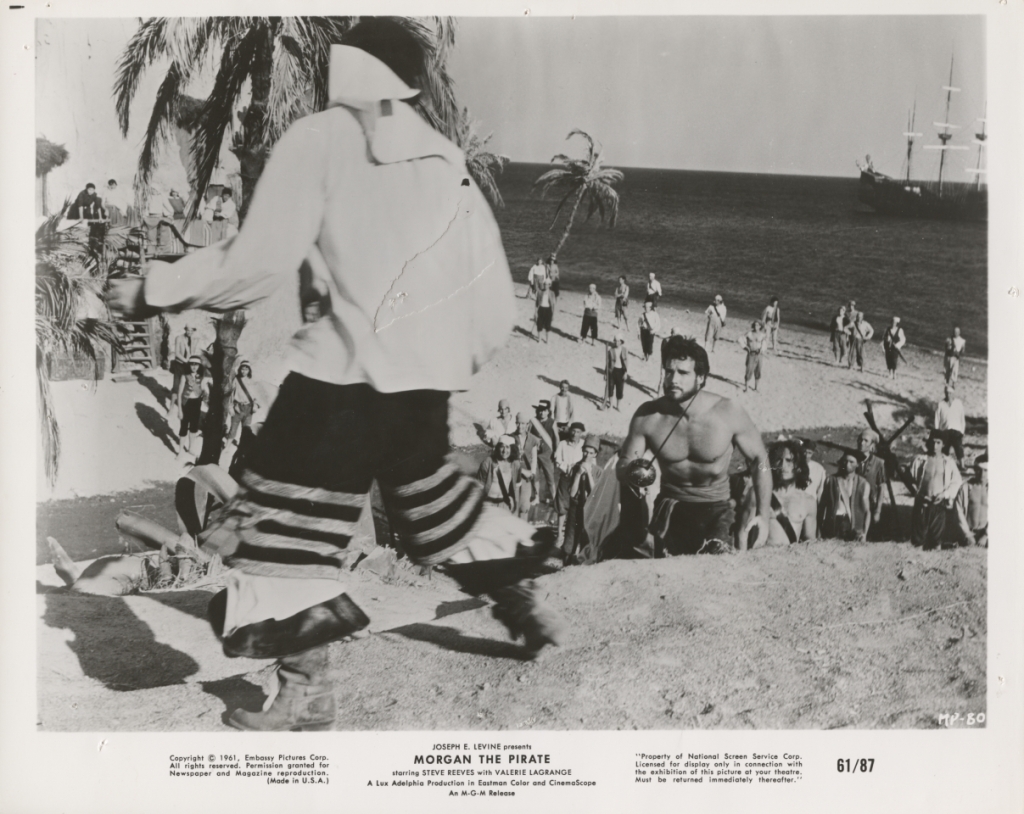
Starring pre-Schwarzenegger muscleman Steve Reeves as Henry Morgan, and a largely Italian cast dubbed into English (there are several “Spaghetti pirate” films in fact), the film is reasonably watchable if you’re a kid with nothing else to do on a Saturday afternoon. It has most of the usual tropes: escaped servant-slaves, sea fights, shore fights, forts, evil Spaniards, Conquistador armor, cup-hilt rapiers, “exotic” women, &c. The color is lavish and the settings beautifully tropical.
And the duel? The usual Hollywood hack-and-slash filmed on an Italian beach (Procida Island off Naples, I believe) standing in for Basse Terre, Tortuga, with backgrounds clearly influenced by the paintings of Howard Pyle: ships at anchor, pirates watching in rapt attention, and palm trees.
The swordfight, Henry Morgan versus François l’Olonnais, begins in a tavern (another film duel trope possibly due a blog post), fought in triplicate over a desire to join the buccaneers, a need for supplies, and the protection of women. At first, l’Olonnais intends it to be a fight with daggers, clearly inspired by the famous Howard Pyle painting. However, upon seeing Morgan’s muscles, he chooses swords–cup-hilt rapiers, of course, even if historically incorrect–instead. Still, Reeves’s bulk was a lot of target for a knife, and l’Olonnais might have used Butch Cassidy’s technique in addition. But no matter, swords it is because by now the duel on the beach with rapiers is a trope.
The duel continues outside in Captain Blood versus Levasseur (1935, of course) style up and down the shore and dunes. But it’s nowhere near as well-choreographed or filmed as the famous 1935 film fight, even if it has a moment or two.
Mostly, it seems a set piece intended primarily to showcase Reeves’s muscles. In fact, it wouldn’t be out of place in a beach party film of the era, at least as a fantasy dream scene, if a bit serious. What swordplay Reeve’s seems to know appears to have been picked up while rehearsing fights in some of the “Sword and Sandal” films he starred in. The duel ends when Reeve, clearly the underdog in swordplay, throws away his rapier, grapples with l’Olonnais, and disarms him.

The swordplay was choreographed by famous Italian fencing master Enzo Musumeci Greco, of the even more famous Aurelio and Agesilao Greco family of fencers dating to the mid-19th century. The two just-mentioned Greco brothers highly influenced the Italian form of epee fencing for both dueling and sport. Time to train students and student aptitude limit even the best of masters (not to mention being limited by a film director’s “vision”) so I certainly don’t blame Maestro Greco for the inauthentic nature of the swordplay in Morgan the Pirate.
Greco also worked with Errol Flynn in Crossed Swords, with much better swordplay, and Burt Lancaster in The Crimson Pirate, which really didn’t have much in the way of swordplay although the fencing-with-fish bit is enjoyable. The Greco Academy of Arms in Rome still exists and still trains world class fencers. It also has a nationally-recognized fencing museum, the Casa Museo Accademia d’Armi Musumeci Greco that I’ve been told is well worth visiting.
To my knowledge, the soundtrack by Franco Mannino, including the track accompanying the duel, has never been released.

Rage of the Buccaneers (Gordon, il Pirata Nero), 1961

Also released as Gordon, the Black Pirate; The Black Buccaneer; The Black Pirate; Gordon, the Knight of the Seas; Pirate Warrior; and possibly other names if I’m not mistaken, the film stars Ricardo Montalbán as former slave and now pirate captain Gordon, and Vincent Price as Romero, a wealthy slave trader. It’s another “Spaghetti pirate” movie with a largely Italian cast dubbed for UK and American release, and it missed an opportunity to have these two notable actors fight a duel on the beach! Instead, Gordon fights the eye-patched Captain Tortuga who prefers not to fight fair, throwing sand in his adversary’s eyes, and engaging in other disreputable acts–perhaps because judging distance is difficult when fencing with eye (true, in fact). Gordon fights him again at the finale.
The backdrop of the duel is Howard Pyle-inspired, but lacks the sense of romantic adventure. Andrea and Franco Fantasia (see The Queen of Pirates above) are credited as fencing masters. The duel is largely Hollywood hack-and-slash, with large movements, cuts and slashes especially, quite untypical of rapier play, although there are a couple of tighter movements. The swords are cup-hilts, as usual and similarly anachronistic, assuming these aren’t Spanish pirates, which they might be, their names notwithstanding. Montalbán makes a fair attempt at a Flynn-like smirking composure, but is no fencer, often making the bent-arm stabs or pokes common to those who’ve never been taught to fence.

The movie is trope-filled, as the genre seems to require. Gordon is out to stop Romero from trading slaves, something no Caribbean pirates ever did or would have, unless to steal the slaves to sell themselves. In fact, the film opens with the duel on the beach. Captain Tortuga, it turns out, has been slave trading, something in reality pirates did quite regularly, capturing them at sea and on shore and selling them afterward.
The movie was filmed on the shores of Tuscany, probably in the same locations Queen of the Pirates was. The films were both directed by Mario Costa.
The Son of Captain Blood, 1962
Sean Flynn on the right in a classical en garde in a sword-fighting scene early in the film. It’s not truly a duel, nor on the beach. Rather, it’s a bit of a semi-comical sword brawl on the sandy shore of, ostensibly, Kingston, Jamaica. The film was an Italian-Spanish-US production featuring the son of Errol Flynn playing the son of Captain Peter Blood. Like his father, the younger Flynn looked the part of a swordsman even if his actual ability was far more theatrical than practical. A later swordfight in the film has been described by a friend of mine, himself an accomplished swordsman and swordplay teacher and choreographer, as probably the worst display of film sword combat ever filmed. I’ve been unable to discover who the film’s fight arranger was. Sean Flynn went to Vietnam in 1968 as a war correspondent. He, along with correspondent Dana Stone, were captured by Viet Cong guerillas in Cambodia in 1970 and were never heard from again. They are generally believed to have been murdered either by the Viet Cong or the Khmer Rouge.
Swashbuckler, 1976
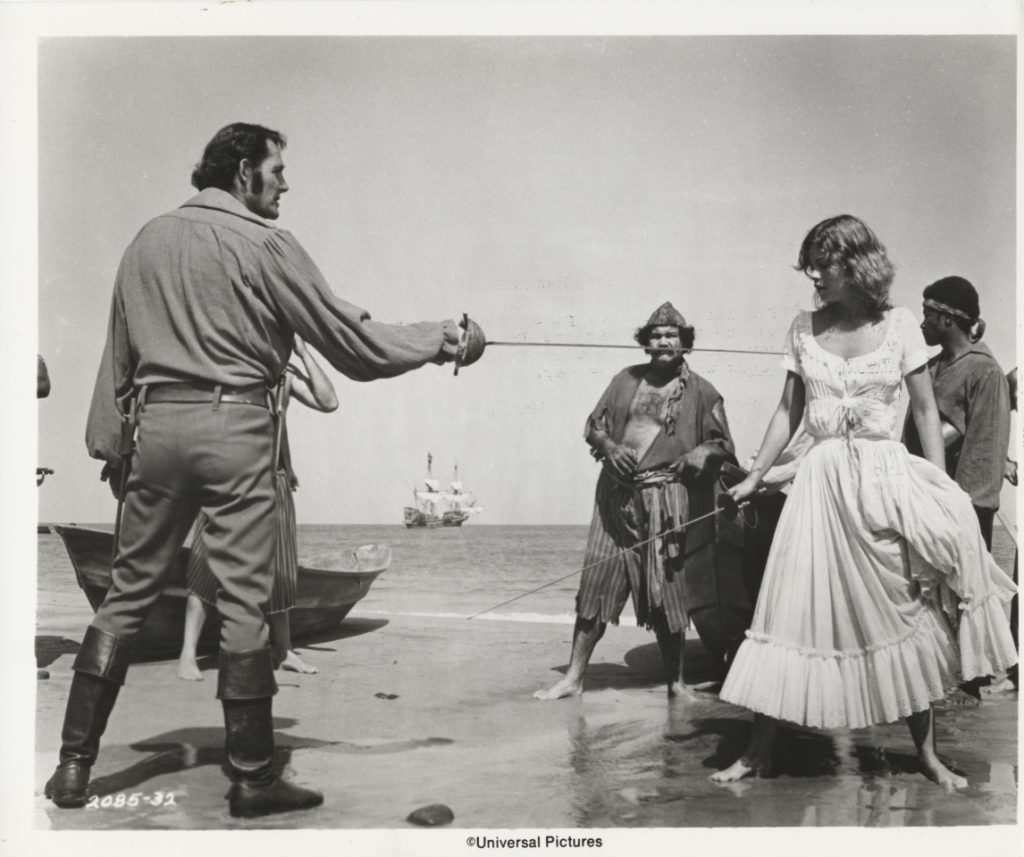
Starring Robert Shaw as Captain Ned Lynch, more or less reprising his former role as Dan Tempest in the television series The Buccaneers, and Genevieve Bujold as gentlewoman Jane Barnet, the film’s duel on the beach is as much or more titillation than plot development. One need only watch it or view the images below to recognize this immediately. Arguably, it does put the duelists’ personalities on display, but this we already have from other scenes. Still, who doesn’t enjoy watching swordplay on a tropical beach? And it is an important trope for the genre! The Swashbuckler duel was filmed on a beach near Puerta Vallarta, Mexico, to represent one somewhere on Jamaica.

The film indulges in numerous pirate tropes caricatures, including the myth of siding with a rebellious populace against an unjust government, and is filled with as many anachronisms as a Disney pirate film, ranging from “pirate boots” to the Blarney Cock (the replica Golden Hinde I once visited in San Diego), a tall ship almost a century out of place–but at least it was a real ship and not a studio set! Even so, the film does (as my friend Antón Viejo Alonso reminded me) showcase Black actors–James Earl Jones as Nick Debrett and Jeffrey Holder as Cudjo–in prominent positions, including the role of Jones as what is essentially the ship’s quartermaster, or second-in-command, aboard pirate ships of the era. No other pirate films have done this so well, not even Black Sails. (The latter series did, however, do an admirable job showcasing African slaves in rebellion and allied with pirates, even if the latter is a myth. Full disclosure: I was the historical consultant for the show.)
Accepting the film for what it is–a 1970s update on The Black Pirate and The Crimson Pirate (in the UK it was released as The Scarlet Buccaneer) and a bit of an improvement on the old B-movies of the 1950s–it’s entirely enjoyable, or mostly so. All three leading actors–Shaw, Bujold, and Jones–take their roles seriously in spite of the occasional campiness and strange diversions (seriously, bath torture fetishism?) of the script.

The duel is fought with historically inaccurate swords as is common in Hollywood: Ned Lynch is armed with a cup-hilt rapier (with the classic Hollywood-issue modern epee blade instead of rapier blade), which commonly was used only by Iberians and some Italians at the time (1718) and almost out of style, and Jane Barnet with, for whatever imponderable, silly reason, a late 19th to early 20th century Radaelli fencing saber. The swordplay was choreographed with input from the film’s fencing consultant Tom Greene, a fencing student of Ralph Faulkner and a Hollywood writer and producer.
There are two other notable, if inauthentic, fencing scenes. In the first, the evil governor (played by Peter Boyle) and preening fetishist fences and defeats three Black fencing masters, killing one of them after he wounds the governor. If these Black fencers were of the standard of some of those on Barbados, I doubt the governor would have survived the encounters.
As Richard Ligon wrote in the 17th century, “I have seen some of these Portugal Negroes, at Collonel James Draxes, play at Rapier and Dagger very skilfully, with their Stookados, their Imbrocados, and their Passes: And at single Rapier too, after the manner of Charanza, with such comeliness…they were skilful too, which I perceived by their binding with their points, and nimble and subtle avoidings with their bodies. For, in this Science, I had been so well vers’d in my youth, as I was now able to be a competent judge.”
The final fencing scene is of the obligatory duel between Shaw and the governor.
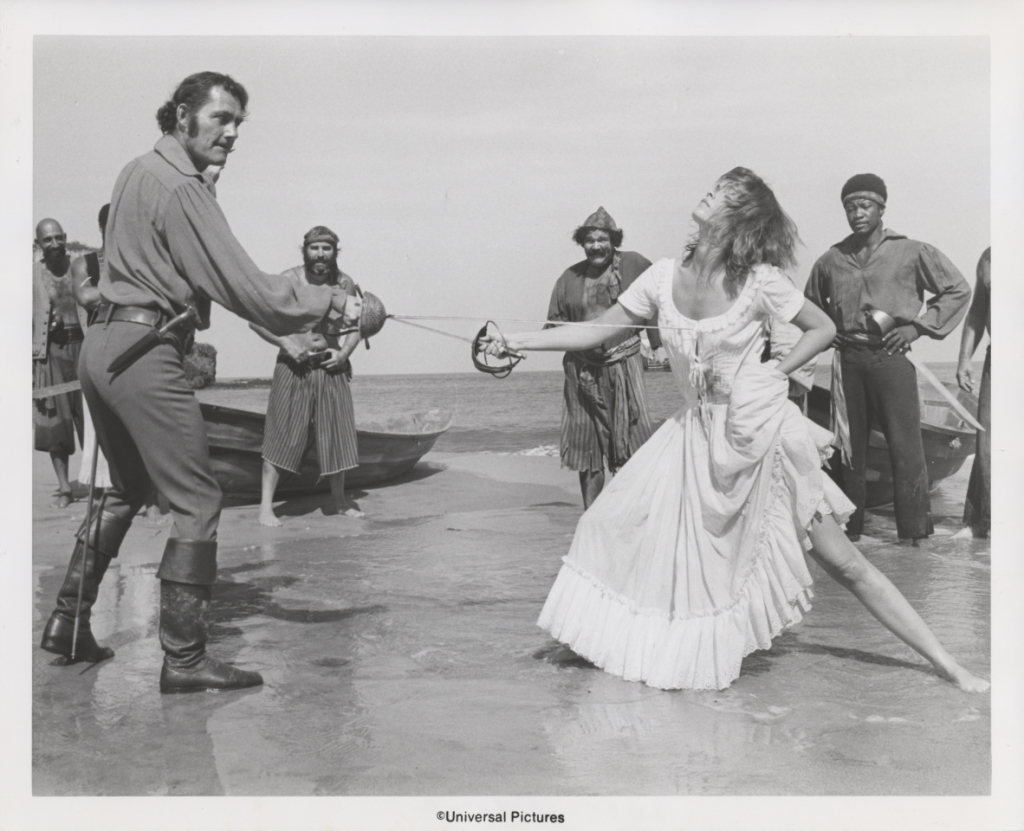
Although as Hollywood goes the fencing in the duel isn’t entirely awful (it’s of the common standard, in other words, with lots of moulinets and the tierce-seconde, tierce-seconde action that’s simple to do and looks good on screen), and although there is little realism, Shaw does an excellent job giving a patronizing, chauvinistic air, and Bujold in return the rage at being outclassed and patronized. Both give spirited performances sword-in-hand. In fact, their relationship as revealed during their swordplay is more believable than during their romantic encounters although doubtless some readers will point out that adversarial engagements often stimulate romance. Or sometimes just lust.
The expanded original motion picture soundtrack (Quartet Records, 2 CDs, 2020), composed and conducted by John Addison, includes the duel track, “Fencing Lesson” (a mere 1:28 long).


Muppet Treasure Island 1996


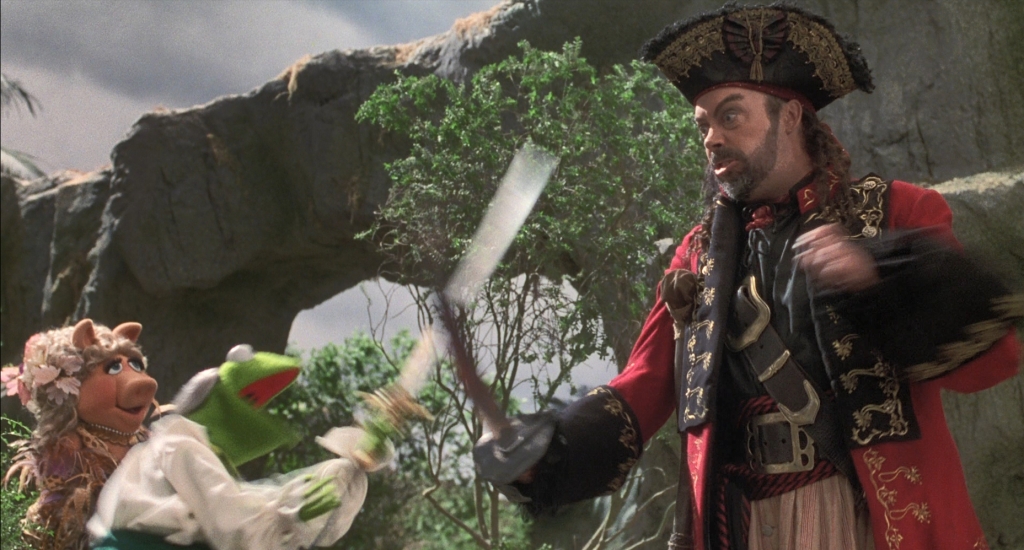
Kermit showed off his best Hollywood swordplay, aerial antics included, engaged against Captain Flint as played by Tim Curry. If not strictly a duel, rather a rencontre on the beach during an attack on pirates, the swordplay is an enjoyable homage to film swashbucklers.
Pirates! 1986


By no means is the depicted duel a conventional one. Rather, it is deadly game (in this comedy) forced upon Spanish prisoners by their pirate captors, Captain Thomas Bartholomew Red, played by Walter Matthau, in particular. Two Spanish officers are forced to fight to the death on the shoulders of two other Spaniards, one of them a priest: “Dead Man’s Nag” is the name of the game according to Captain Red. The victor will be spared.
The scene is almost certainly inspired by an illustration in The Pirates Own Book by Charles Elms (1837) in which pirates ride on the shoulders of priests as a means of abusing them. The book panders to pirate tropes: its accuracy, however, leaves much to be desired. The swordplay in the “mounted” duel is actually not bad, even if as much cutting as thrusting. The fencing master is uncredited.
Pirates of the Caribbean: Dead Man’s Chest, 2007

I hesitate to include this film because the scene is not a duel but a comical affray with swords on the beach, and soon gets even sillier. I won’t even mention but in passing the duel on the waterwheel scene. Yes, the scene is amusingly choreographed, and yes, it’s a fantasy film with pirates in it, not a pirate movie per se. Even so, the swordplay, such as there is, is the least memorable imagery of the entire scene. In fact, the comic reactions of Elizabeth Swann (played as everyone knows by Keira Knightley) are the most entertaining aspect of this romp with swords and treasure chest. Looking at the film credits, I’m unsure who choreographed the swordplay. As far as I know, the scene was filmed on St. Vincent in the Caribbean. I’ll say no more but to censure the screenwriter and director for not letting Miss Swann in her pirate garb get in on the action. It would have been quite something to have watched her swordfight-and-swashbuckle successfully against all three with her refined panache. Her swordplay on the beach is unfortunately limited to cutlass-play against several of living-dead crewmen of the Flying Dutchman.
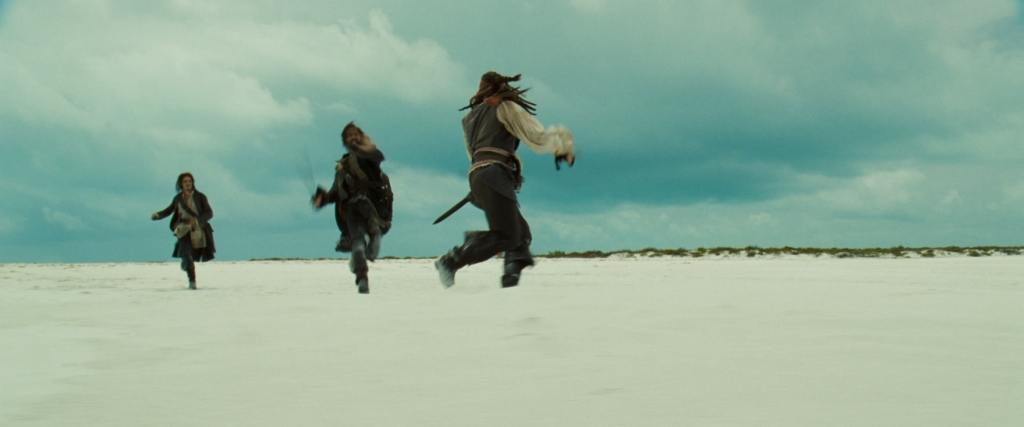
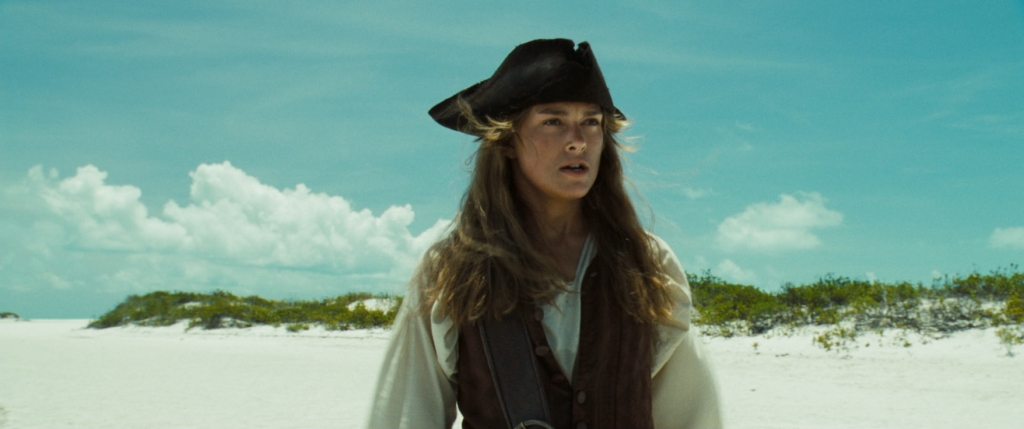

Final Remarks…
I skipped a few films that qualify, or might. The Princess Bride’s duel above the beach probably deserves its own post. There is a Russian version of Captain Blood, but the quality of available video is terrible and, if I recall correctly, the duel on the beach looks rather bland. I’ve also skipped a number of generic pirate sword battles on the beach. Well, with one mystery exception below of an affray or beach brawl, not a duel. 🙂
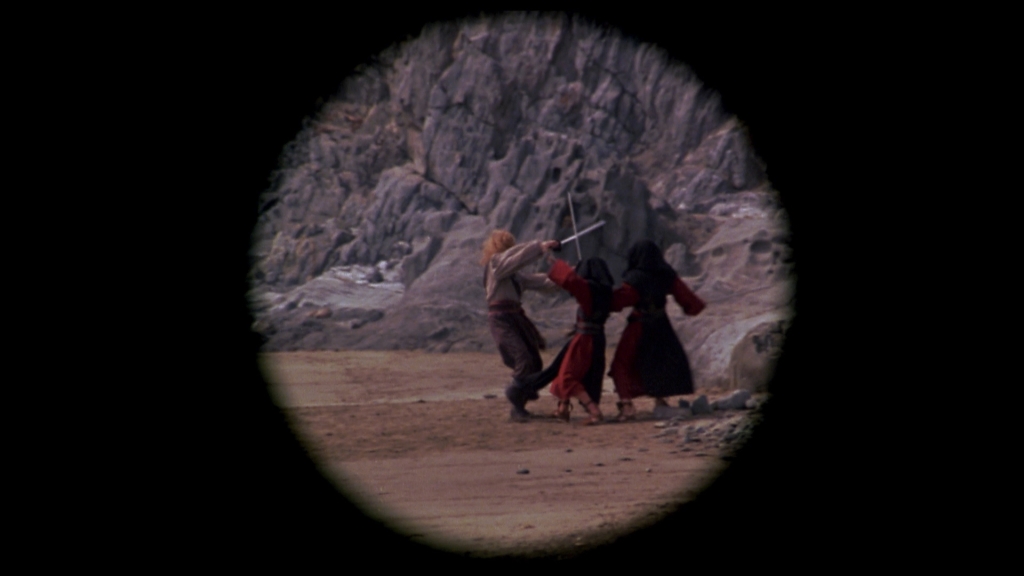
Next up, this series at least, a post devoted entirely and in depth to the famous duel in Captain Blood starring Errol Flynn and Basil Rathbone!
*You can find portraits painted by Elias Katsaros on his Facebook page.
Copyright Benerson Little 2021. First posted 24 August 2021. Last updated 23 April 2023.
The Fanciful, Mythical “Calico Jack Rackham” Pirate Flag
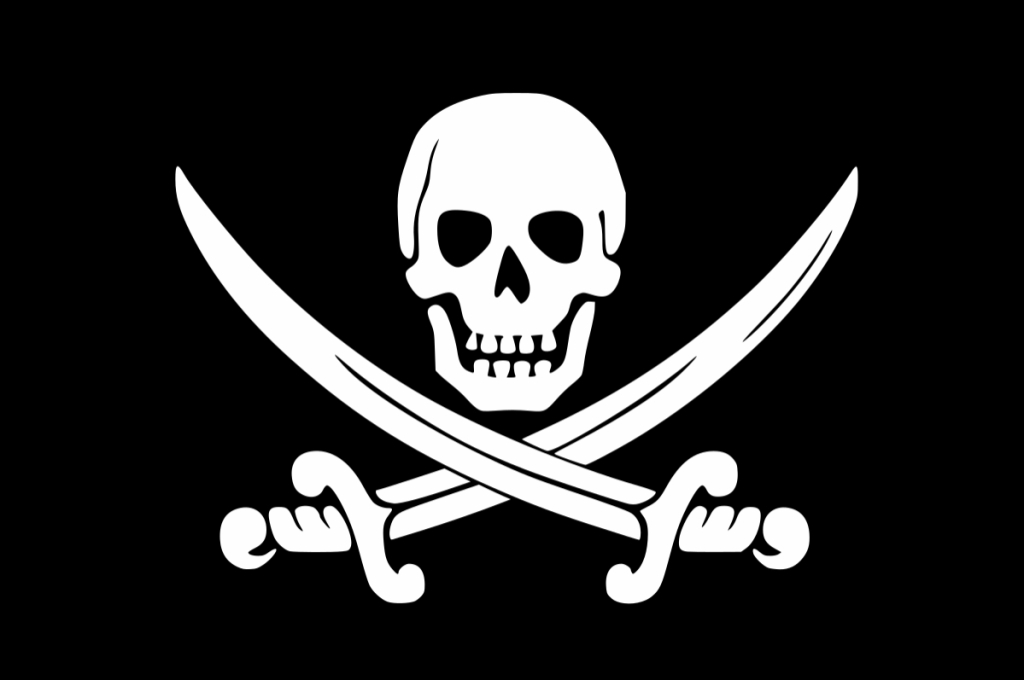
This is not a post I’d ever intended to write, believing–clearly foolishly–that publishing a book on pirate myths would once and for all send the the myth of Rackham’s pretended “skull and crossed swords” flag to perdition where it belongs. Or mostly so. How naive! It’s not just hope that springs eternal–so does myth flying in the face of contrary fact.
Although it’s well-documented that the “Rackham” flag–quite probably the most-depicted pirate flag in film–is a fanciful 20th century invention, Wikipedia via trolls and the ignorant continues to spew nonsense regarding both Rackham and this flag, the latest of which I learned, via a historical forum on Facebook, is that the two crossed swords might represent Anne Bonny & Mary Read. (For the record, all either of them did with a sword–quite possibly a machete, in fact, based on a witness statement–as pirates as far as we know is wave them at frightened merchant seamen who had already surrendered.) I’ll get to the ridiculous notion that the swords represent the women pirates in a moment.
Trying to correct Wikipedia is like playing Whack-a-Mole; it’s never-ending. Wikipedia is a prime resource for the lazy and the gullible, and trolls and others attempting to distort facts are well-aware of this. It’s one of the best places today to replace fact with nonsense, or worse. Don’t get me wrong: there are excellent articles on Wikipedia, including some on pirates and piracy. But to the uninitiated it can be hard to tell the difference between these and those that are little more than nonsense or outright propaganda. And even the best ones are often soon rewritten–and their important facts often disappear with the revision.

A few facts about Rackham & Co. before I describe the 20th century origin of the flag:
There is no record of any pirate flag John “Calico Jack” Rackham ever flew, if he even flew one. The only record of any flag he flew is of a white one, probably as a French flag for deception. This doesn’t mean he never flew a black flag, but if he did we have no idea what it looked like. None of the witnesses at his trial mention a black flag.
Again, as noted above, the black flag attributed to him, with skull (“death’s head”) and crossed cutlasses (or hangers or falchions) is a 20th century invention. More on this in a moment.
Rackham was a smalltime pirate who whose piracies prior to late 1720, if any (although likely; “Charles Johnson” claims he was once Charles Vane’s quartermaster), cannot be corroborated, and he would doubtless be entirely forgotten today were it not for two women who briefly sailed with him, Anne Bonny & Mary Read, and a publisher/editor, apparently Nathaniel Mist, who greatly “sexed up” their petty sea thieving. For most of his time in command, Rackham’s crew numbered only ten, including the two women and himself; he had added nine more drunk volunteers earlier the same day he was captured at sea. His piratical cruise lasted less than two months. It’s entirely likely that even his nickname, “Calico Jack,” is an invention: the moniker does not show up anywhere in the historical record except in Johnson’s book (and he invented many details in his book), unlike, for example, that of Edward Teach/Thache aka Blackbeard, which does show up regularly in the historical record.
At the time Rackham sailed with these women in his crew, he commanded a tiny 12-ton sloop named William he stole at anchor at New Providence (Johnson reimagined it as a swift 40 ton sloop), and was robbing small largely defenseless fishing and trading vessels in the waters off New Providence, Hispaniola, and Jamaica: seven small fishing boats, three merchant trading sloops, one small merchant schooner, and one small canoe. Most if not all of them were local “Mom & Pop” coastal seafarers, in other words. Hardly epic escapades. None of the vessels Rackham captured put up a fight.
Bonny & Read wore women’s clothing aboard, and dressed as men only the very few times they robbed small merchant traders and fishermen. In fact, there is only one confirmed attack in which they dressed as men, although it is probable they also did when capturing other vessels.
There was only one battle in which the two women pirates might actually have fought side by side–the battle in which they and Rackham were captured–and it was over in a moment, literally. There wasn’t much of a fight other than a single “great gun”–apparently in this case a swivel gun, not a carriage-mounted gun–and possibly a pistol fired by the pirates, and neither did any damage. There is no record of any other resistance by the two women pirates or any of the men. The pirates surrendered immediately after Jonathan Barnet’s sloop fired a broadside and volley of small arms. No pirates are recorded as having been wounded or killed in the brief action.
Further, most of what “Charles Johnson” wrote about Bonny & Read cannot be corroborated in spite of extensive research by numerous scholars and other researchers. Although much of what “Johnson” wrote about pirates in general is clearly factual and has been corroborated (pistols hanging from silk slings is an example of what might be invention proved to be a fact by the Whydah wreck, for example), he also embellished–lied–often, almost certainly to improve sales potential. His depiction of Bonny and Read as the only pirates willing to fight while the rest were drunk below deck, and Bonny’s scornful upbraiding of Rackham as having failed to fight like a man, were surely invented or grossly exaggerated by the author.

As for the modern origin of the flag, I’ll quote from the draft manuscript of The Golden Age of Piracy: The Truth Behind Pirate Myths (I’m too lazy to pull up the published final):
“Many…pirate flags depicted today, such as those purportedly of Stede Bonnet, Calico Jack Rackam, and Blackbeard, are modern inventions without historical basis. The pirate flag we know incorrectly as Calico Jack’s, with crossed cutlasses under a skull, may well have been inspired by the flag used in the 1935 film version of Captain Blood, that of a pair of cutlass-holding arms crossed beneath a skull. And this film flag may have been inspired by the early flag of Bartholomew Roberts, that of a death’s head and an arm holding a cutlass, or by the Dutch red battle ensign with an arm holding a cutlass, or by the seventeenth century flag of Algiers (a notorious have of Barbary corsairs), or even by a Barbary corsair flag of no quarter.
“We simply do not know what the pirate flags of these three pirate captains really looked like…except that Blackbeard’s was a black flag with a “death’s head,” and not the commonly attributed black flag with horned skeleton [apparently a very early 20th century invention]. Similarly, the purported pirate flags of Christopher Moody and John Quelch are misattributions: Moody’s is actually the Barbary corsair flag of no quarter described later in this chapter, and Quelch never flew a pirate flag…
“The origin of our modern popular but fanciful renditions is a series of several books whose illustrations were passed from one to the next, with few or any changes. The earliest publication of this series discovered to date—and probably the origin [except for the fanciful Blackbeard horned devil flag which was published previously in The Mariner’s Mirror]—is Basil Lubbock’s The Blackwall Frigates, published in 1922. The book includes a plate of eight pirate flags (even though the Blackwall frigates only came into being a century after the Golden Age of Piracy expired, but pirate flags sell books), three of which are misattributions, although otherwise mostly accurate, and one is a fanciful flag taken from an illustration in Charles Johnson’s pirate chronicle. [Rackham’s purported flag is not among them.]

“Most of these flags, with names now added, were reproduced in Charles Grey’s Pirates of the Eastern Seas. Patrick Pringle’s Jolly Roger: The Story of the Great Age of Piracy, published two decades later, includes nine pirate flags, all reproduced exactly from Grey’s book. In 1959, Hans Leip’s Bordbuch des Satans (Log of the Satans) includes some very similar flags clearly inspired by Lubbock, Grey, and Pringle, although two have been miscaptioned. Leip also adds three new flags, all imaginary: those of Calico Jack Rackam, Stede Bonnet, and Henry Every [“Long Ben”]. [Every’s flag includes a skull with a bandana and earring, a clear giveaway that it’s an invention.]

“Most of Leip’s pirate flags were reproduced exactly in 1961 in Pirates of the Spanish Main, part of the American Heritage Junior Library, with credit to Leip’s book. Pirates of the Spanish Main became a classic source of historical pirate lore—and mythical pirate flags—to literally thousands of young readers who imagined themselves pirates, not to mention to publishers of subsequent books on piracy. Similarly identified flags, some accurate, some, like those in the other books, not, were published in 1978 in Pirates, a title in the popular Time-Life “The Seafarers” series [including the “Calico Jack” flag with crossed swords]. It is no surprise that inaccurate images of pirate flags would appear in pirate books: for many publishers, the main purpose of images in a book is to get readers to buy it. The image of the “Jolly Roger,” whether accurate or not, is the perfect lure.”



The two most similar written descriptions of historical black pirate flags circa 1715 to 1730 to Rackam’s purported flag are “this flag was a black cloth in the middle of which was depicted a cadaver [skeleton] and scattered bones and crossed sabers” (I’ve translated this from French), and “The Ship hoisted a Black Flagg at the Main-Top-Mast-Head, with Deaths Head and a Cutlass in it…” Neither were hoisted by Rackham. The former is the only reference I’ve found to crossed swords among the many eyewitness descriptions of pirate flags.
If there were an early 18th century origin to the Rackham flag, we can blame Daniel Defoe’s Captain Singleton, a pirate novel published in 1720: Captain Bob [Singleton] flew “a black flag, with two cross daggers in it.” We cannot be certain this is the ultimate origin, for the idea of crossed swords is quite common throughout history.
Soon after I posted this blog, my friend Antón Viejo Alonso mentioned to me that conquistador, traitor, sociopath, and murderer Lope de Aguirre is said to have had three identical flags made in 1561, each with a black field with red crossed swords, the colors representing the blood he shed and the “lamentations and mourning” he caused. Whether this may have influenced Leip’s illustrator is unknown. Many flag designs appear to be parallel developments independent of previous or current similar flags, and not descendant, although clearly many also fall into the latter category. Black flags, and mortuary symbols on flags, have been around since antiquity, and have been used on land as well as sea. Aguirre’s flags were described by Friar Pedro Simón (1574 – circa 1628). The English translation of his work is entitled The Expedition of Pedro de Ursúa & Lope de Aguirre in Search of El Dorado and Omagua in 1560-1 (London: Hakluyt Society, 1861). A modern reprint is also available.
The modern “Calico Jack” flag of skull and crossed swords is a popular one in pirate films and among pirate fans. I myself own versions in both black and red, but I don’t represent them to be authentic. It’s an easy flag to imagine, substituting crossbones for crossed swords. I can even imagine myself creating it today or three centuries ago, or even today, given my interest in piracy and swordplay.

The “Calico Jack” flag has been used in several films, and a possible, even likely inspiration for its use in pirate movies, including the Disney franchise, is the flag flown aboard the pirate ship Wicked Wench in the Pirates of the Caribbean attraction at the Disneyland theme park. In fact, the design is also used early on in the ride in the form of a talking skull, with crossed cutlasses beneath it, providing safety and other information to visitors.
Very likely, the ride’s designers selected the design from the book The Pirates of the Spanish Main (1961) discussed above, although it is possible the Captain Blood film flag was also part of the inspiration. In fact, the entire ship-attacking-fort scene in the attraction was copied from the similar scene in the film. Notably, the attacking Spanish ship in the novel the film was based upon is described as red-sided, just as is the Wicked Wench in the attraction. (Carrying the hypothesis further, is the name Wicked Wench a bit of a joke on the Arabella–the name of Captain Blood’s ship–and the very proper English lady whose name it was? This would be in keeping with the piratical sense of humor of the attraction’s designers.)
All of this suggests that the Wicked Wench was the first fictional, and for that matter, non-fictional as well, ship to fly the “Calico Jack” Jolly Roger–although arguably the Arabella of the film Captain Blood did so in its original form. It’s entirely possible therefore that all subsequent film pirate ships flying the flag may have been inspired in part by the flag flown by the Wicked Wench, which was in turn inspired by the book The Pirates of the Spanish Main, and ultimately by the film.
(Historical note: buccaneer ships, one of which the Wicked Wench was originally depicted as, rather than as the pirate ship which would become the Black Pearl, did not fly black flags with skull and bones–only those of later pirates did.)

In Swashbuckler (1976), a version of the flag with ensanguined cutlasses is shown flying at the masthead of the Blarney Cock in the film, and flying in a odd arrangement at its stern in the movie poster and other marketing materials. The film stars Robert Shaw, Genevieve Bujold, James Earl Jones, Peter Boyle, Beau Bridges, Geoffrey Holder, Avery Schreiber, and, in an early role, Angelica Huston:
Likewise in 1976, the Black Corsair (Il Corsaro Nero) flew the black with skull and crossed swords. The film, an Italian B-movie pirate escapade, did at least show some Native American canoes as they were used by both pirates and Native Americans, was filmed at Cartagena de Indias, and showcased a bit of nice classical Italian swordplay.
Captain Thomas Bartholomew Red (Walter Matthau) flew a version in Pirates! (1986) aboard the captured Spanish galleon Neptune:
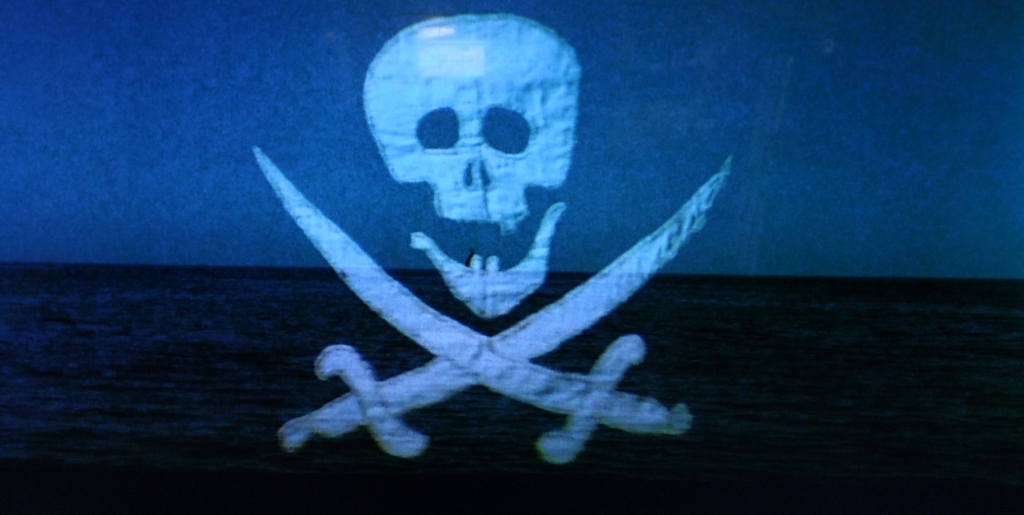

Morgan Adams flew it aboard the Morning Star in Cutthroat Island (1995); “Hoist the colors!” she orders at the beginning of the battle with Dog Brown’s Reaper. The flag flown from the Morning Star was slightly modified from the original 20th century illustration, although the popular “original” was used on posters and other promotional materials. The film, although it bombed at the box office (odd that a blockbuster is a film that makes lots of money, yet a blockbuster is also a very large bomb…), has a great soundtrack, plenty of comic book pirate action, and Geena Davis did a better job portraying a pirate captain than many men have in films.
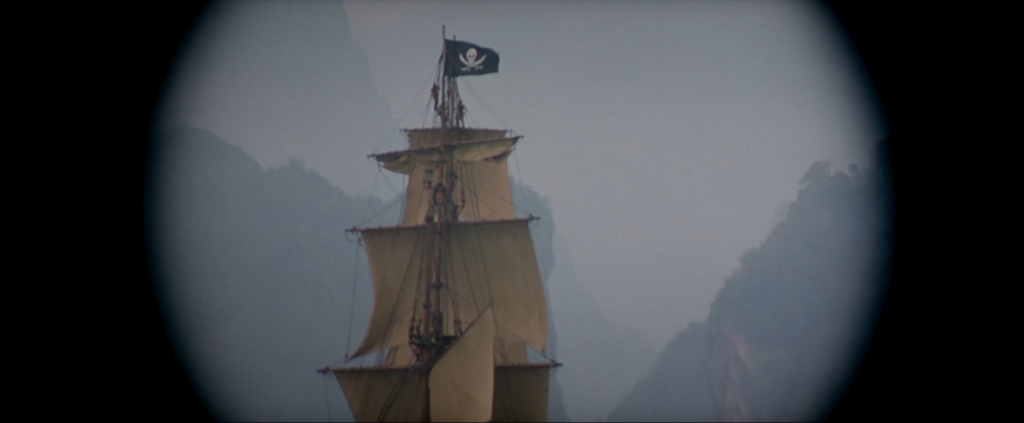


The black banner with skull and crossed swords, though behind the skull rather than below it, is seen in the video game The Curse of Monkey Island (LucasArts, 1997) in the Smuggler’s Cave on Skull Island, as a table cloth where King Andre and his idiot henchman Cruff sit. An homage to Cutthroat Island, perhaps? There is treasure in a cave, after all.
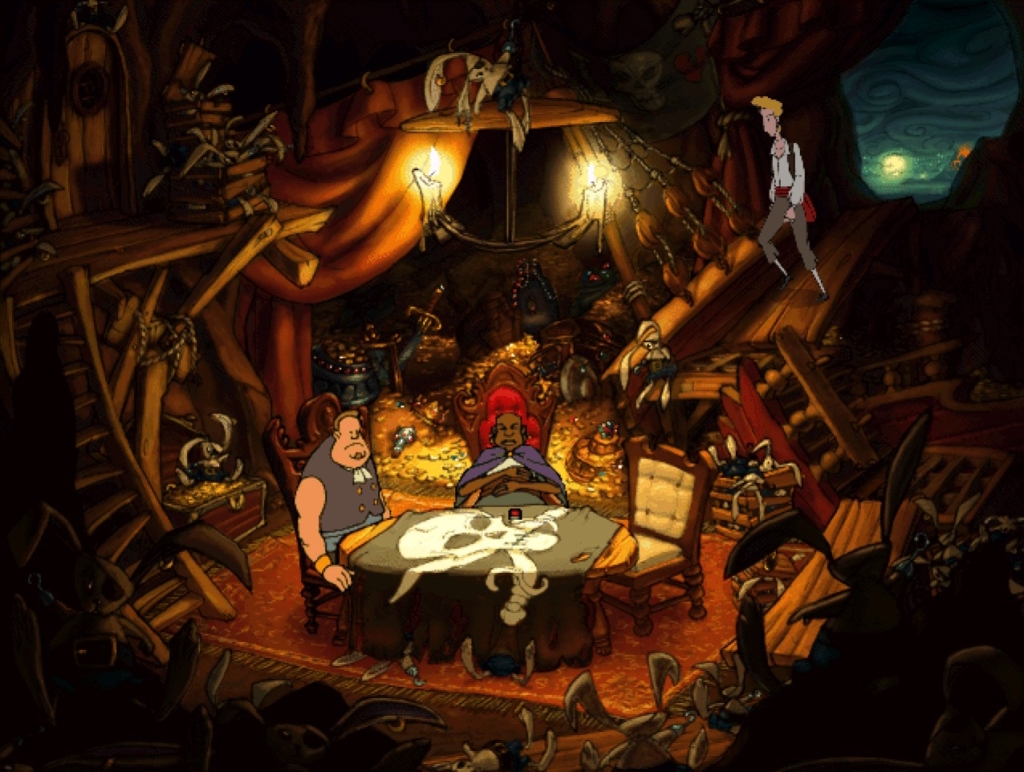
The iconic flag was also used in Peter Pan (2003) as both a traditional Jolly Roger and as a sail decoration, notwithstanding that sail decoration, with the exception of an occasional Spanish fishing vessel and similar, had for more than half a century been abandoned by the late 17th and early 18th centuries which provided the piratical source material for Mr. Barrie and Peter Pan (or Peter and Wendy if you prefer).

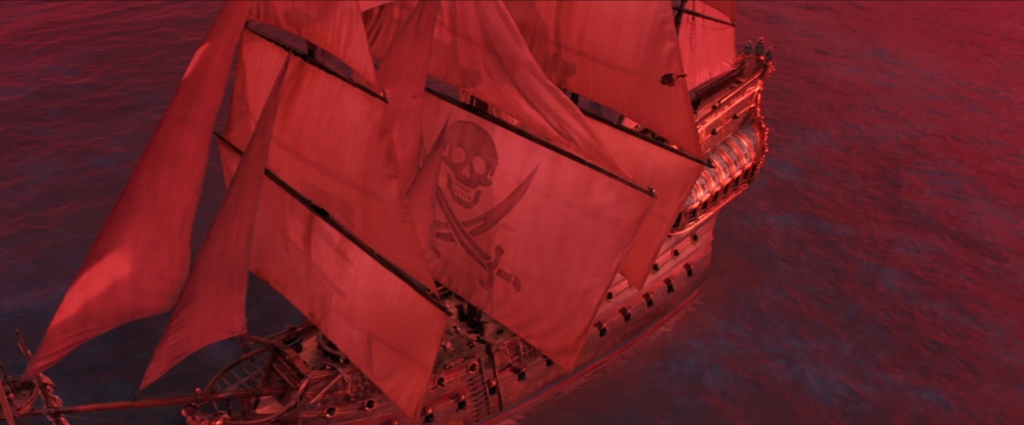
It was flown aboard the Black Pearl in Pirates of the Caribbean: The Curse of the Black Pearl (2003) at the beginning of the film when Elizabeth Swann imagines she sees the ship in the distance as she holds up a cursed Aztec coin, probably because this was the flag originally flown aboard the Wicked Wench, which was via a rather extreme revisionism converted from a buccaneer ship raiding the Spanish Main to the former name of the Black Pearl, associated with some East India Company nonsense (a company that never traded to the Caribbean).
It was flown again aboard the Black Pearl it in Pirates of the Caribbean: At World’s End (2007) during the “Hoist the colors!” scene–again, a badass female pirate gives the order–and in the engagement following:



The “Calico Jack” skull and crossed swords also appears in Pirates of the Caribbean: Dead Men Tell No Tales (2017) on the main-topsail of the Queen Anne’s Revenge, now commanded by Capt. Barbossa. The sails are of wine red or burgundy velvet with yellow-gold tassels, probably an homage to or inspired by the reputed sails of some the wealthiest Cilician pirates in antiquity. Some even captured Julius Caesar, who, after ransoming himself, had the pirates captured and put to death.
That said, author George MacDonald Fraser in his comic novel The Pyrates (1984 US edition) described the sails of the Grenouille Frénétique (the Frantic Frog), commanded by Happy Dan Pew, as having “velvet sails…fringed with silk tassels in frightful taste…” In fact, Barbossa’s “bon vivant and gourmet” image in Dead Men Tell No Tales might well have been inspired by Fraser’s description of Happy Dan Pew.
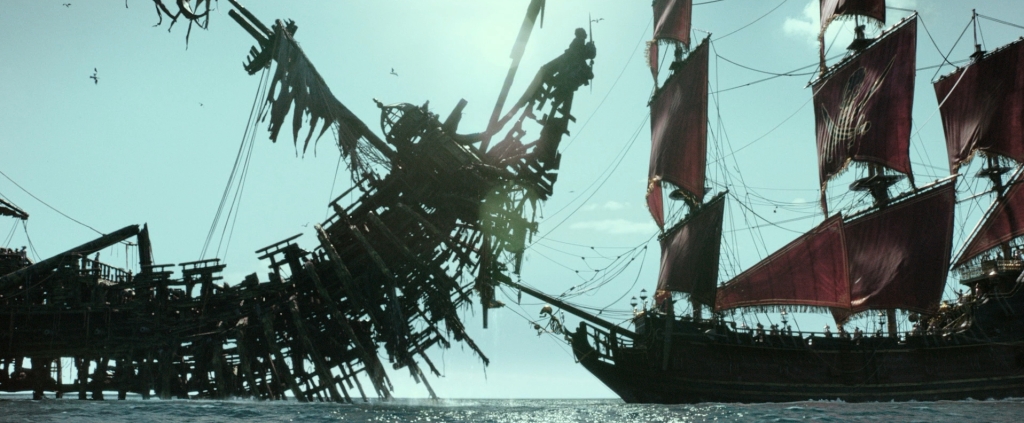
The “Calico Jack” flag is depicted also in the Starz Black Sails series at the very end of the final season. I was the historical consultant for all four seasons, and for reasons of both history and legal liability I traced the origin of the purported Calico Jack flag for the producers. The writers wanted to use the flag because it was already popularly attributed to Rackham, the set designers wanted something that looked authentic, and the lawyers wanted to be sure there was no copyright or trademark infringement.
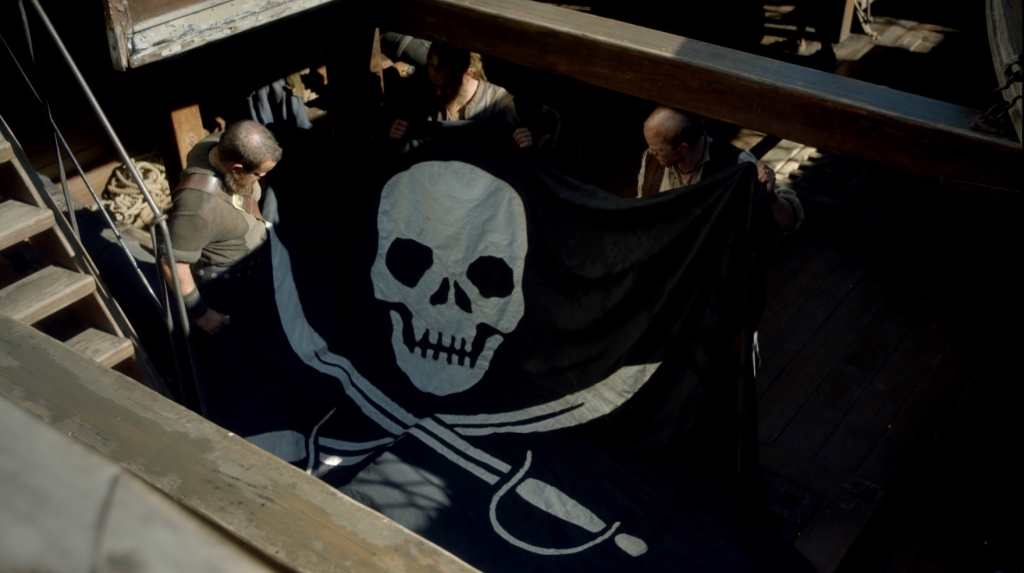

A version was used in Lego Scooby-Doo! Blowout Beach Bash (Warner Bros., 2017). Scooby-Doo has always been fond of pirates, or at least ghost pirates and fake pirates…

Such an icon is the flag that it shows up in modified but immediately recognizable form, here in the BBC’s Doctor Who episode, “Legend of the Sea Devils” (2022):

Navy SEALs sometimes wear a “Calico Jack” flag patch on their field uniforms. Often the flag’s skull has an eye patch, a variant based most probably on choice of vendor. If my memory is correct–for the record, I’m a former Navy SEAL–its use began in the very late 80s when “real world” VBSS operations (board and search operations) were put to use. I might be mistaken, however. Pirate flag patches weren’t yet a fad in the Teams I served in (ST-3, SDVT-1) in the 80s. Certainly the “Calico Jack” patch remains in use today by Navy SEALs. Luminox, maker of a watch used by Navy SEALs, even has, or had, a special limited edition (375 watches only, I think) Navy SEAL watch with a Rackam skull and crossed swords on its face, although notably not the most common design of the flag, at least on one version. (See below, I couldn’t get captions to work on the tiled images.) Other military special operations units have been spotted wearing the flag patch, or one similar, too.

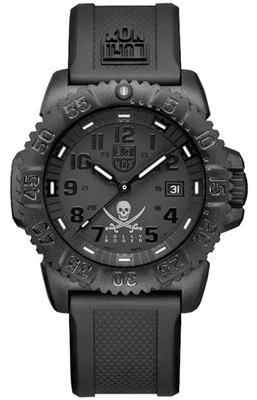
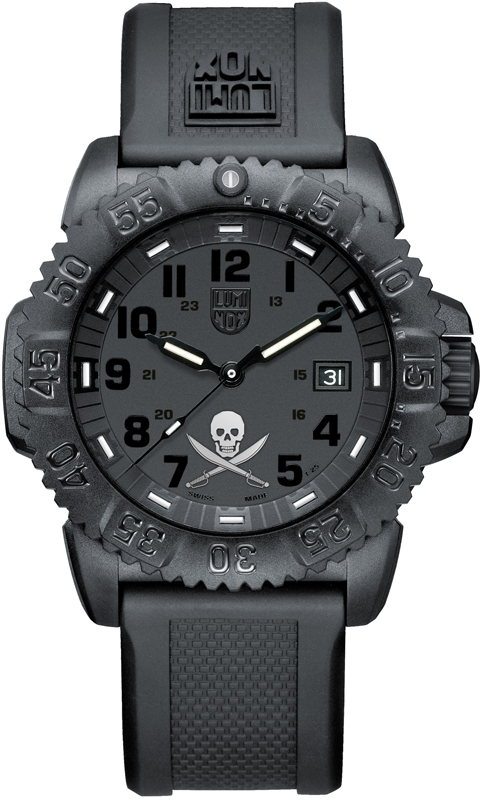
[Self-Promotion Alert!] The “Calico Jack” flag is also on the cover of The Golden Age of Piracy. Again for the record, the publisher chose the cover. I had no real input, although I’ve no problem with it. It certainly stands out and gets attention, and that’s what dust jackets are supposed to do. It slipped my mind when I first drafted this blog post that the Polish edition also uses the “Calico Jack” flag. (Sorry, Maciej Studencki, for missing this the first time around!)
If you’re looking for more details on pirate flags–accurate details, that is–you can read the book above or Ed Fox’s Jolly Rogers, the True History of Pirate Flags (author given as E. T. Fox). Or better yet, both. 🙂
If you’re looking to fly the flag, try eBay, lots of vendors carry it. It’s also available in red, and in design variations as well. There’s also a “weathered” version in red, but I’ve only seen it available so far at one ebay vendor and a few non-eBay vendors. Plus there are patches, stickers, T-shirts, rings, cufflinks, and more. If you want to fly the flag regularly, plan to pay a little more for sturdier nylon and construction; in particular, look for fabric that’s fade-resistant (all flags fade eventually). If you want to make your own authentically, you’ll need wool bunting or, in a pinch, silk.
When buying, remember, black means “good quarter if you surrender now,” which in practice means “surrender now and we might not murder, torture, or abuse you much,” and red means “no quarter, we’re going to kill you all.” Perhaps the best description of the meaning of the red flag of no quarter comes not from my books, or any other book on piracy, but from Les Aventures de Tintin: Le Secret de la Licorne (Casterman, 1946; reprints in many languages; in English, The Secret of the Unicorn). Enjoy! Don’t read French? “Tonnerre de tonnerre de Brest!” It’s never too late to start learning another language! Or, buy the English version. It’s a fun read, and there’s a sequel too.
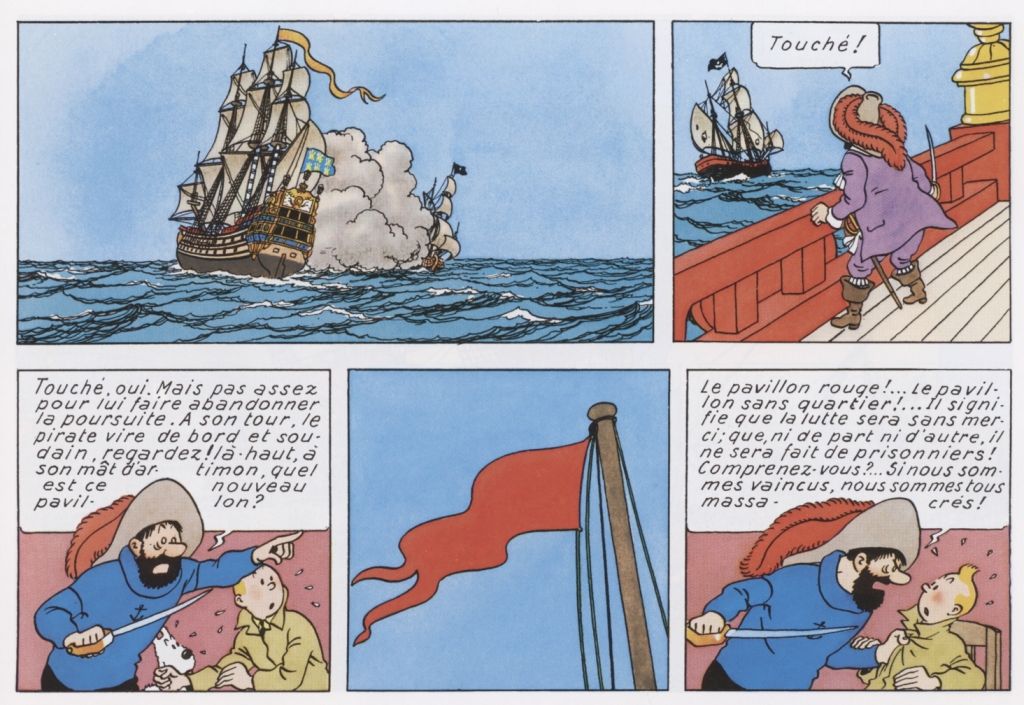
Copyright Benerson Little 2021-2024. First posted June 18, 2021. Last updated March 22, 2024.

